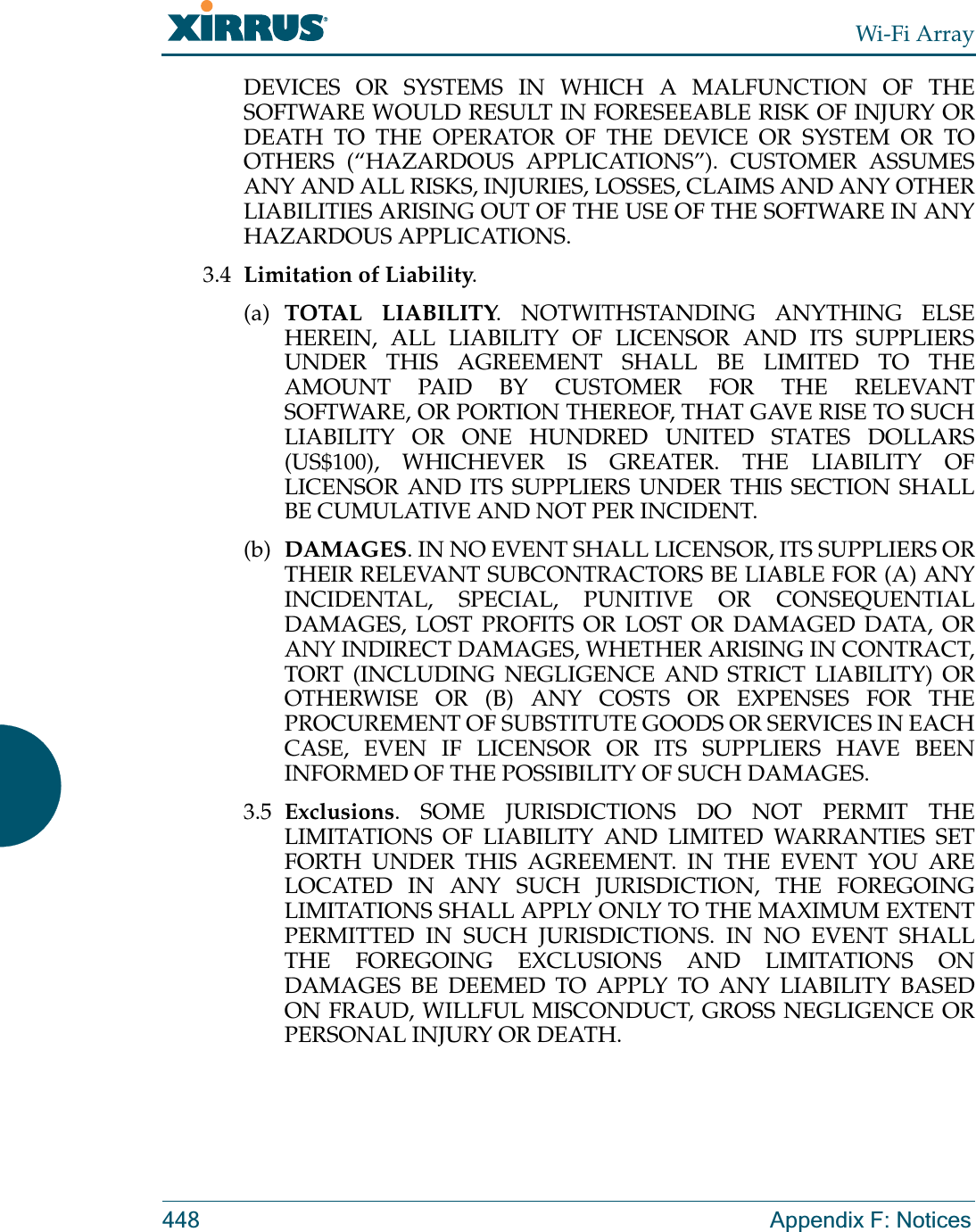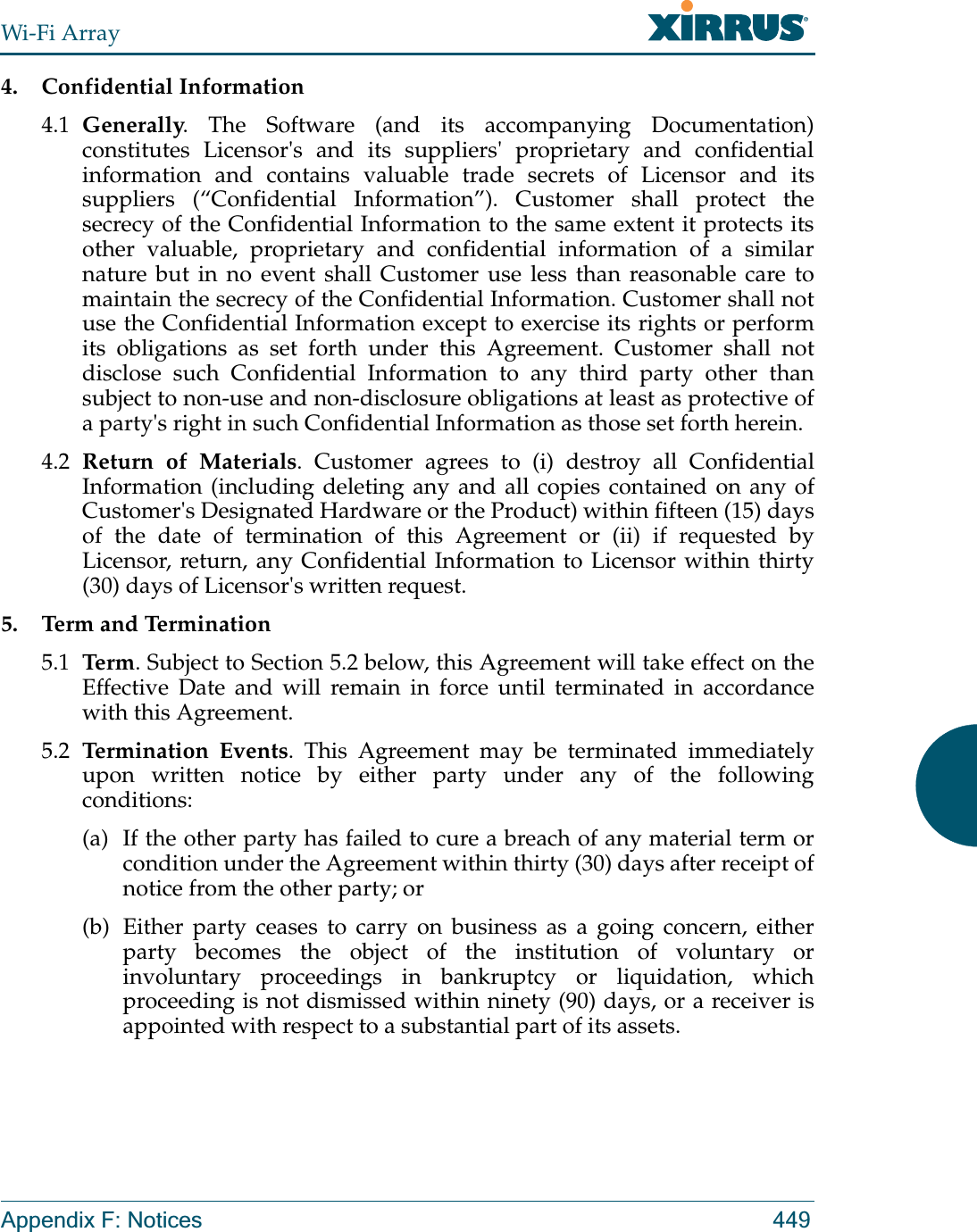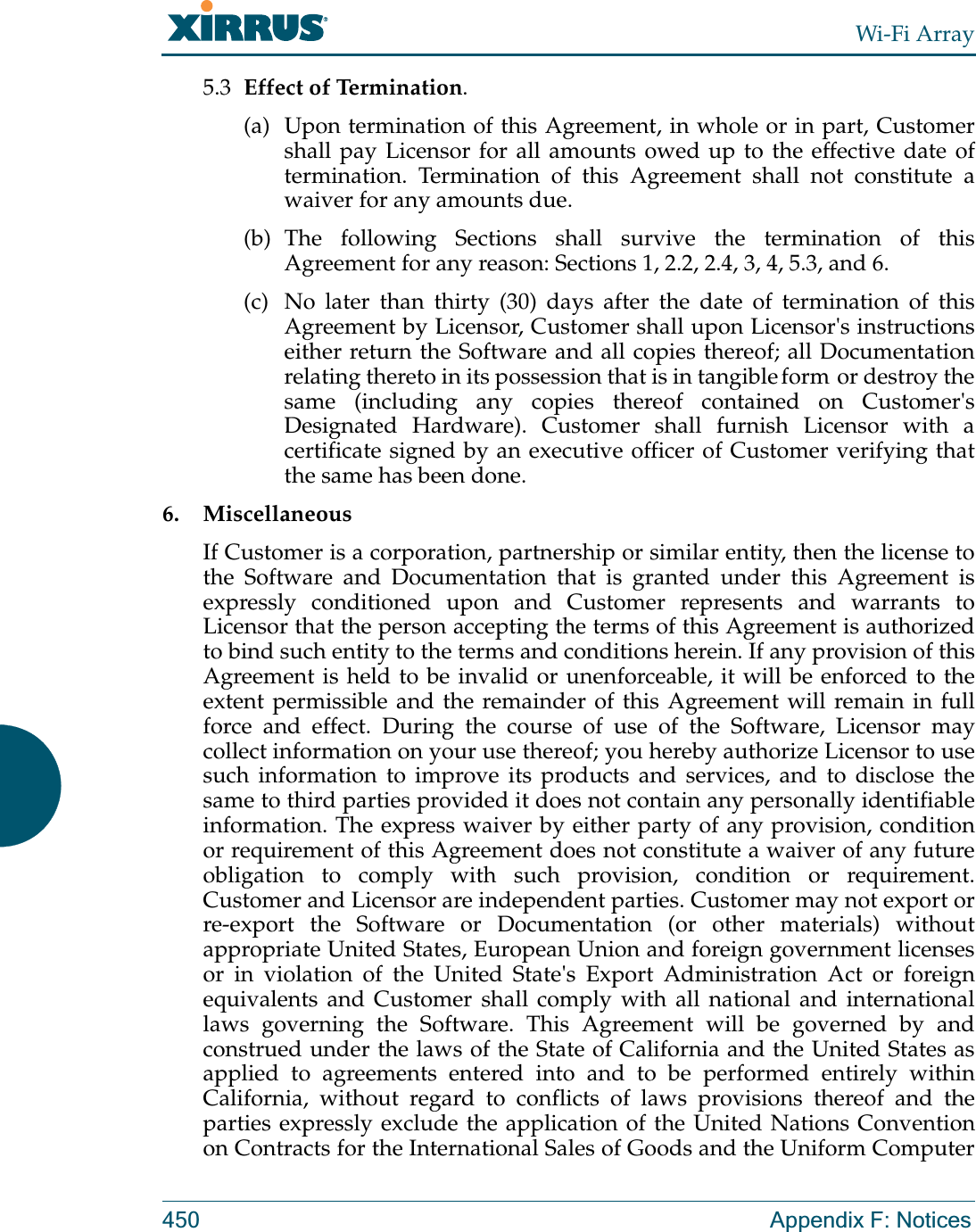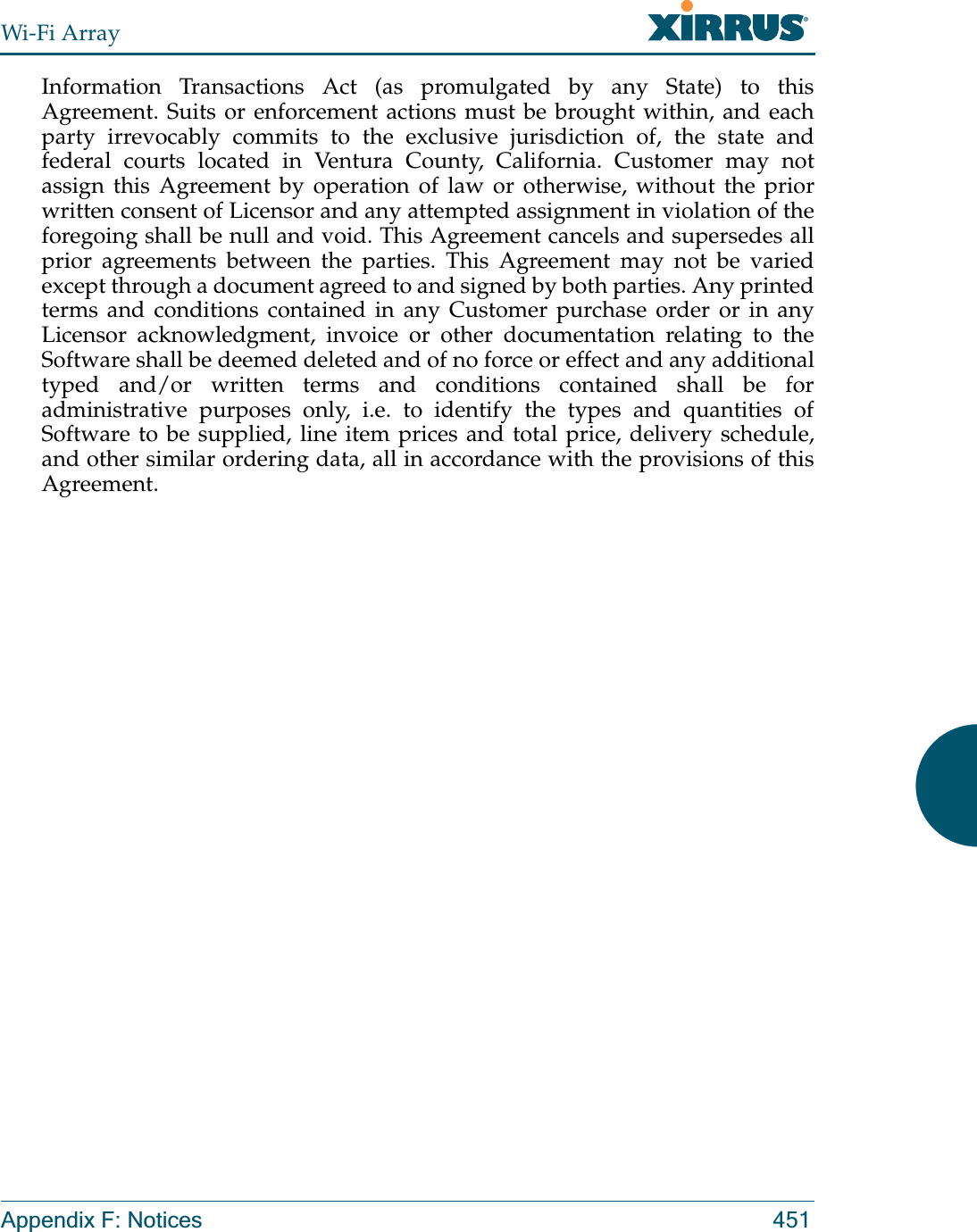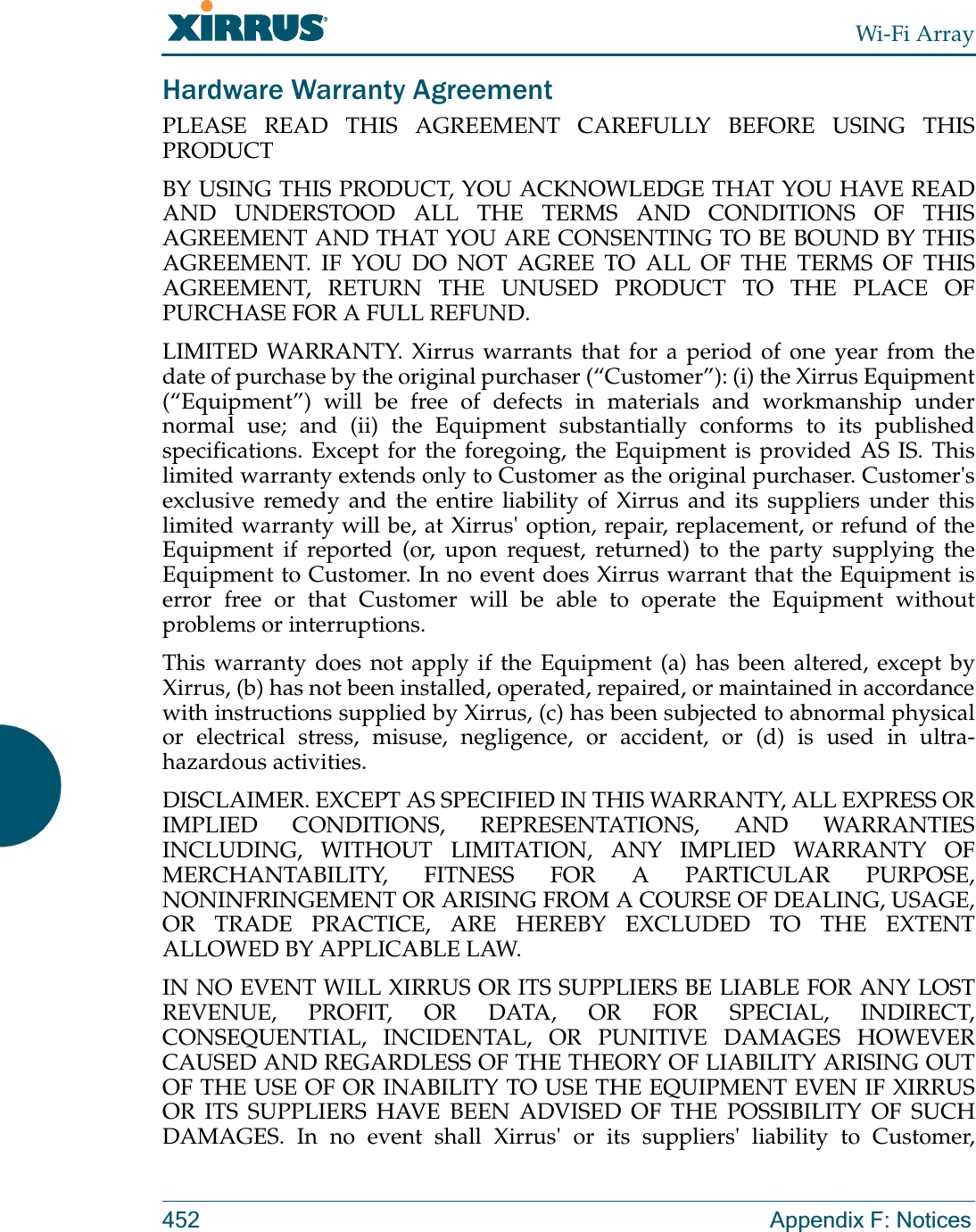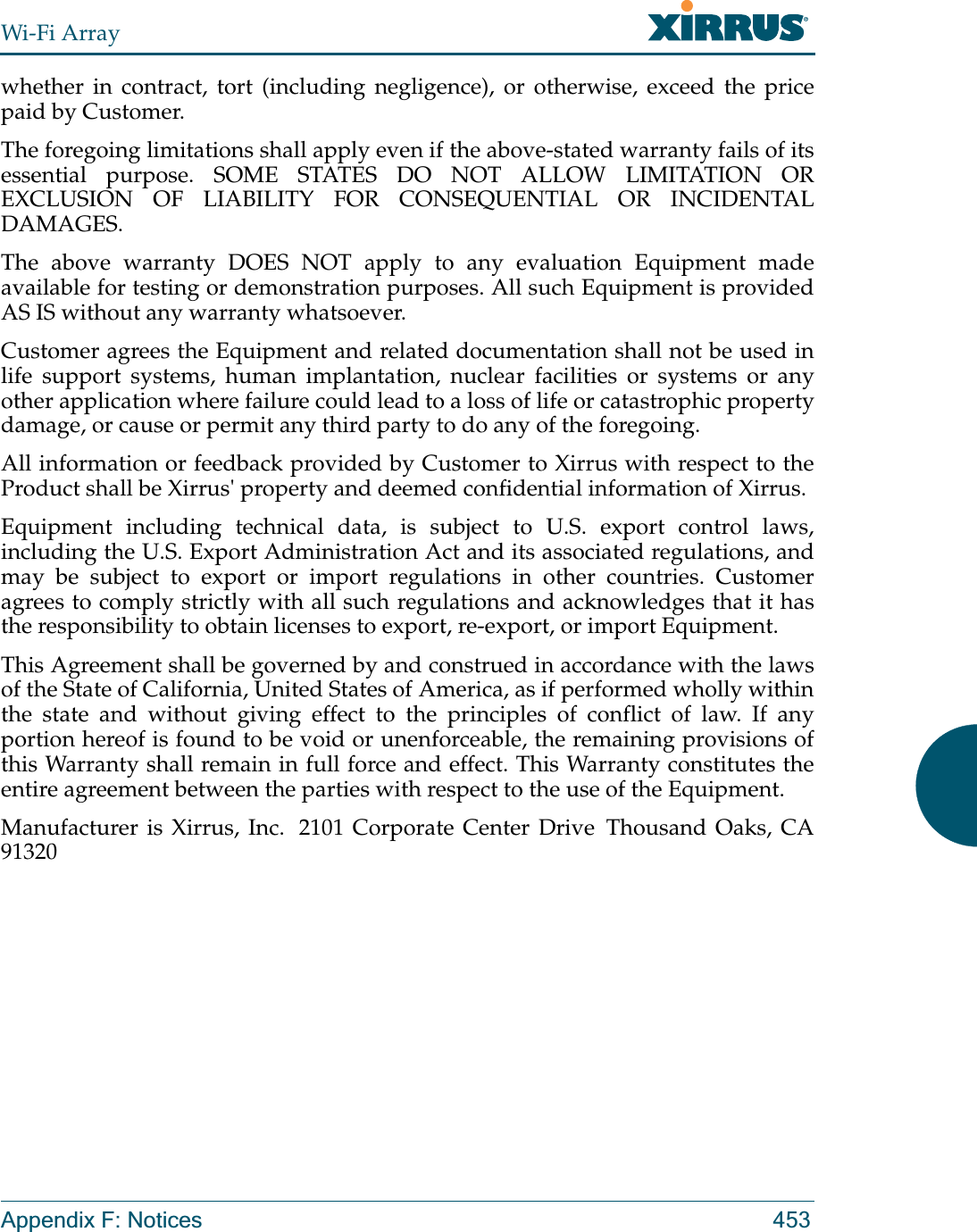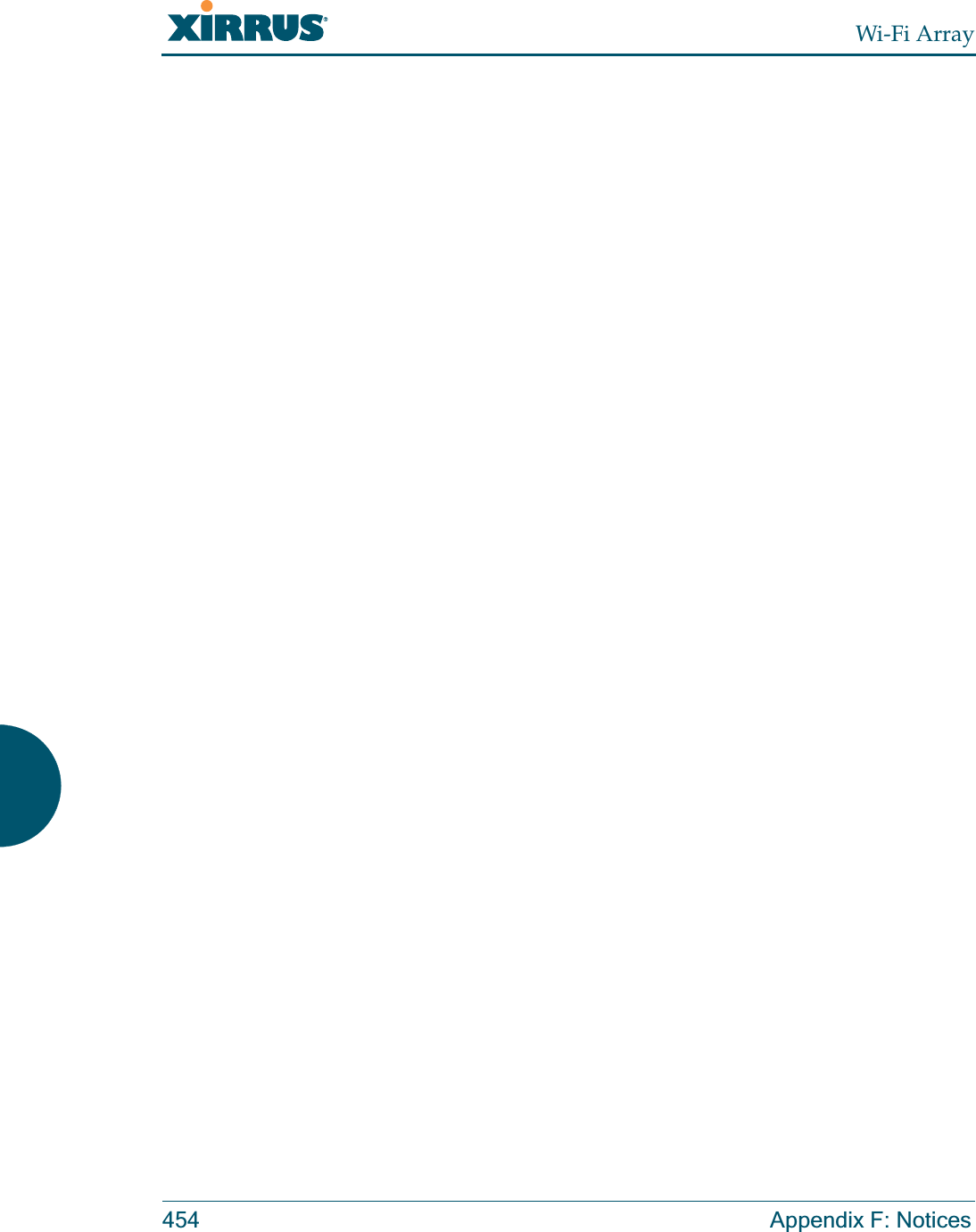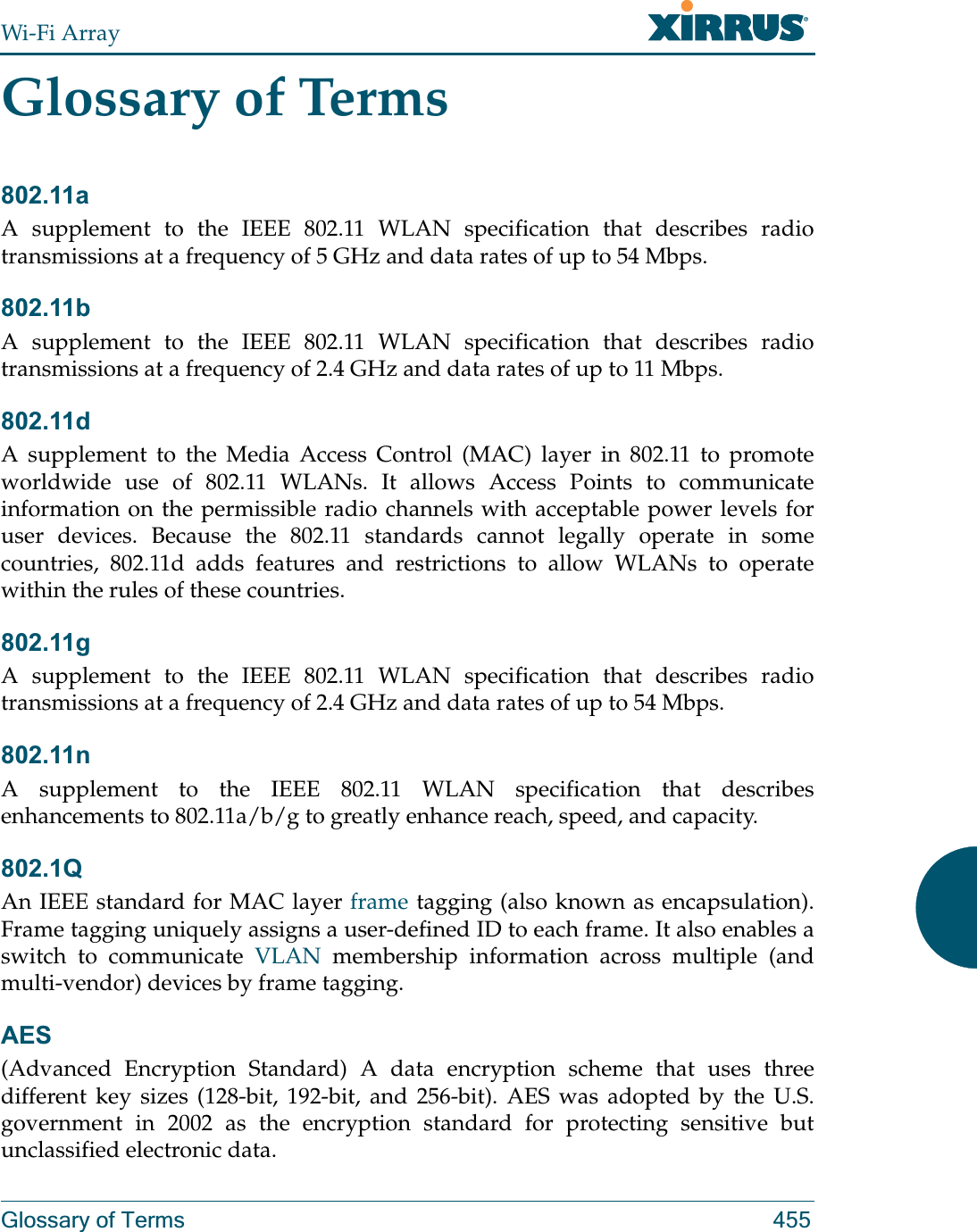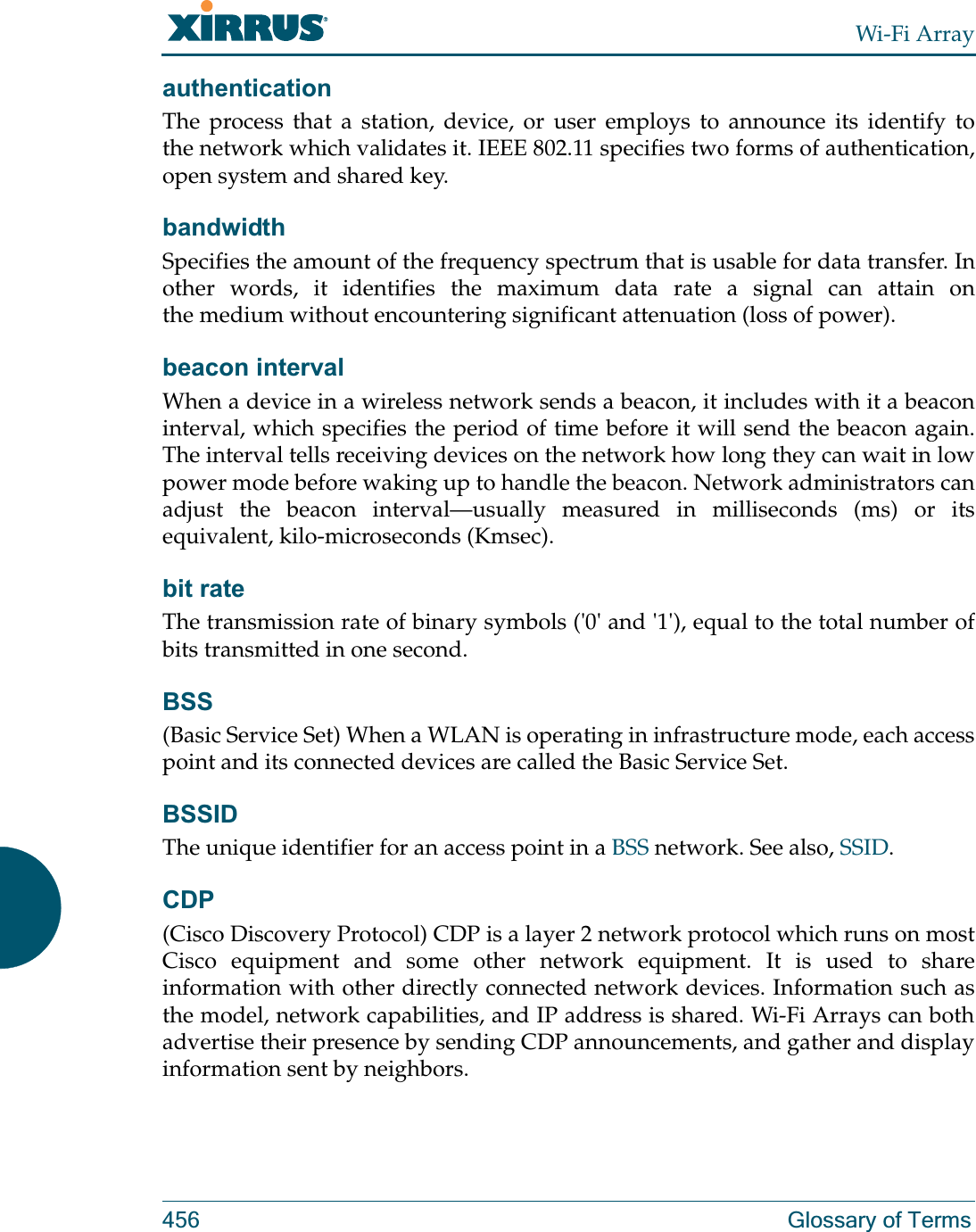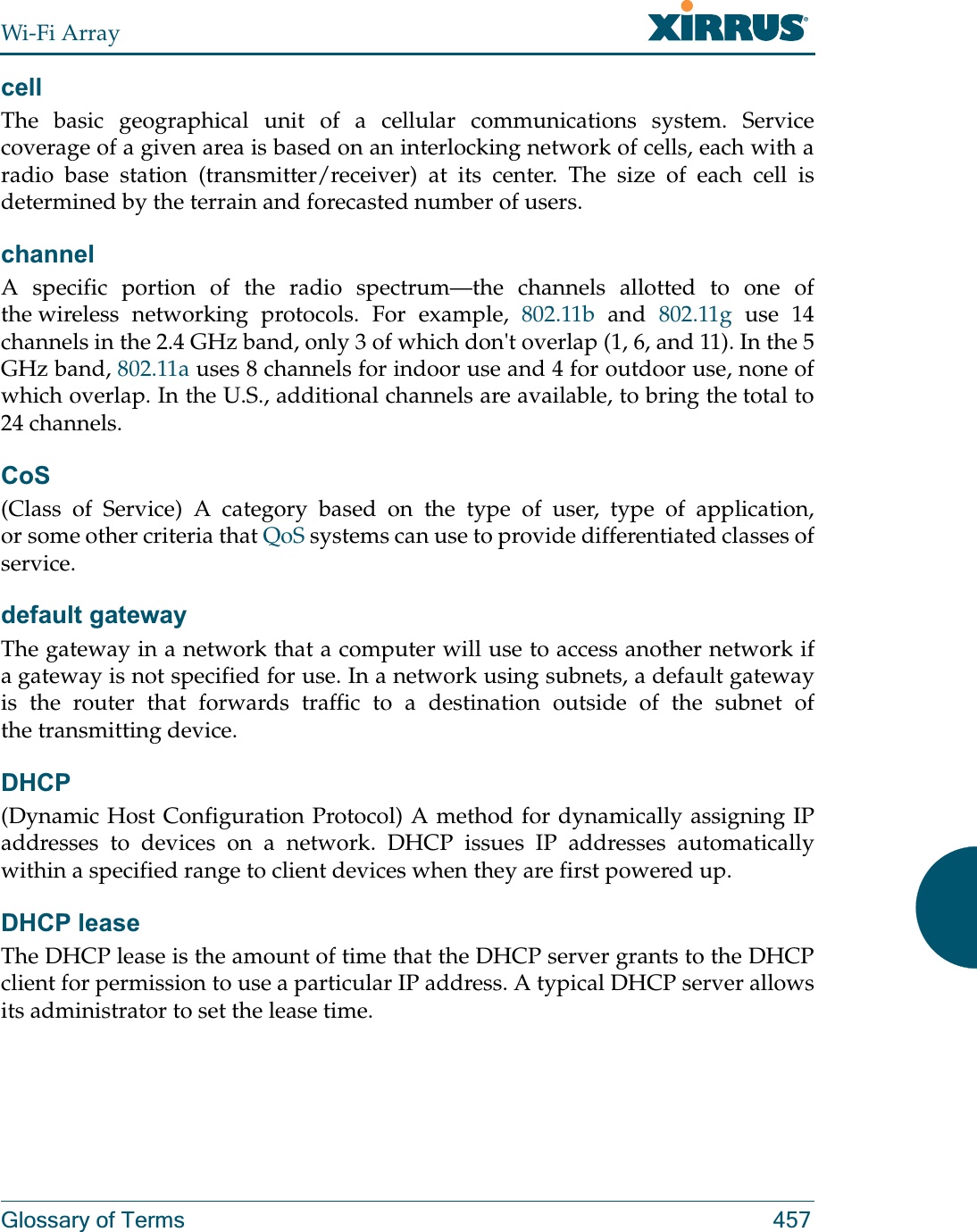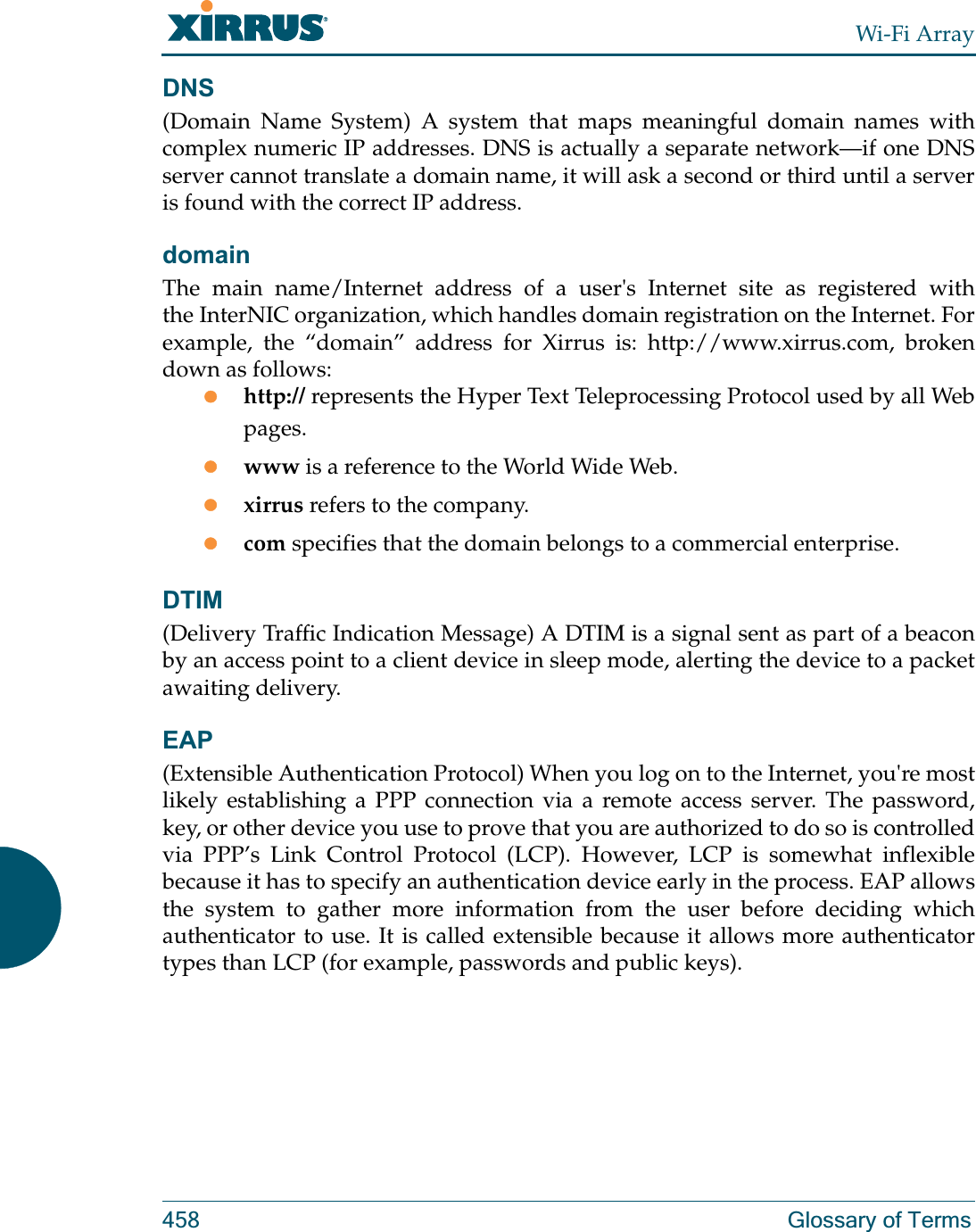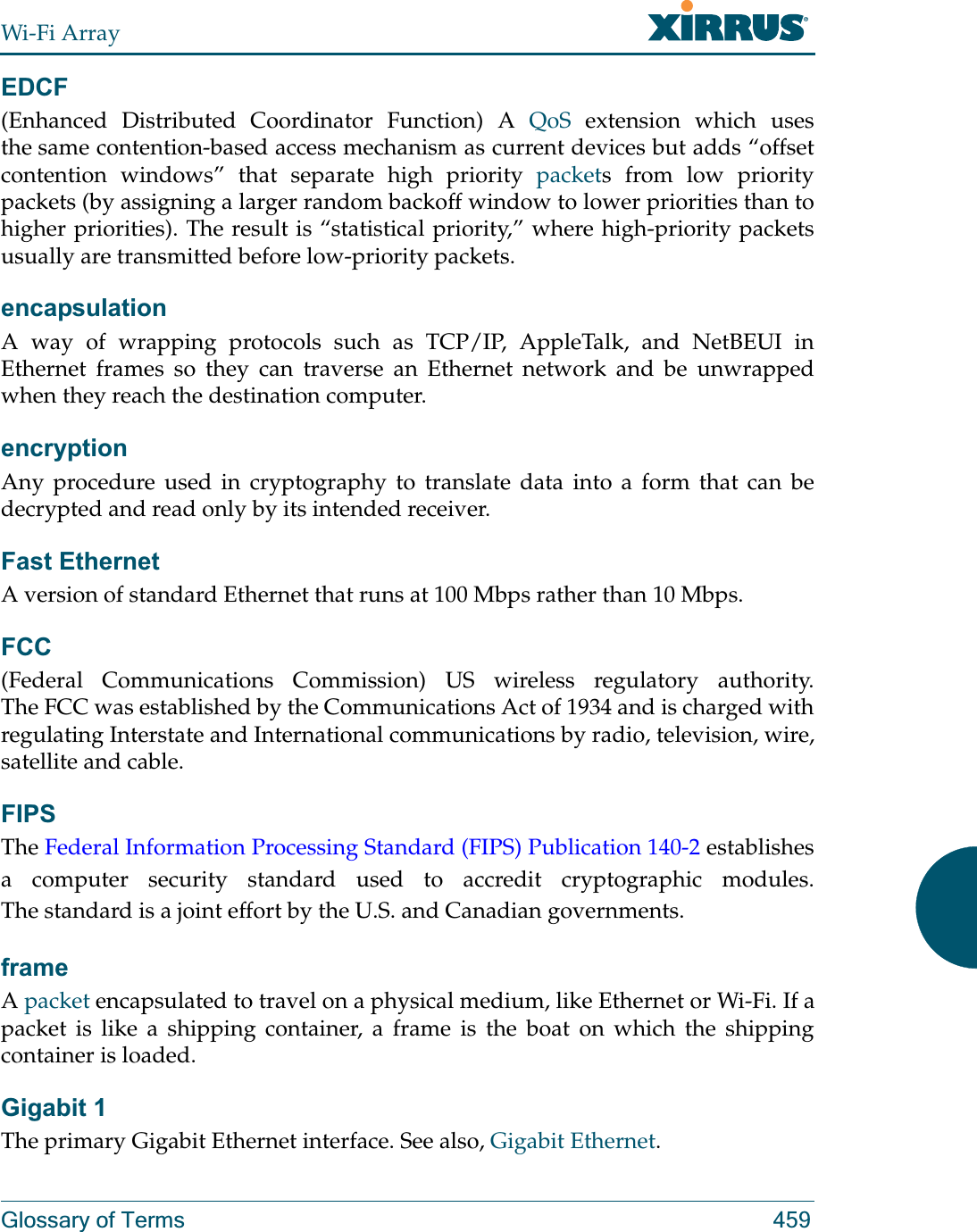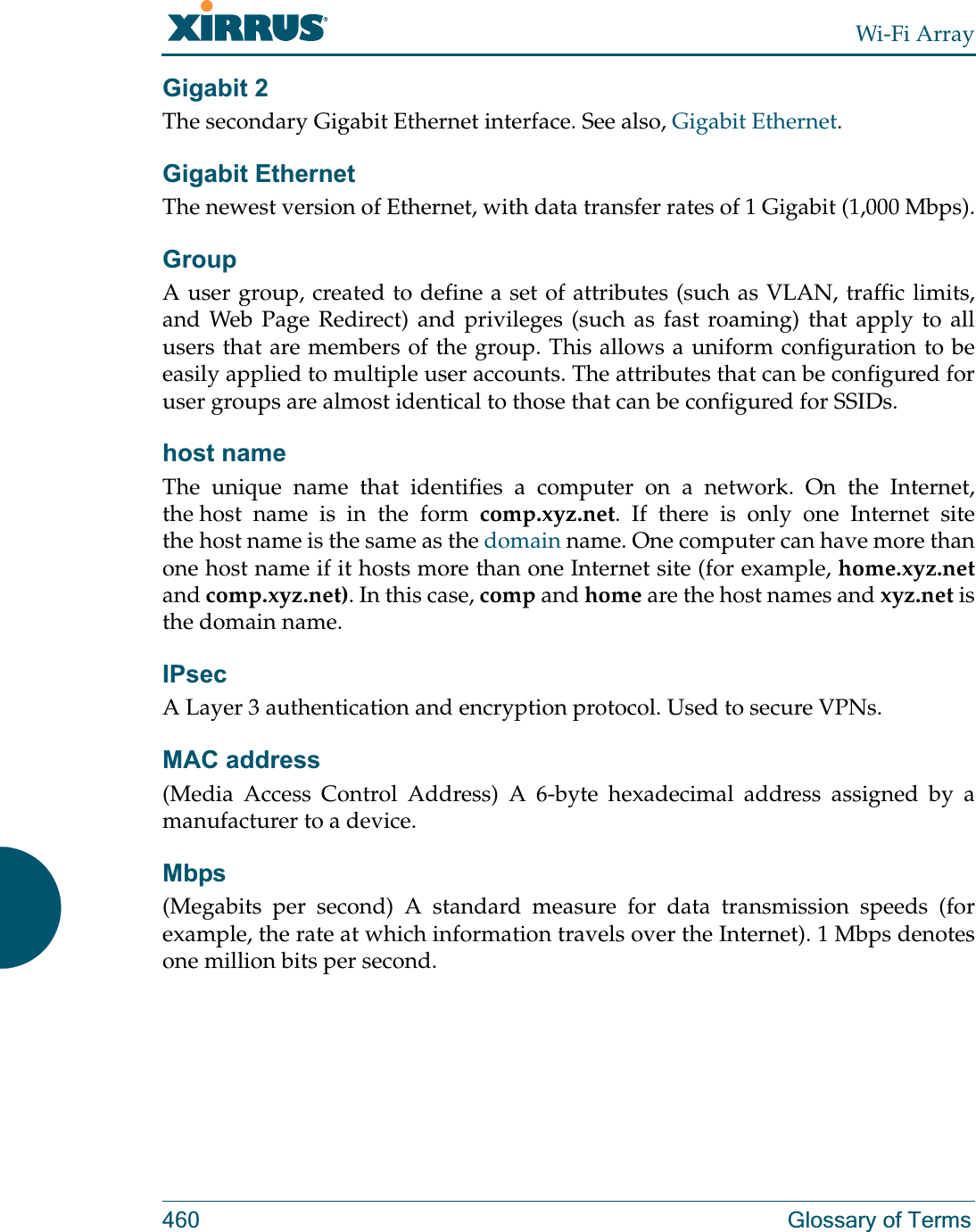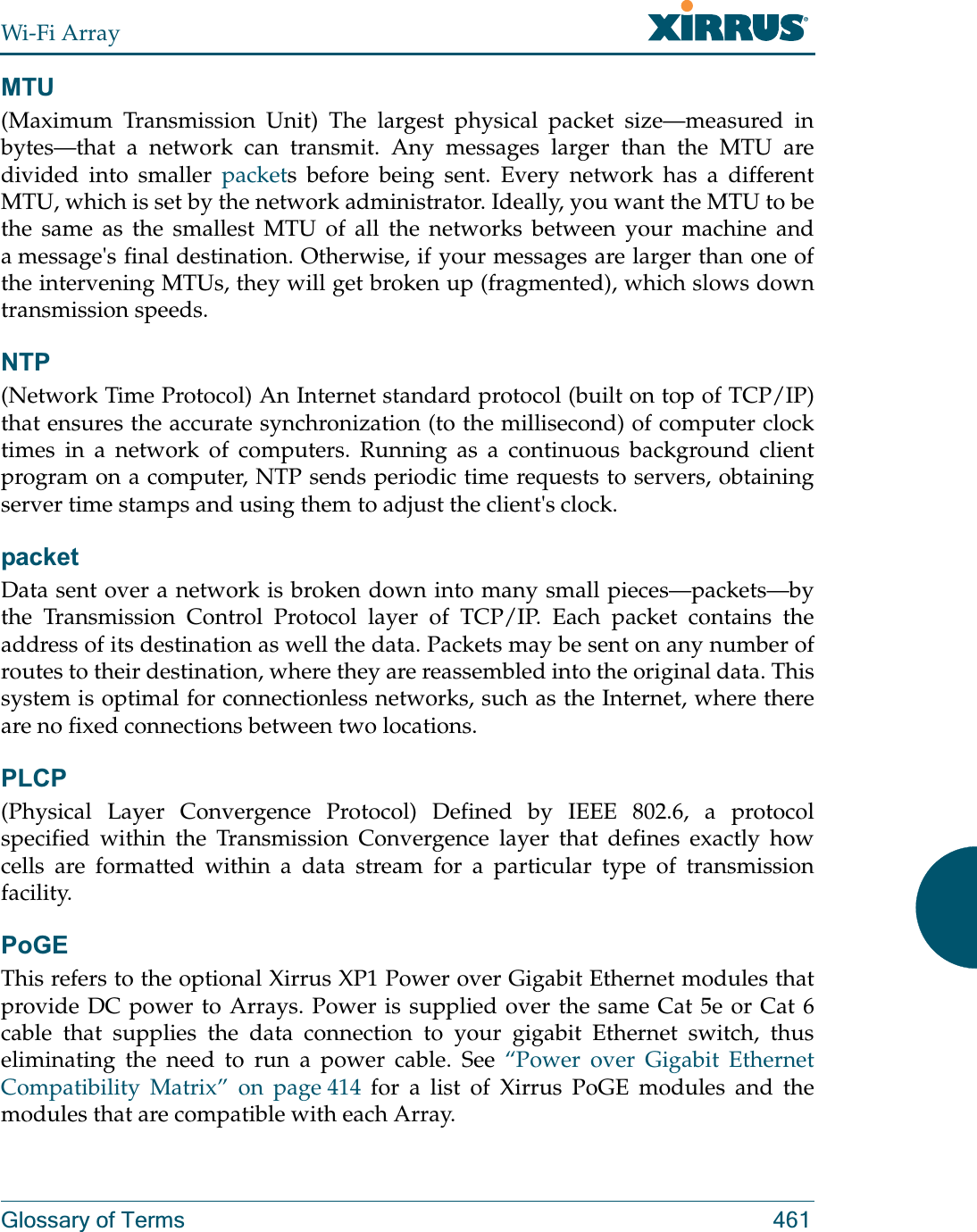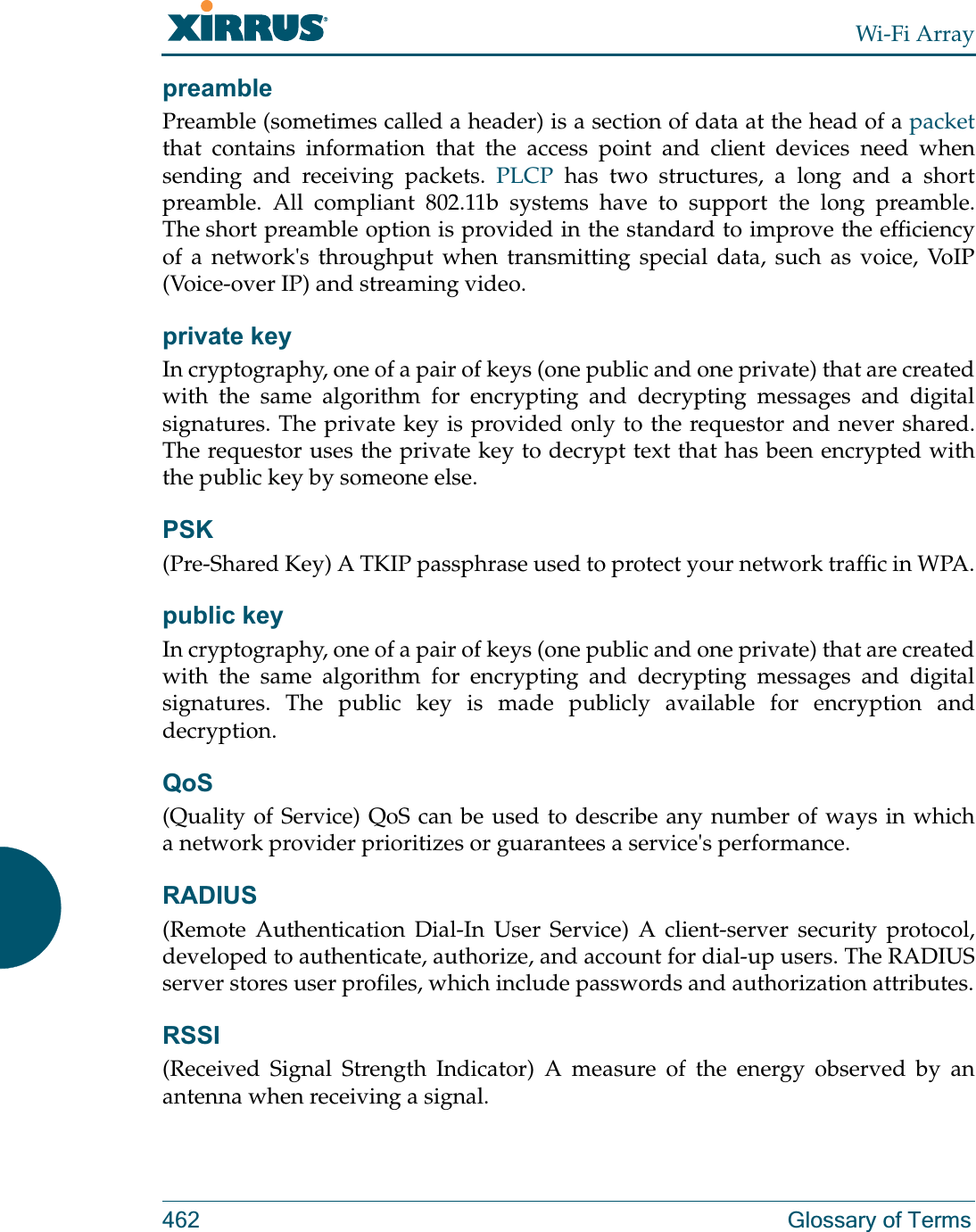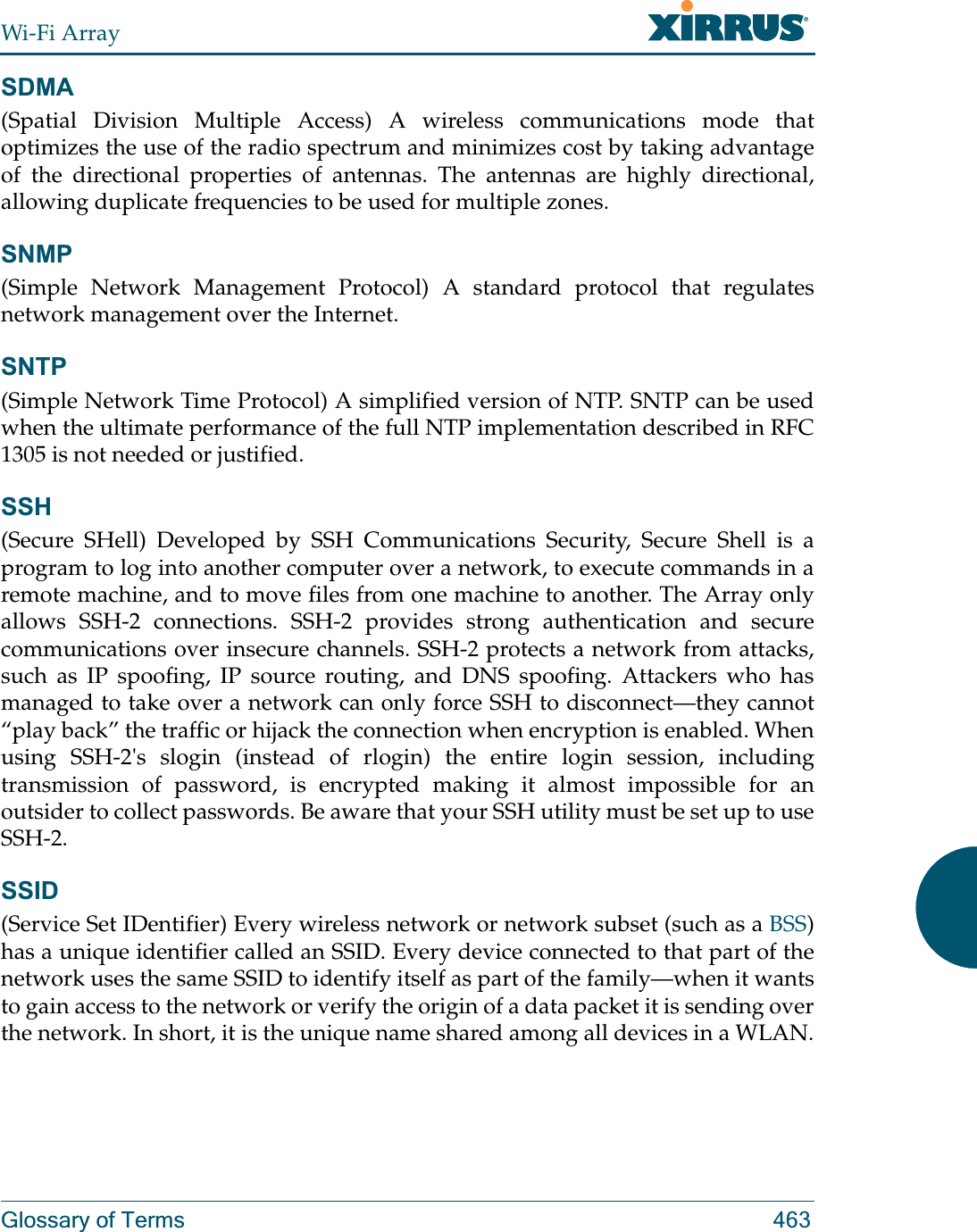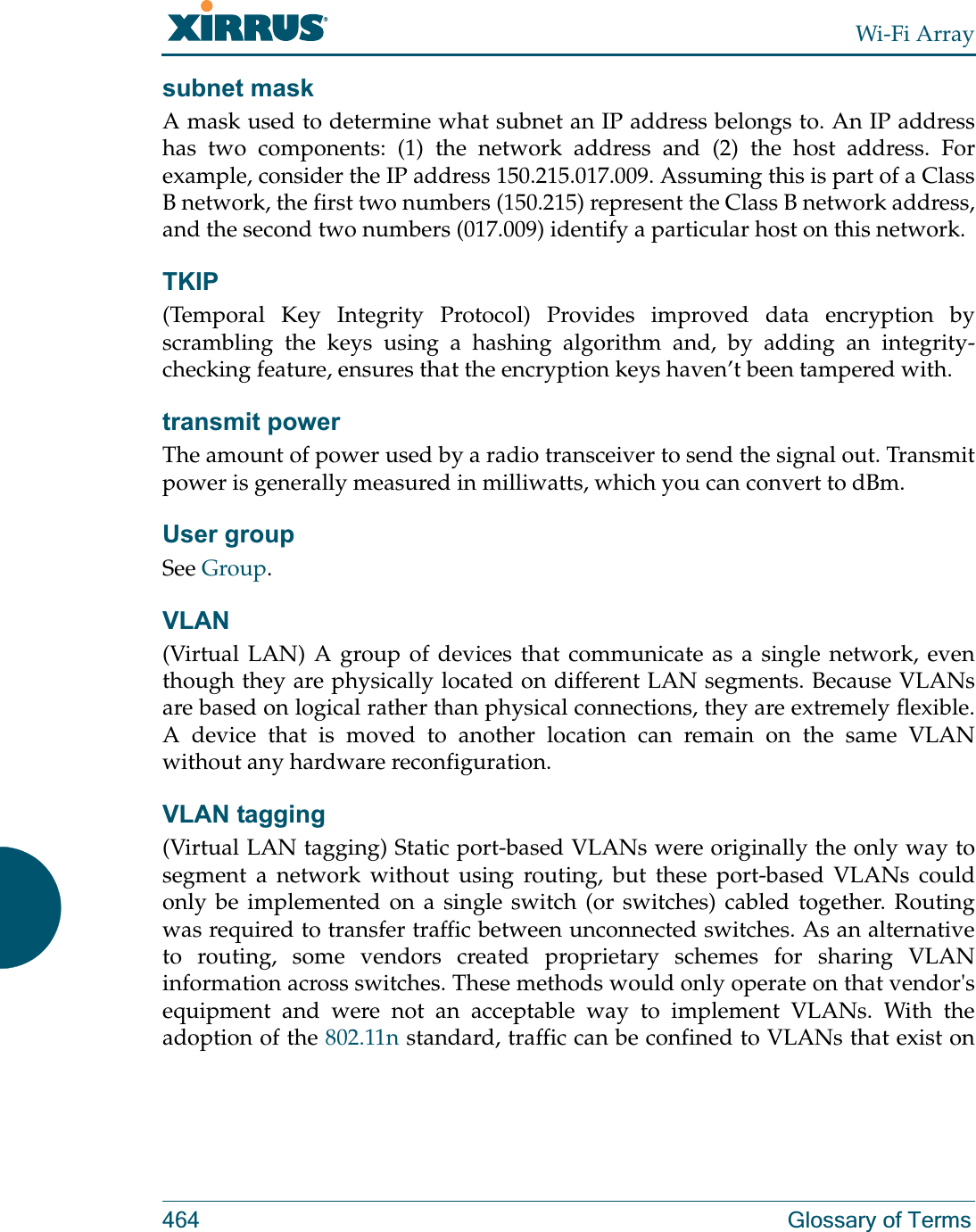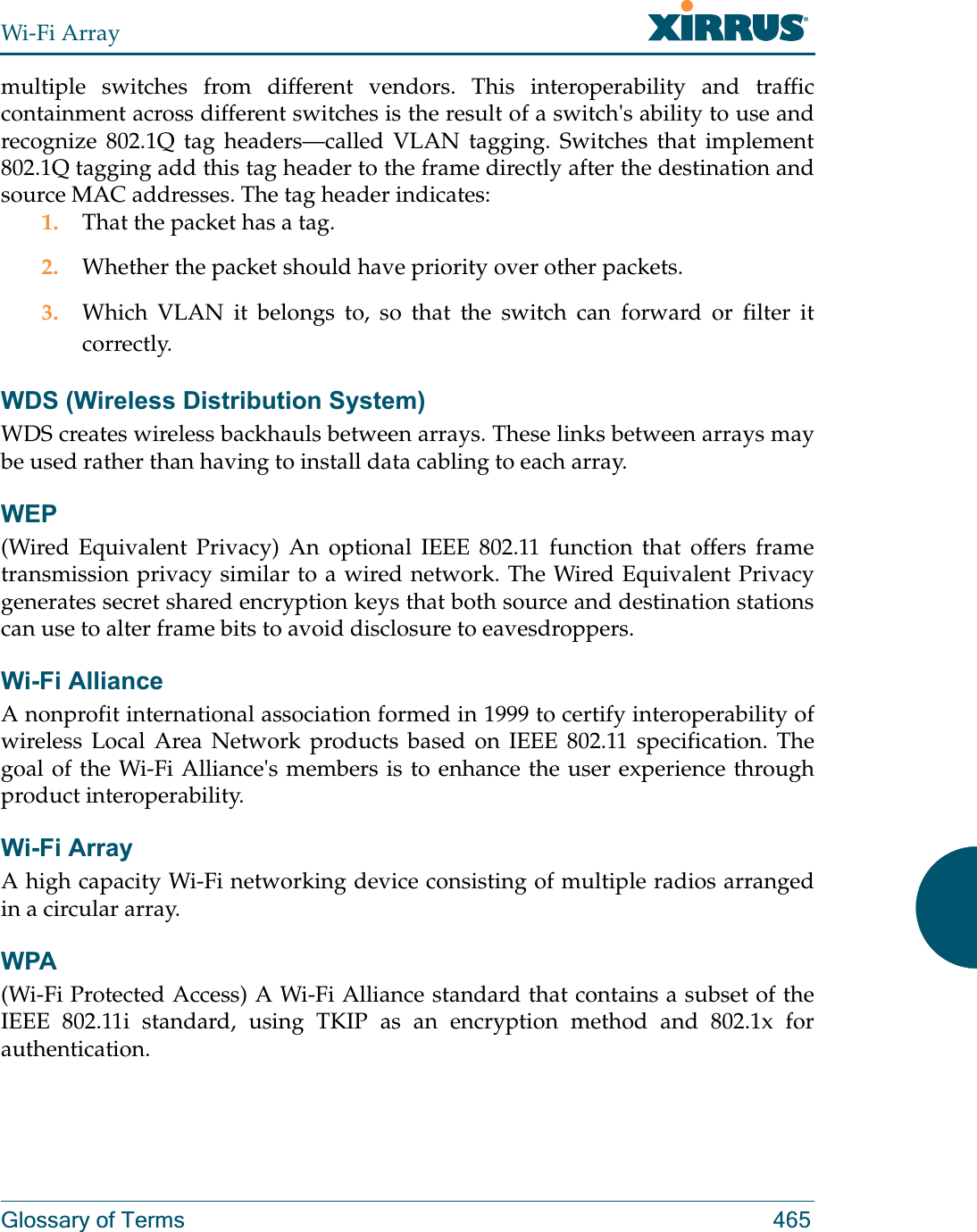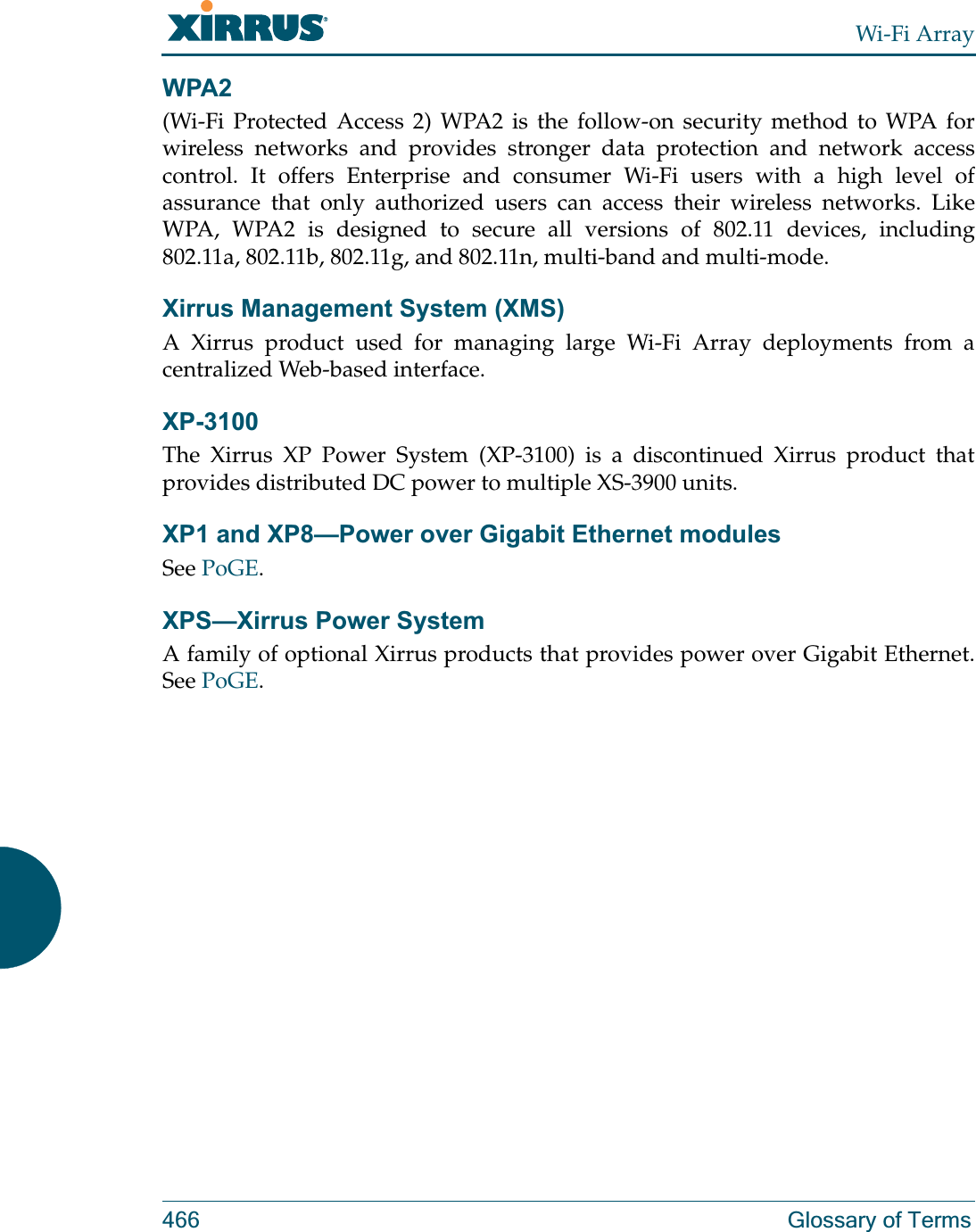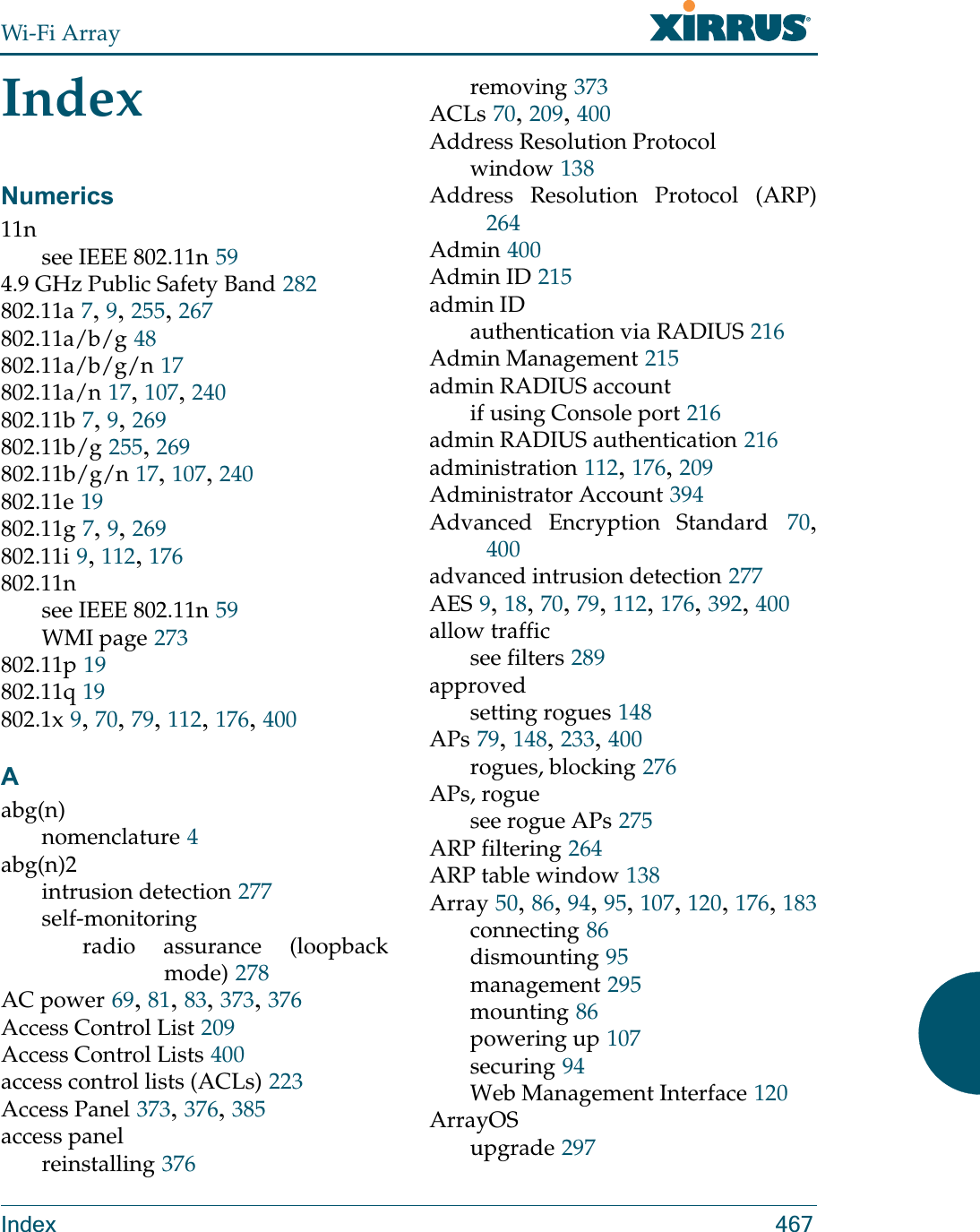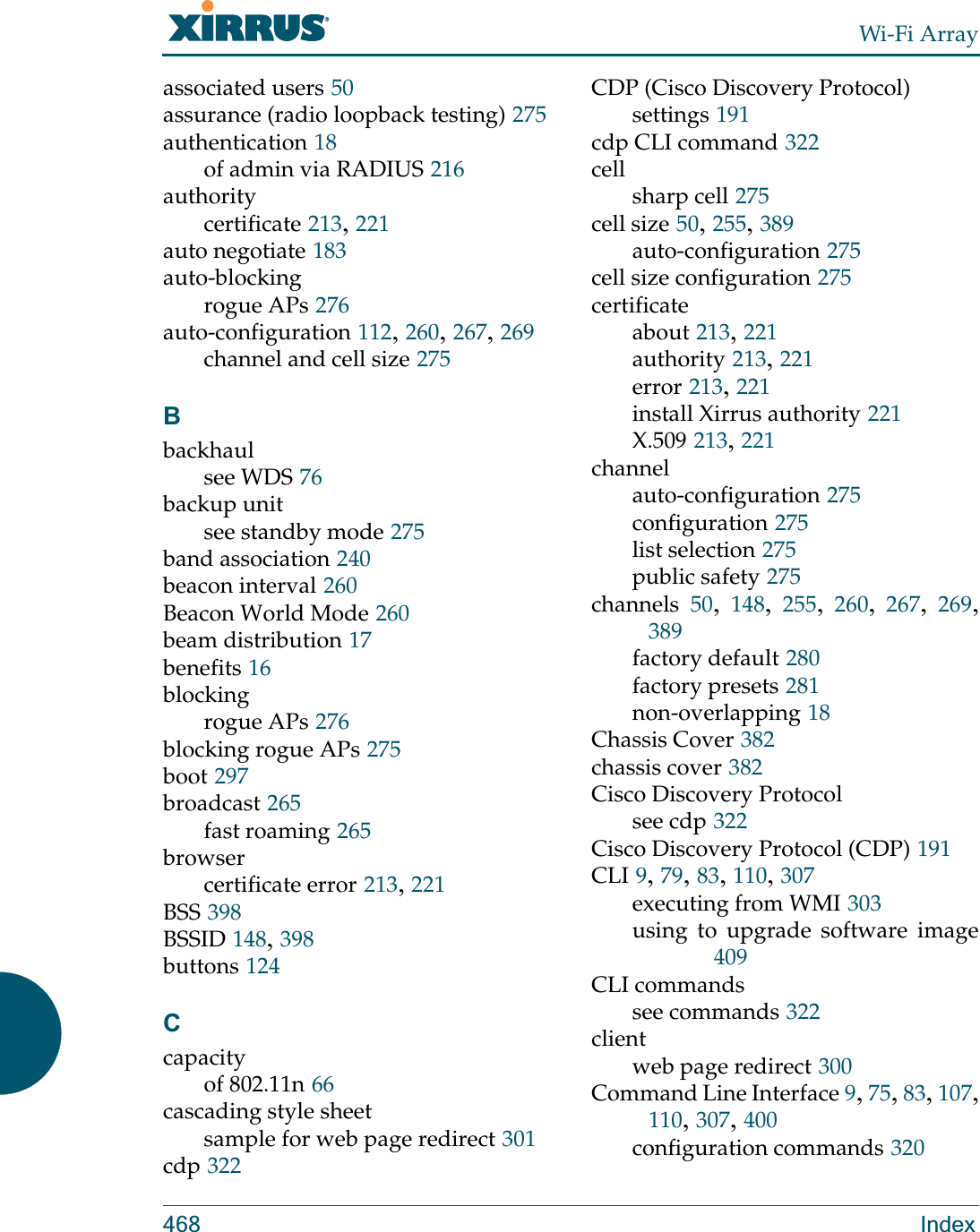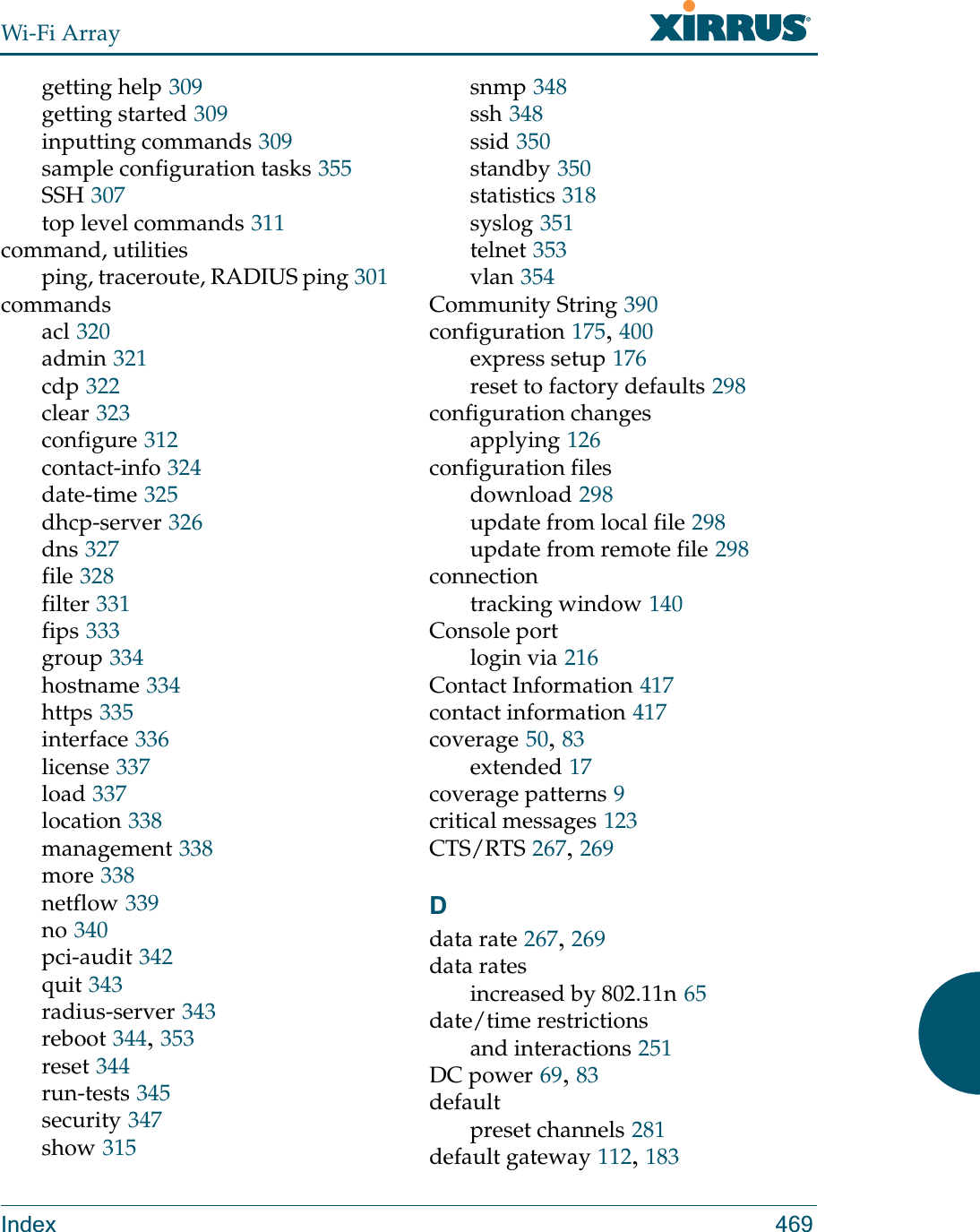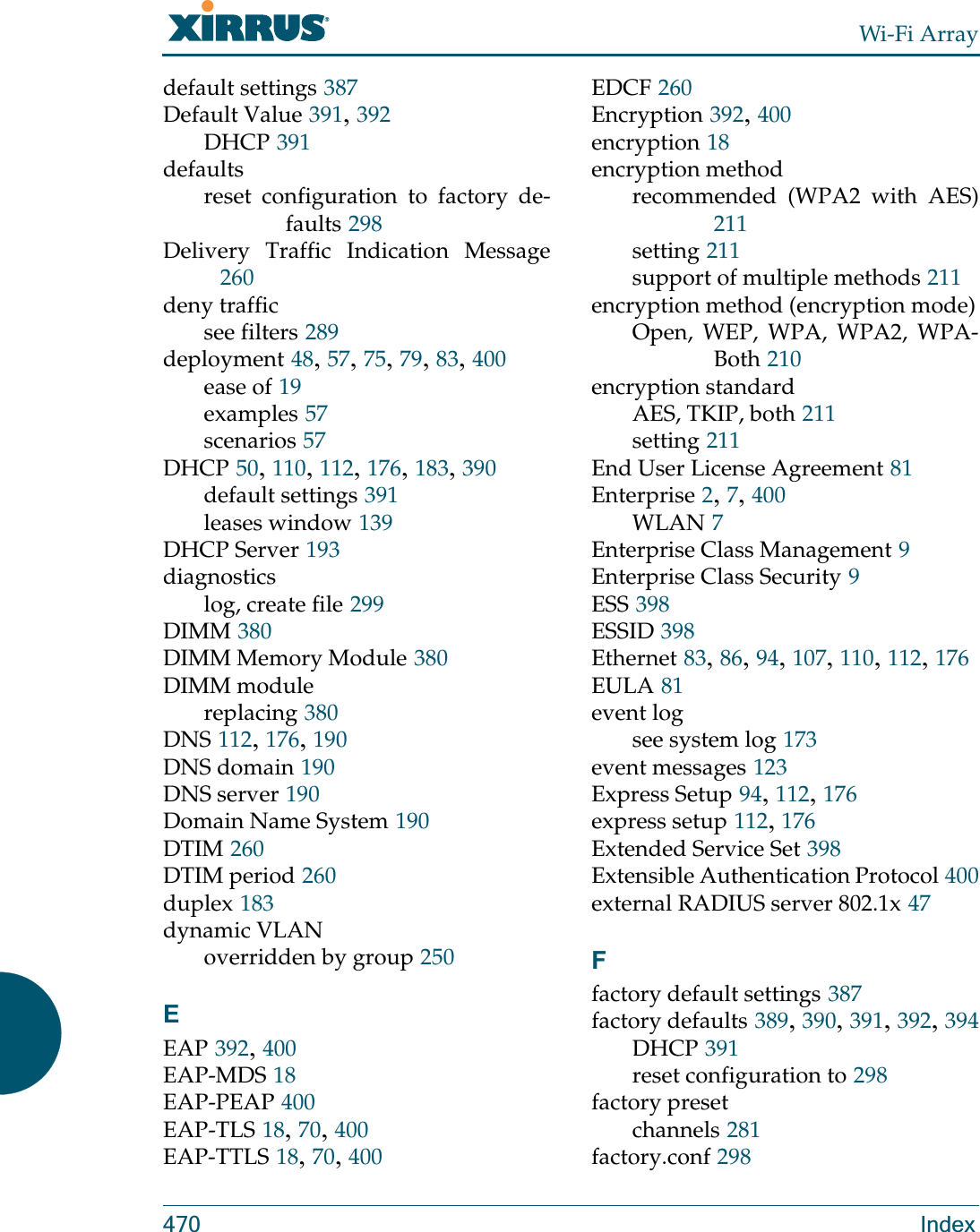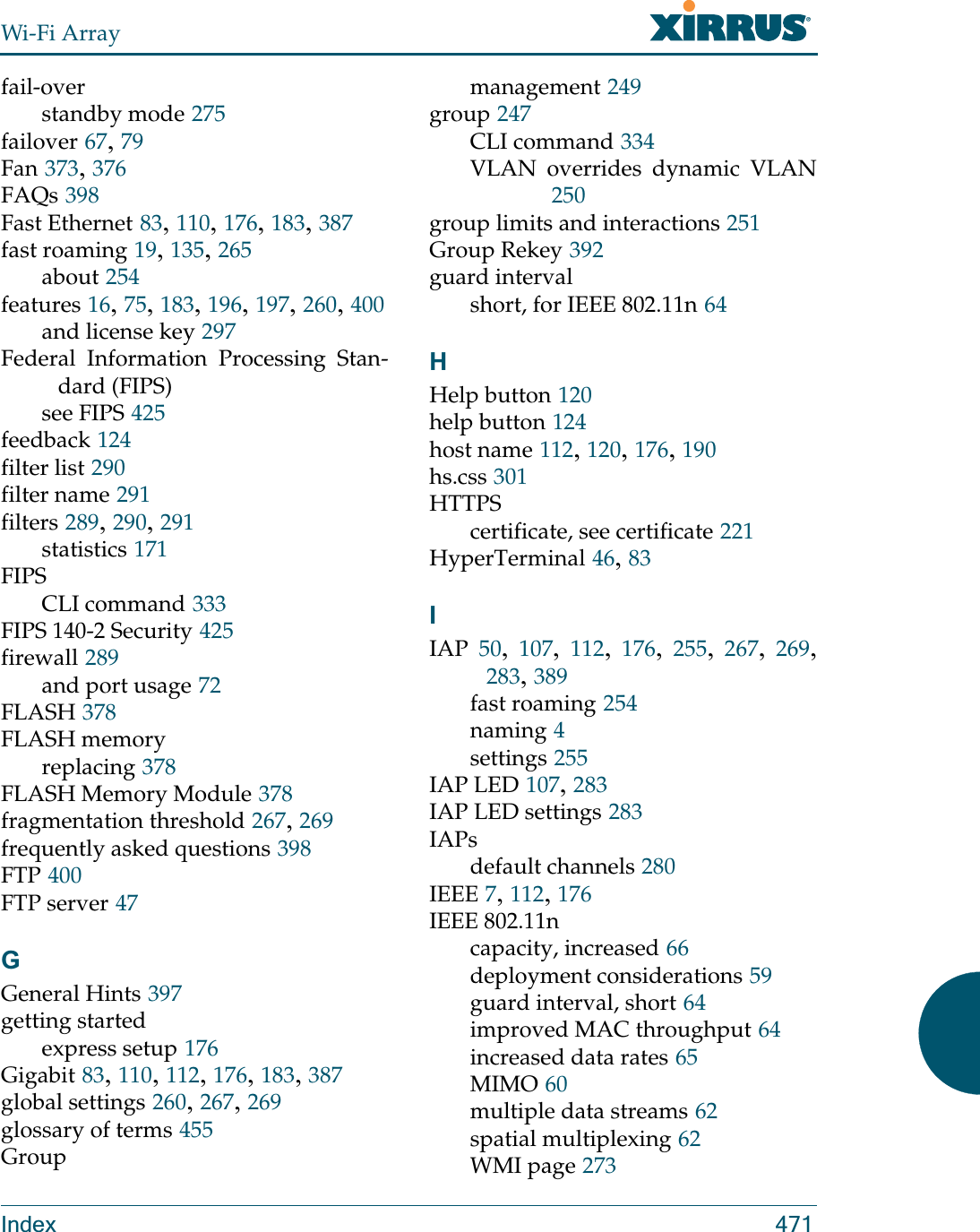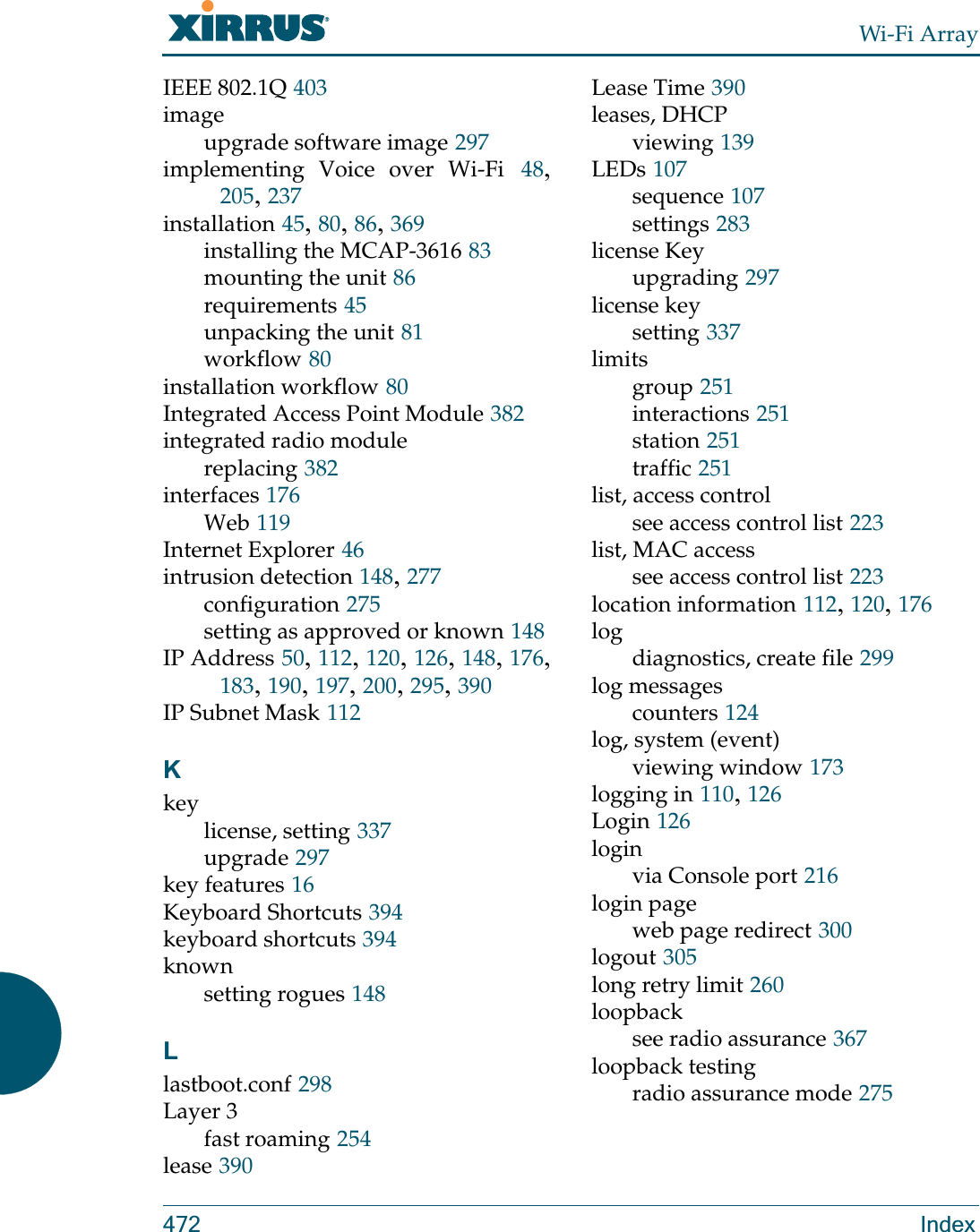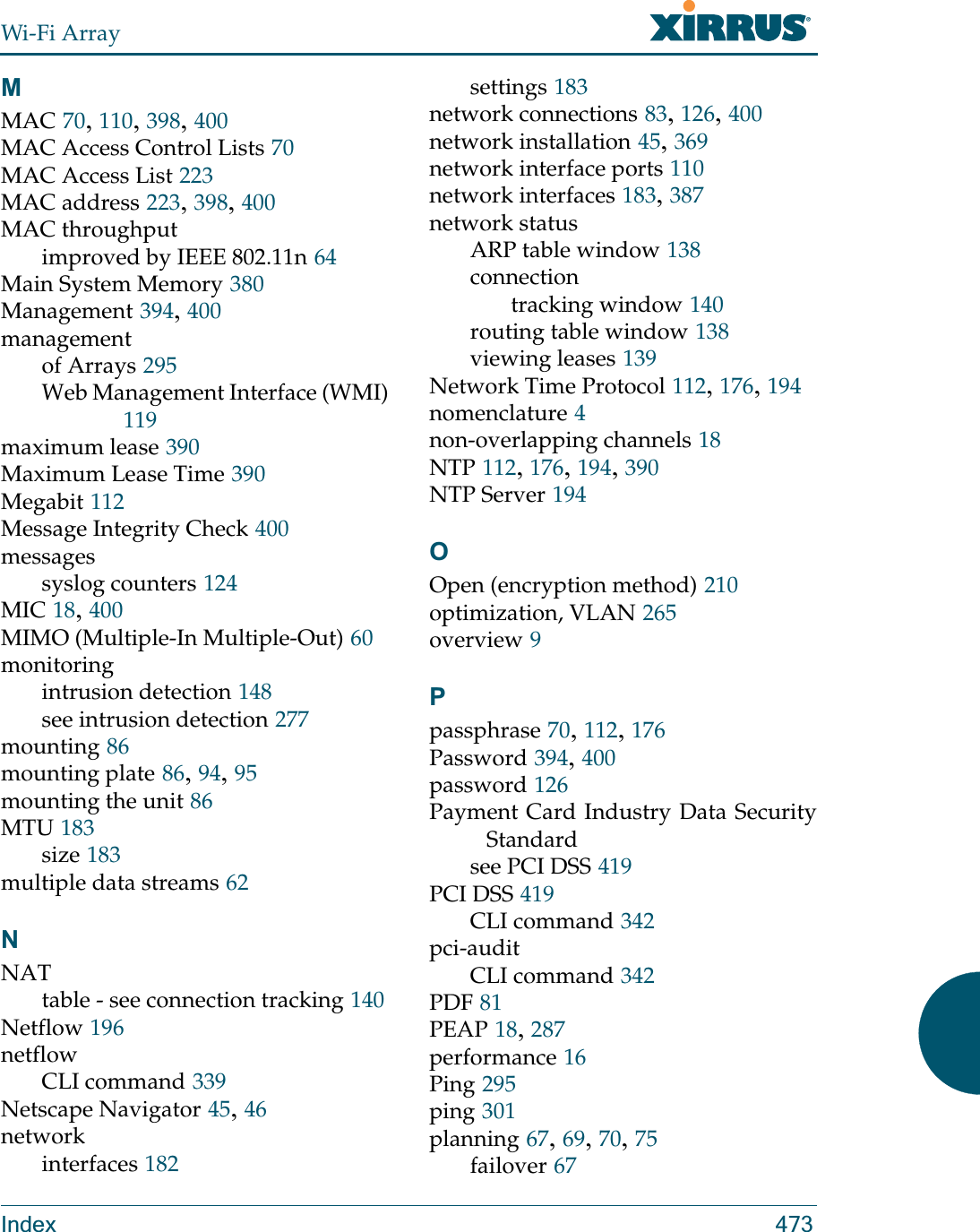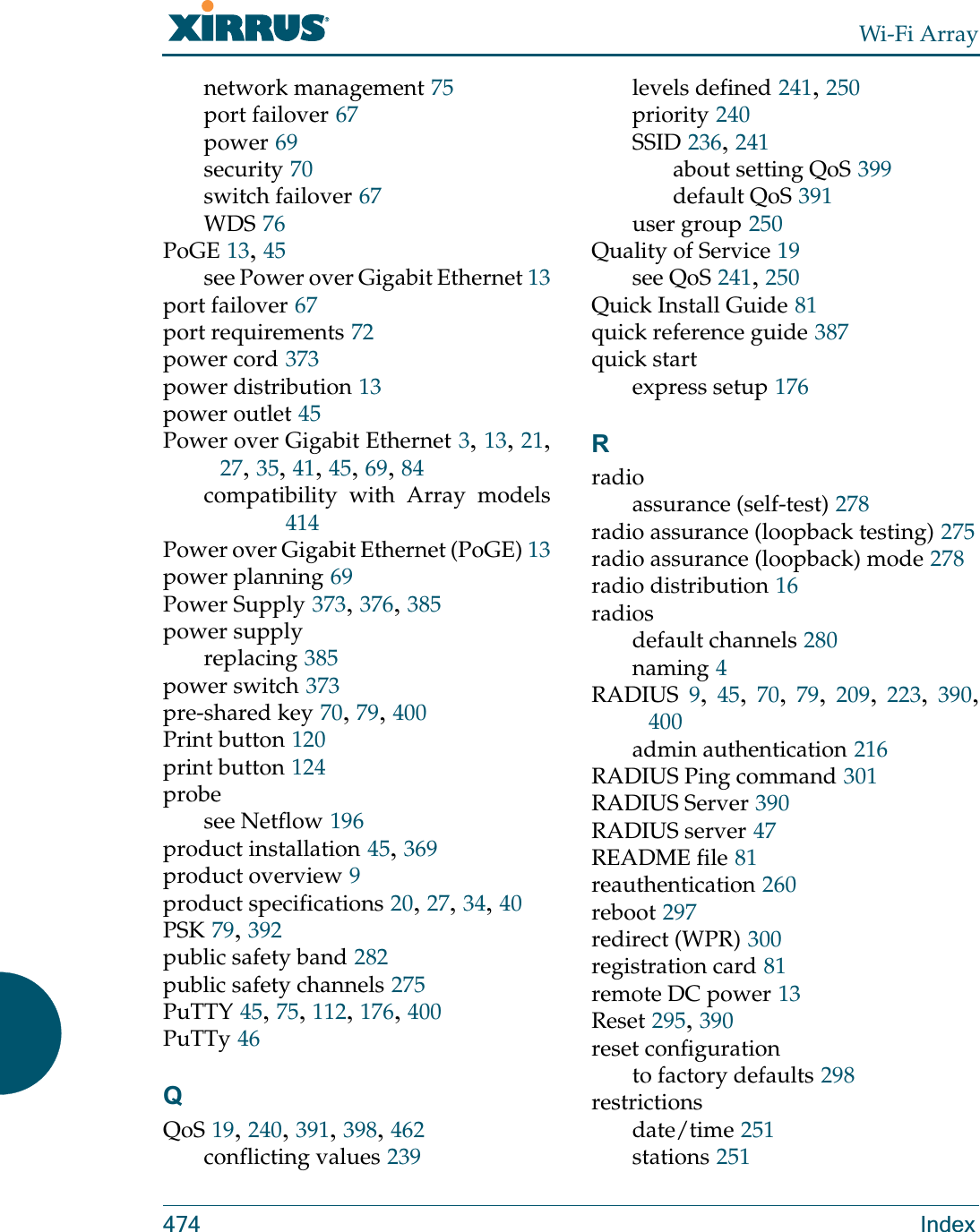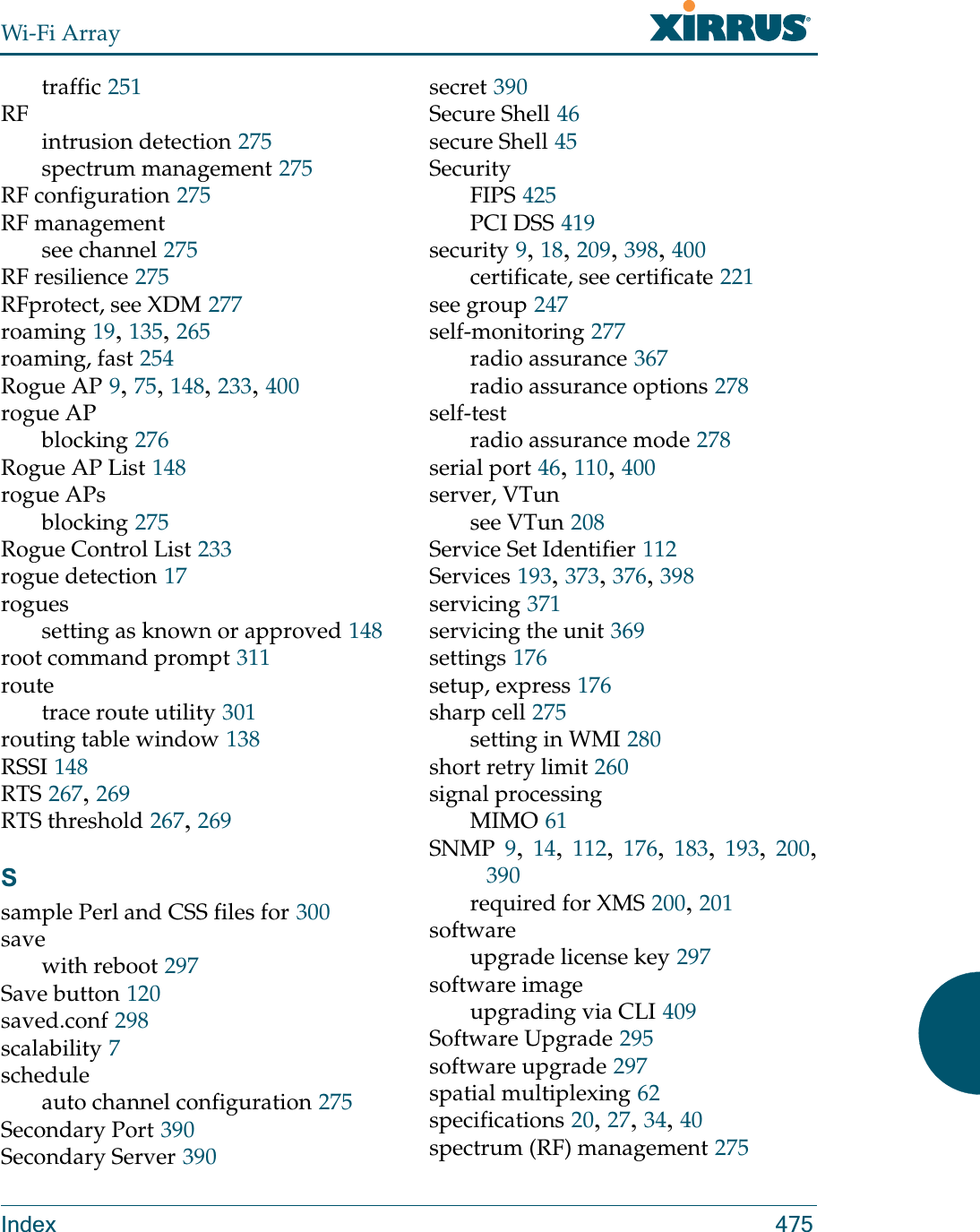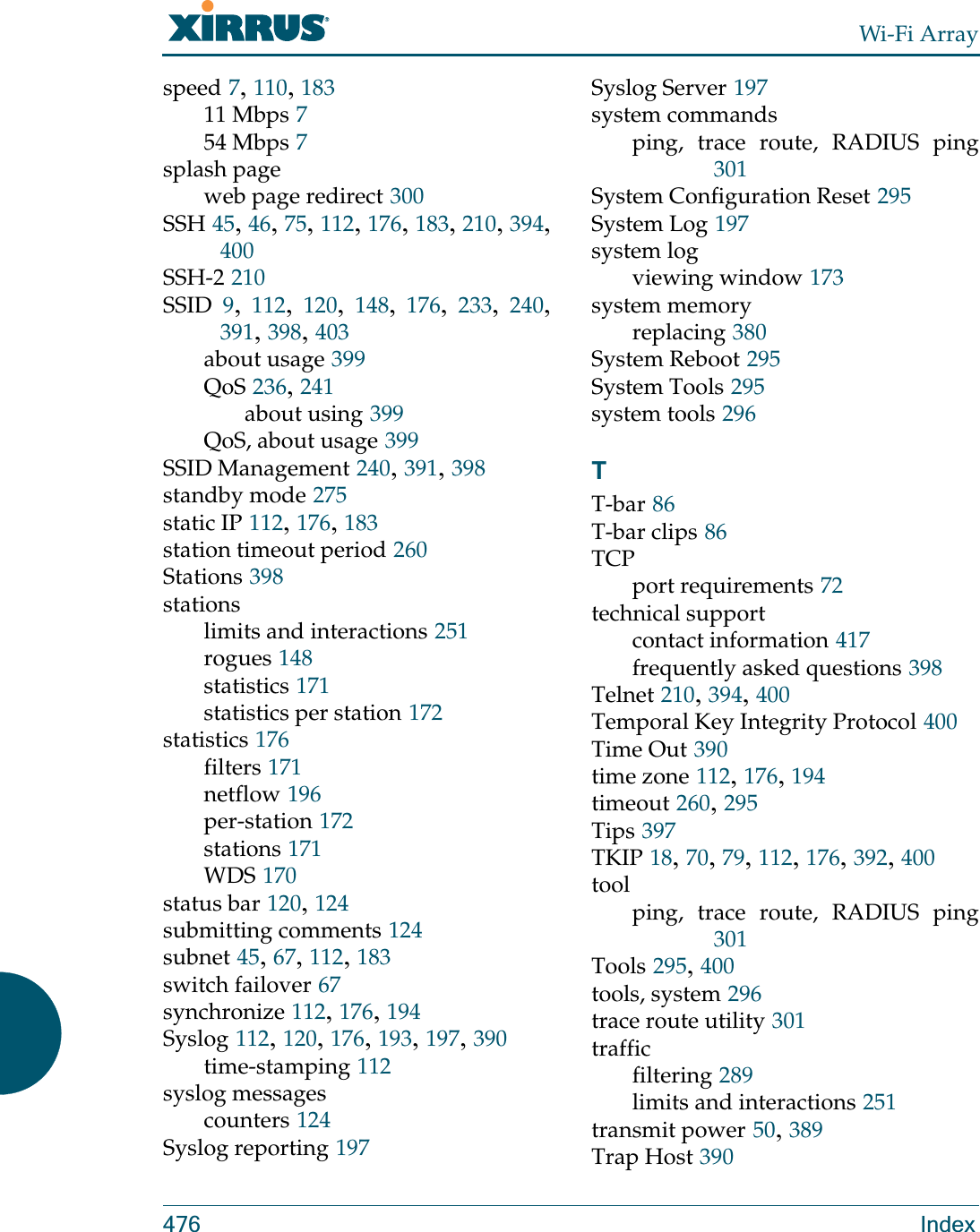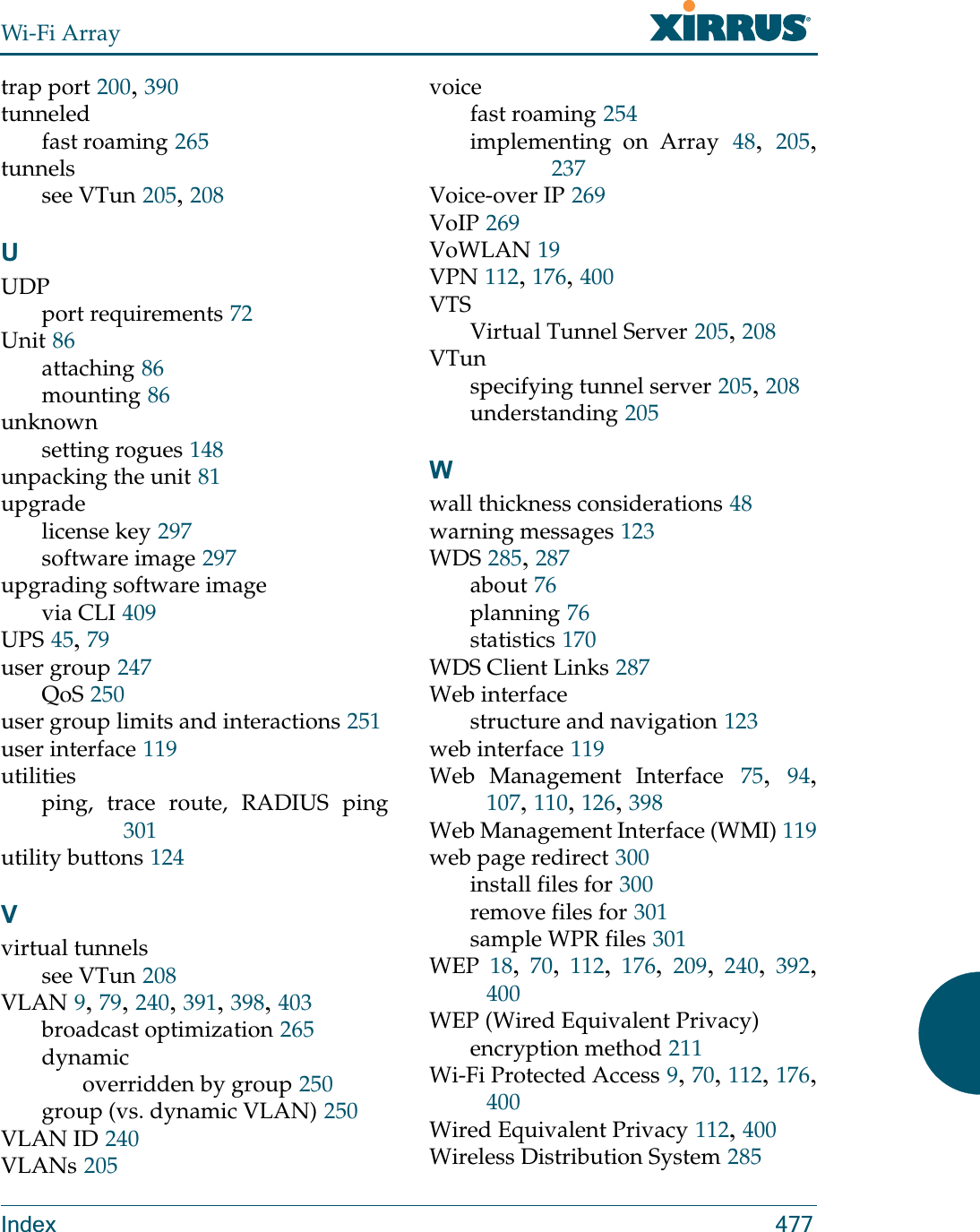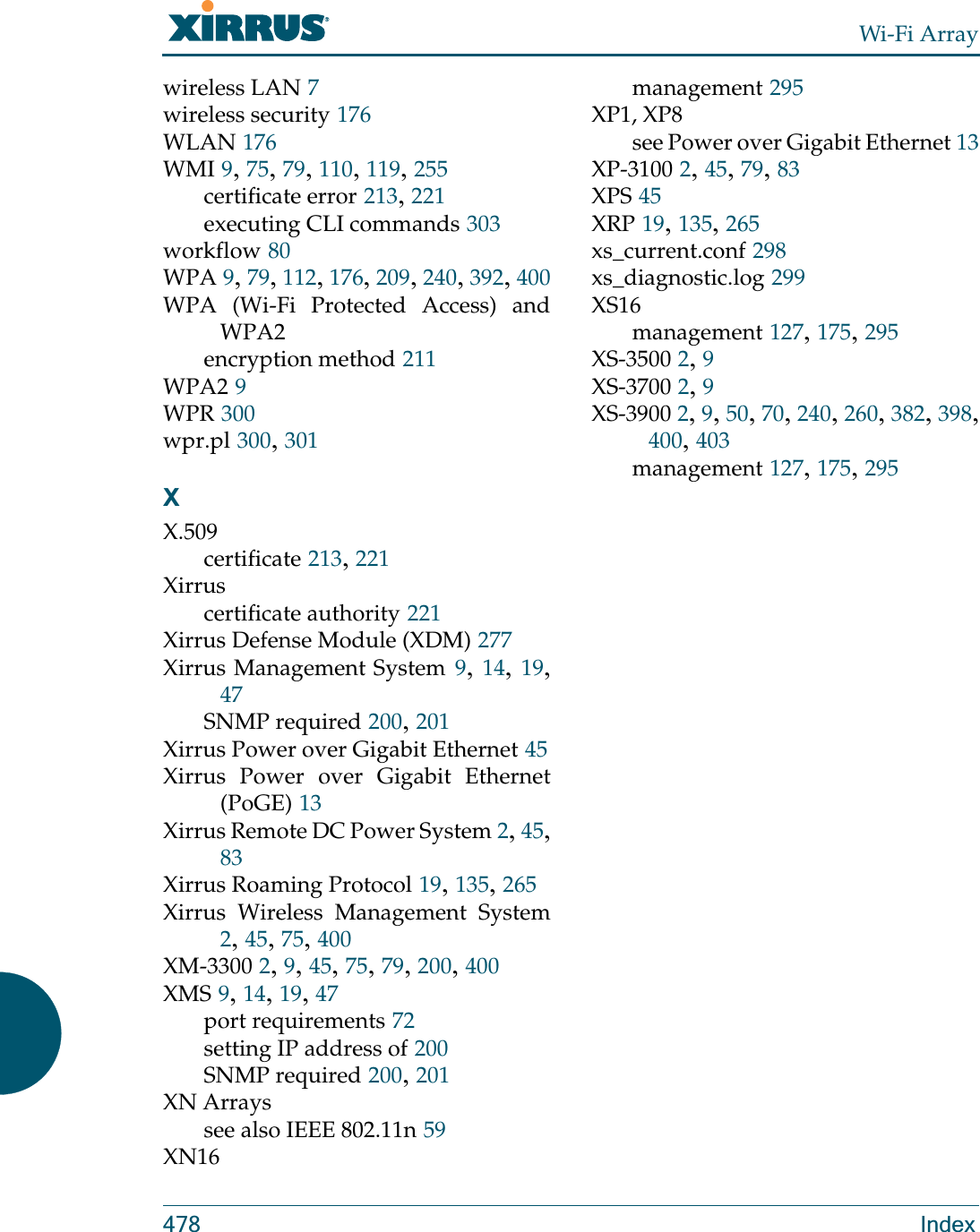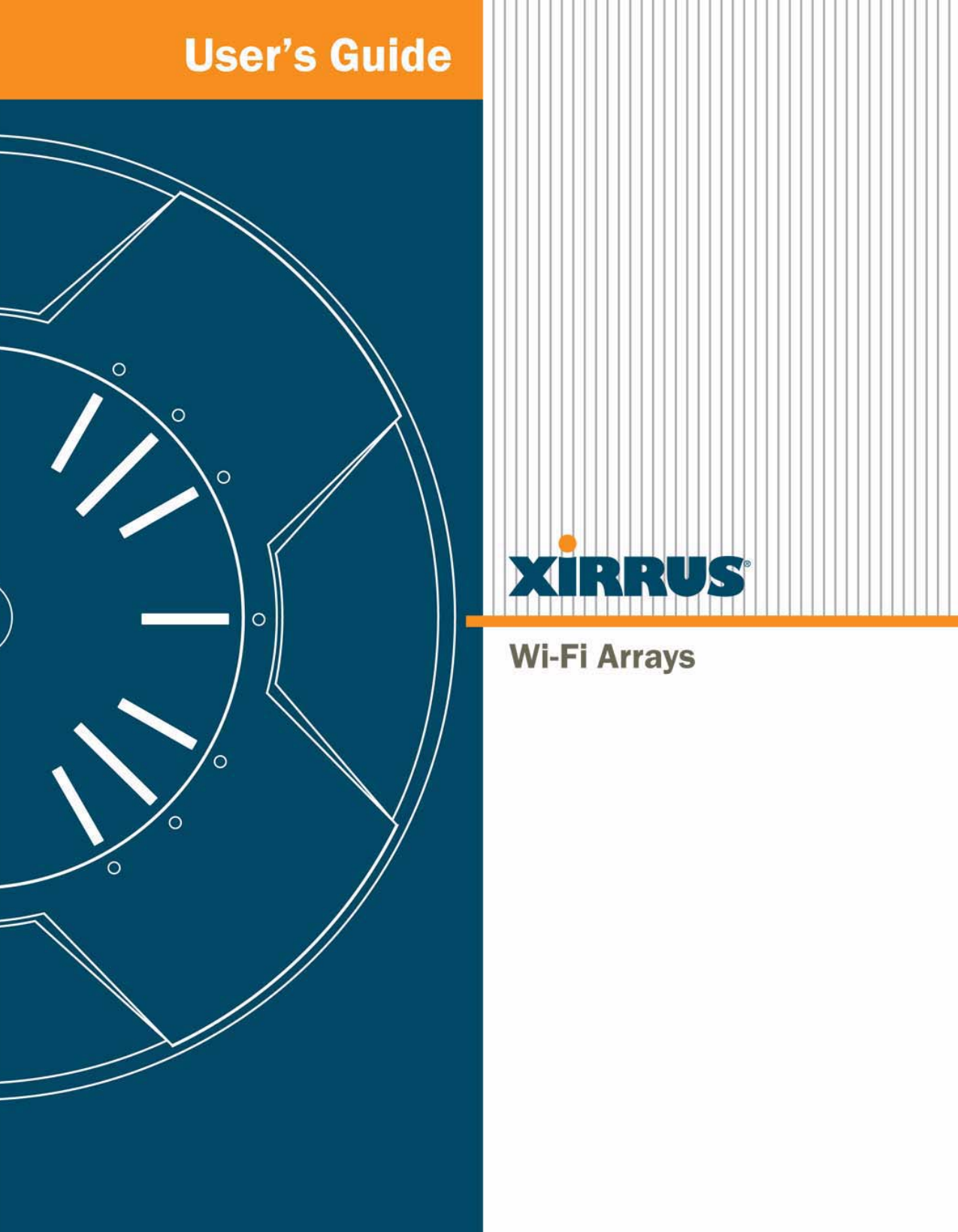Cambium Networks XN4 Wireless LAN Array User Manual xirrus PDF
Xirrus, Inc. Wireless LAN Array xirrus PDF
Contents
- 1. User Manual 1
- 2. User Manual 2
- 3. User Manual 3
- 4. ArrayGuide_Rel4.0_RevW-part 1 of 2
- 5. ArrayGuide_Rel4.0_RevW-part 2 of 2
ArrayGuide_Rel4.0_RevW-part 2 of 2
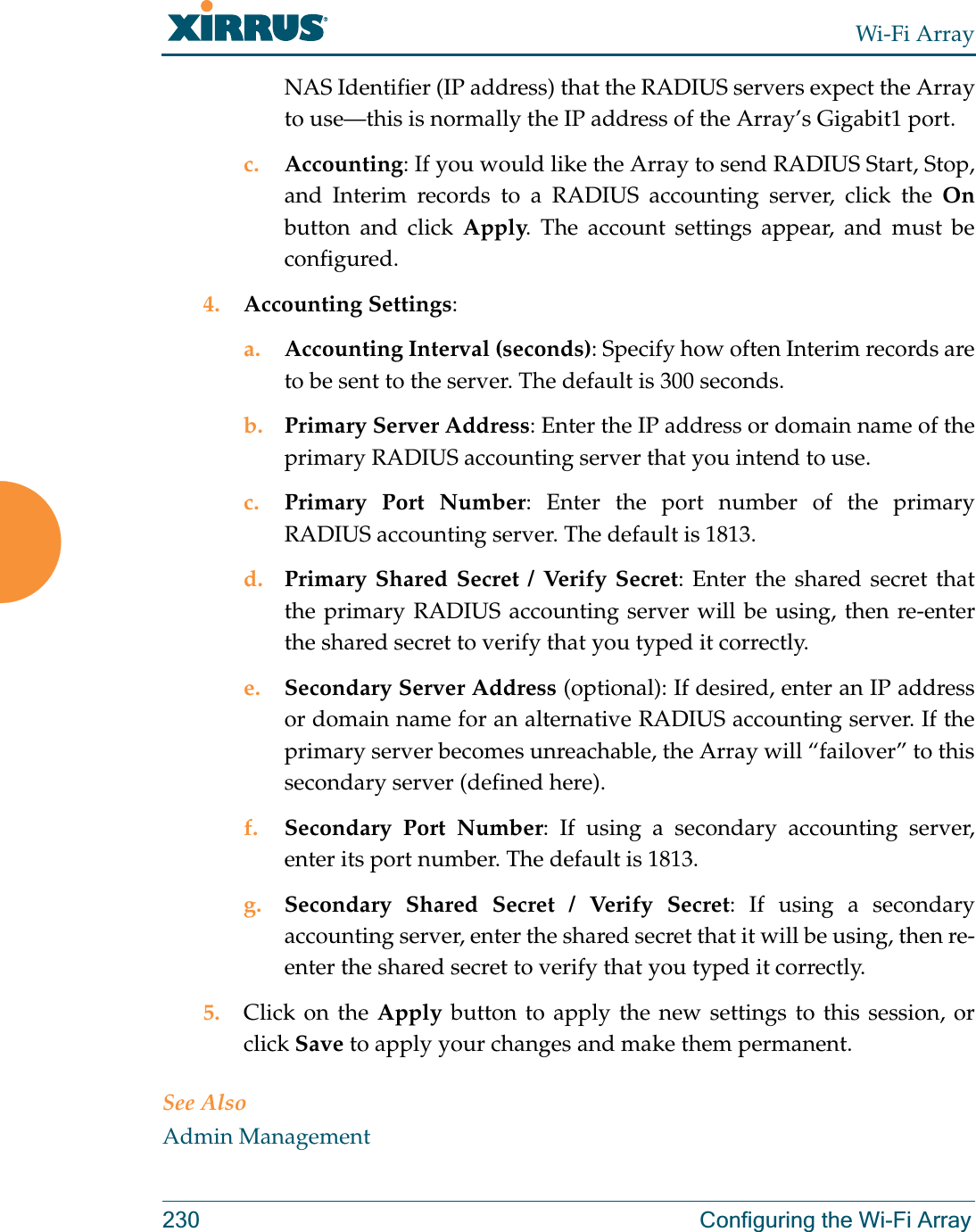
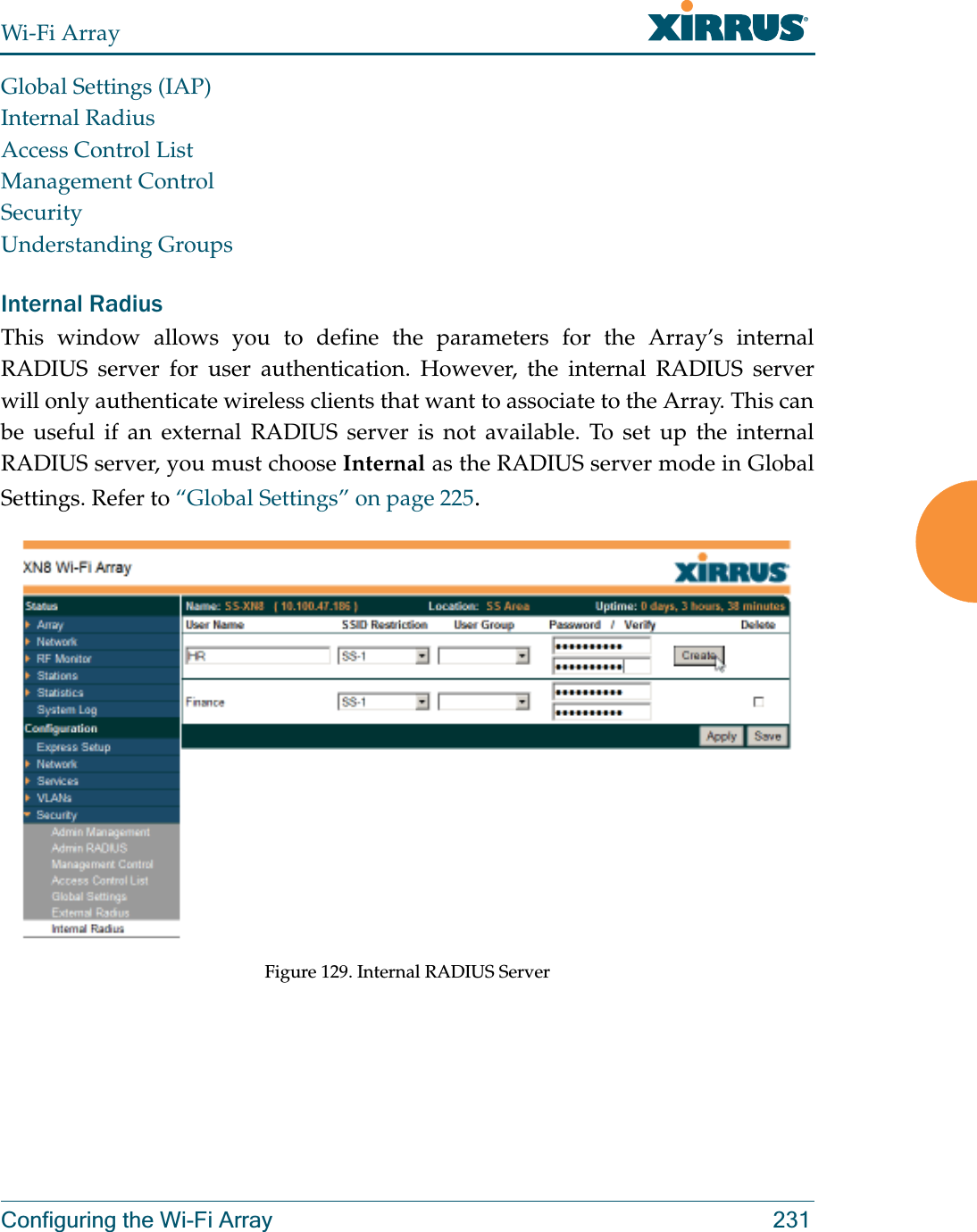
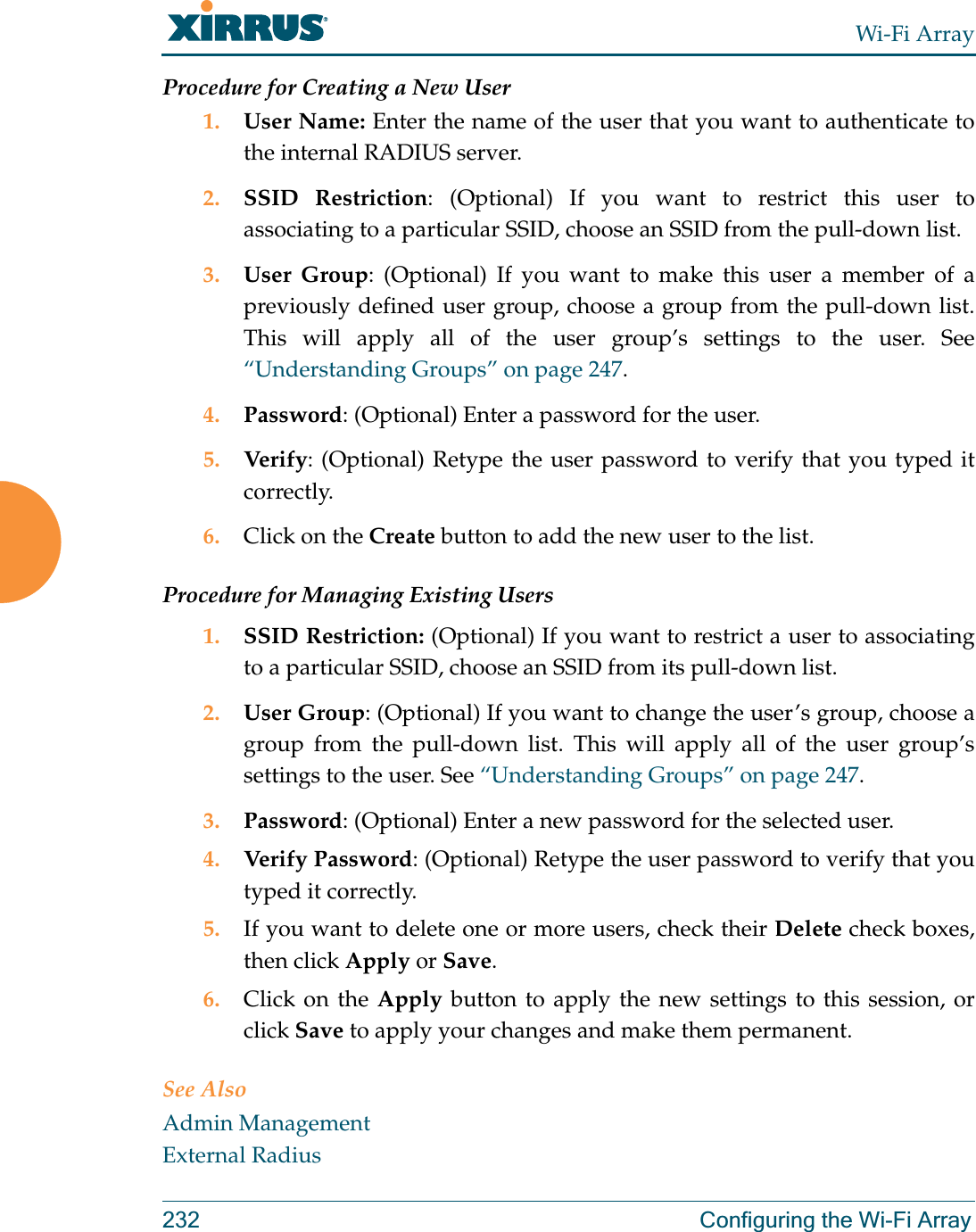
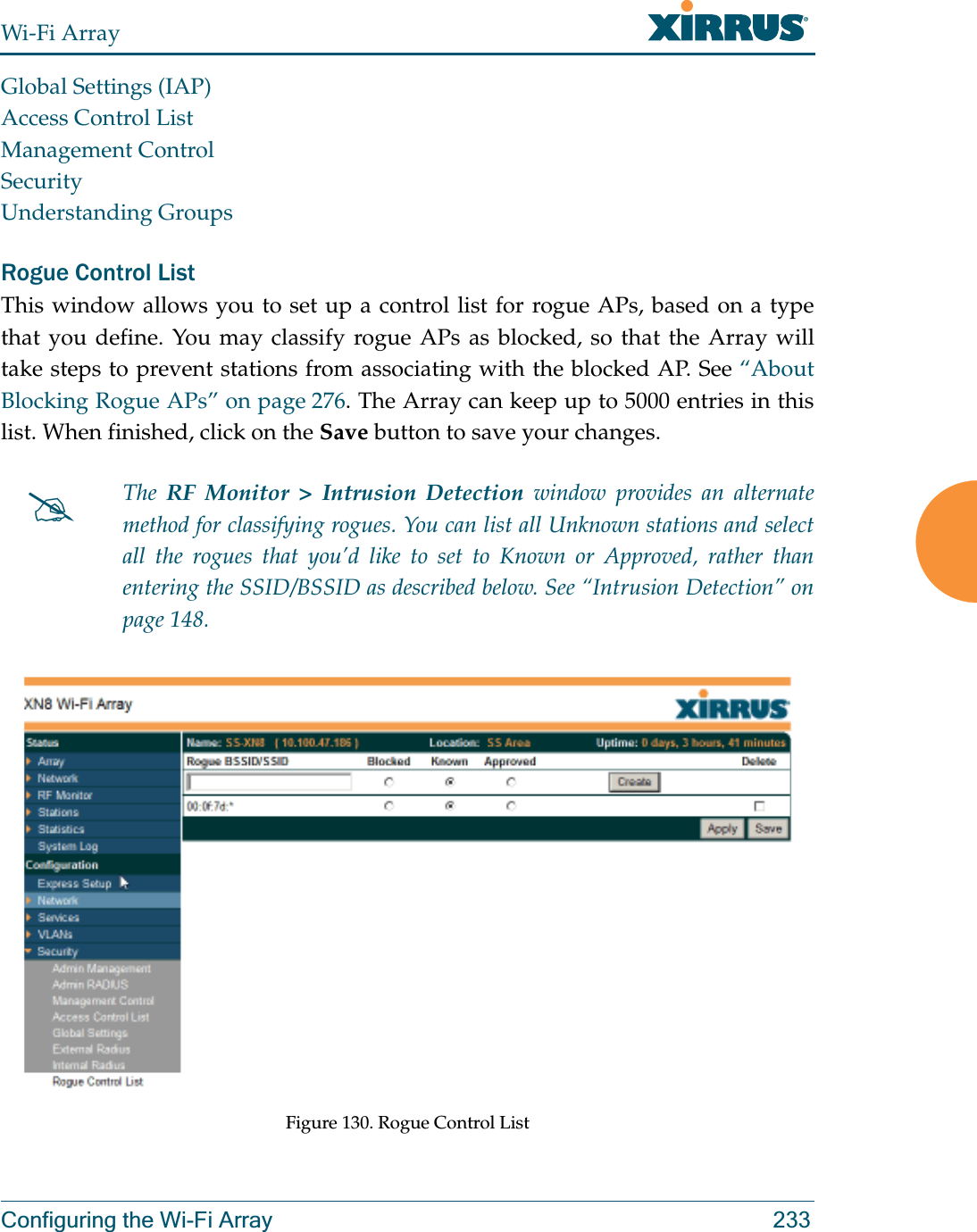
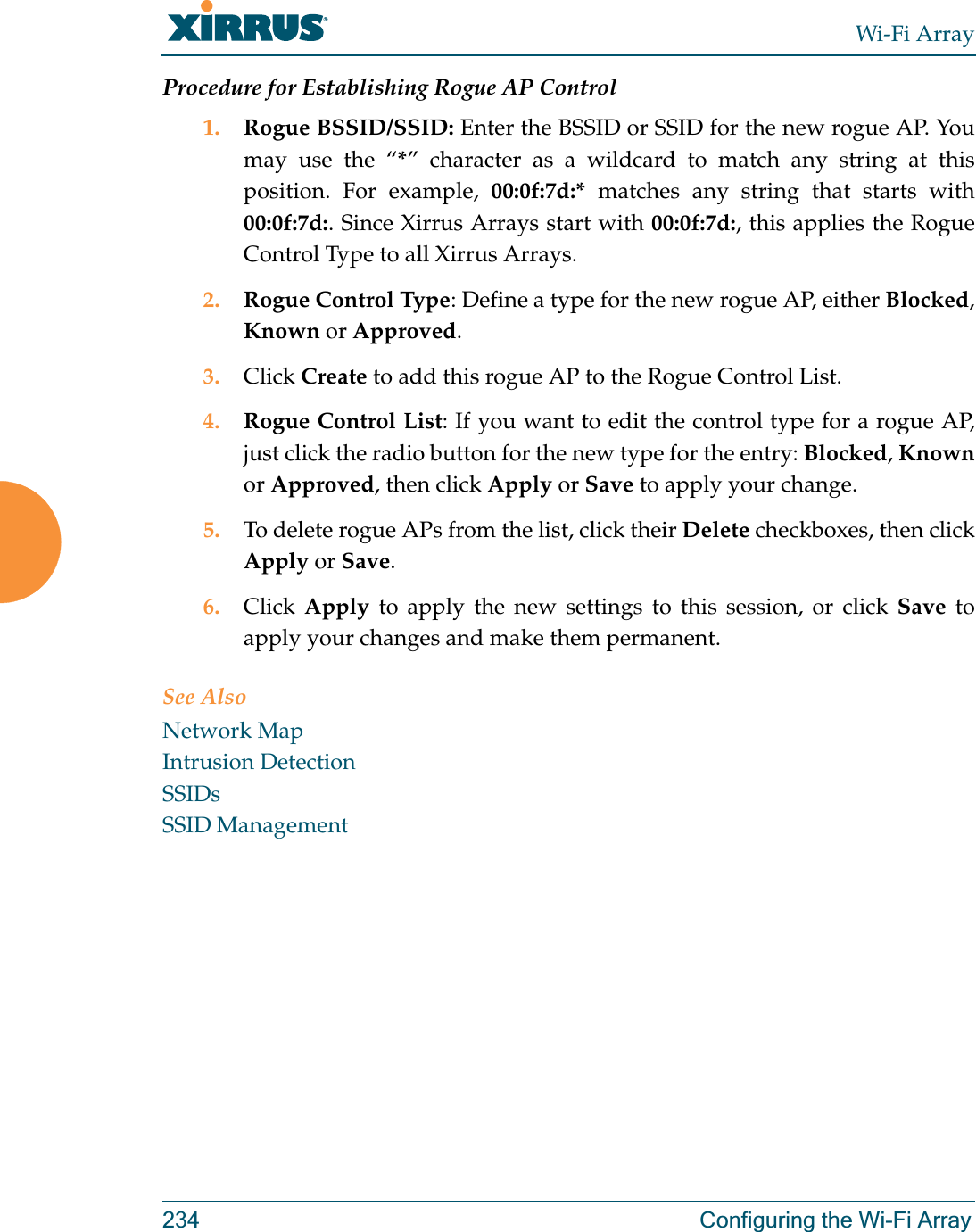
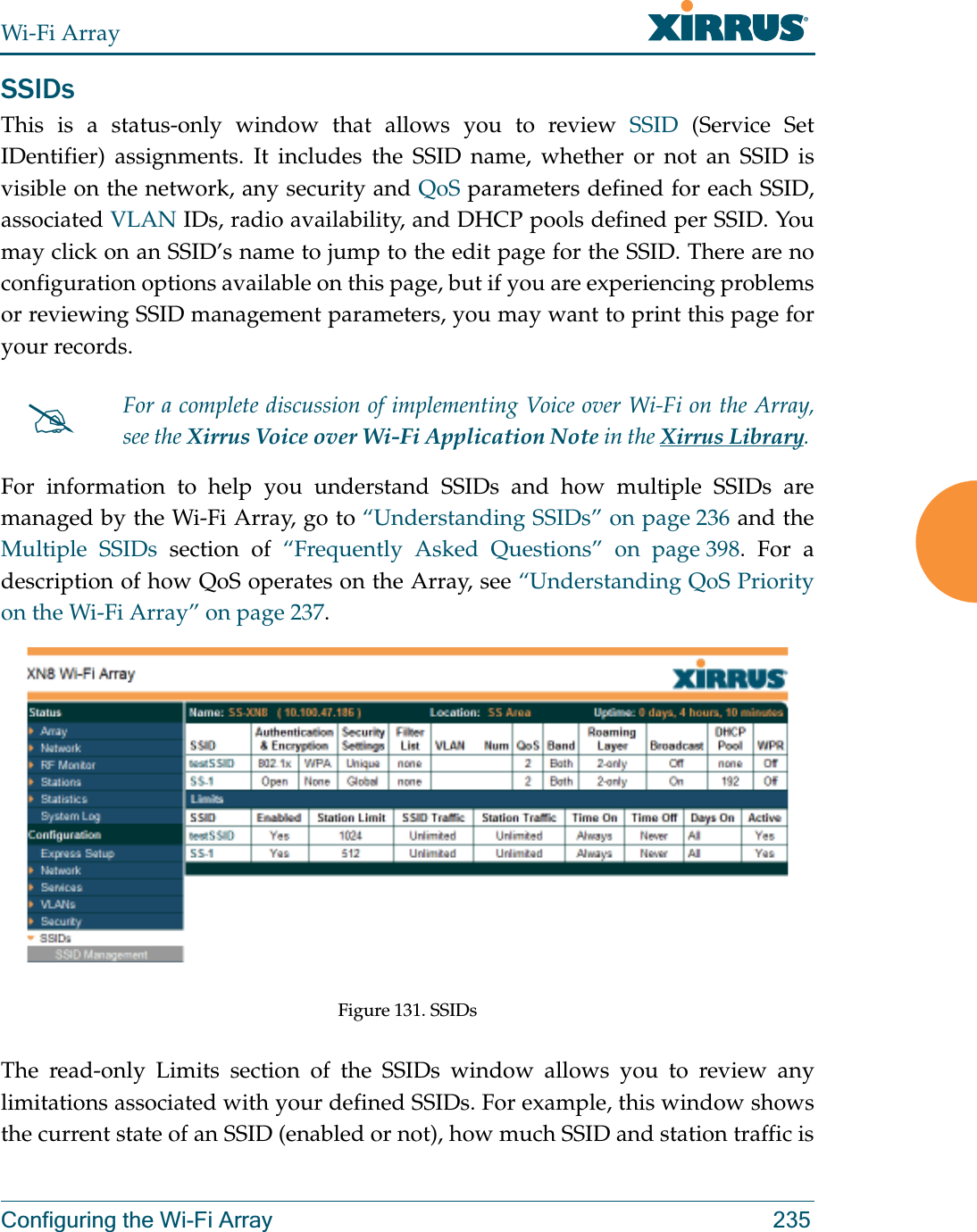
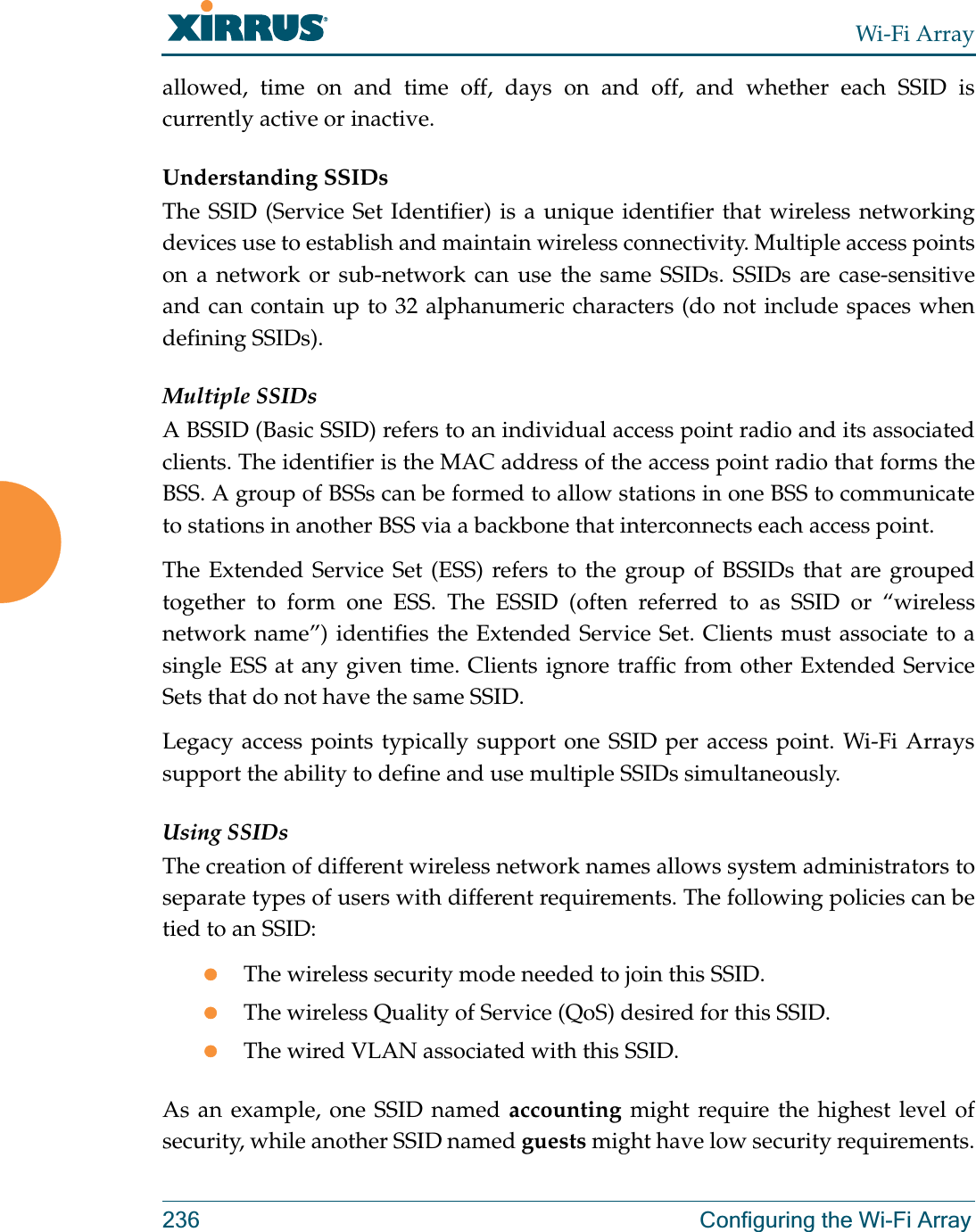
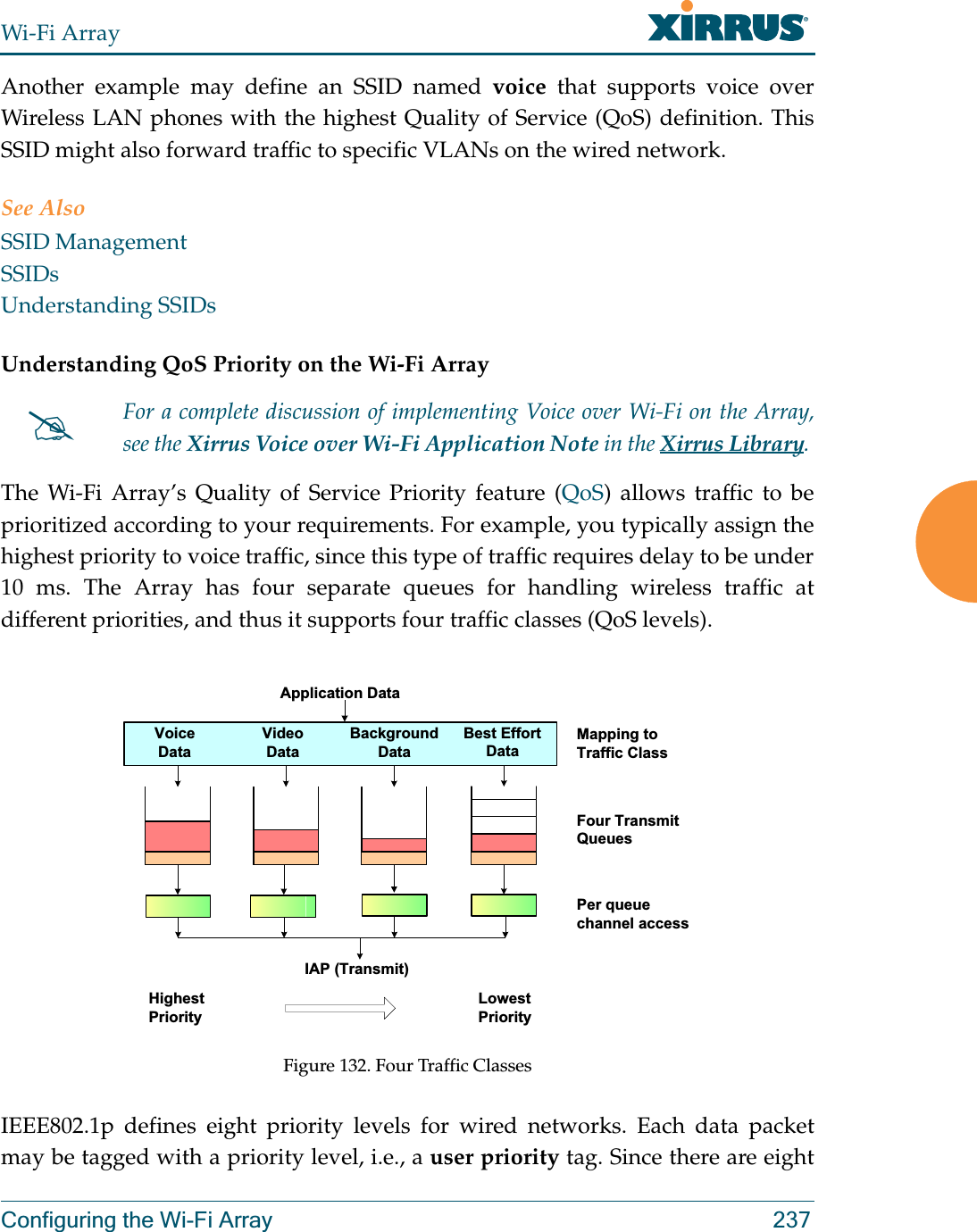
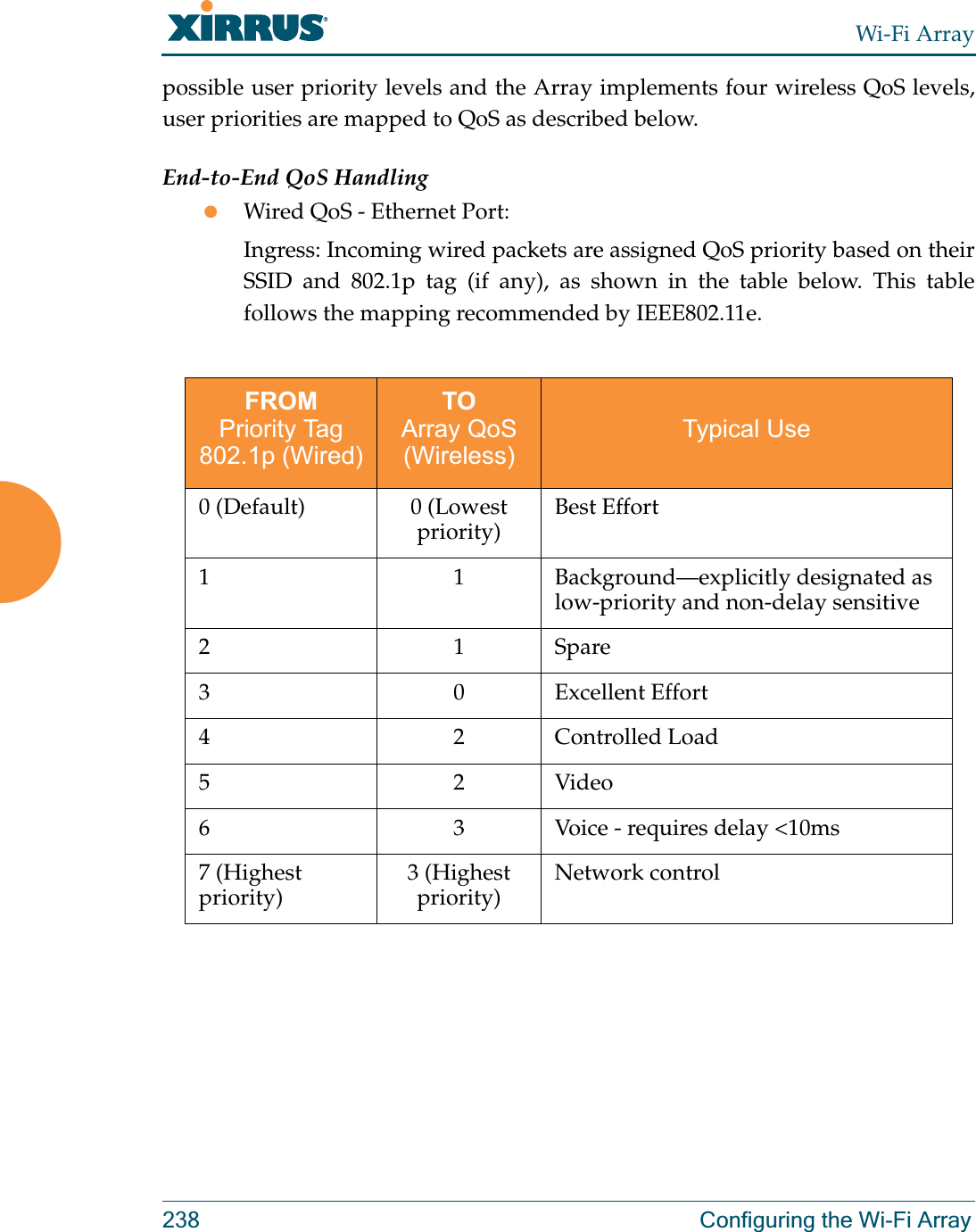
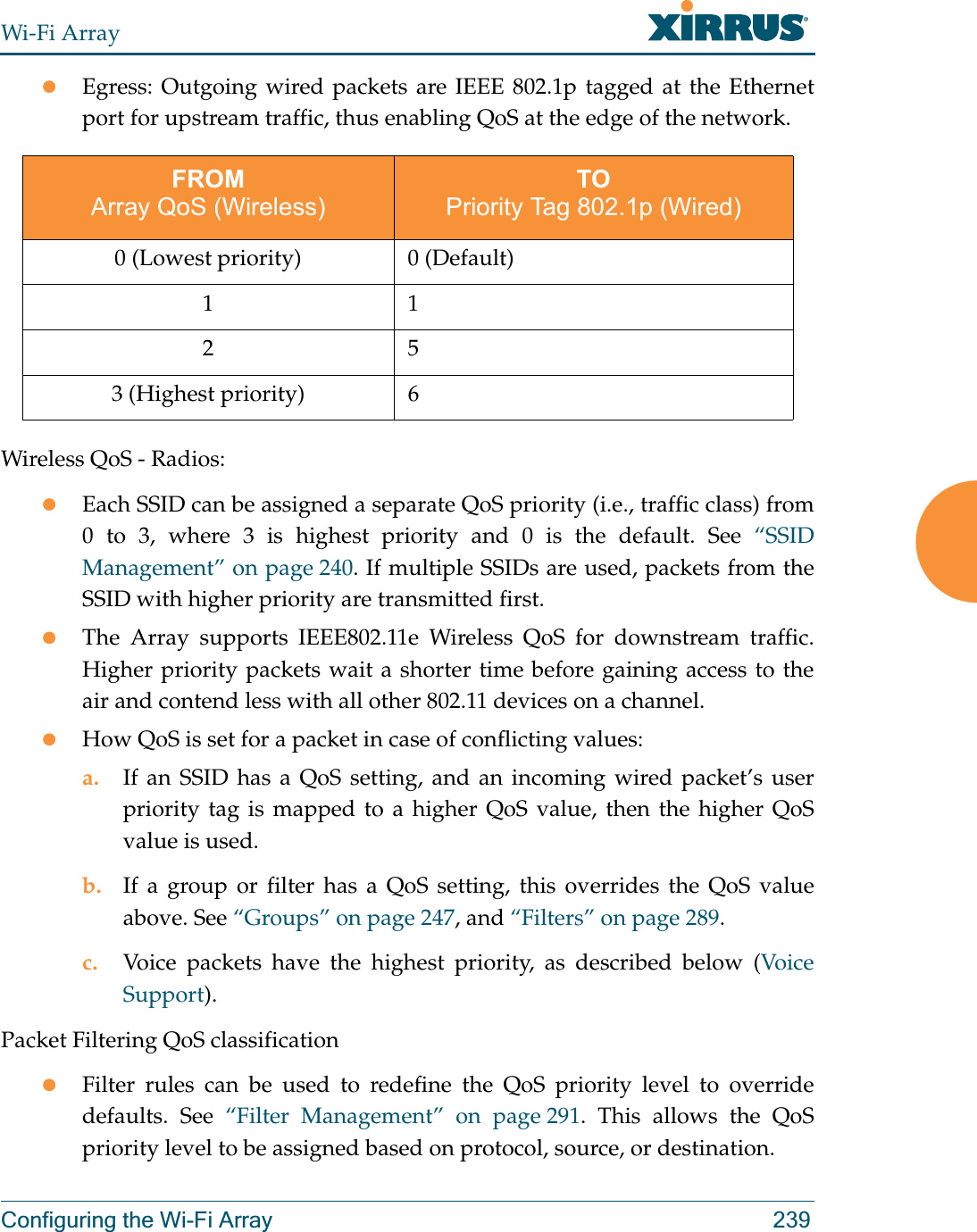
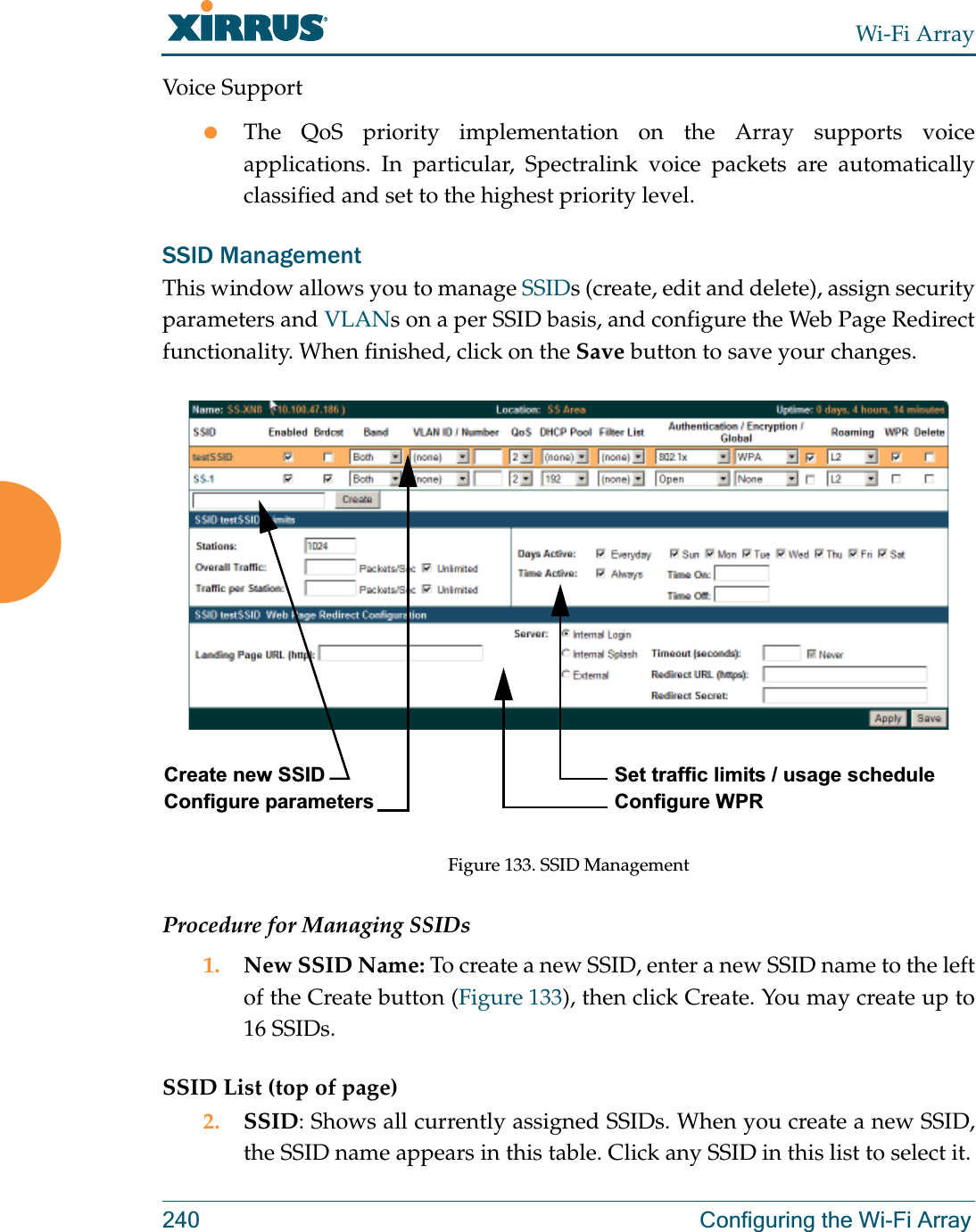
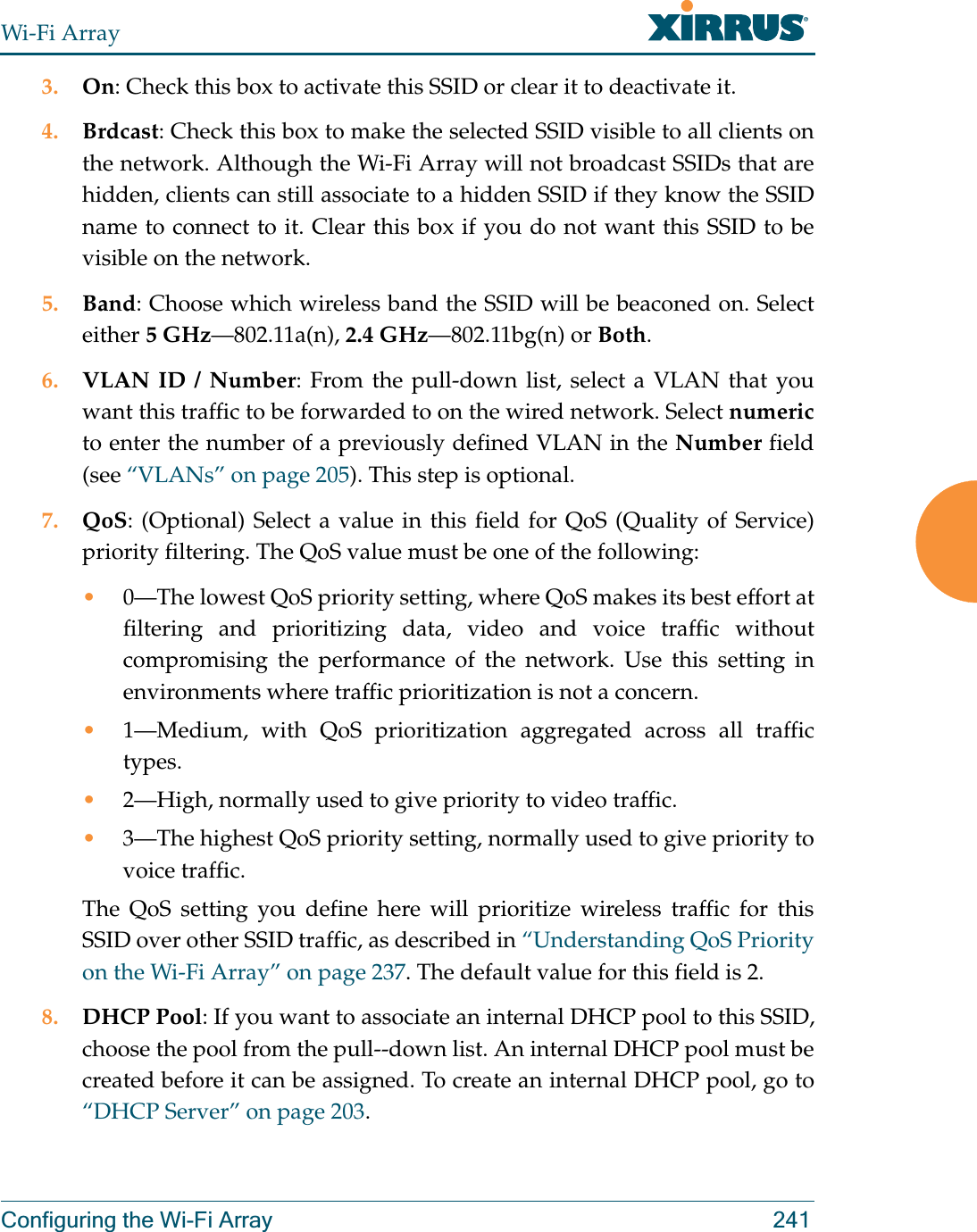
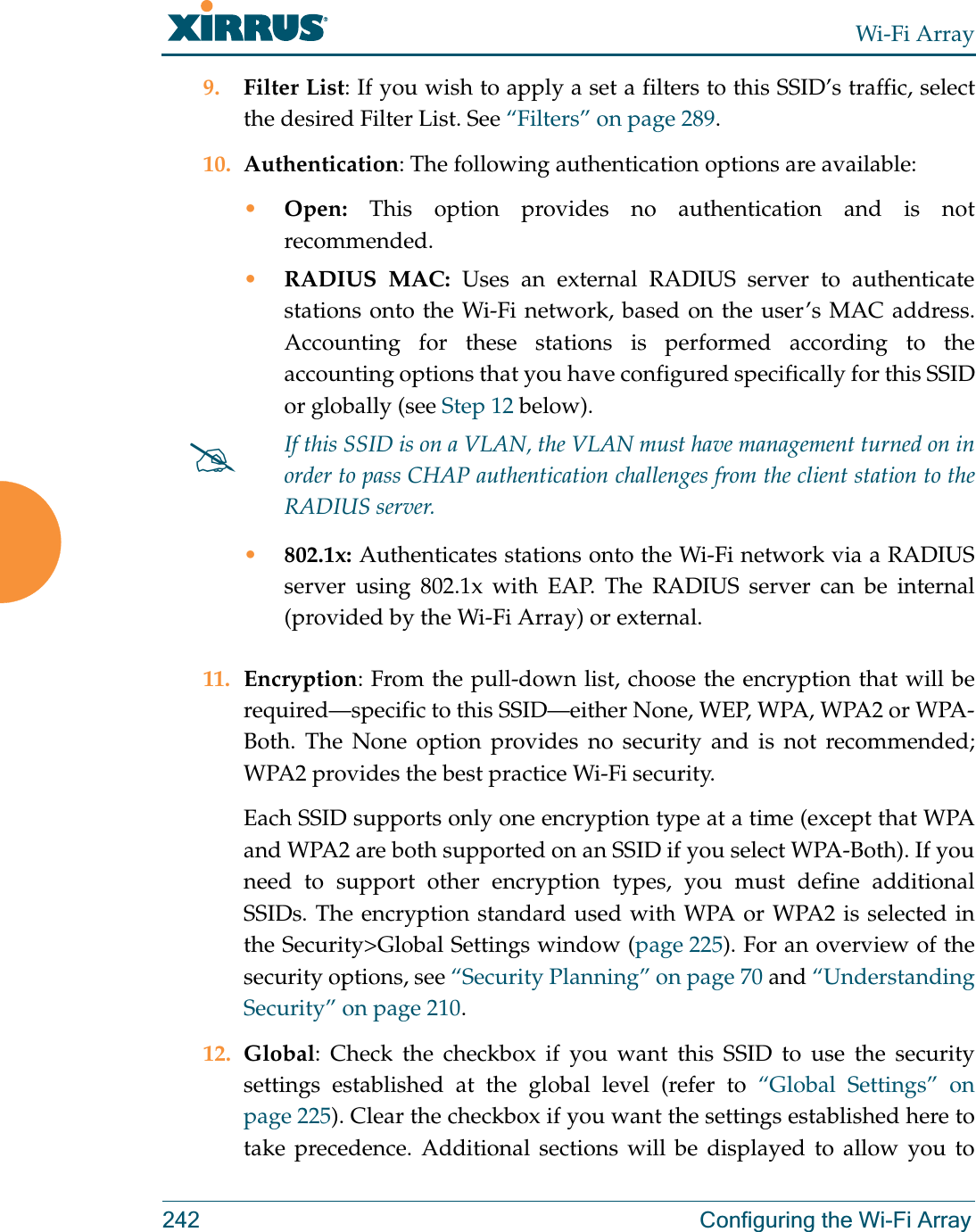
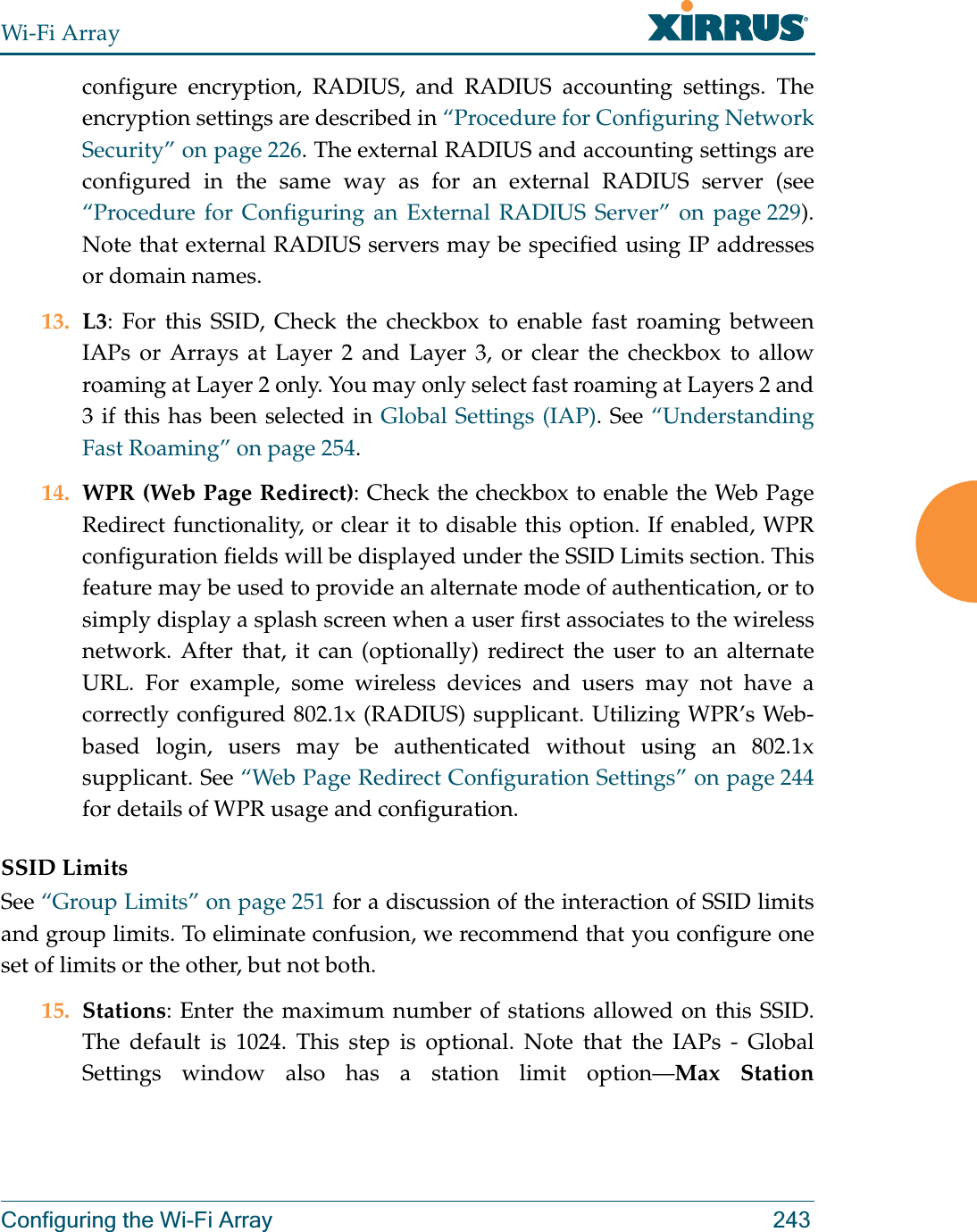
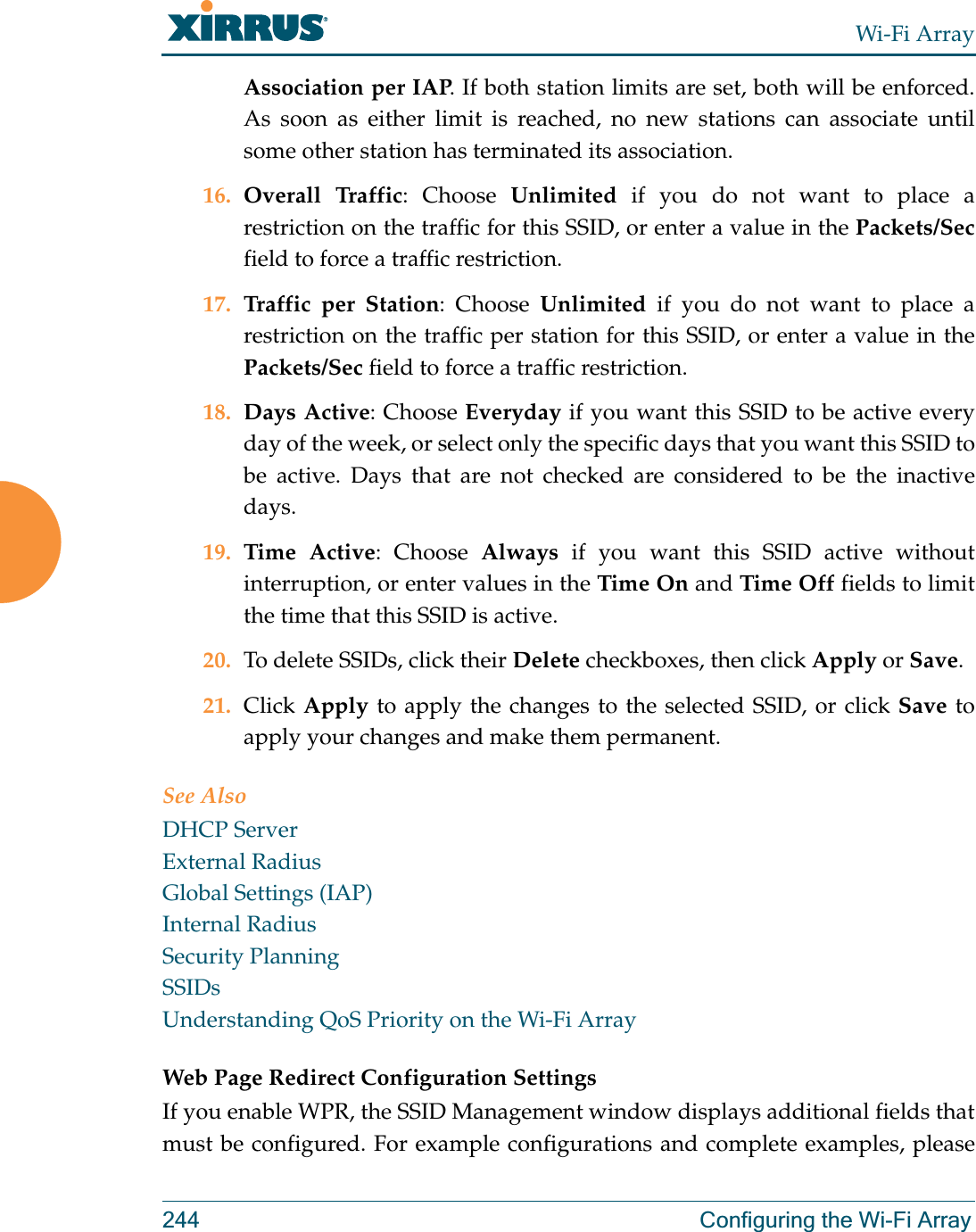
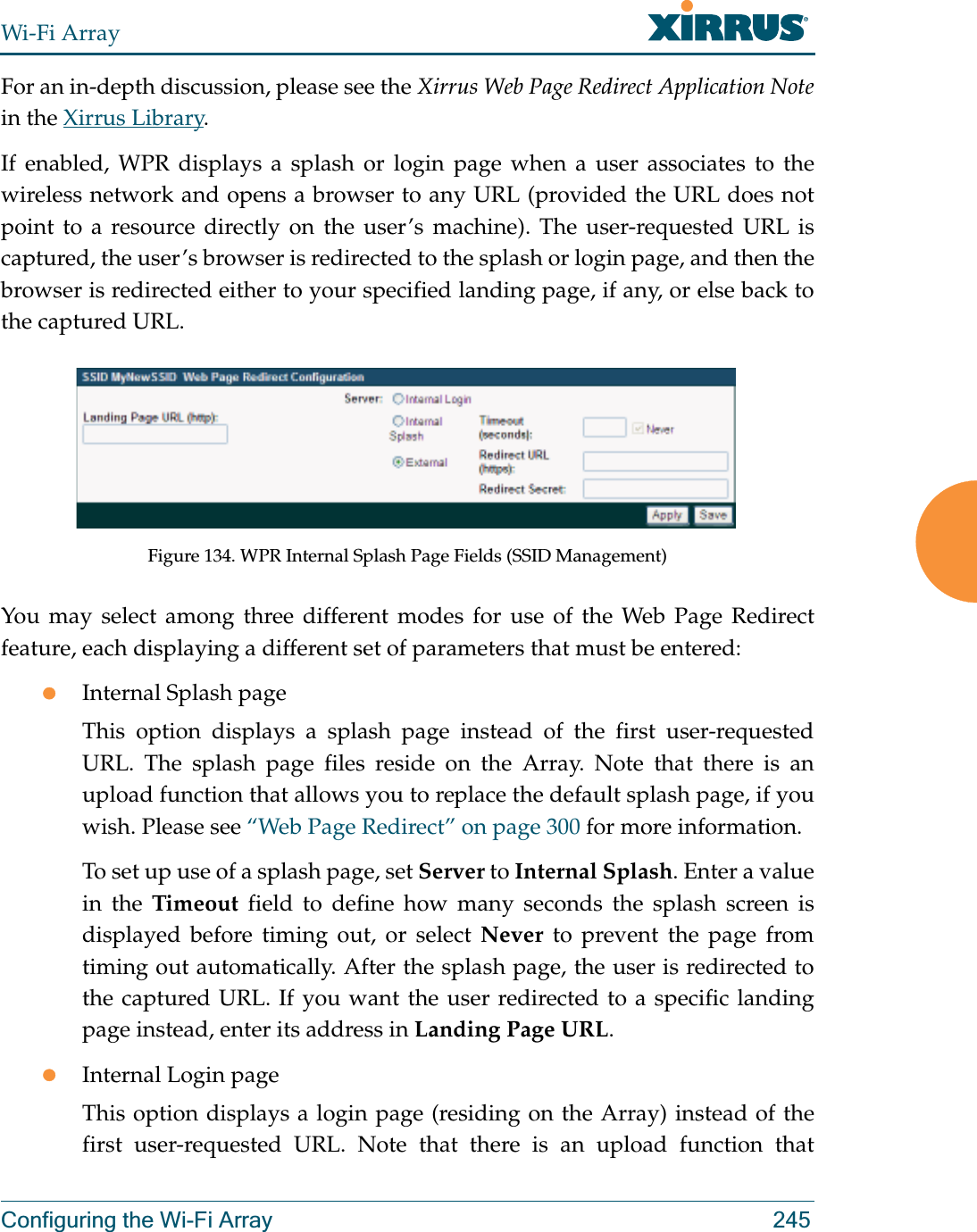
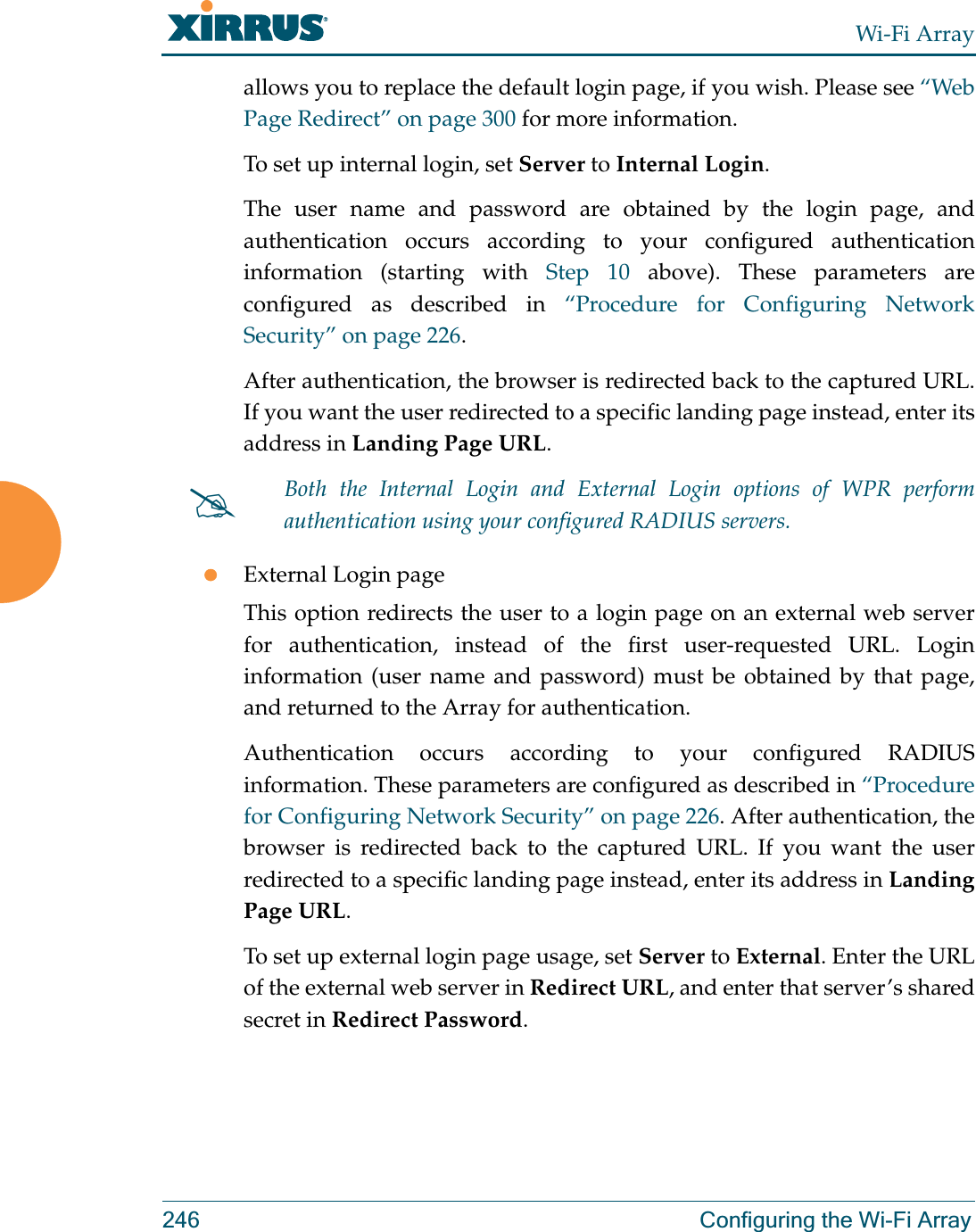
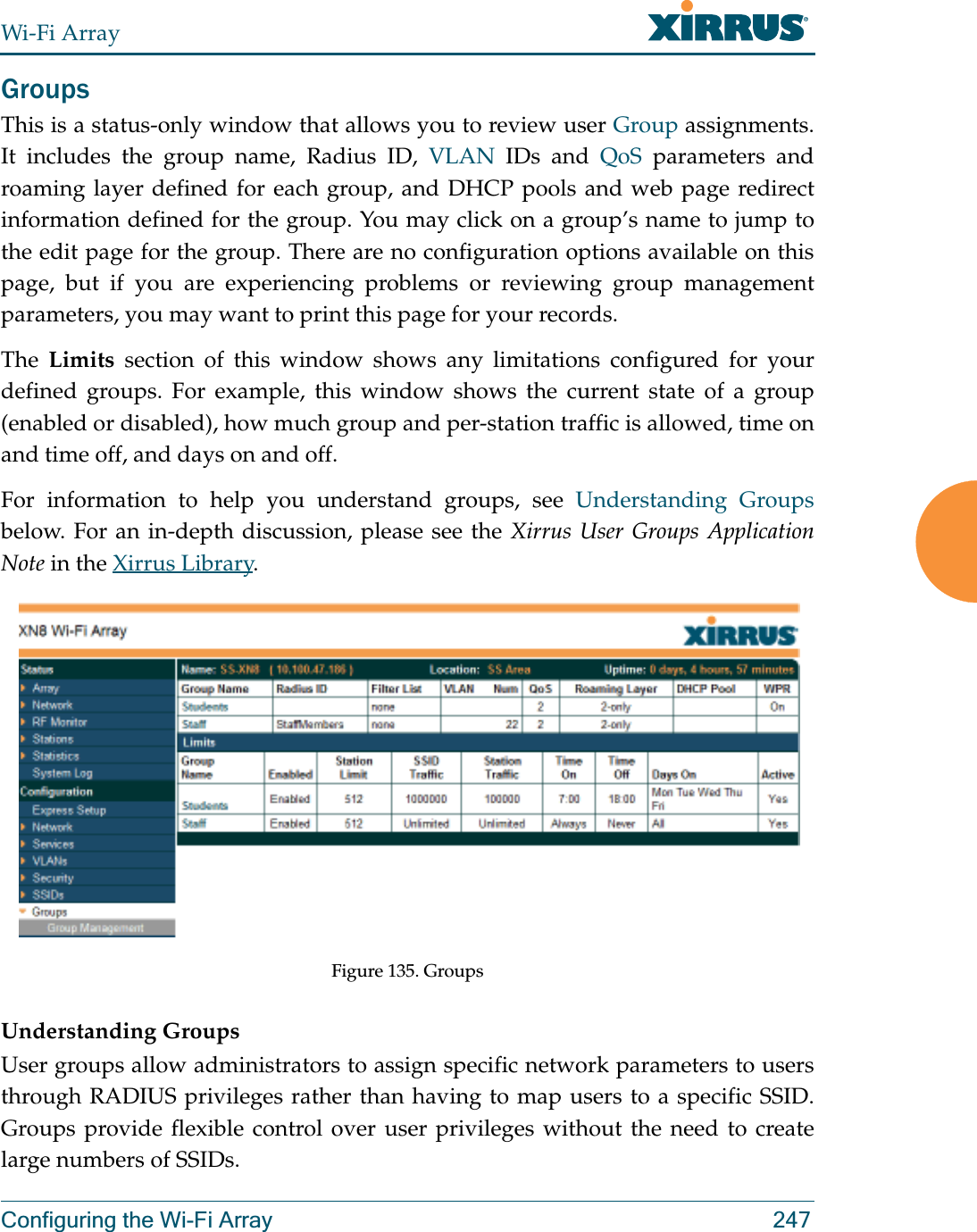
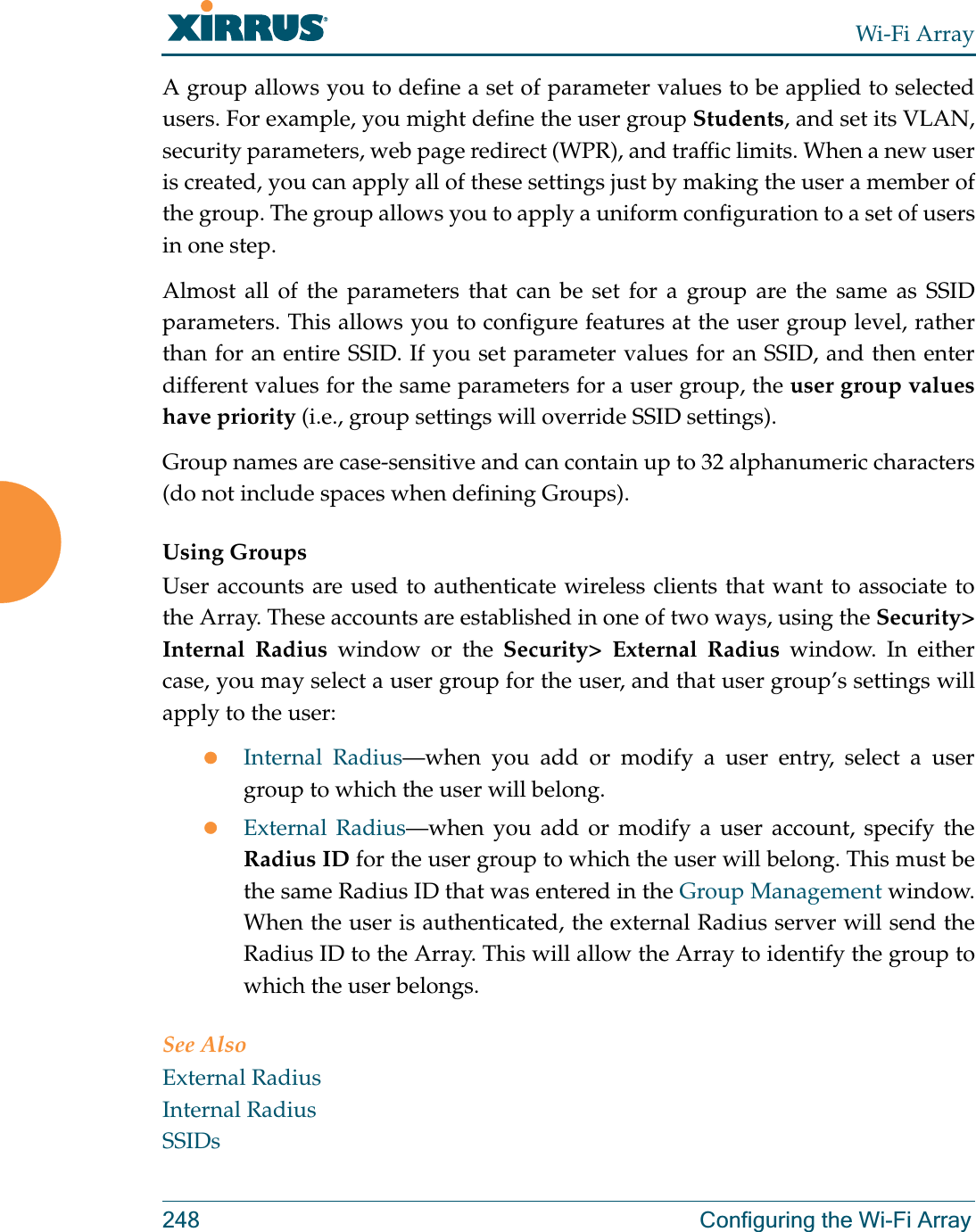
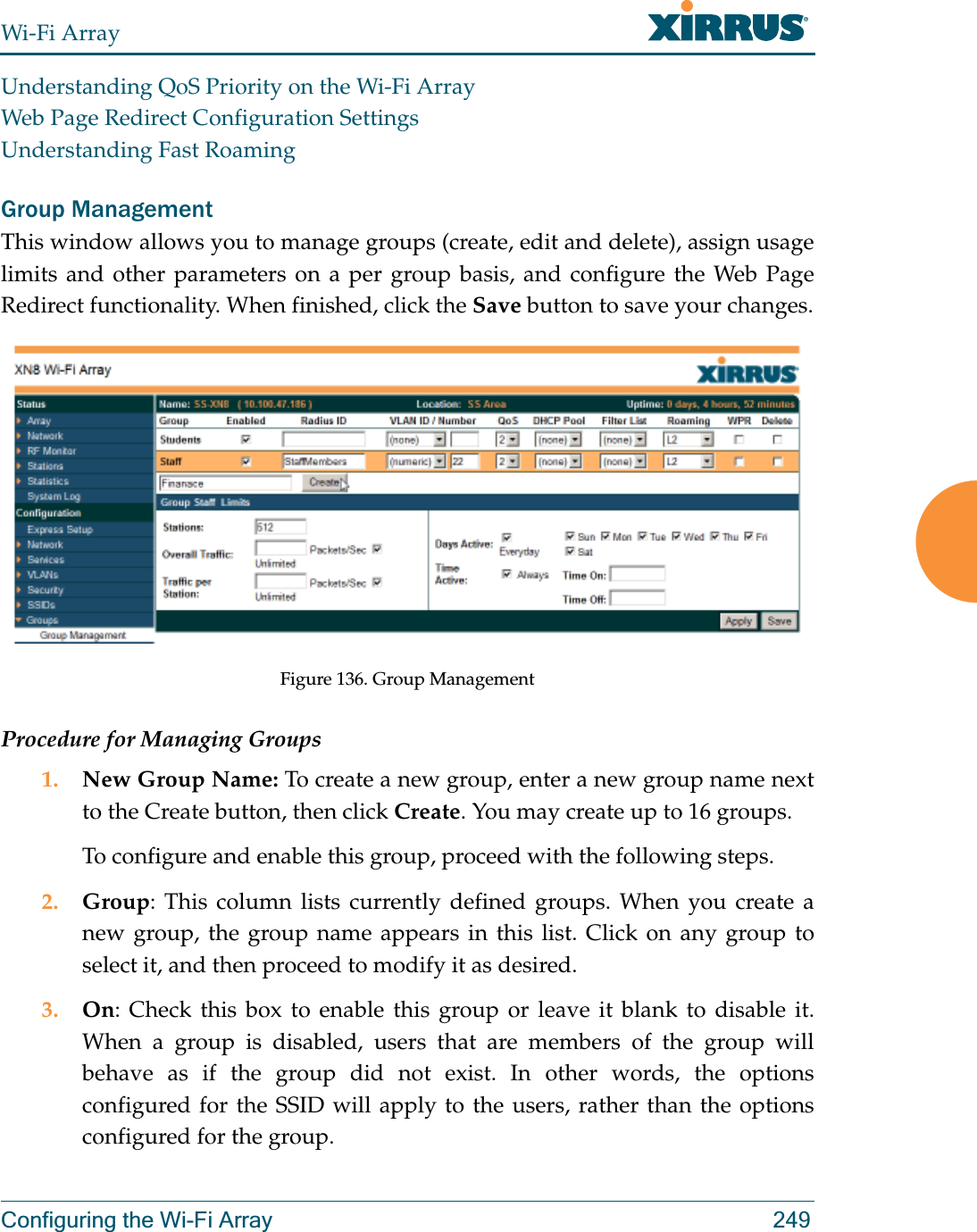
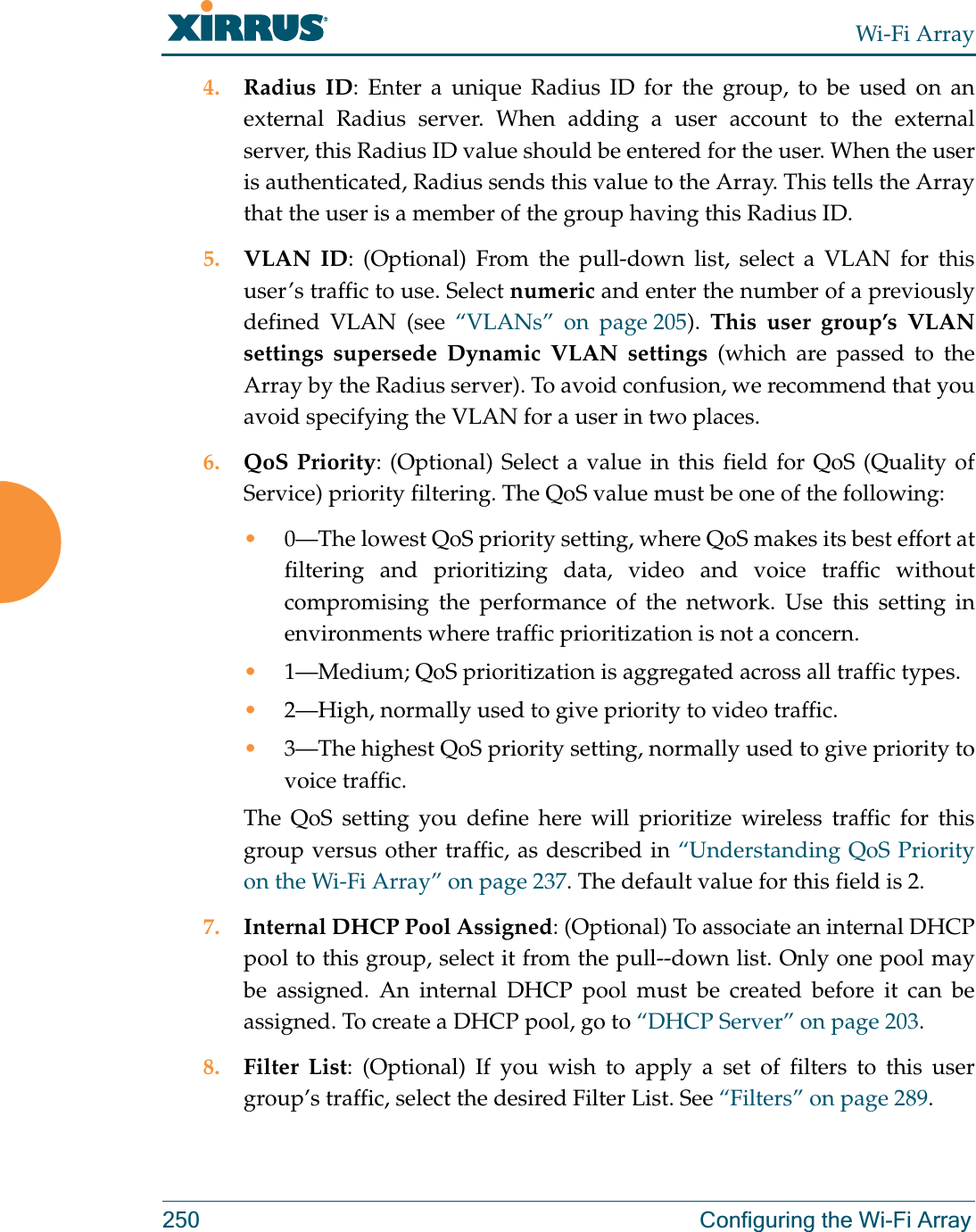
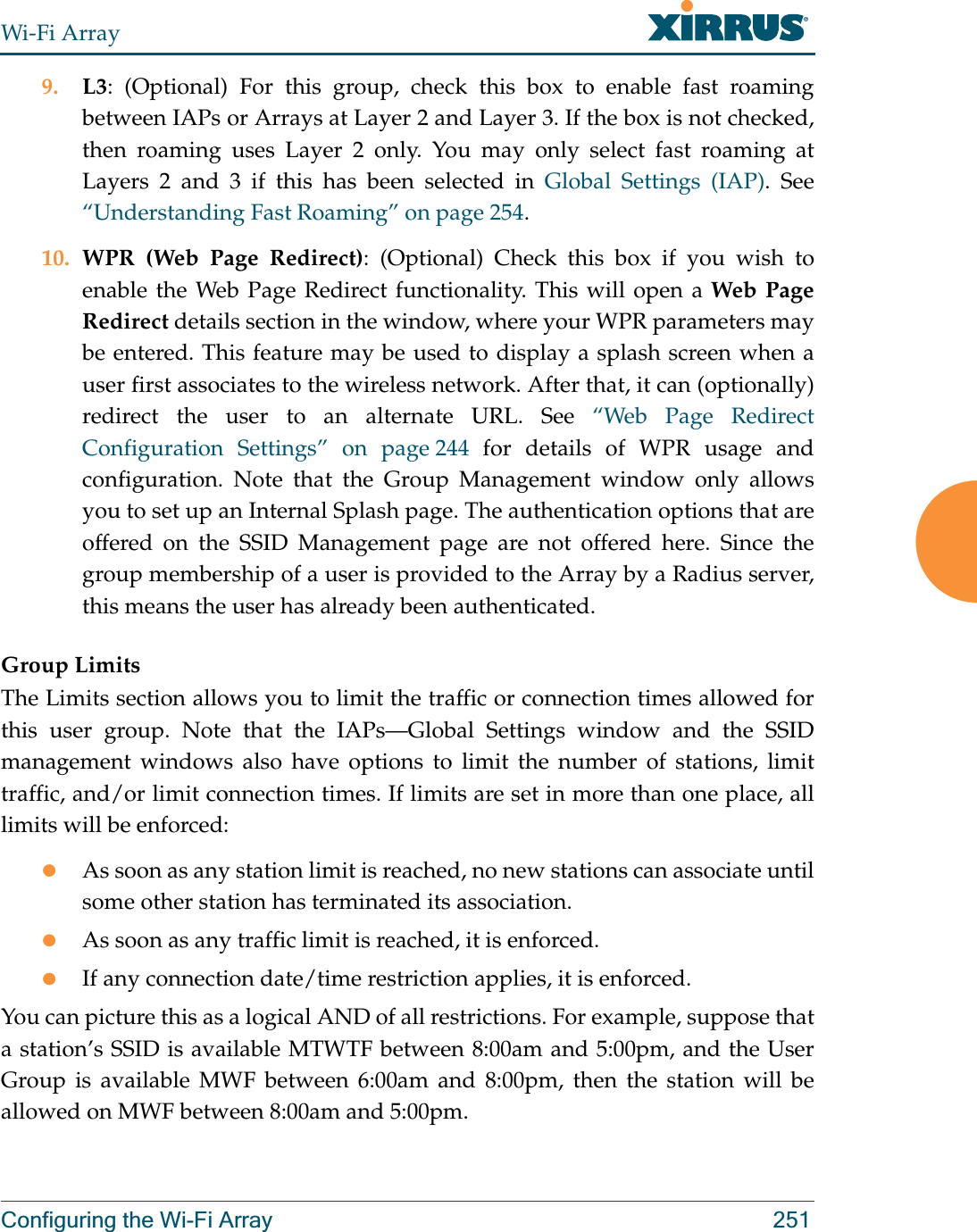
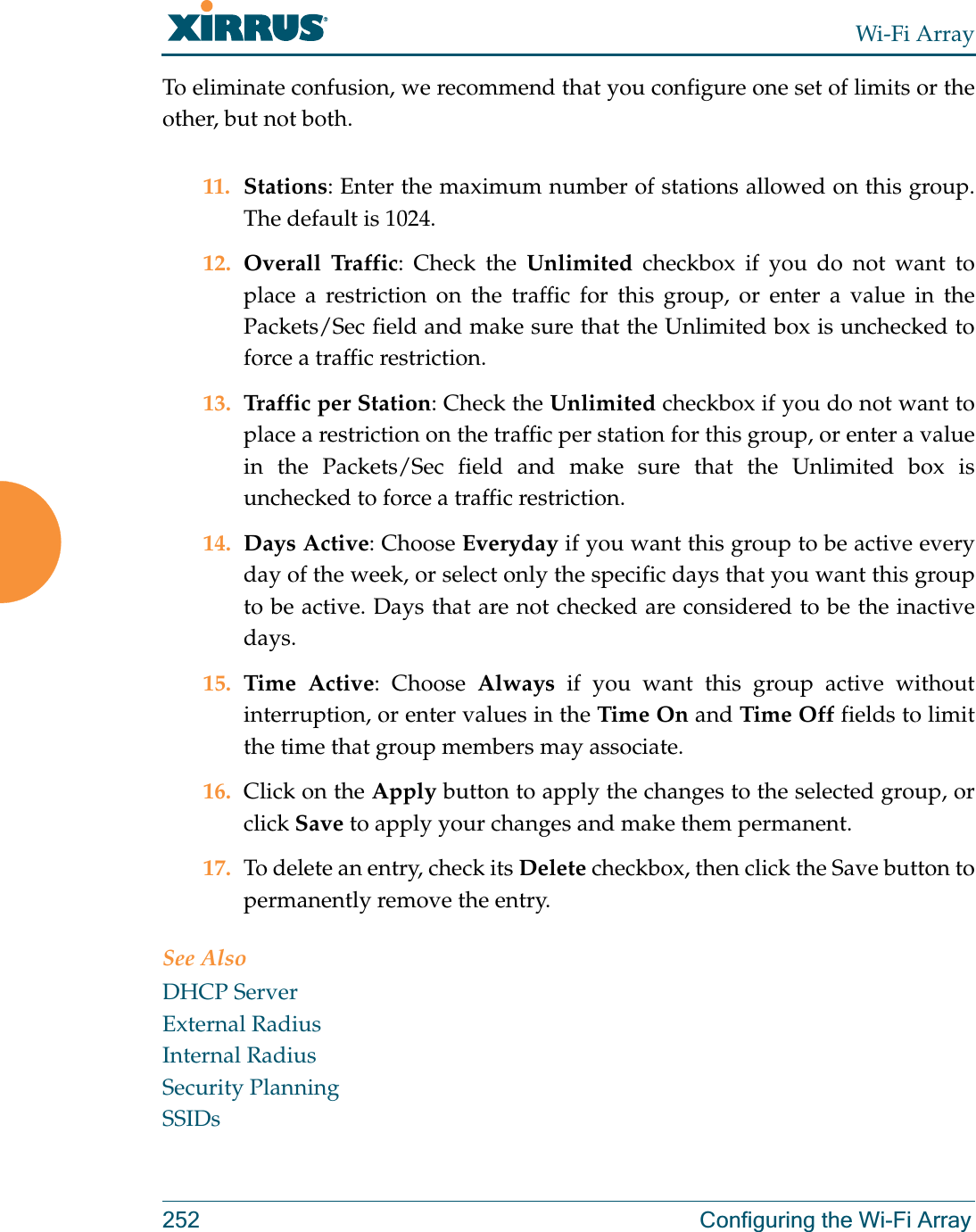
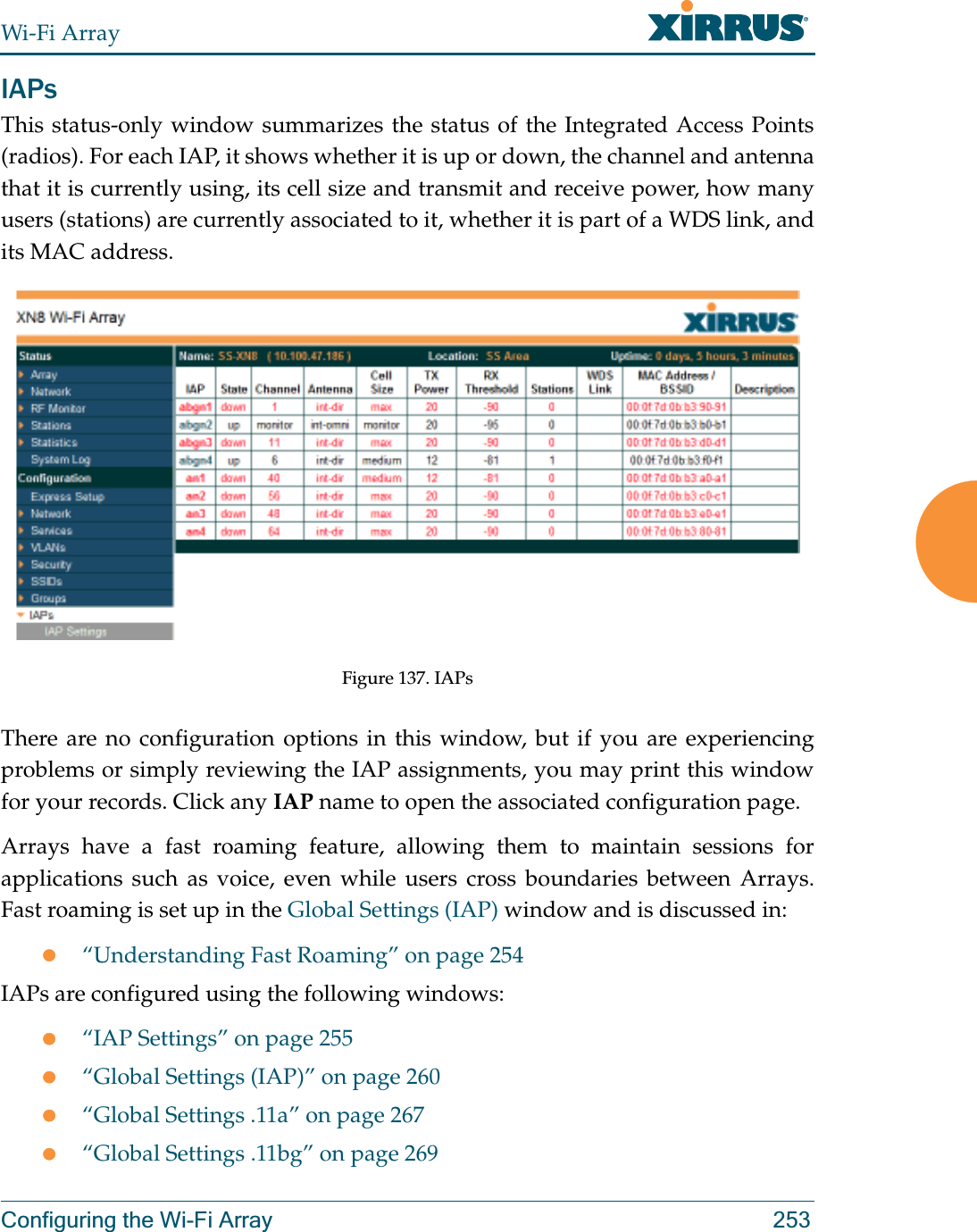
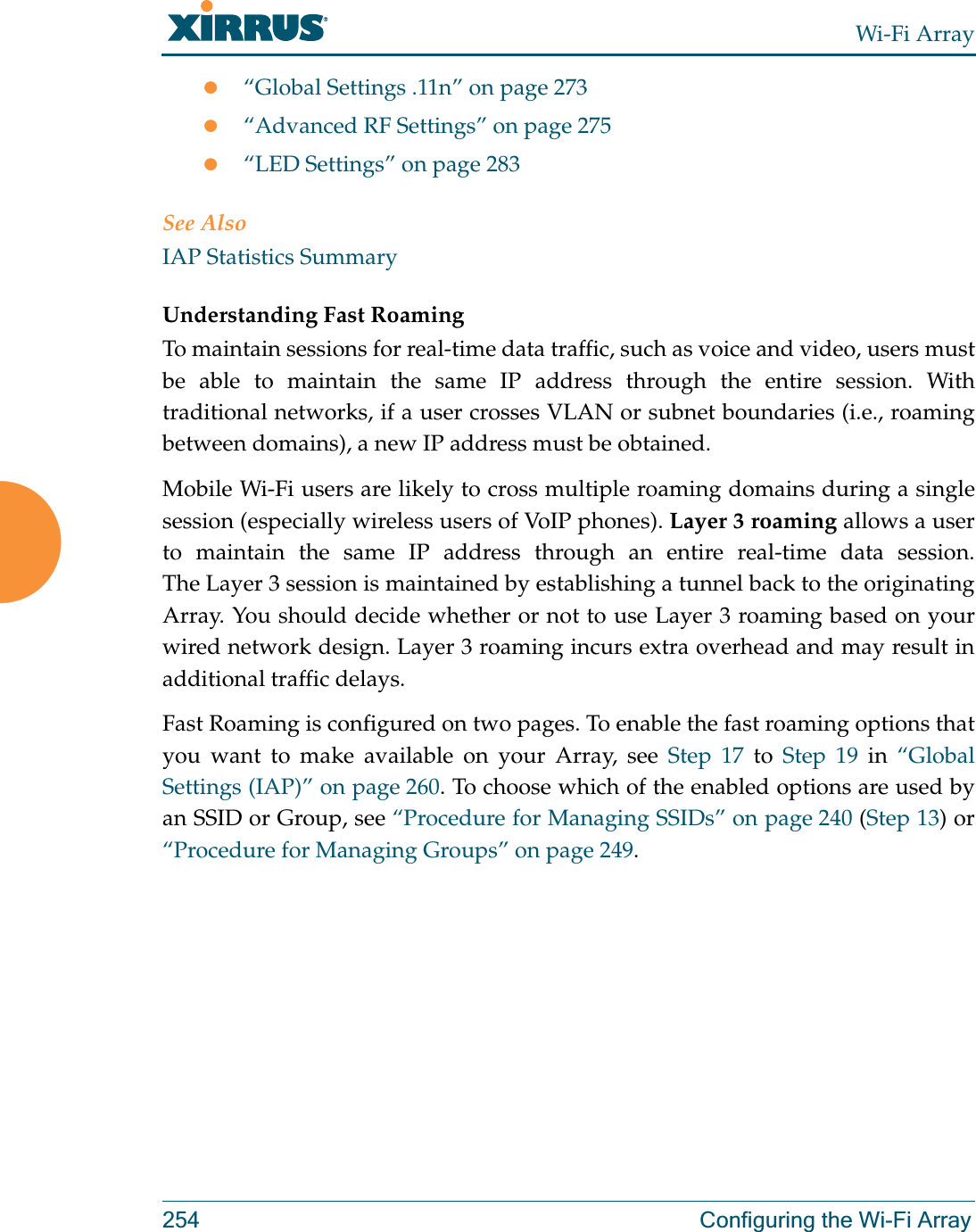
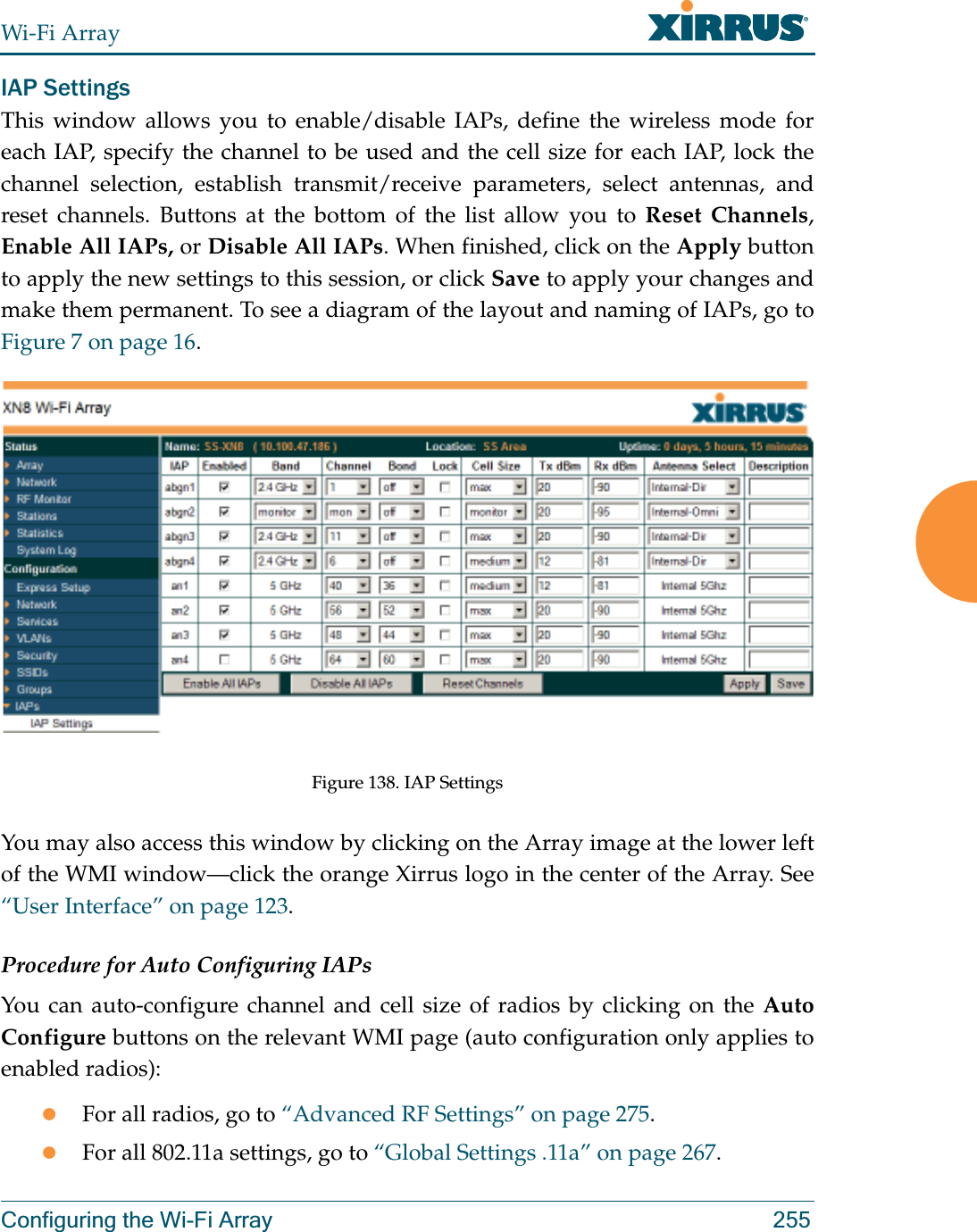
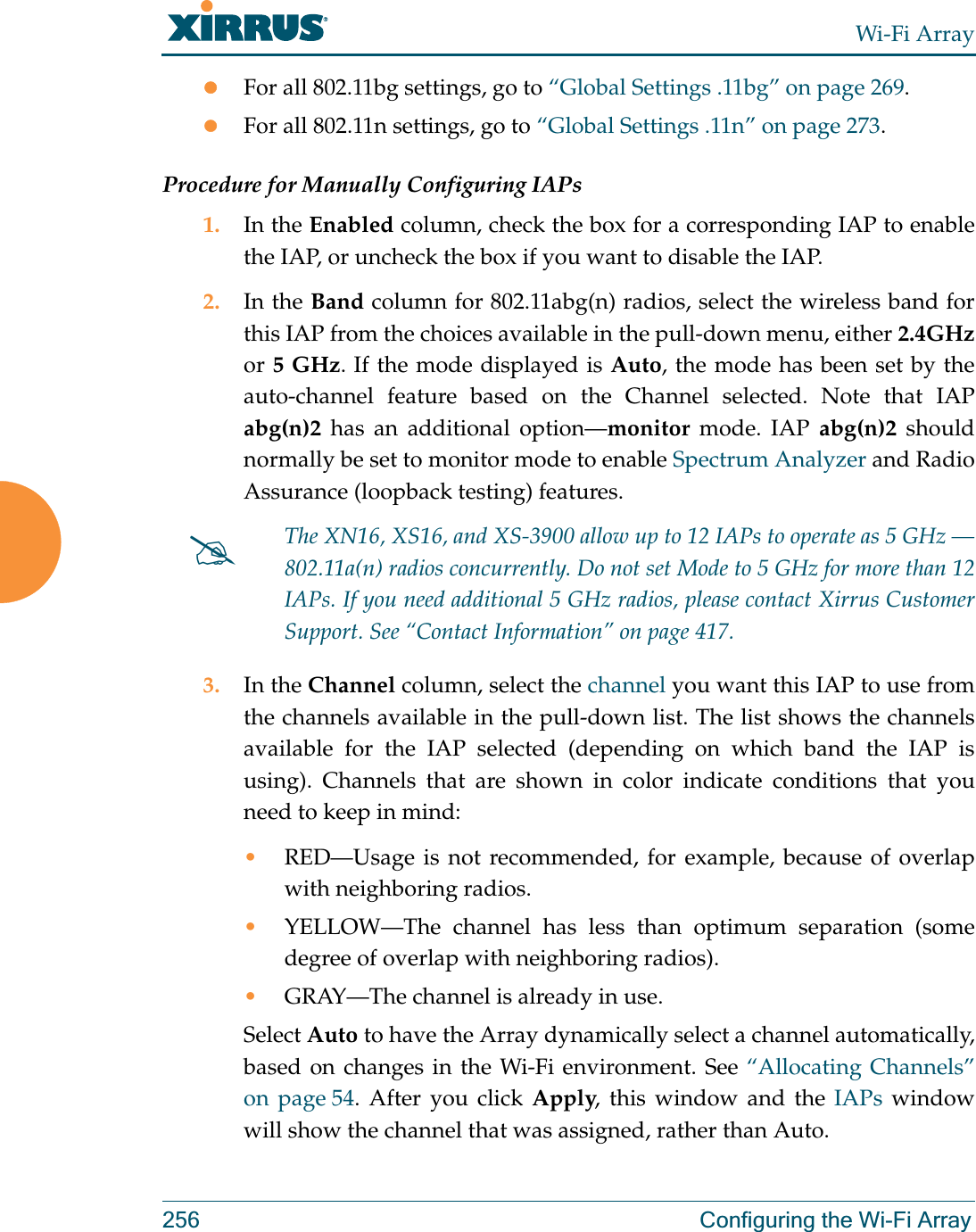
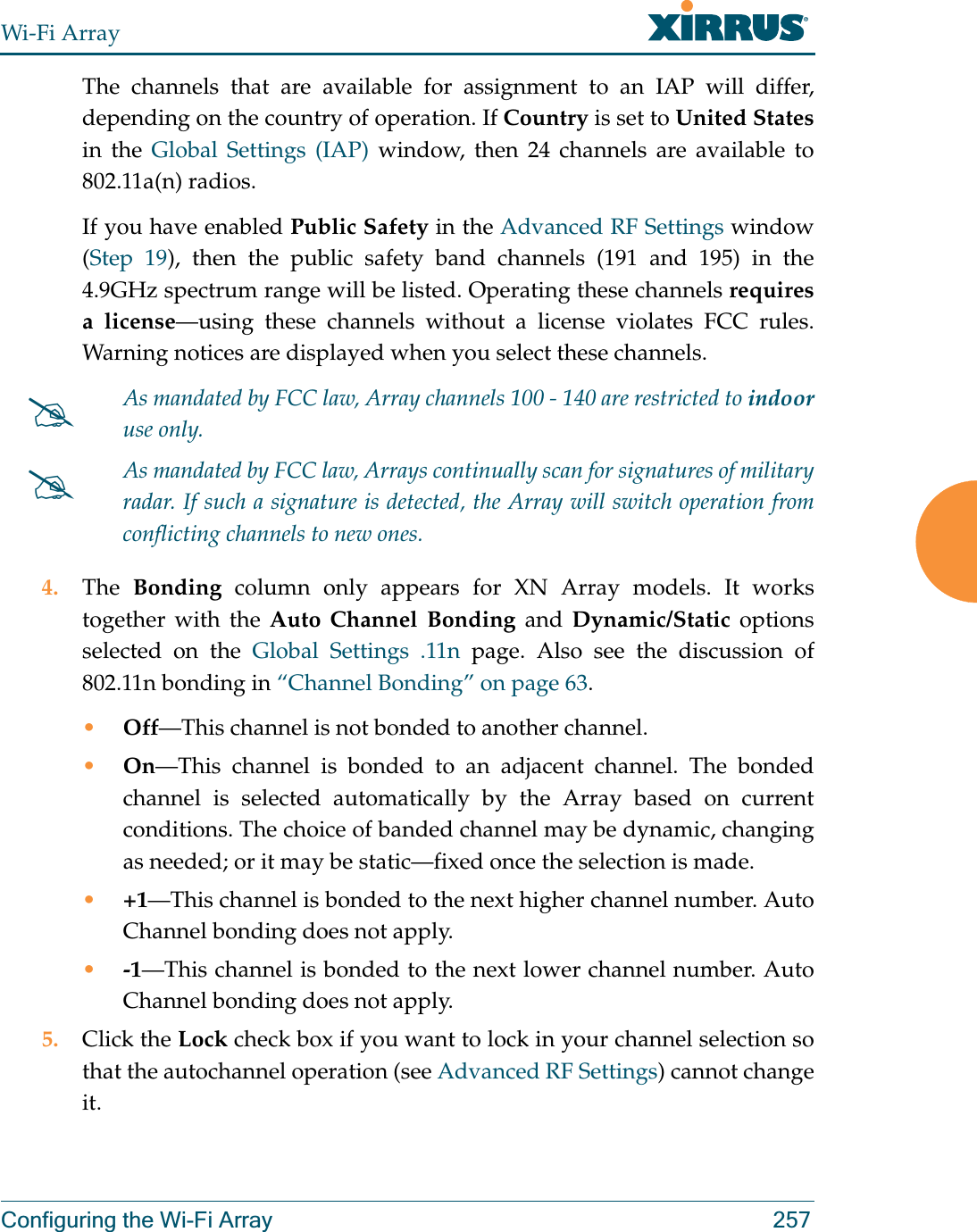
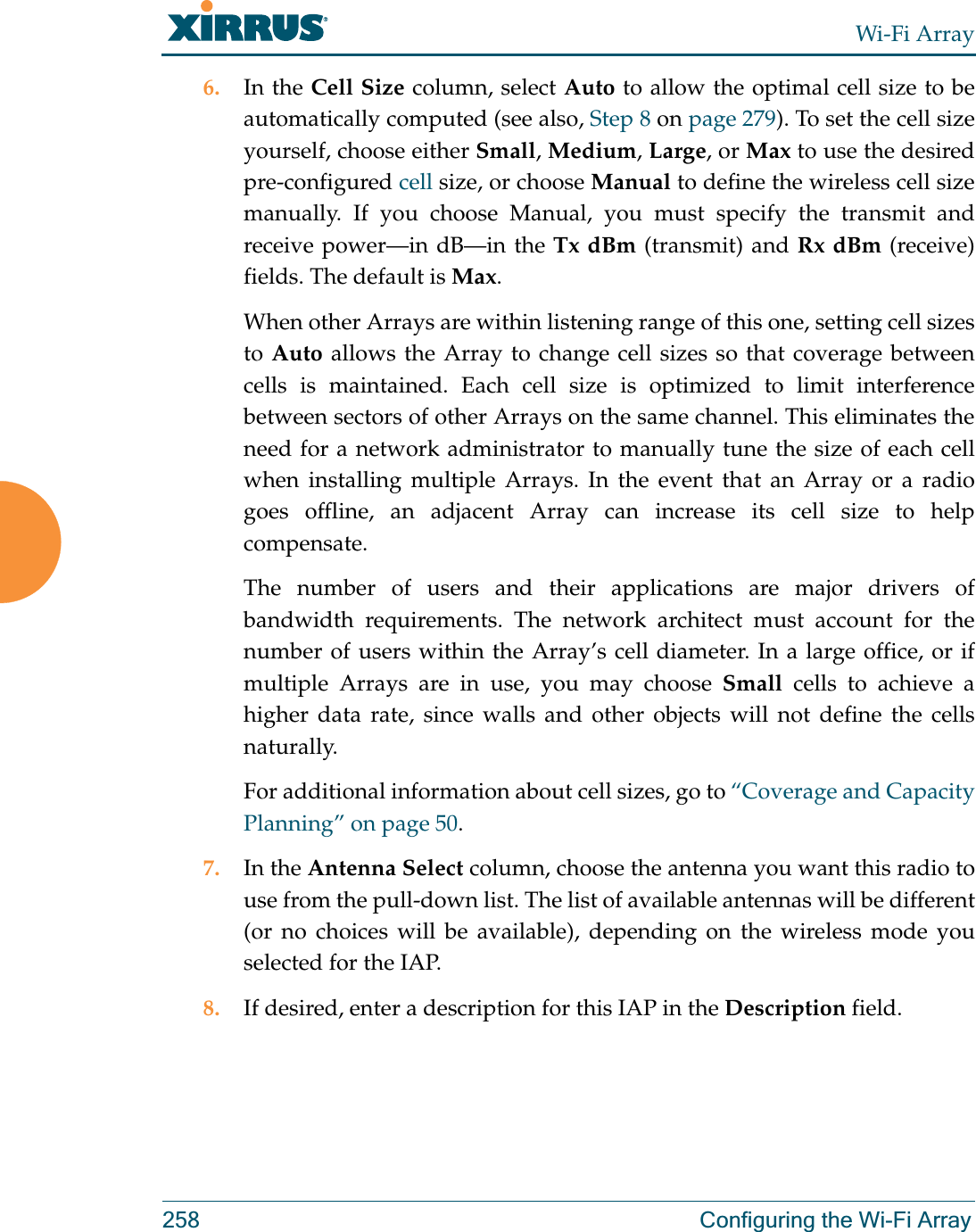
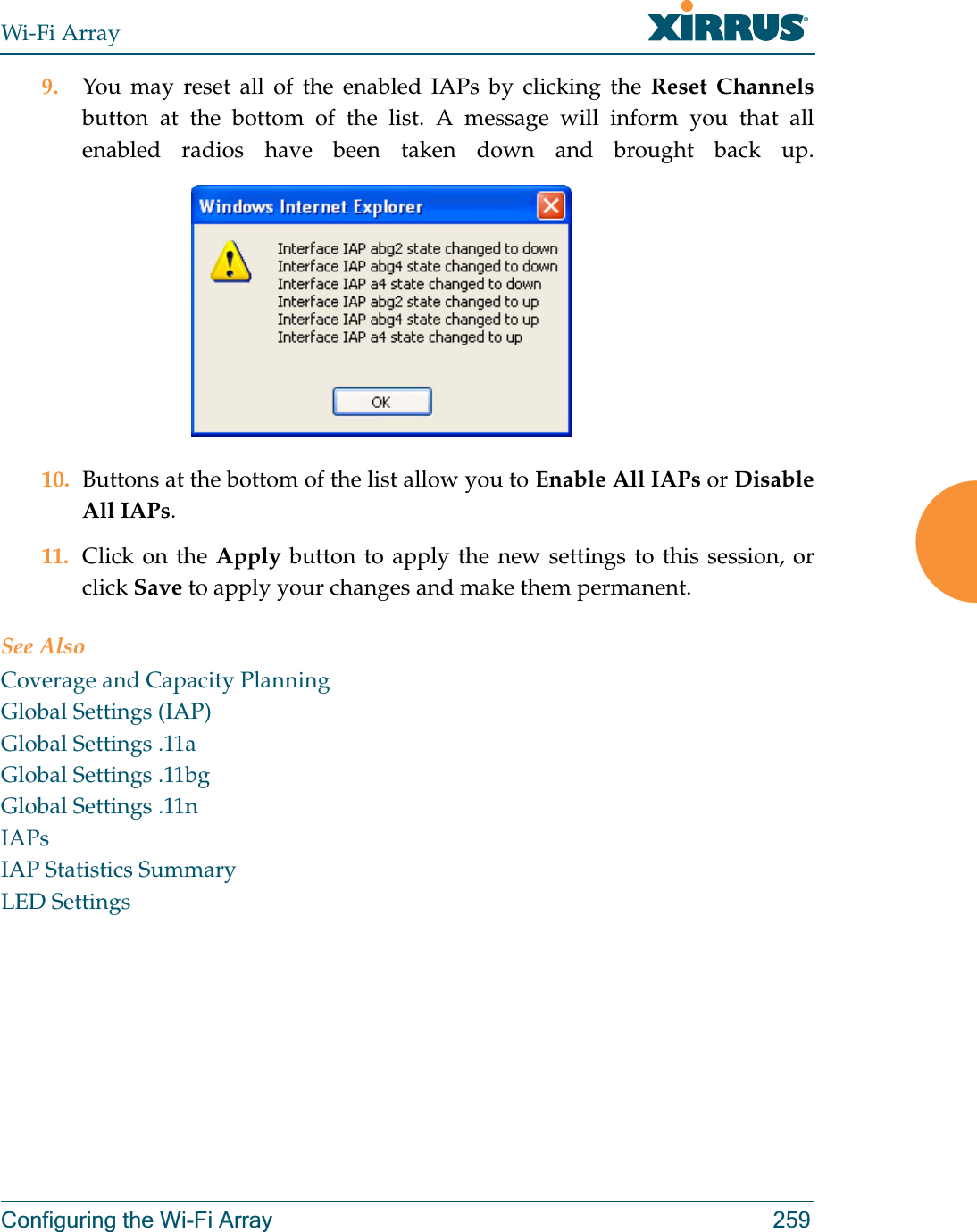
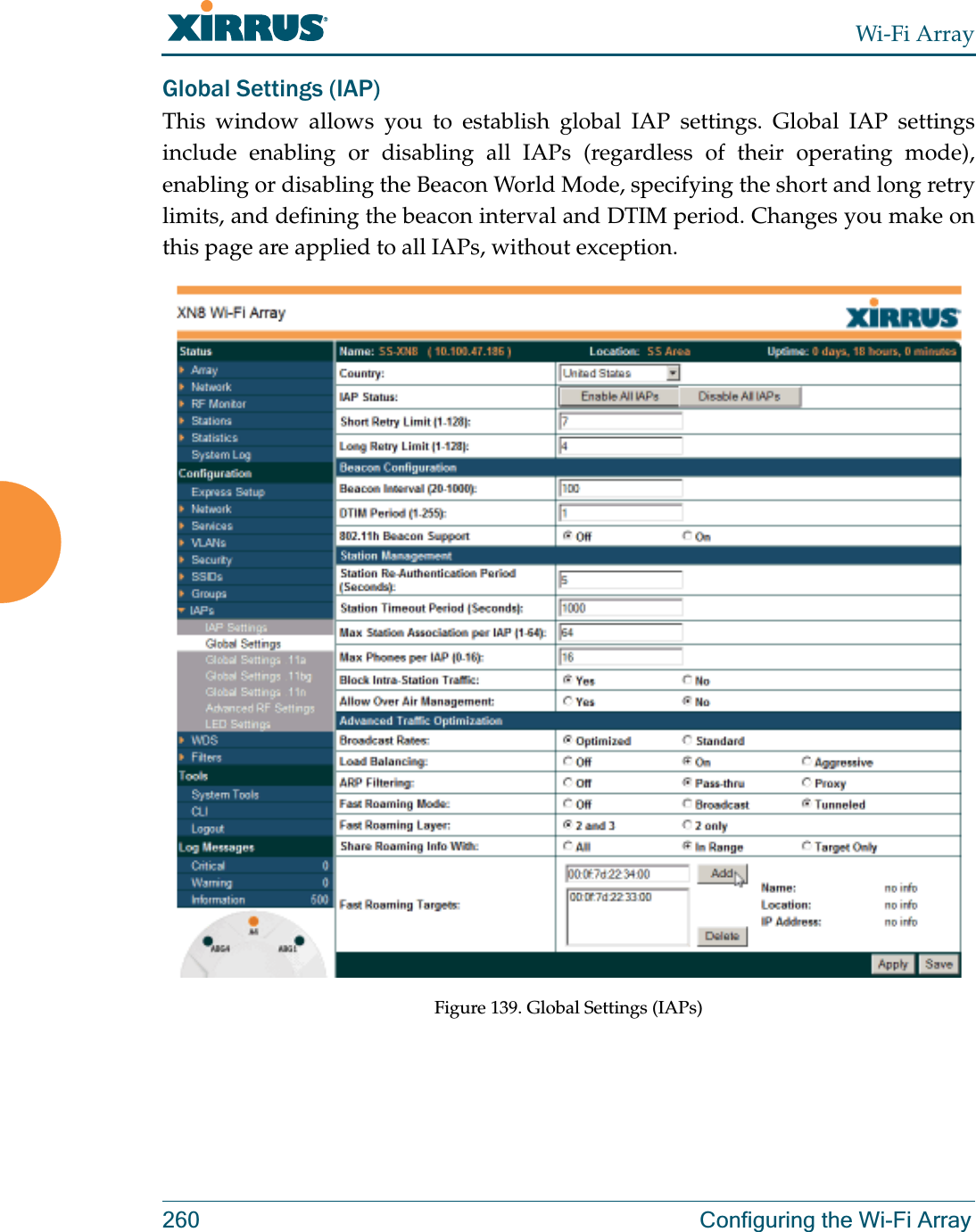
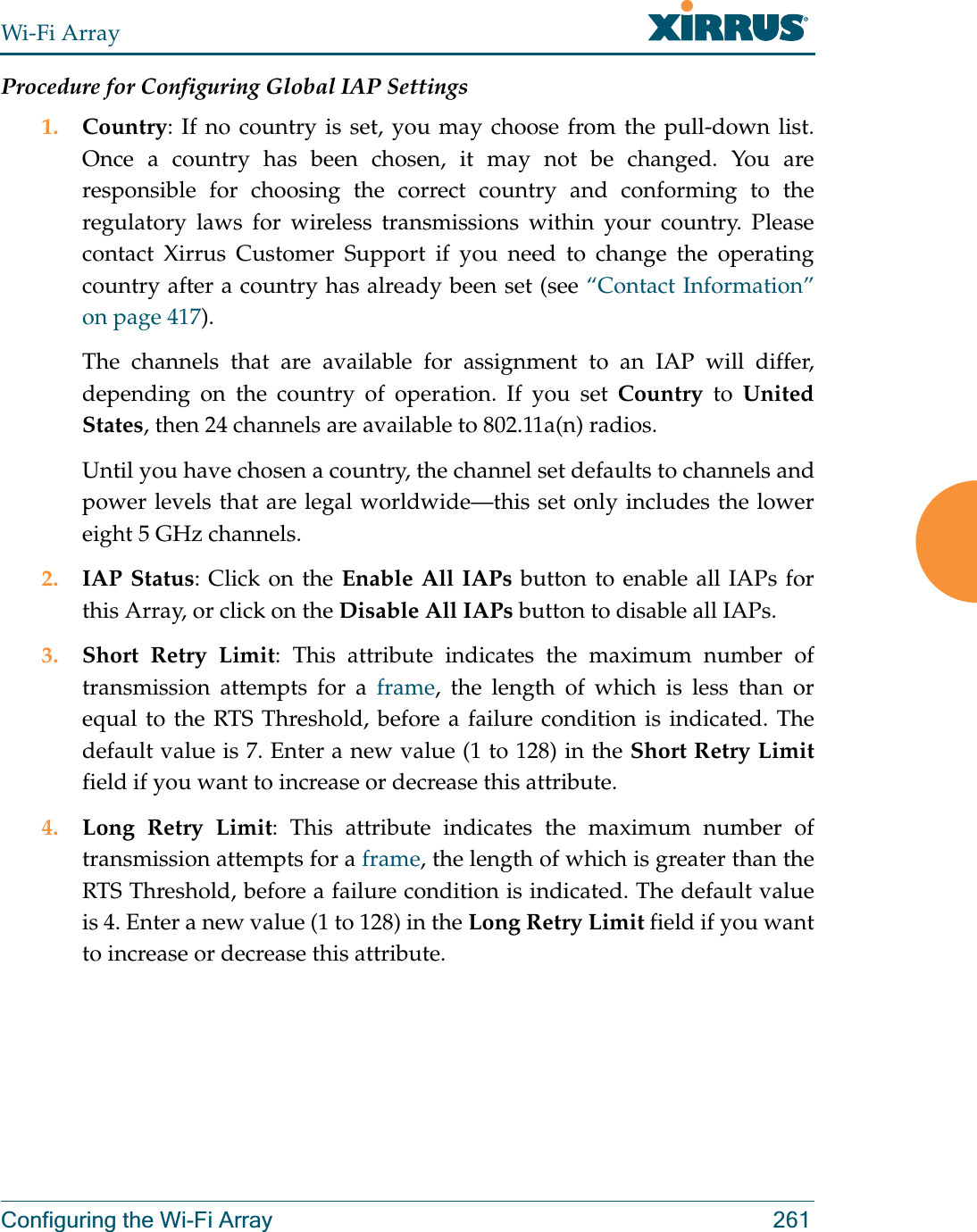
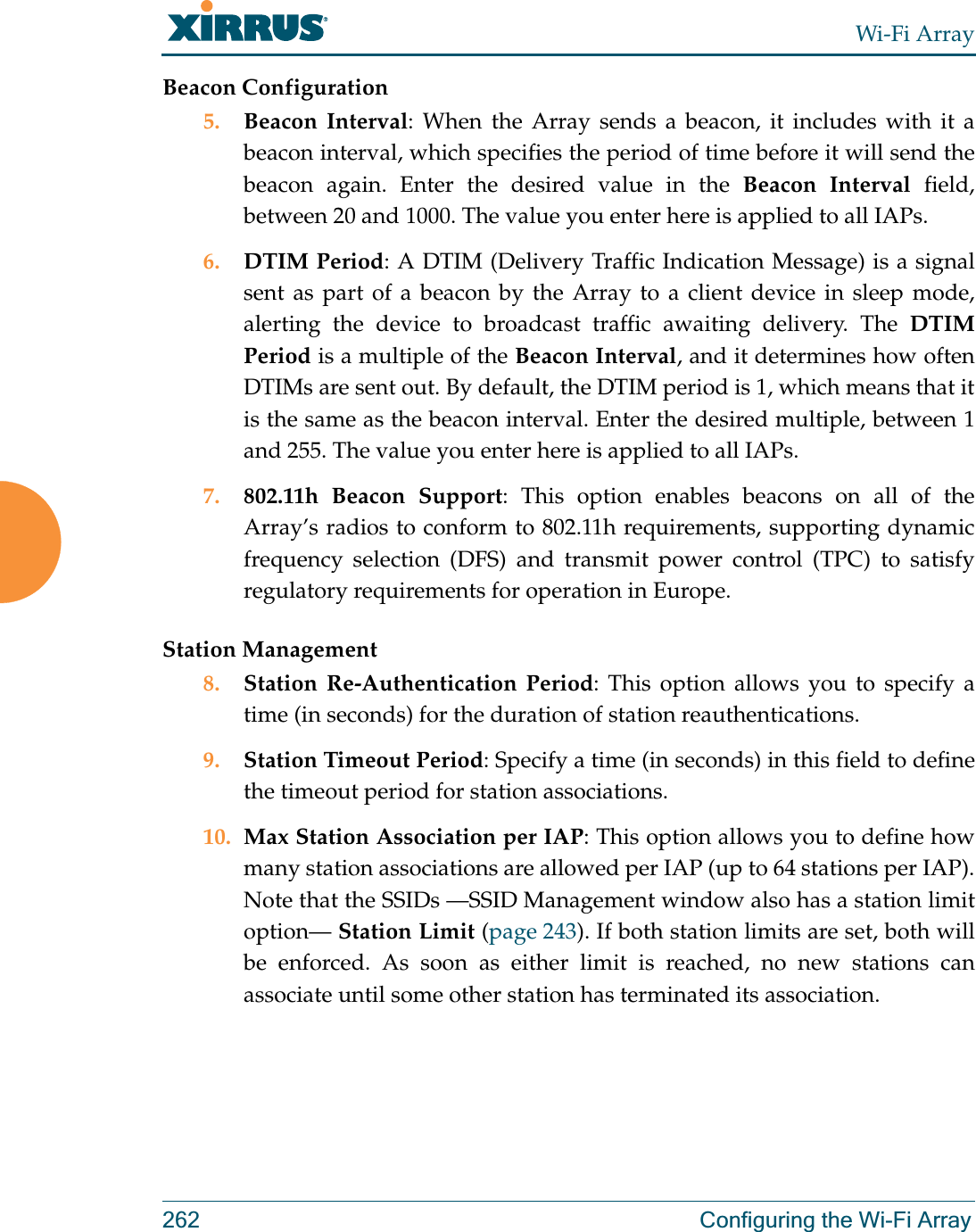
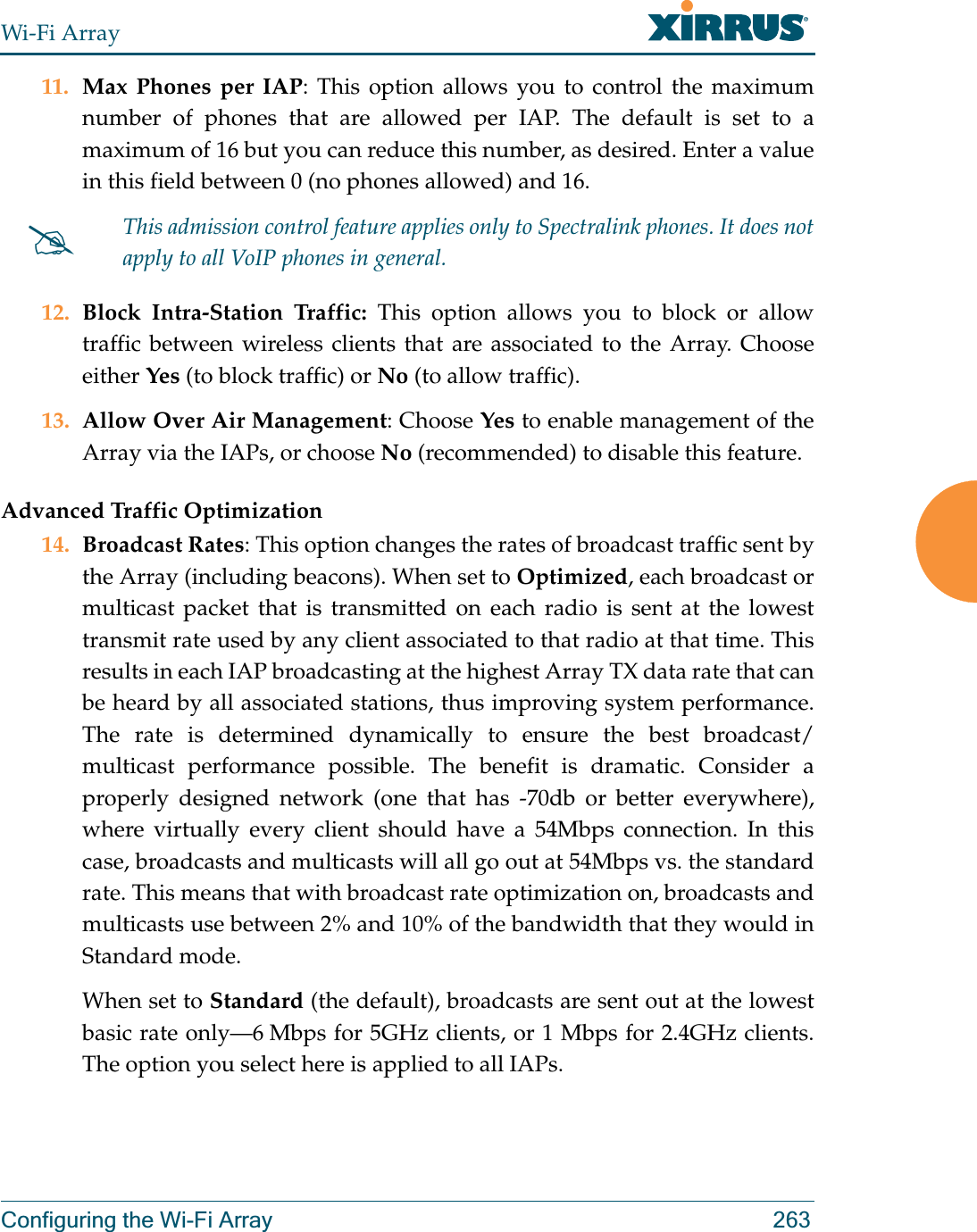
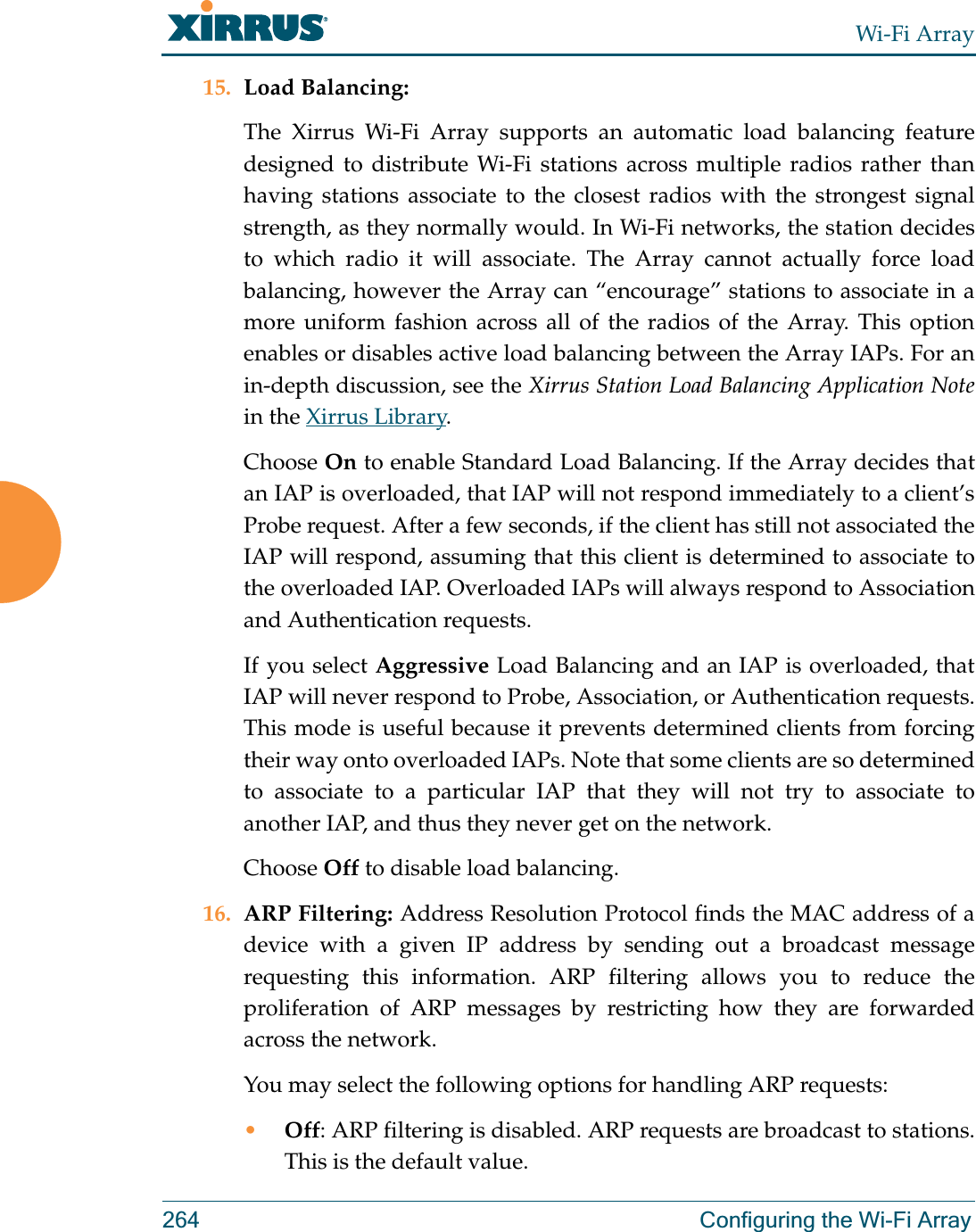
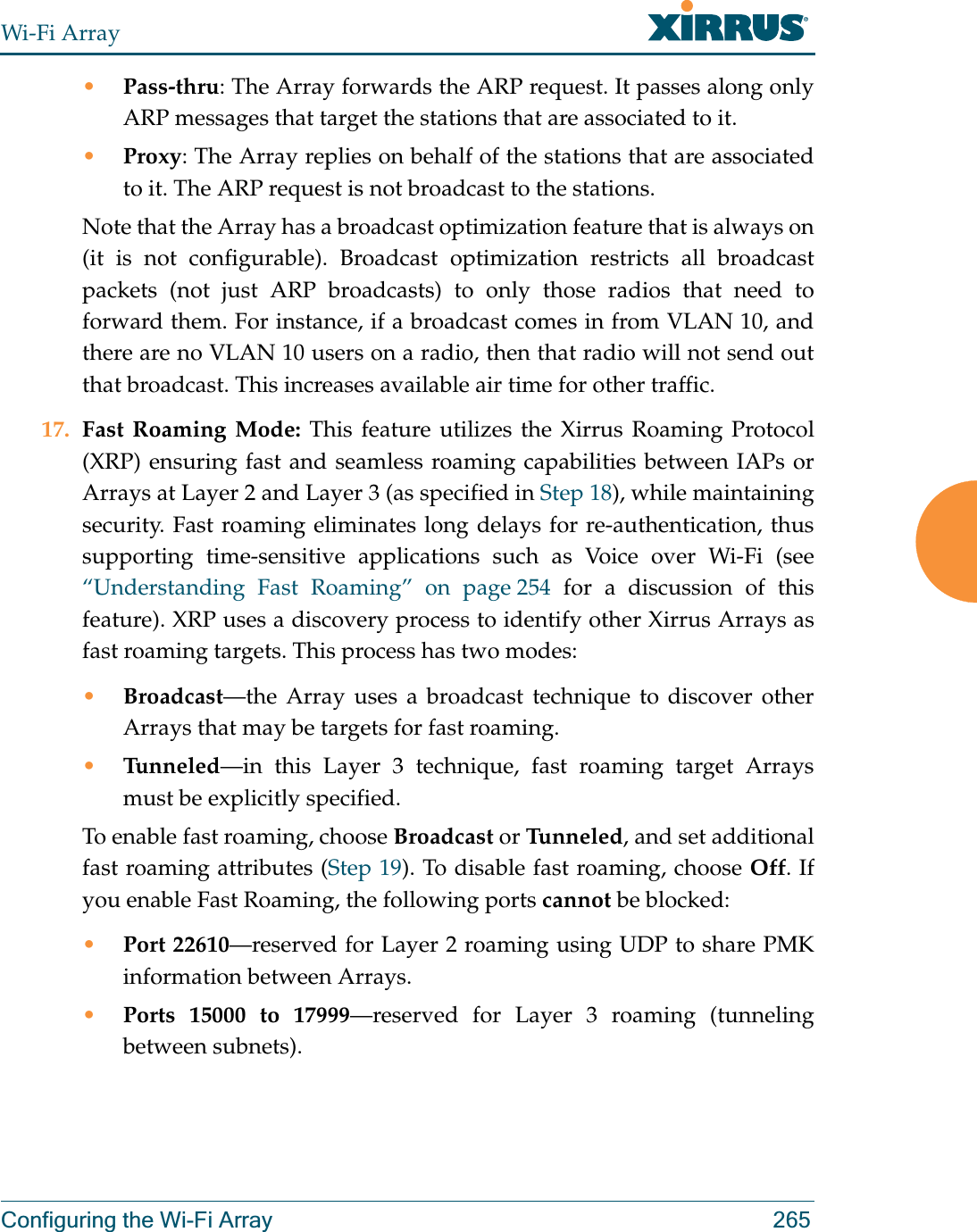
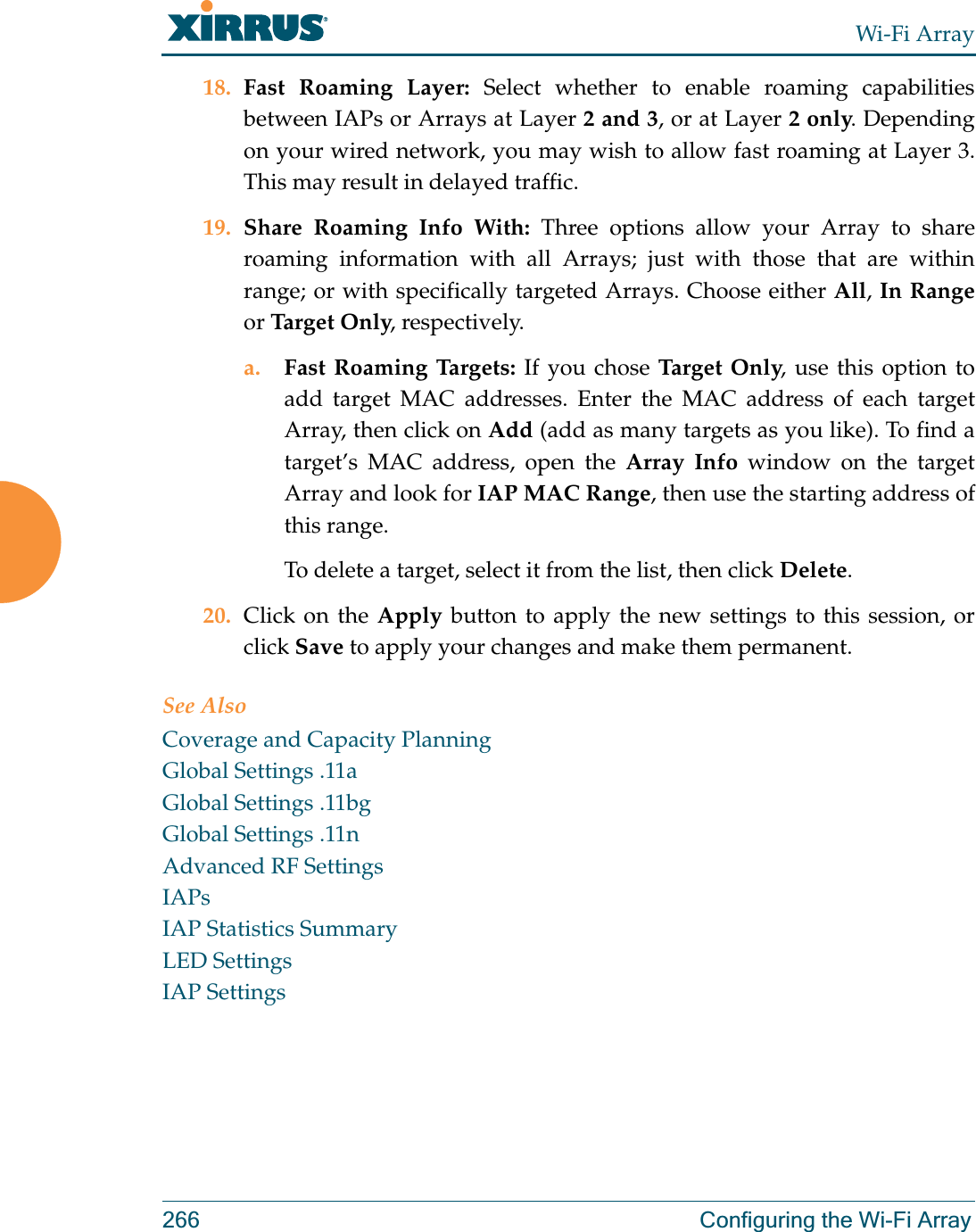
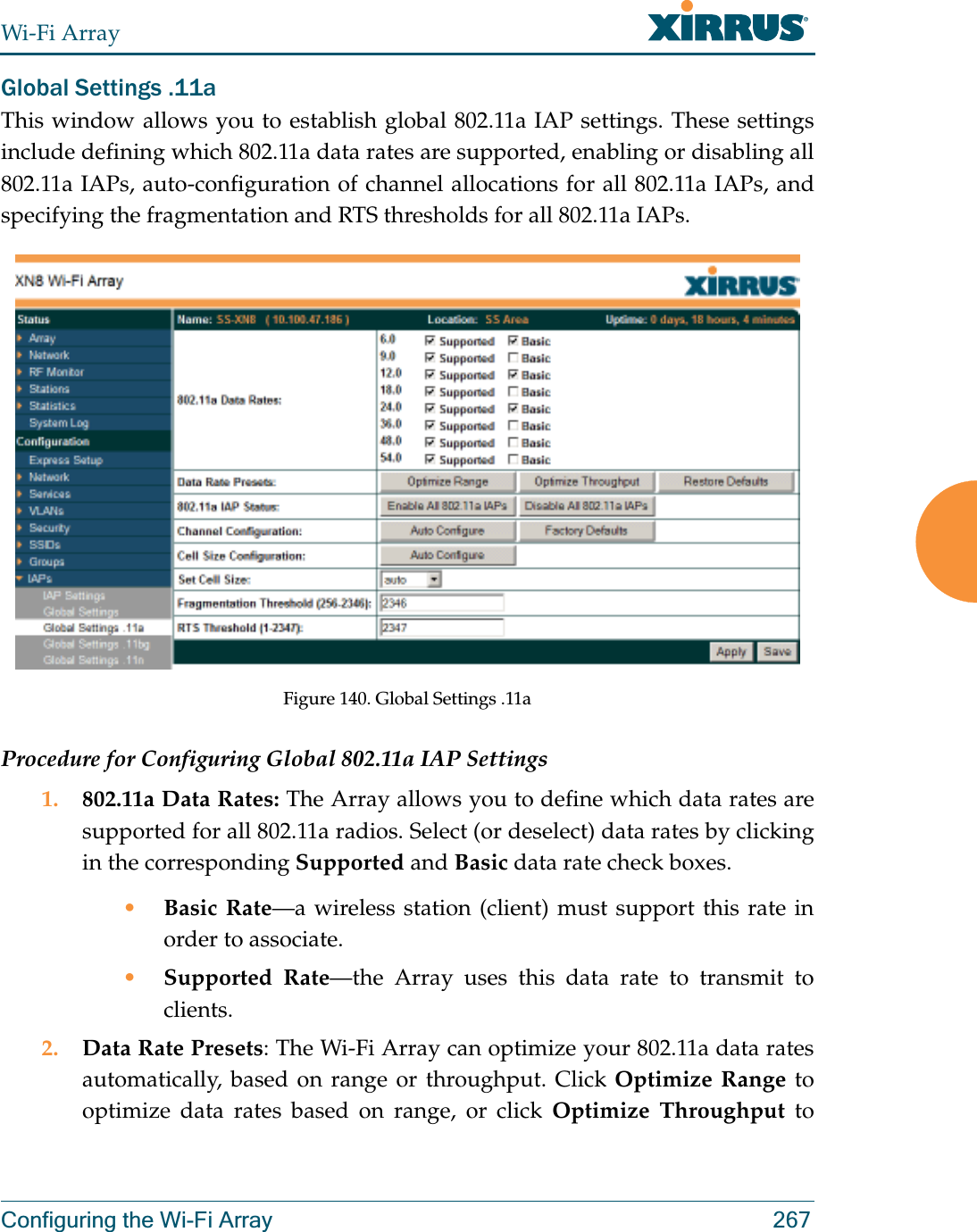
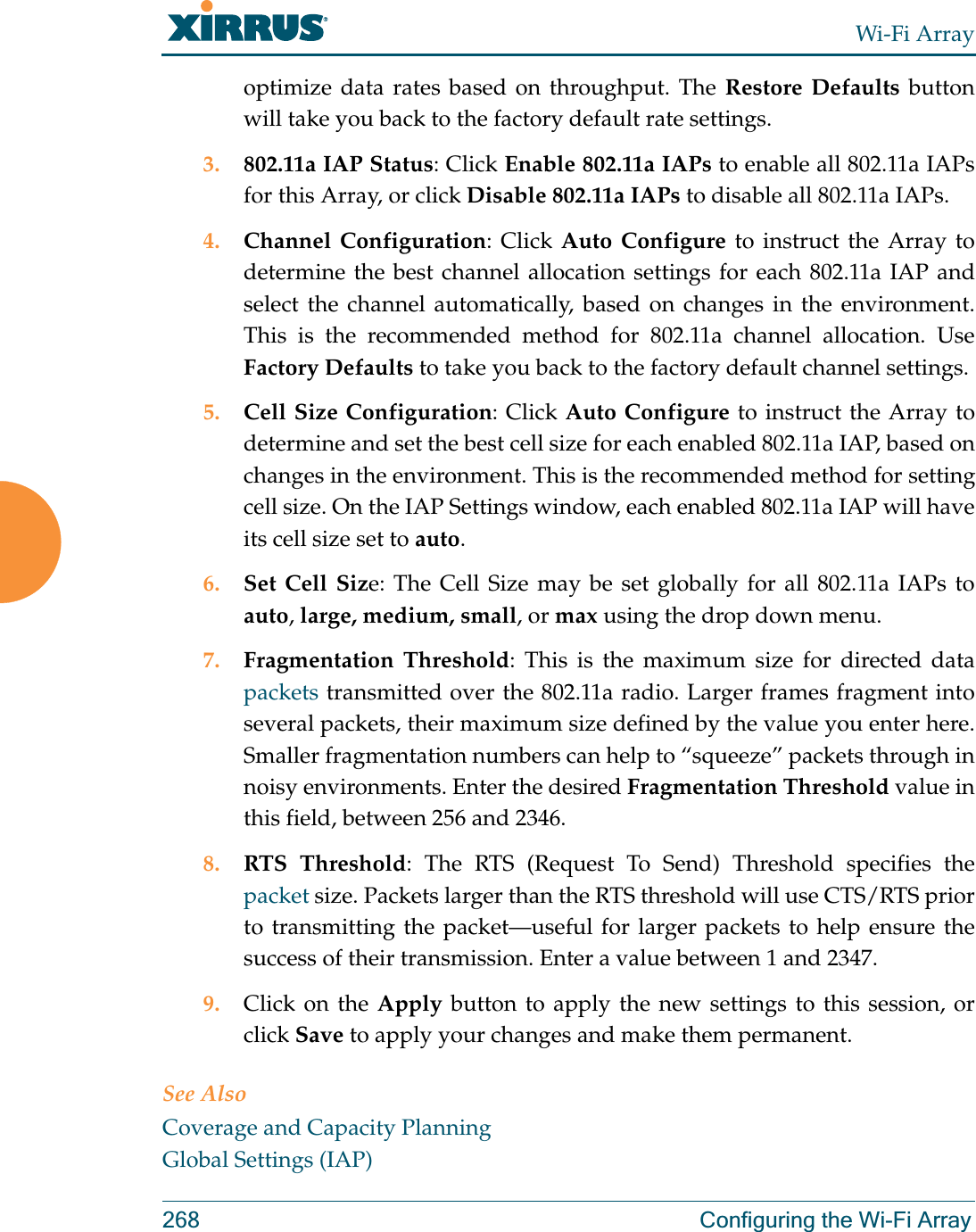
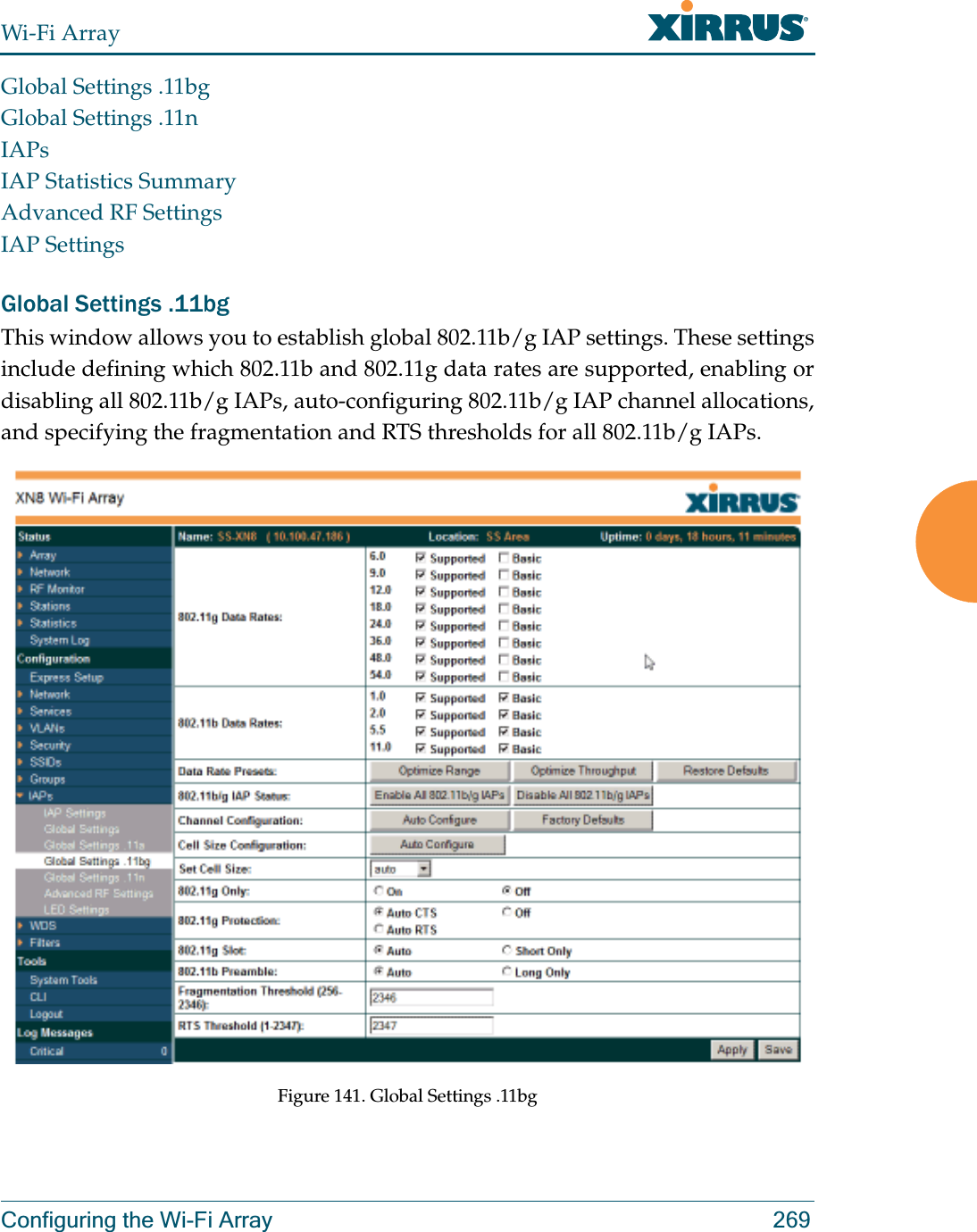
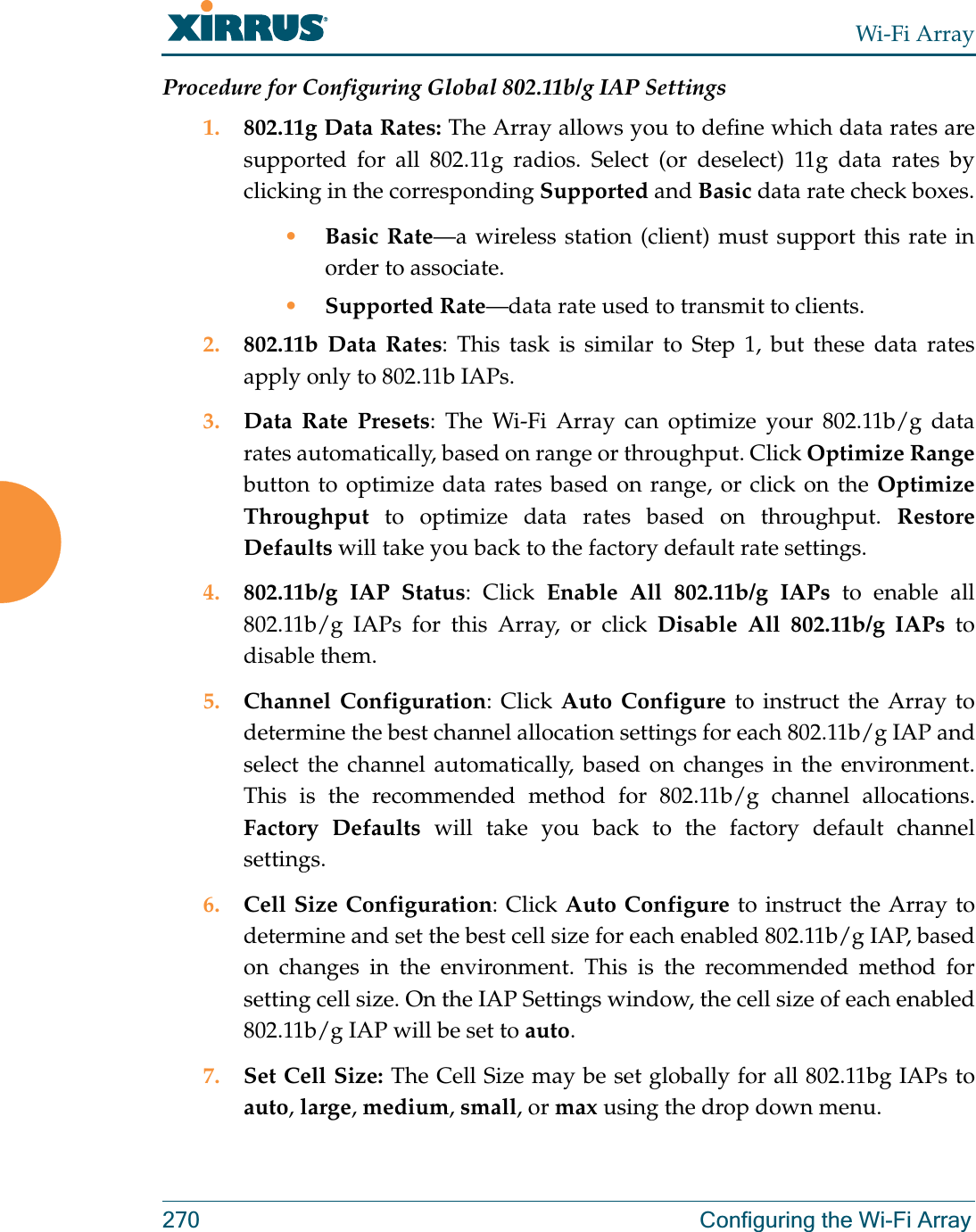
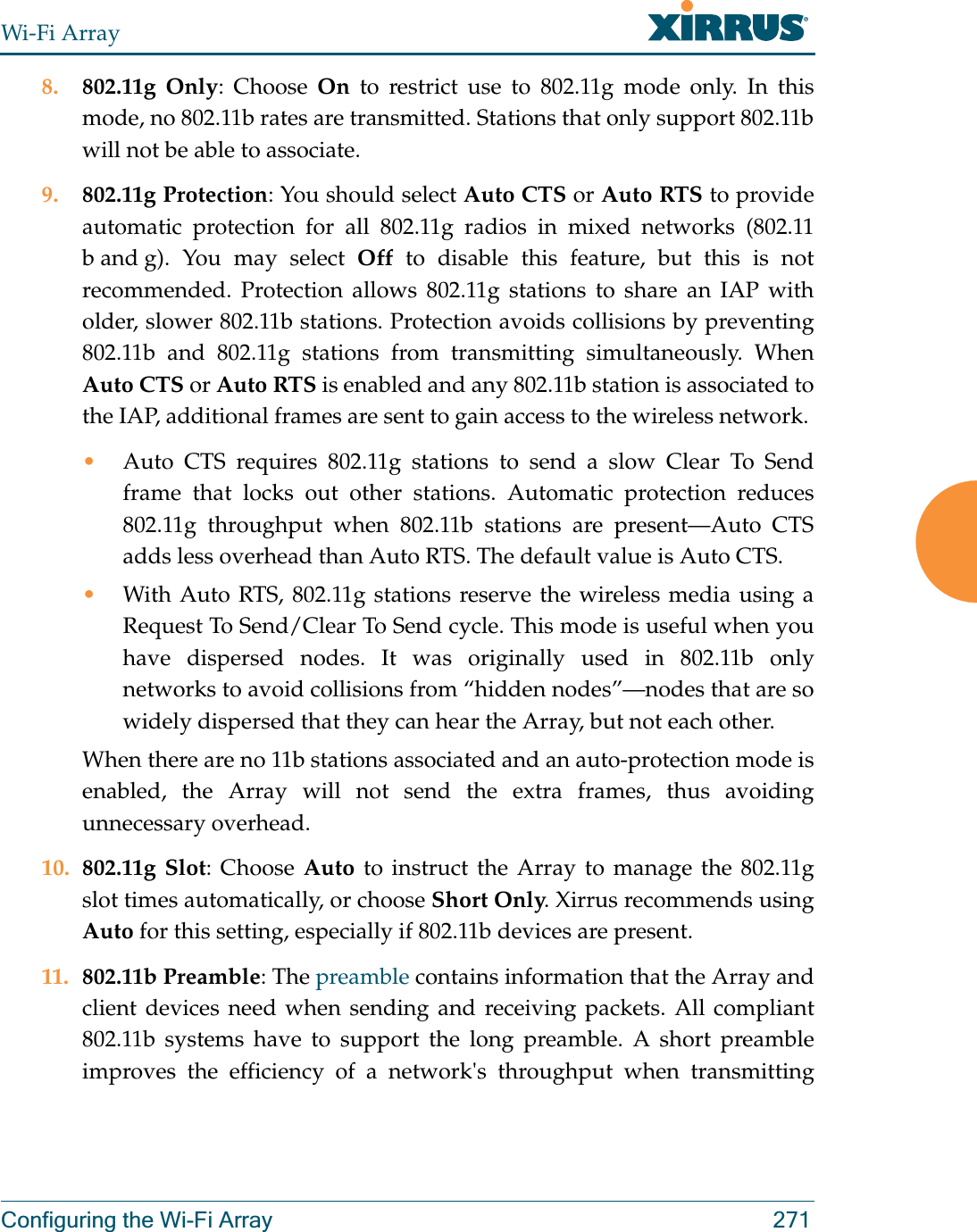
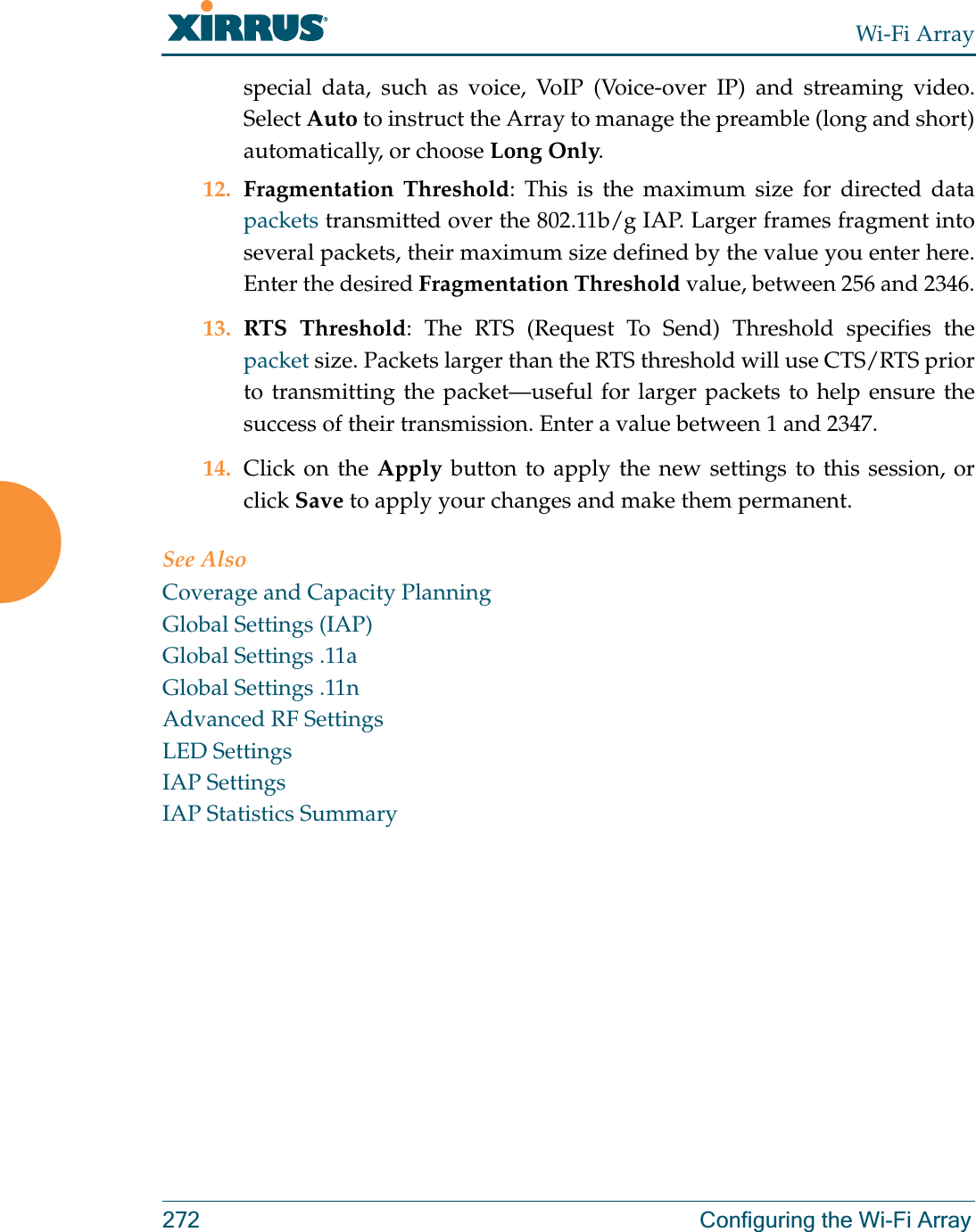
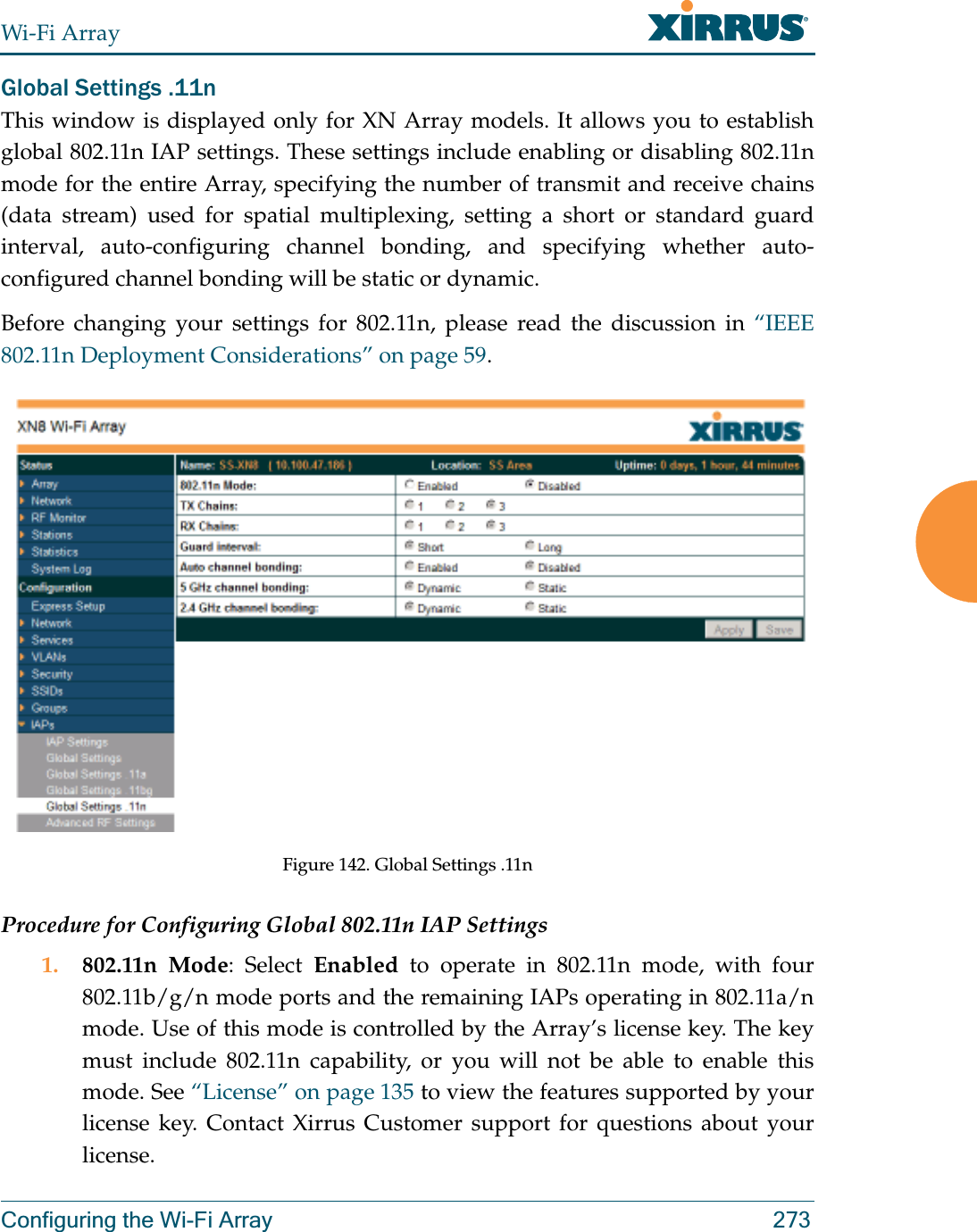
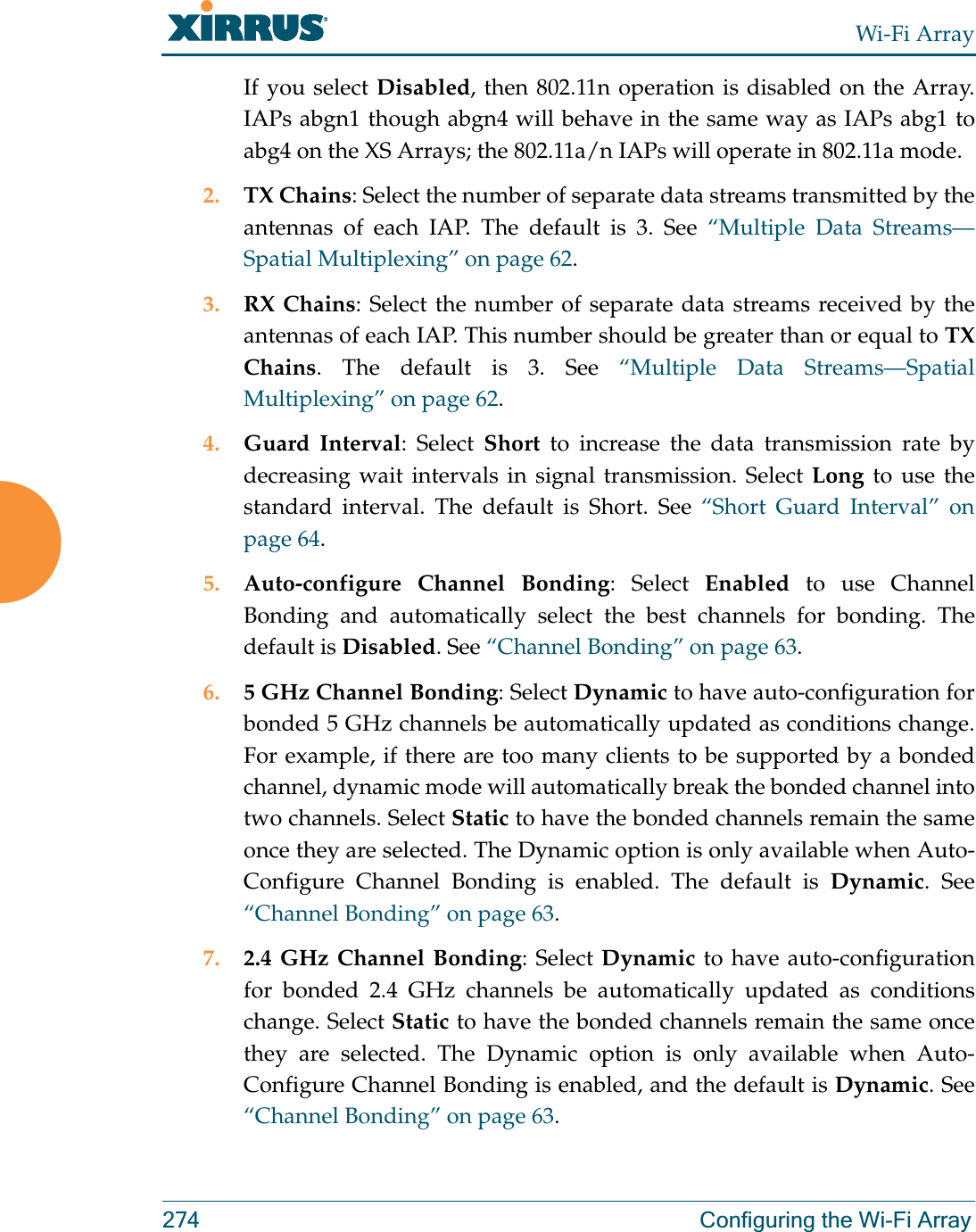
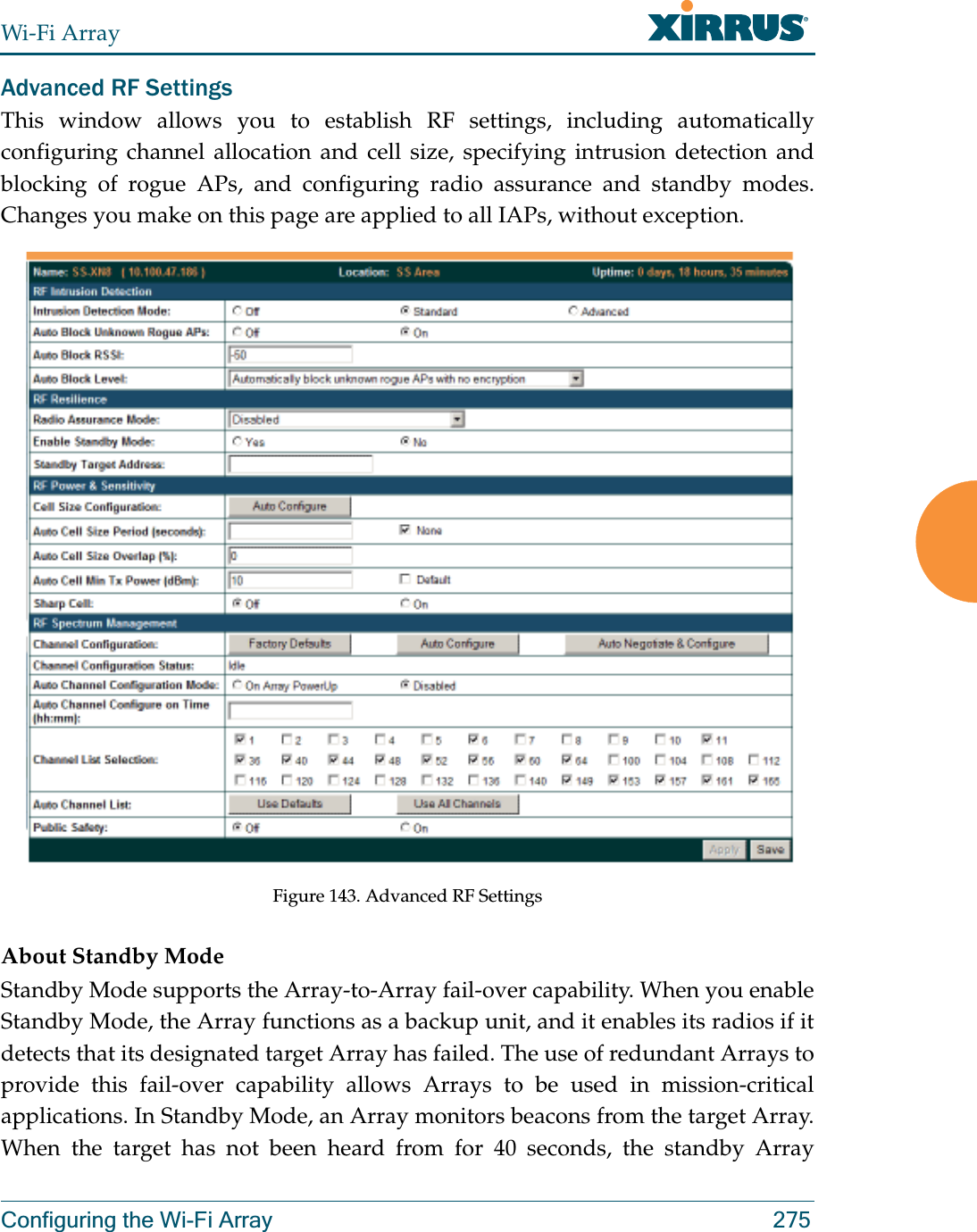
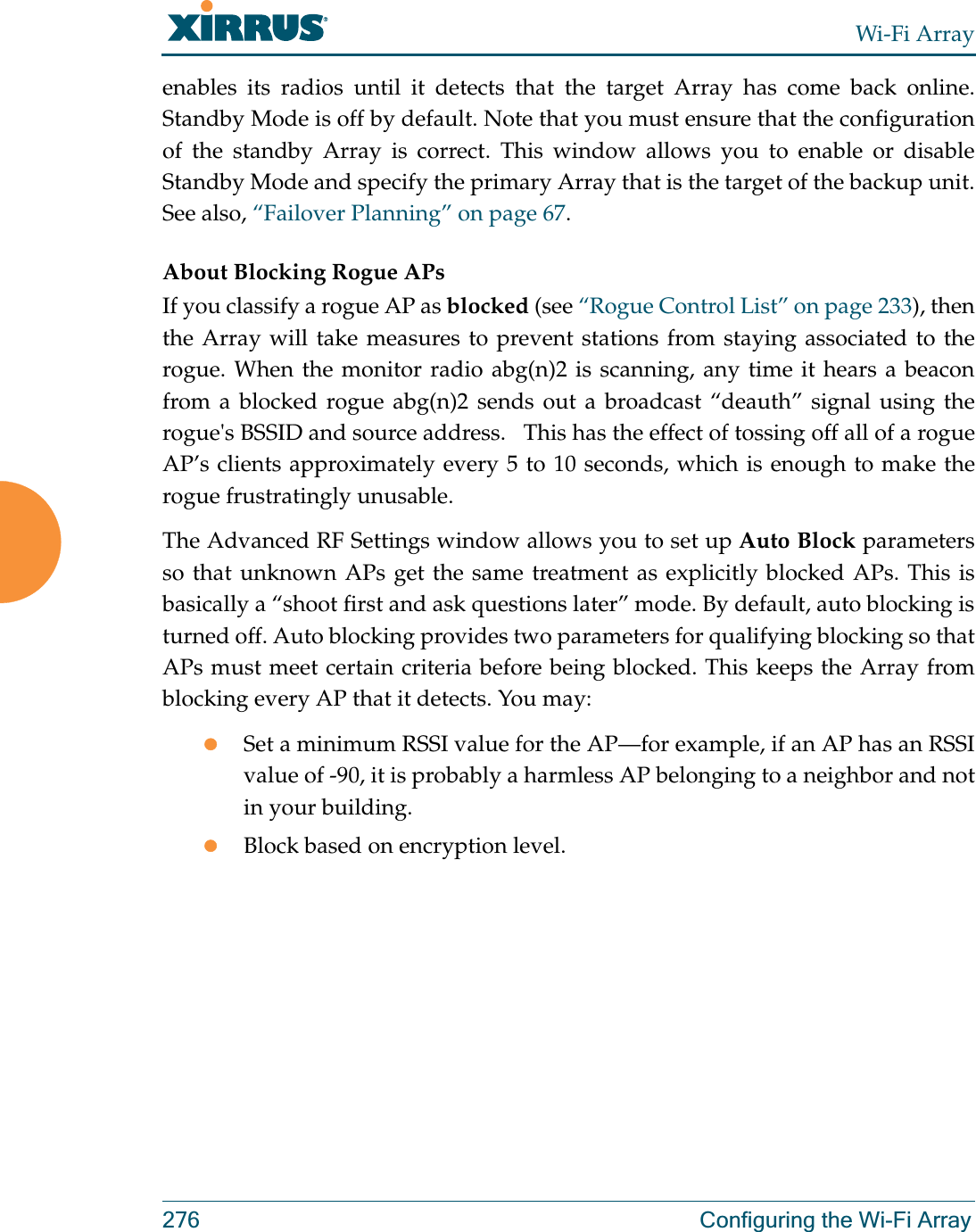
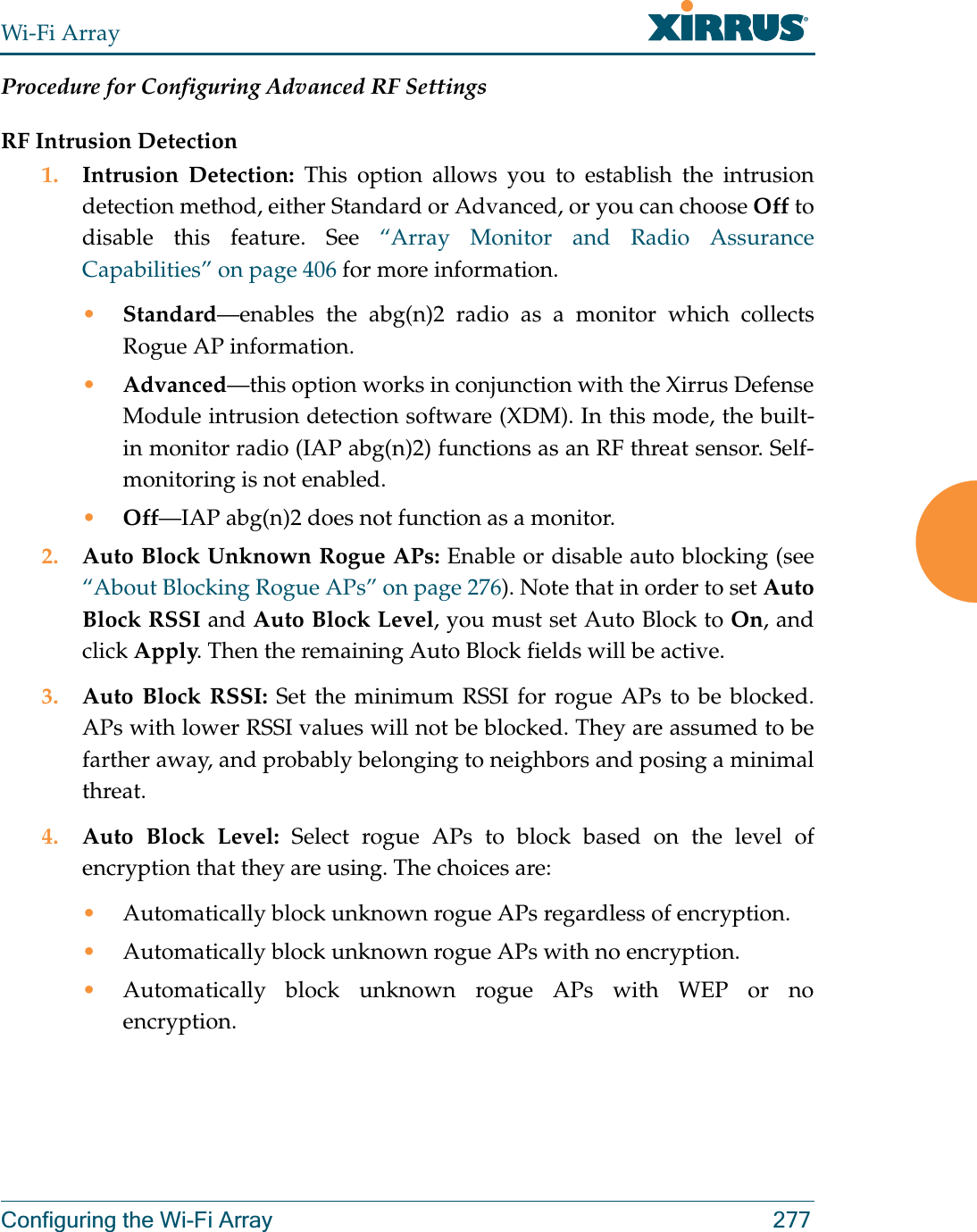
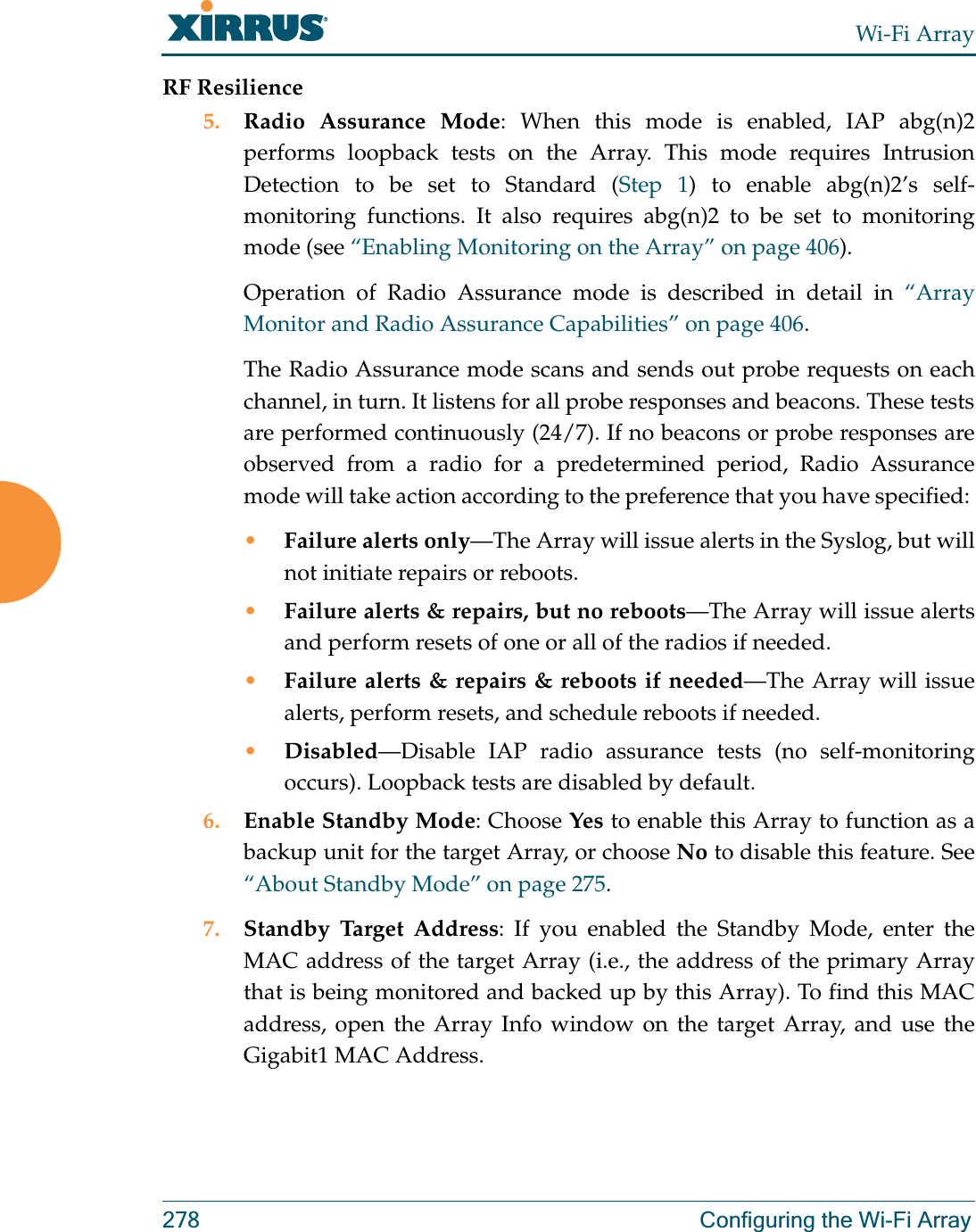
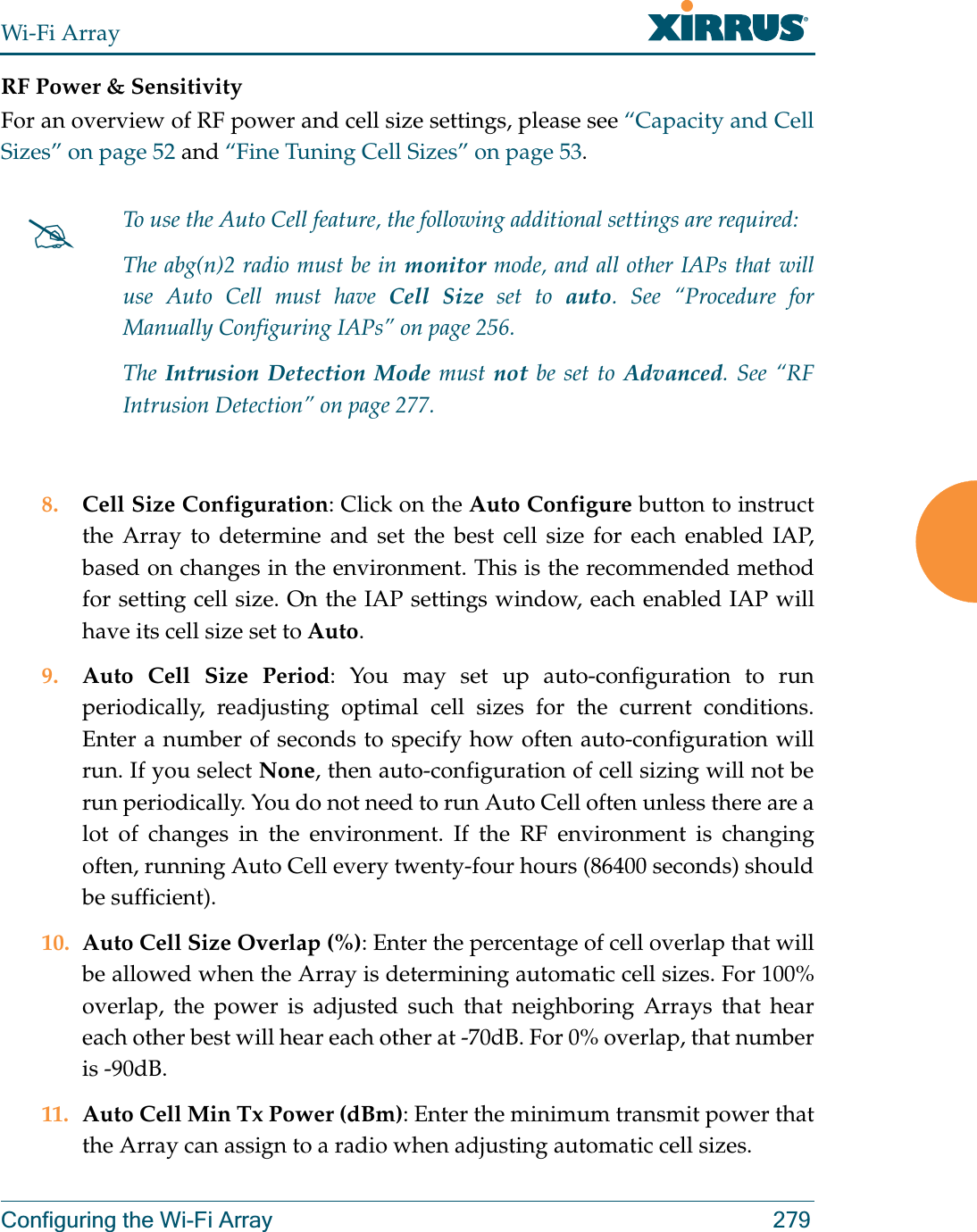
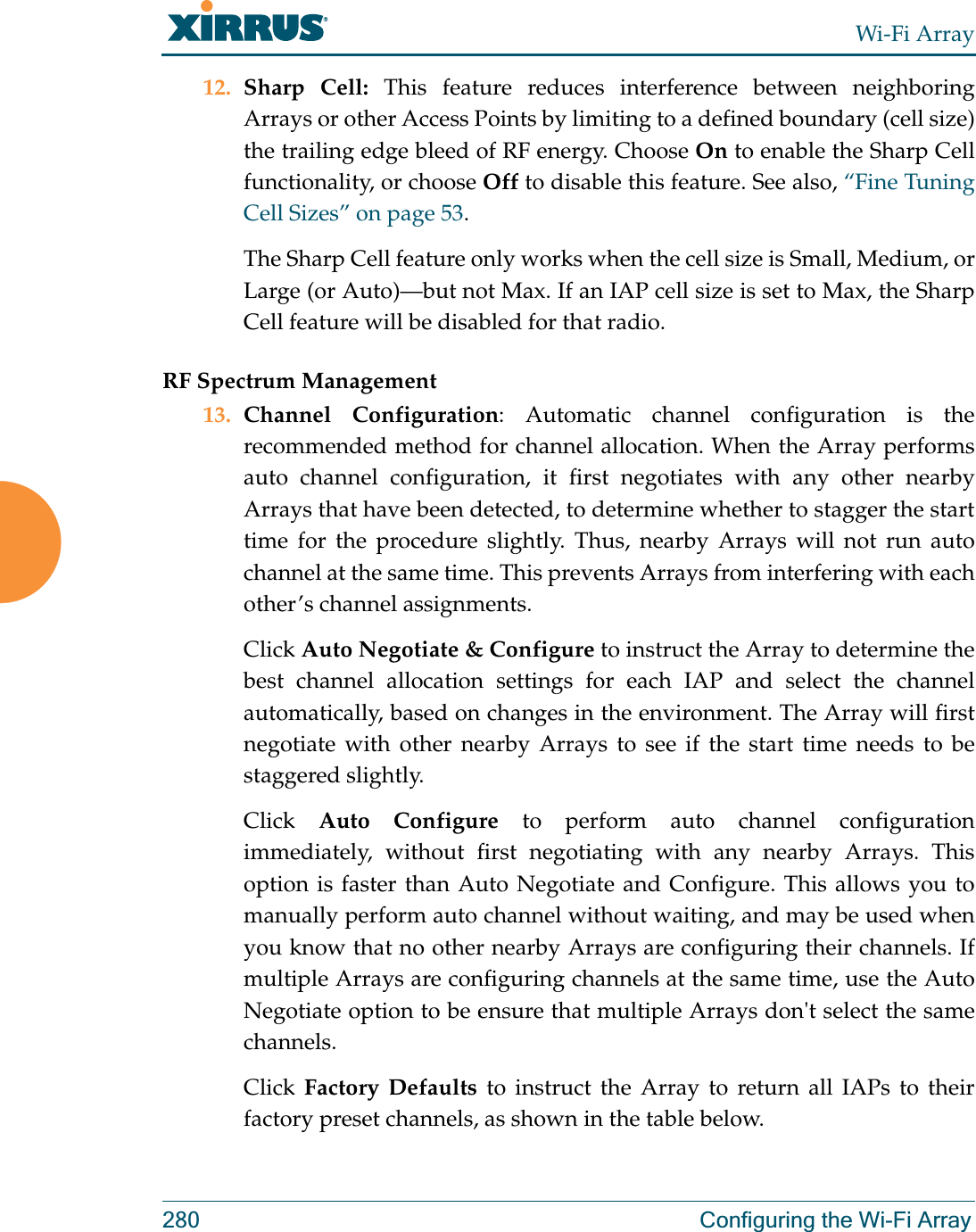
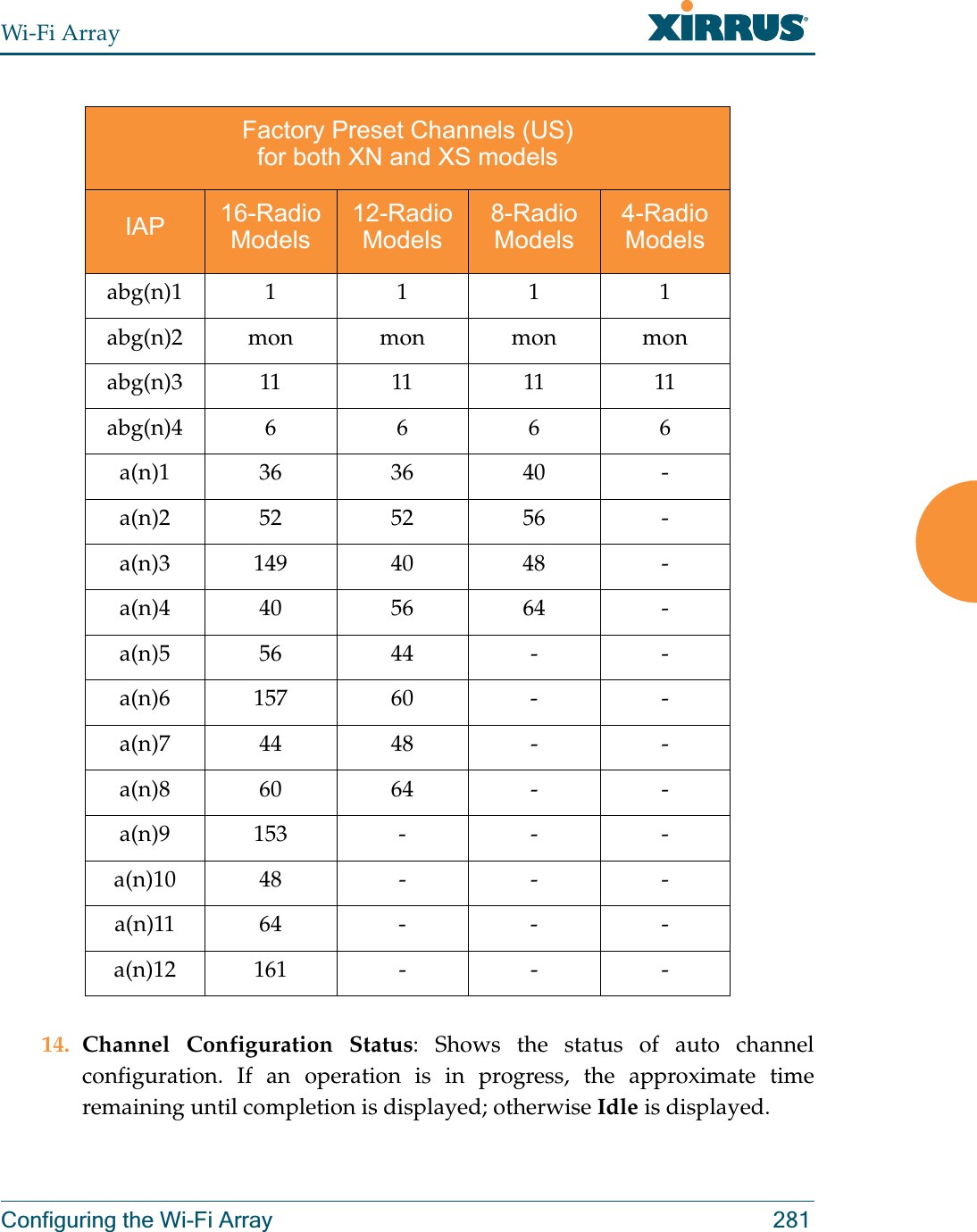
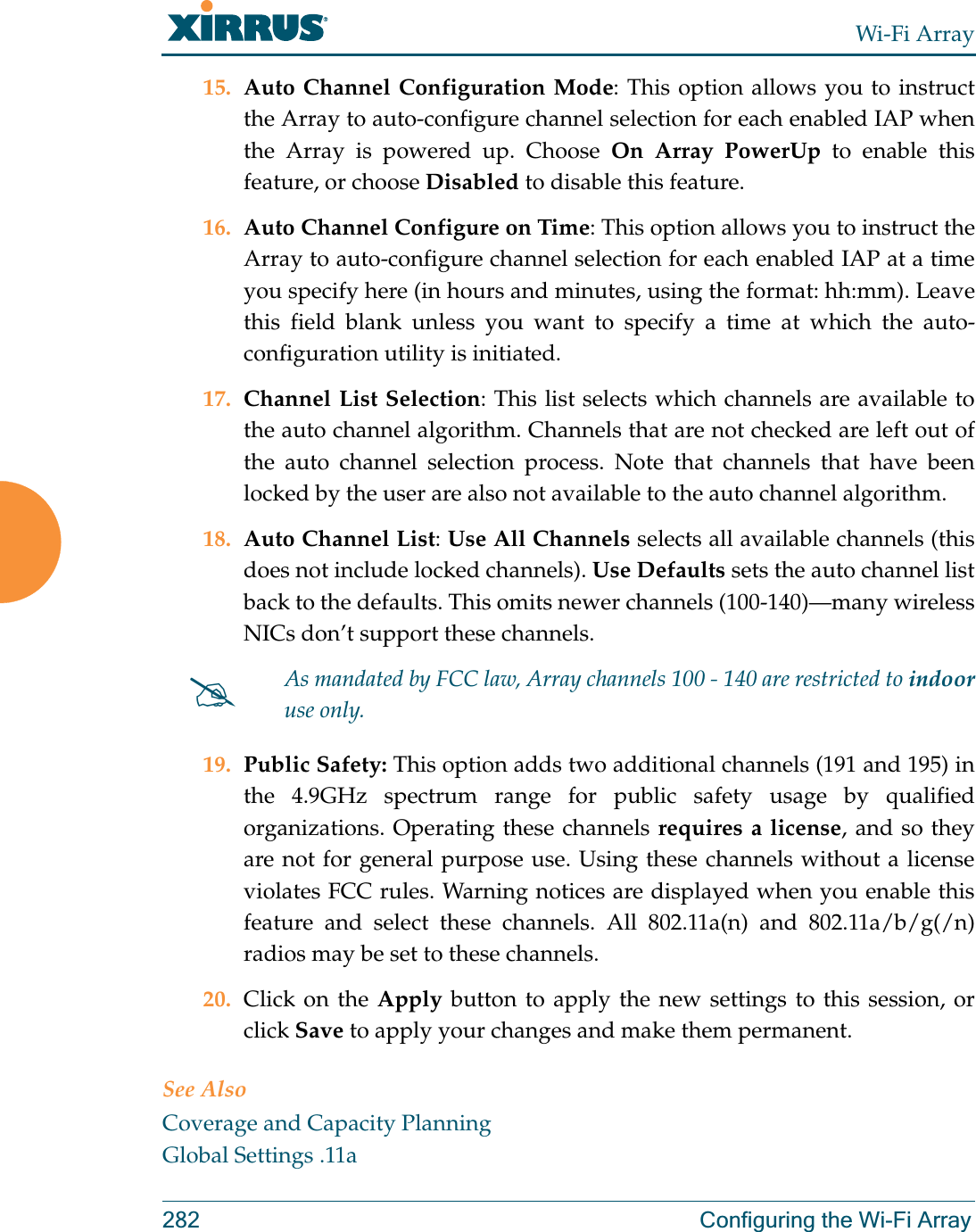
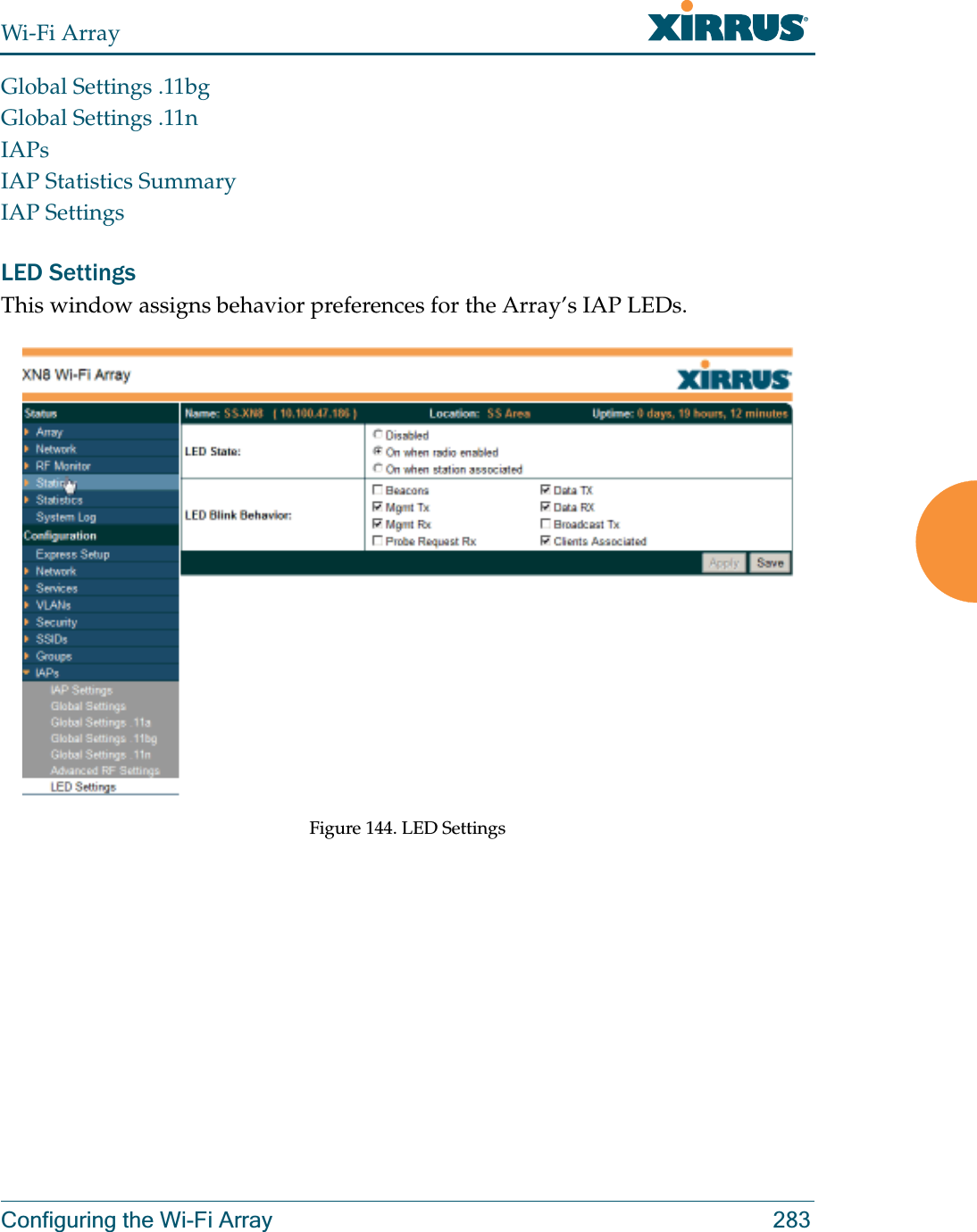
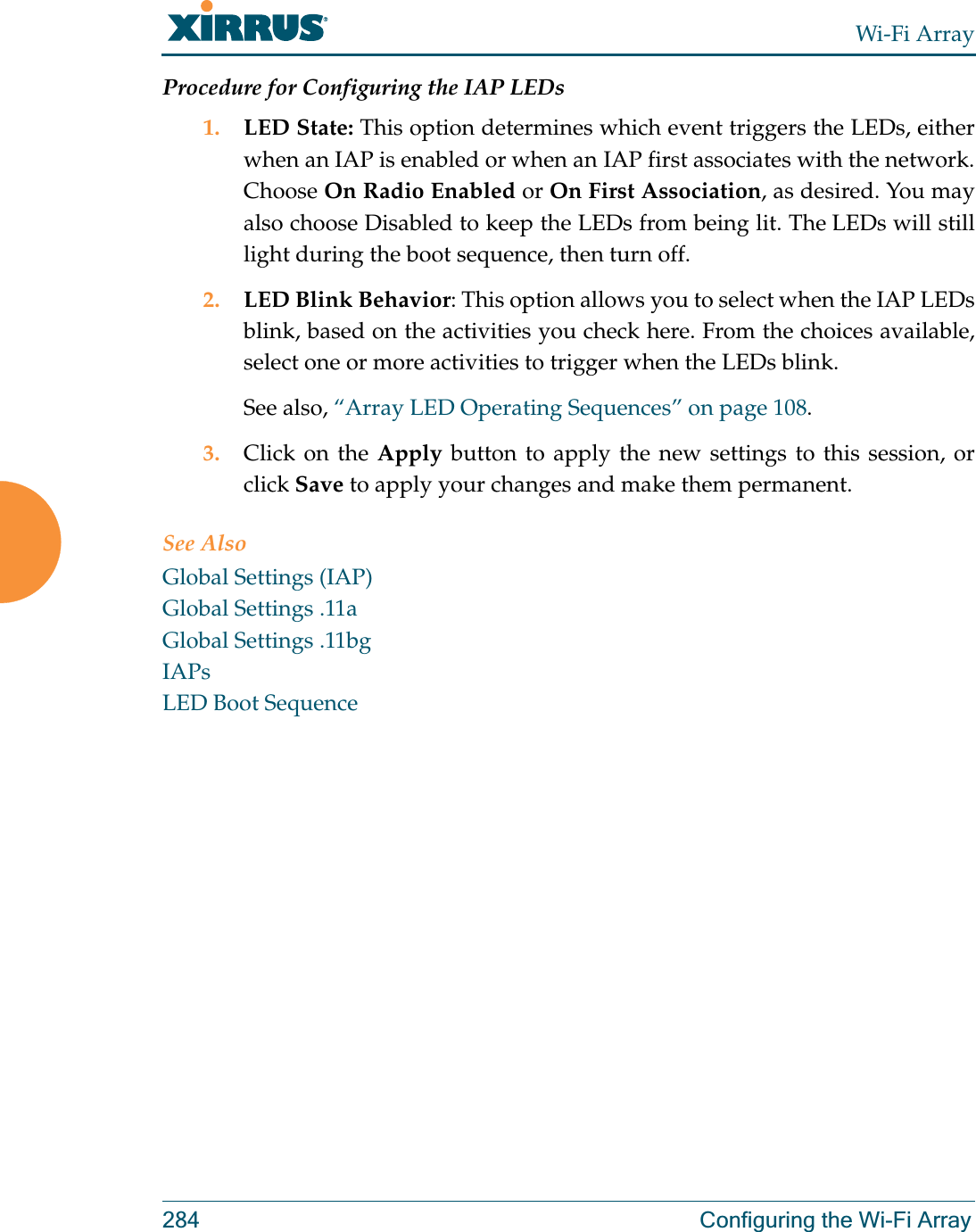
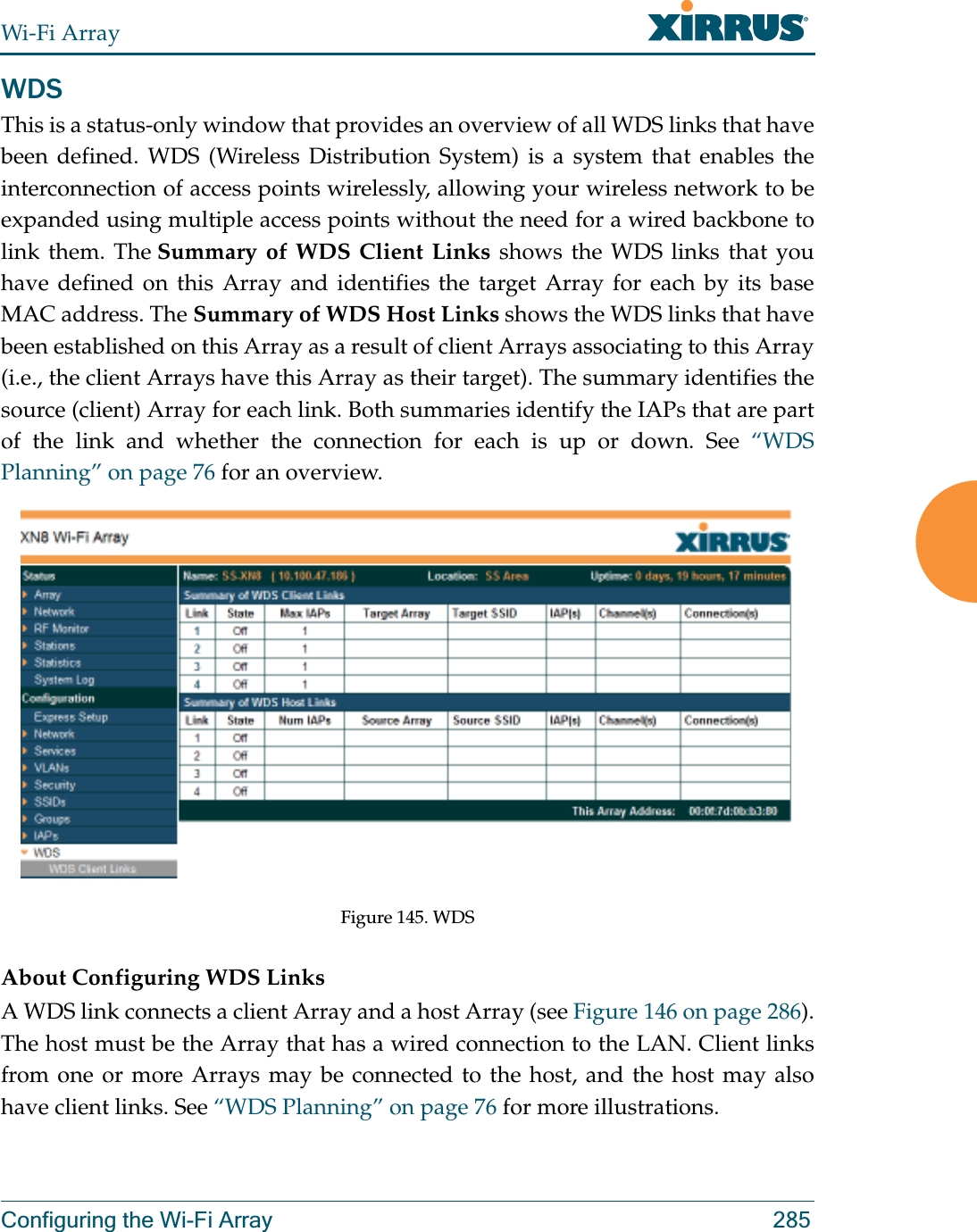
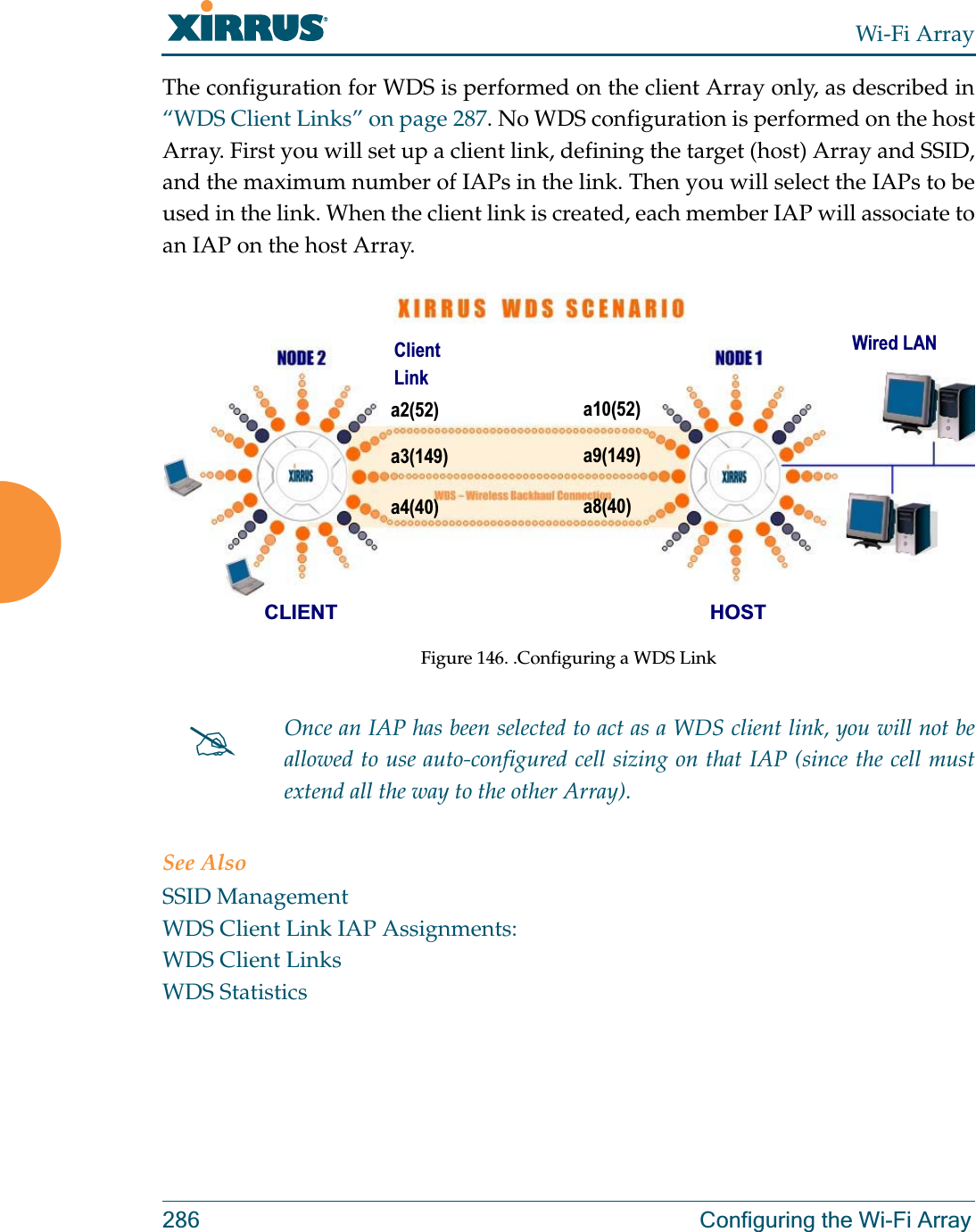
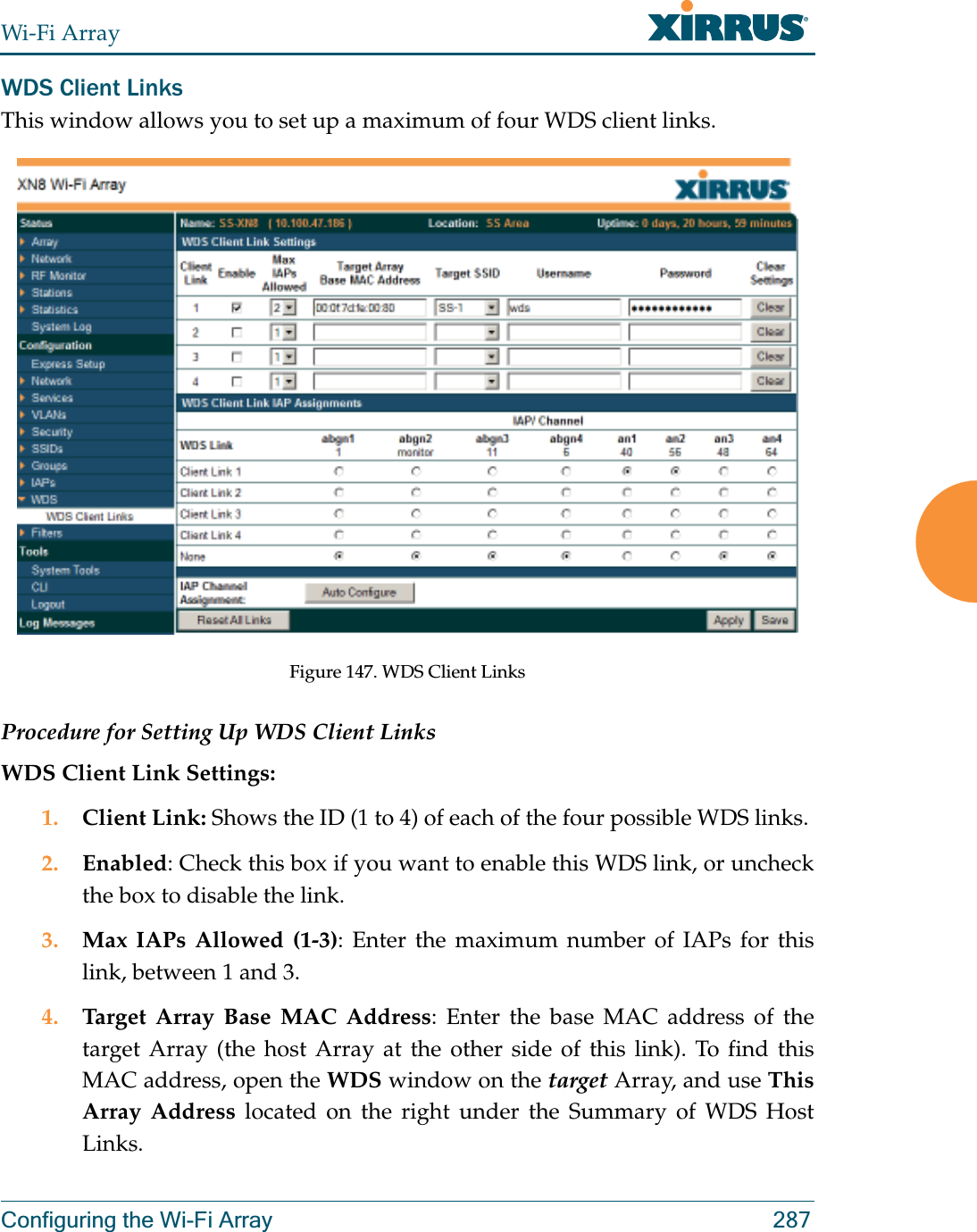
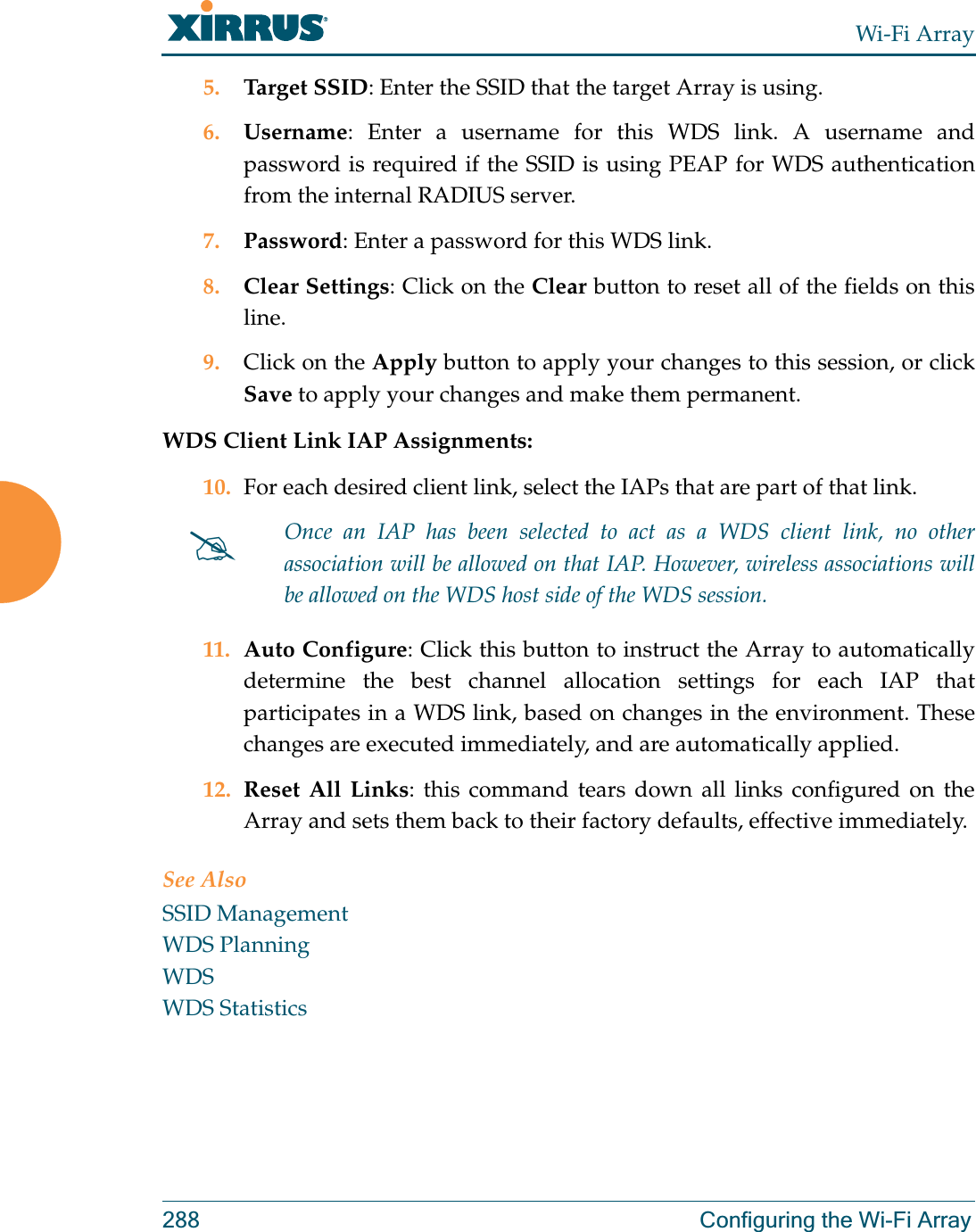
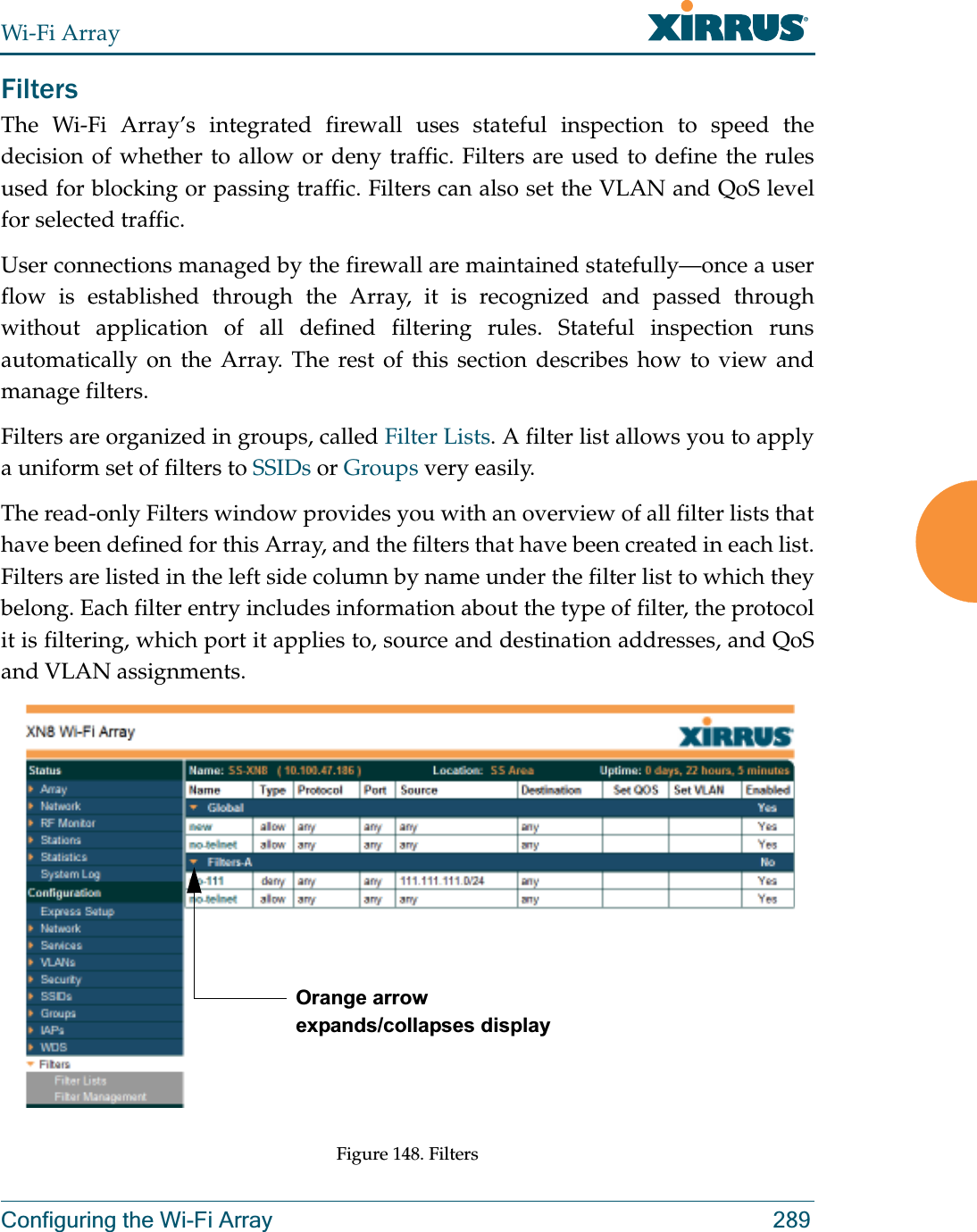
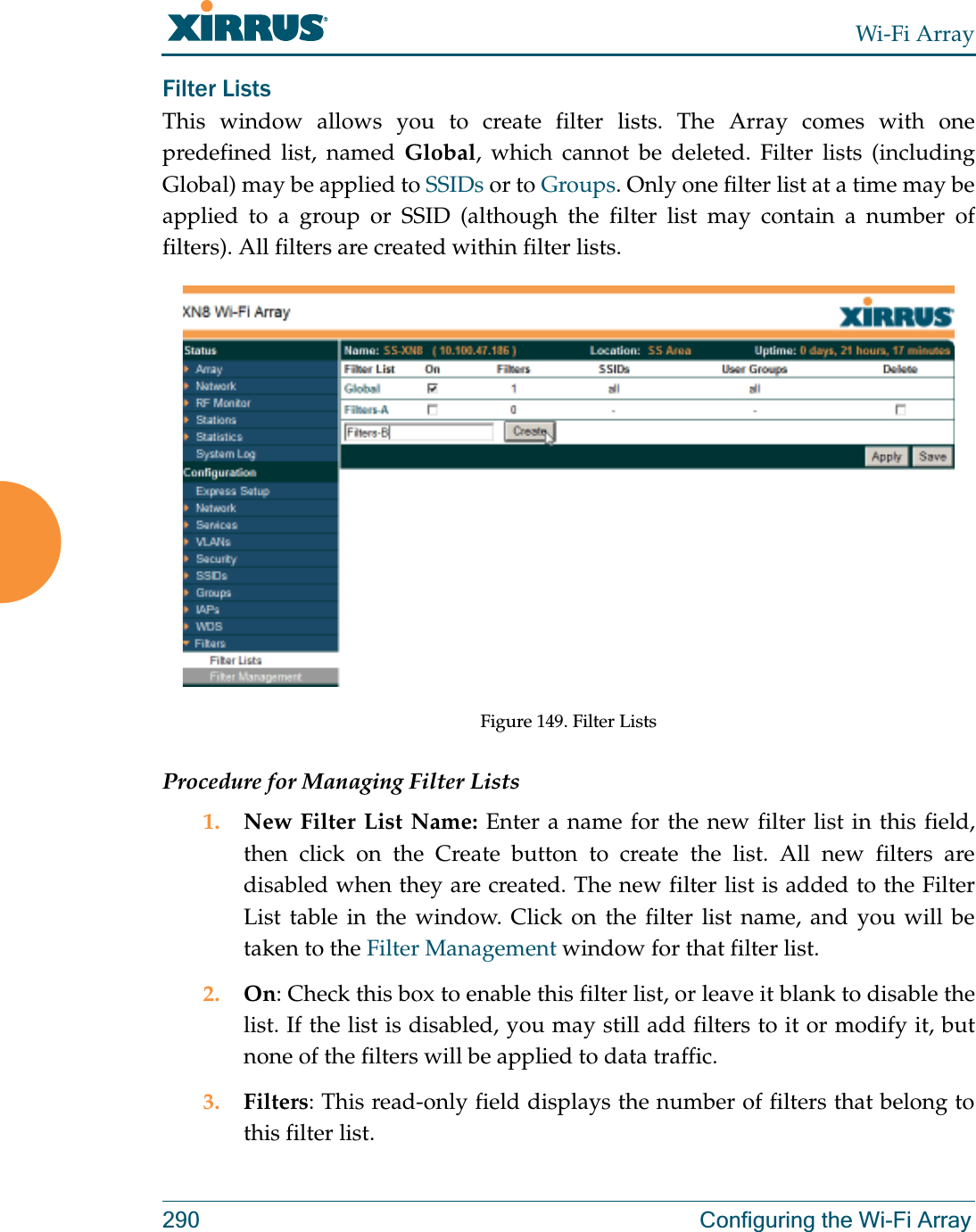
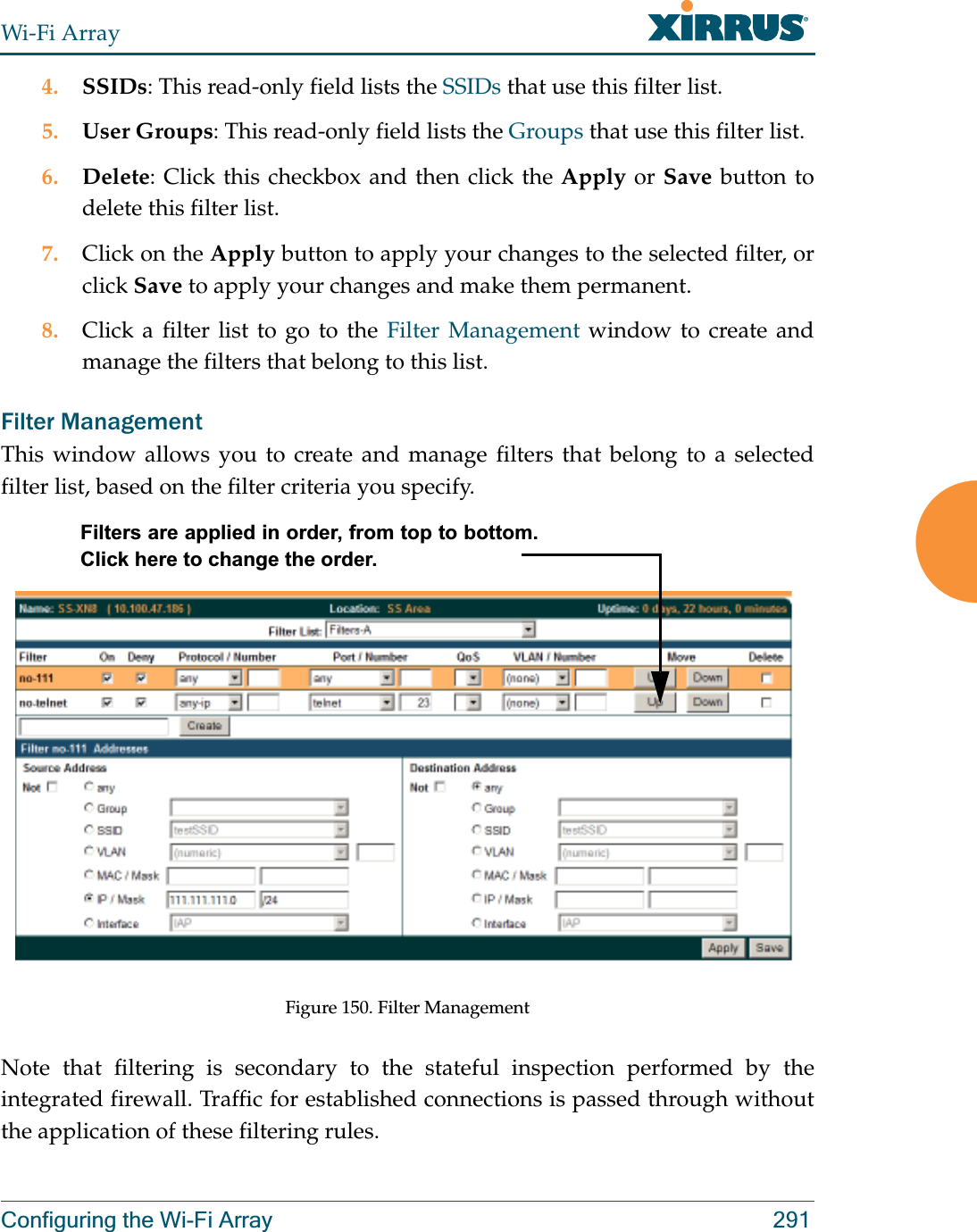
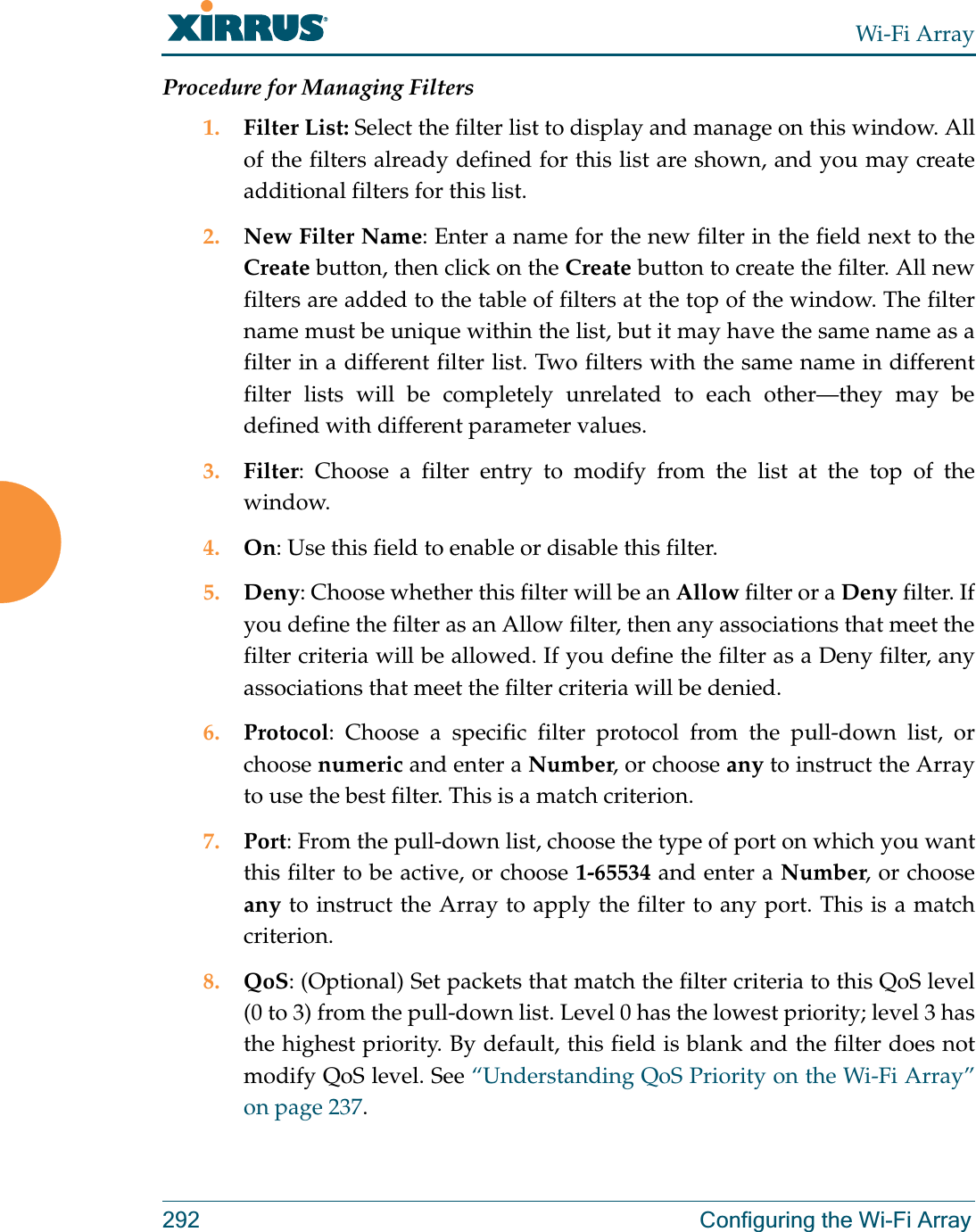
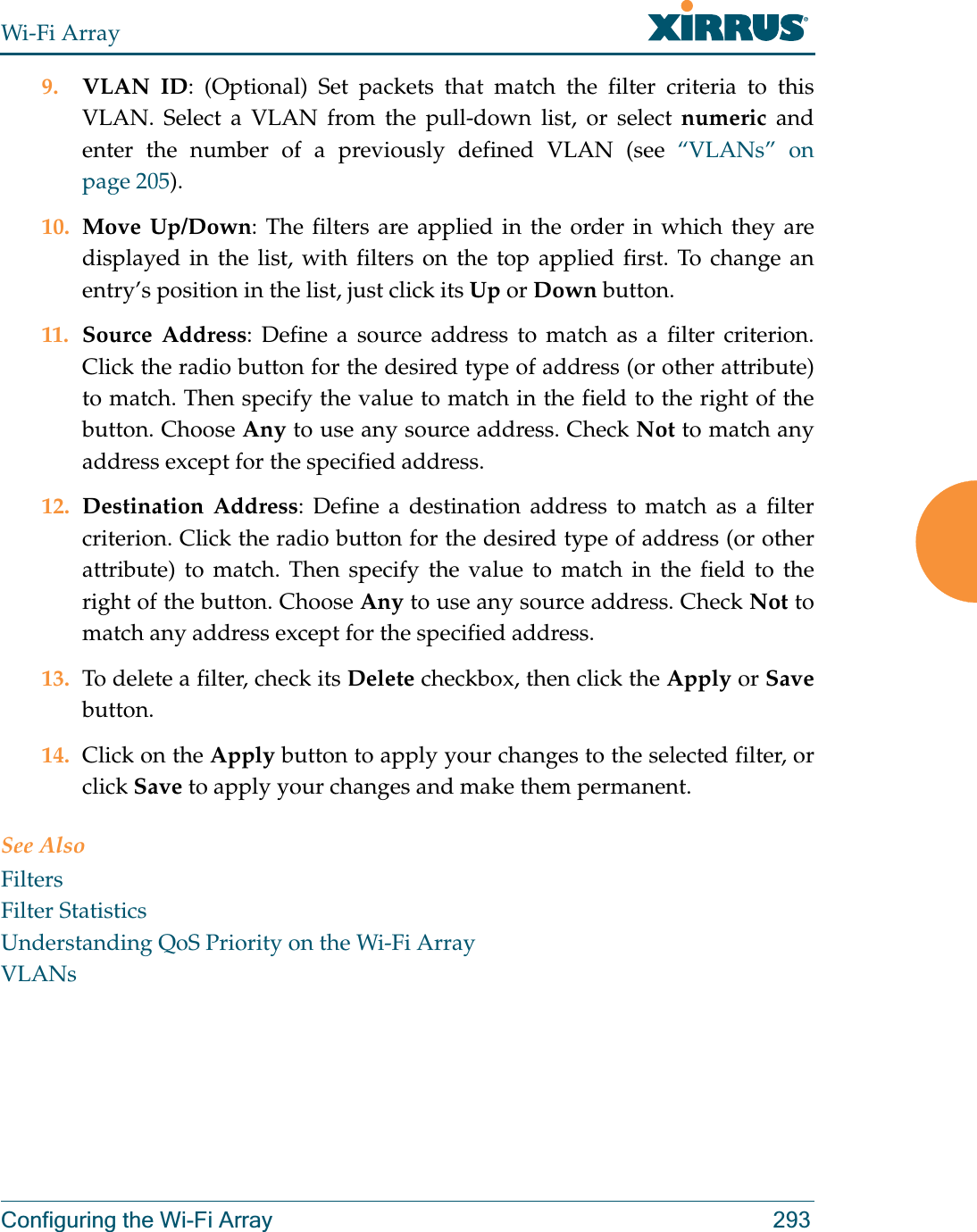
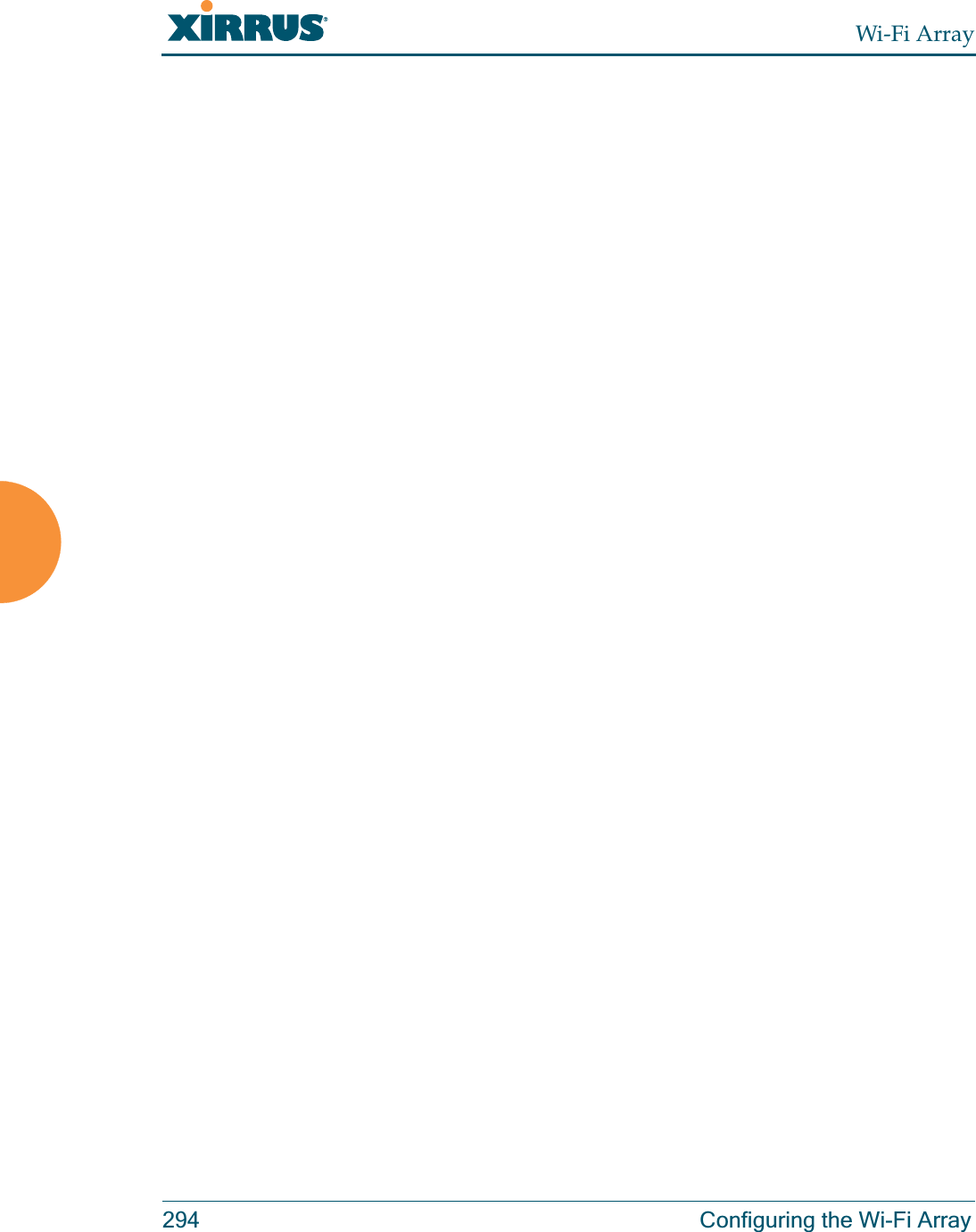
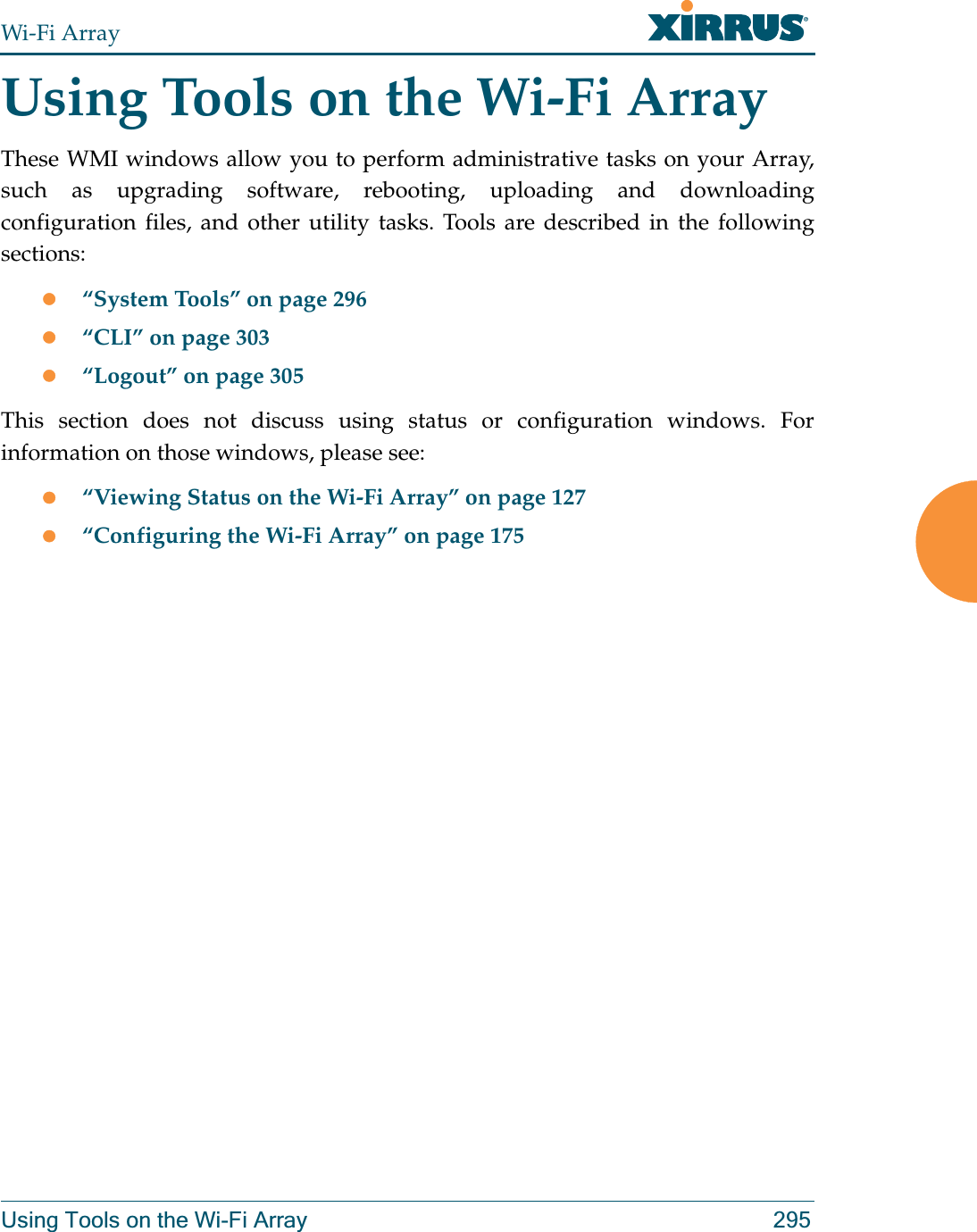
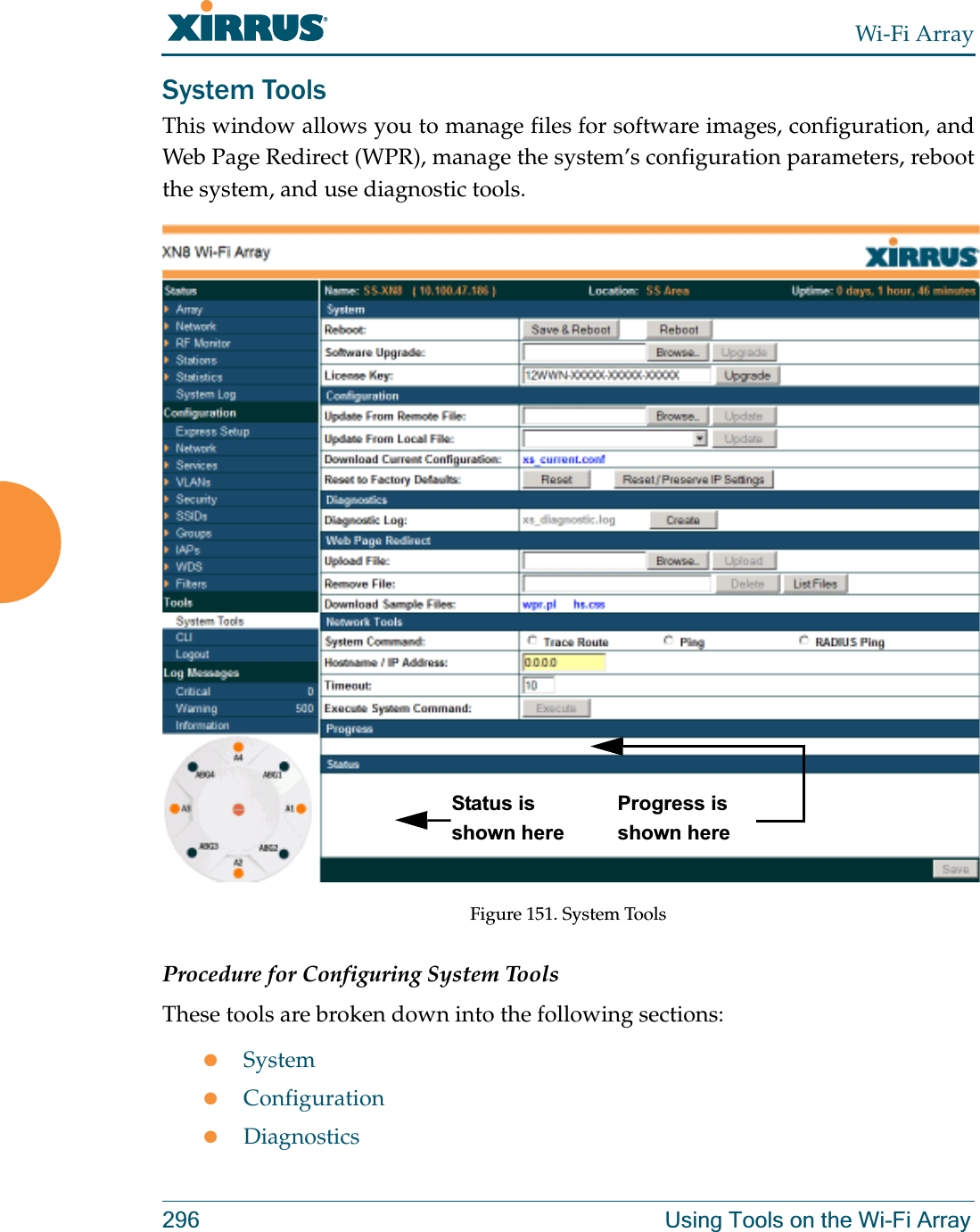
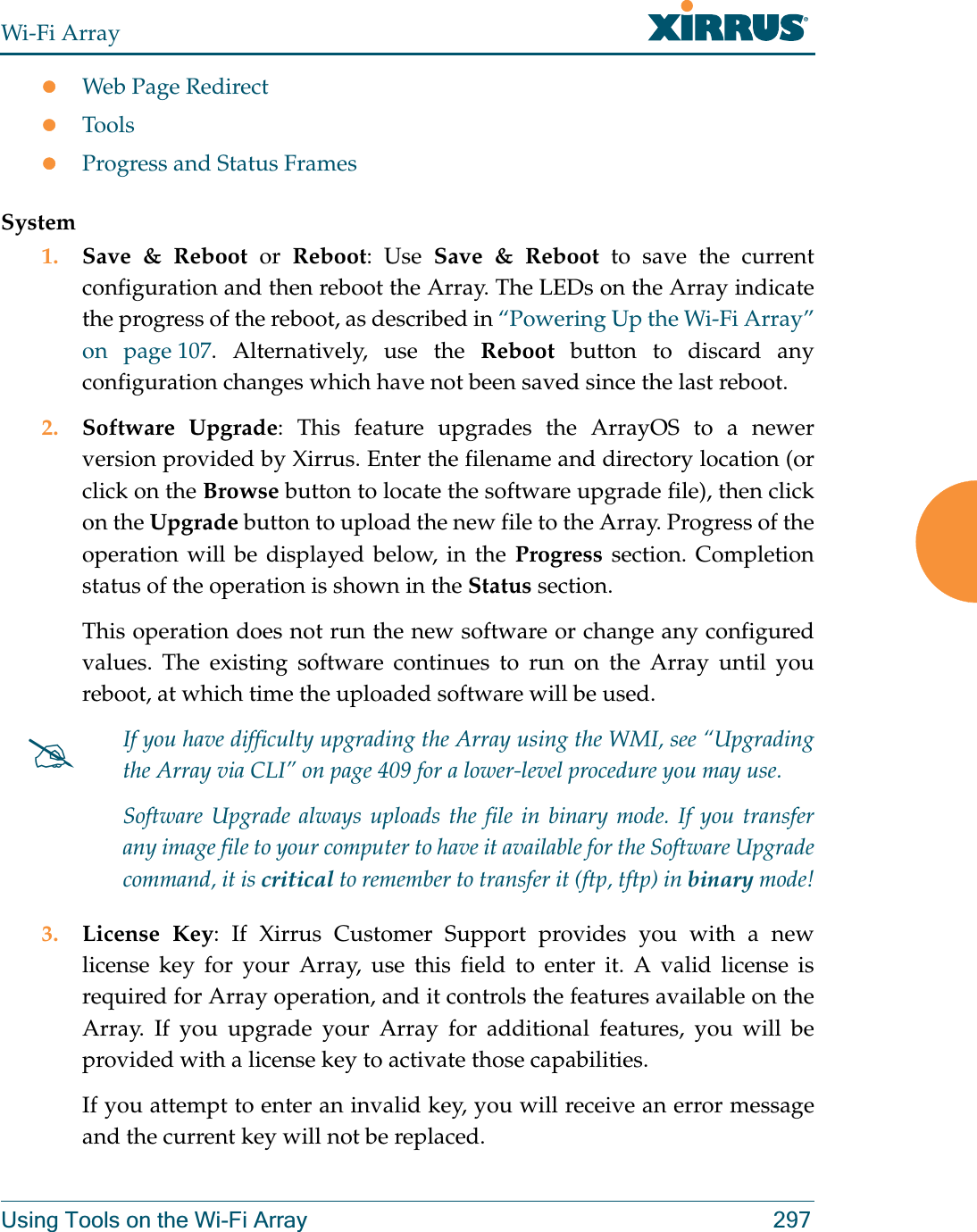
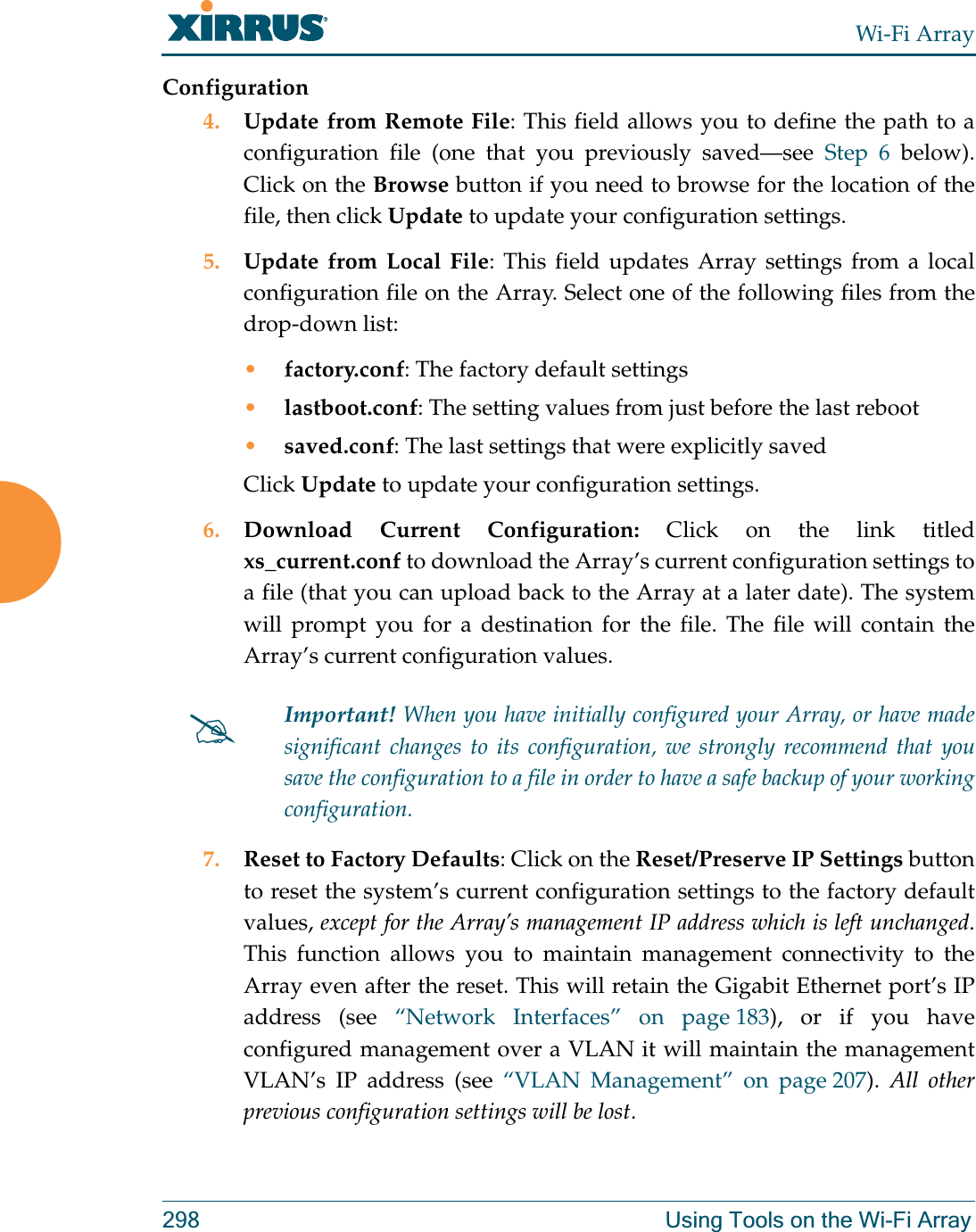
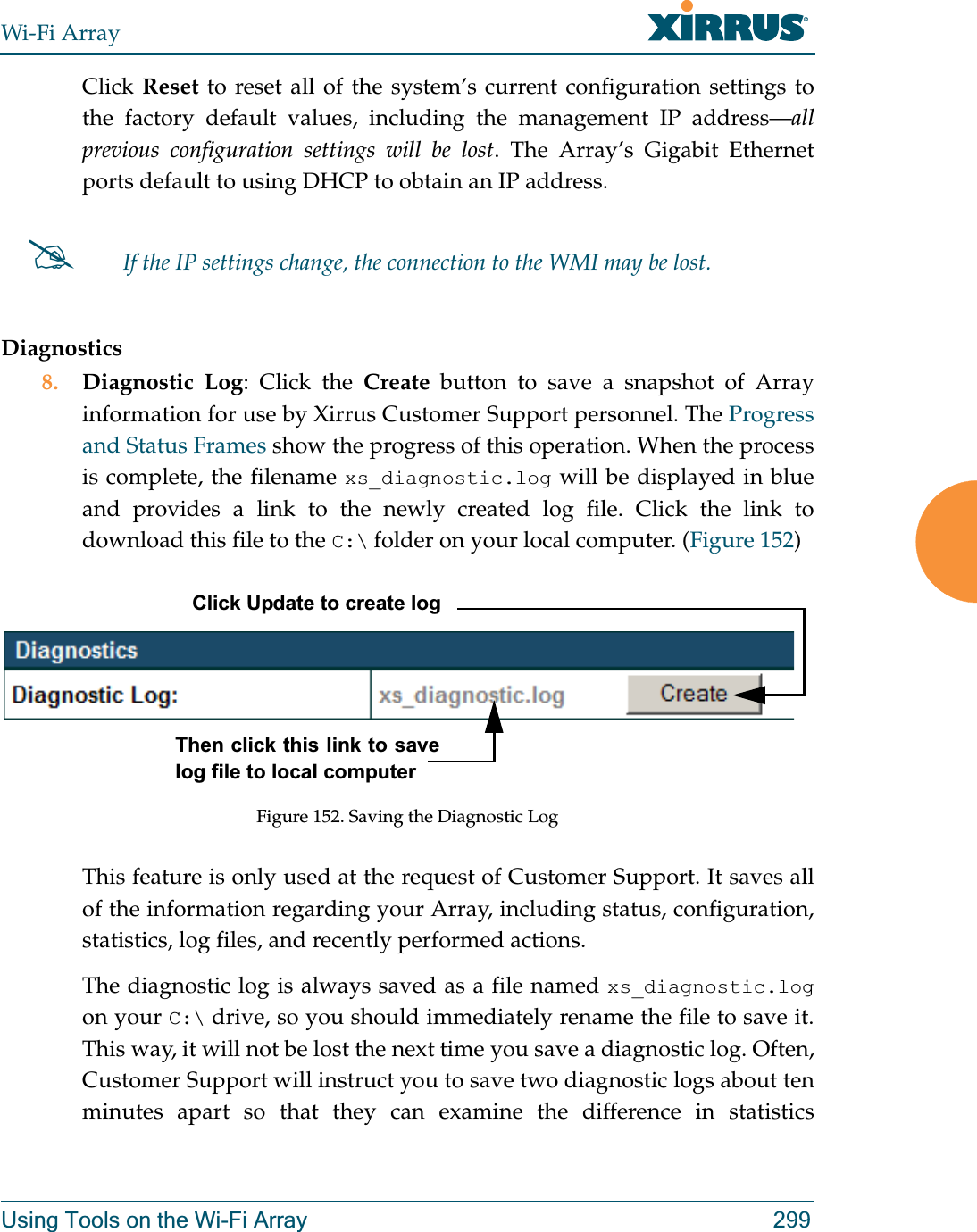
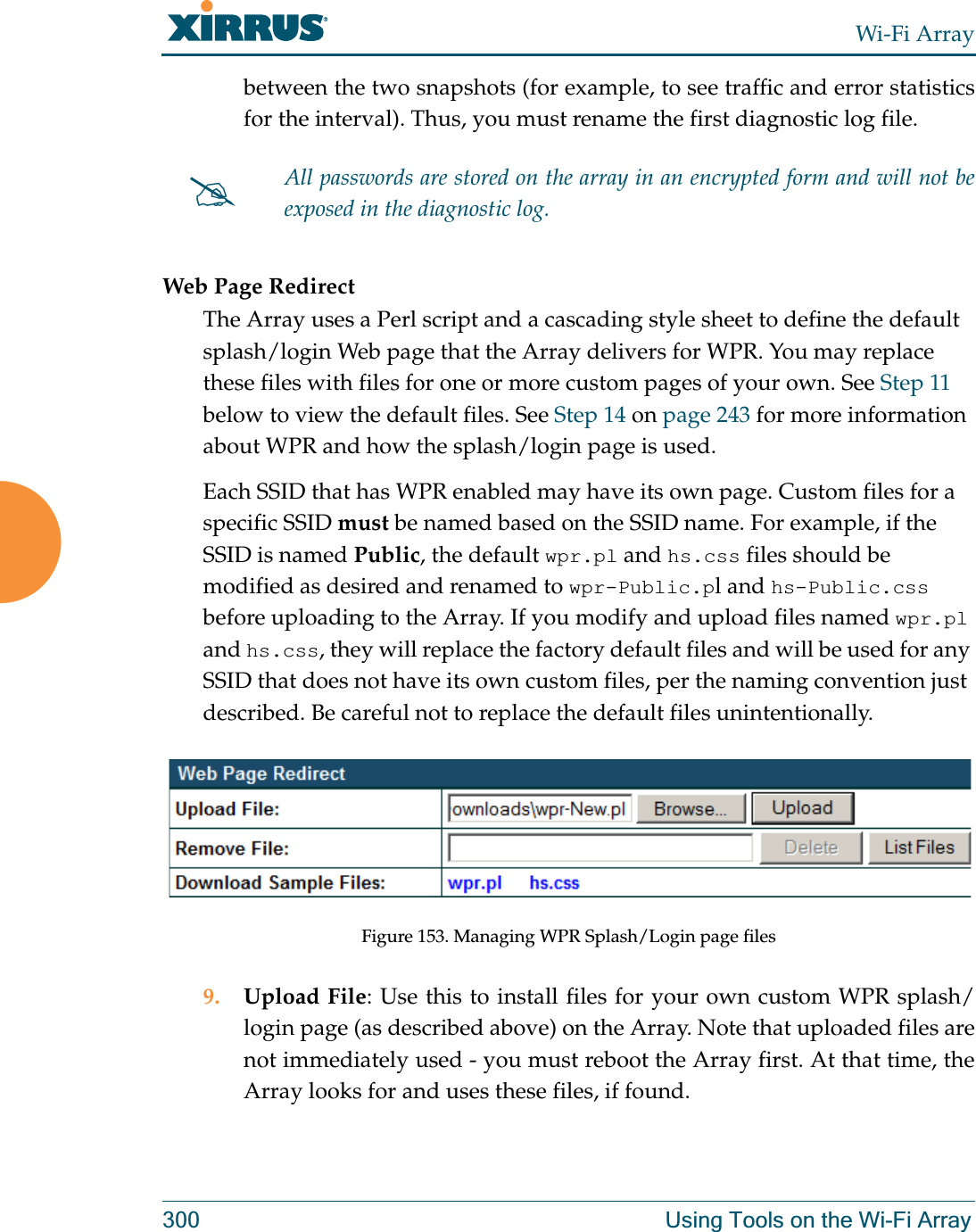
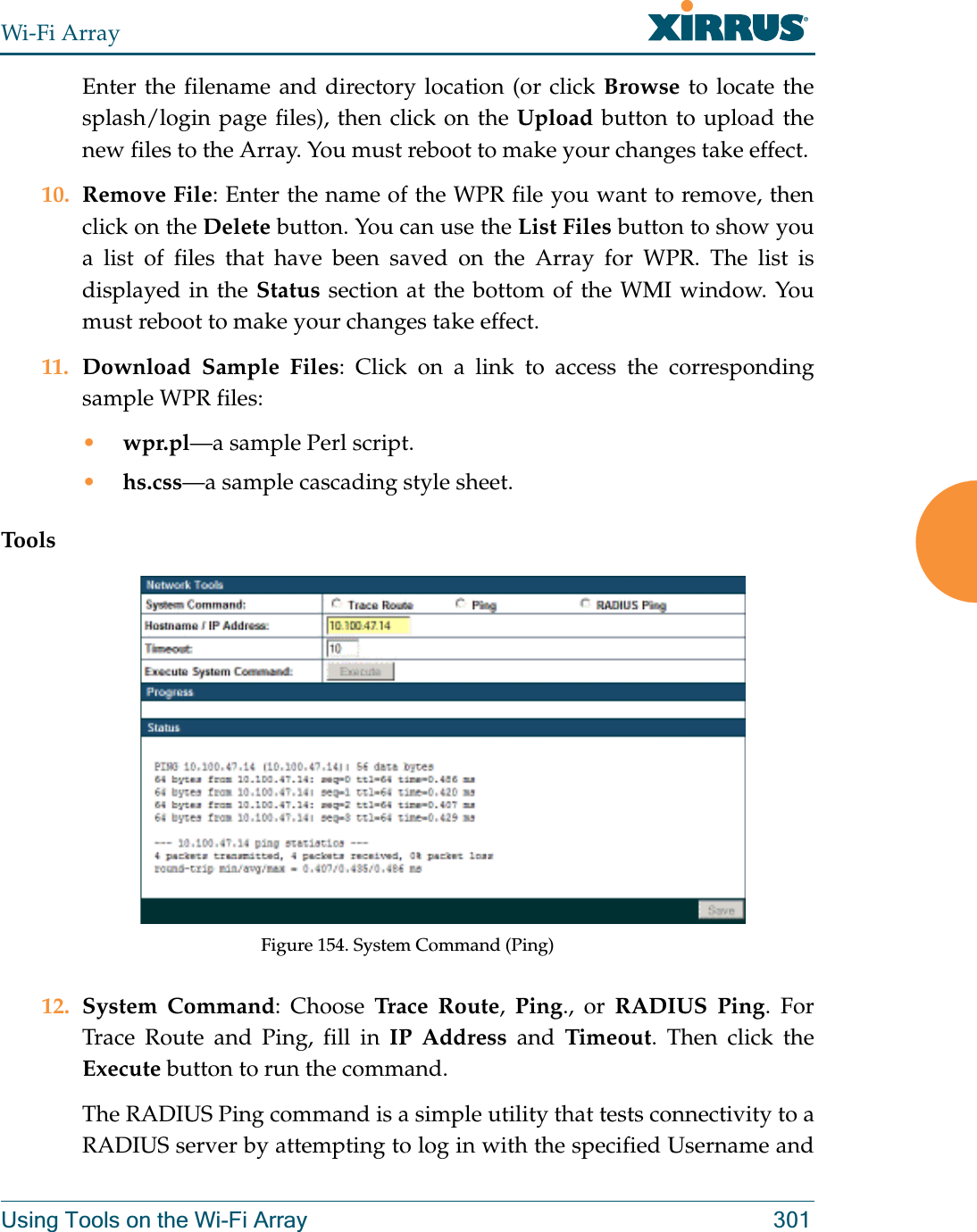
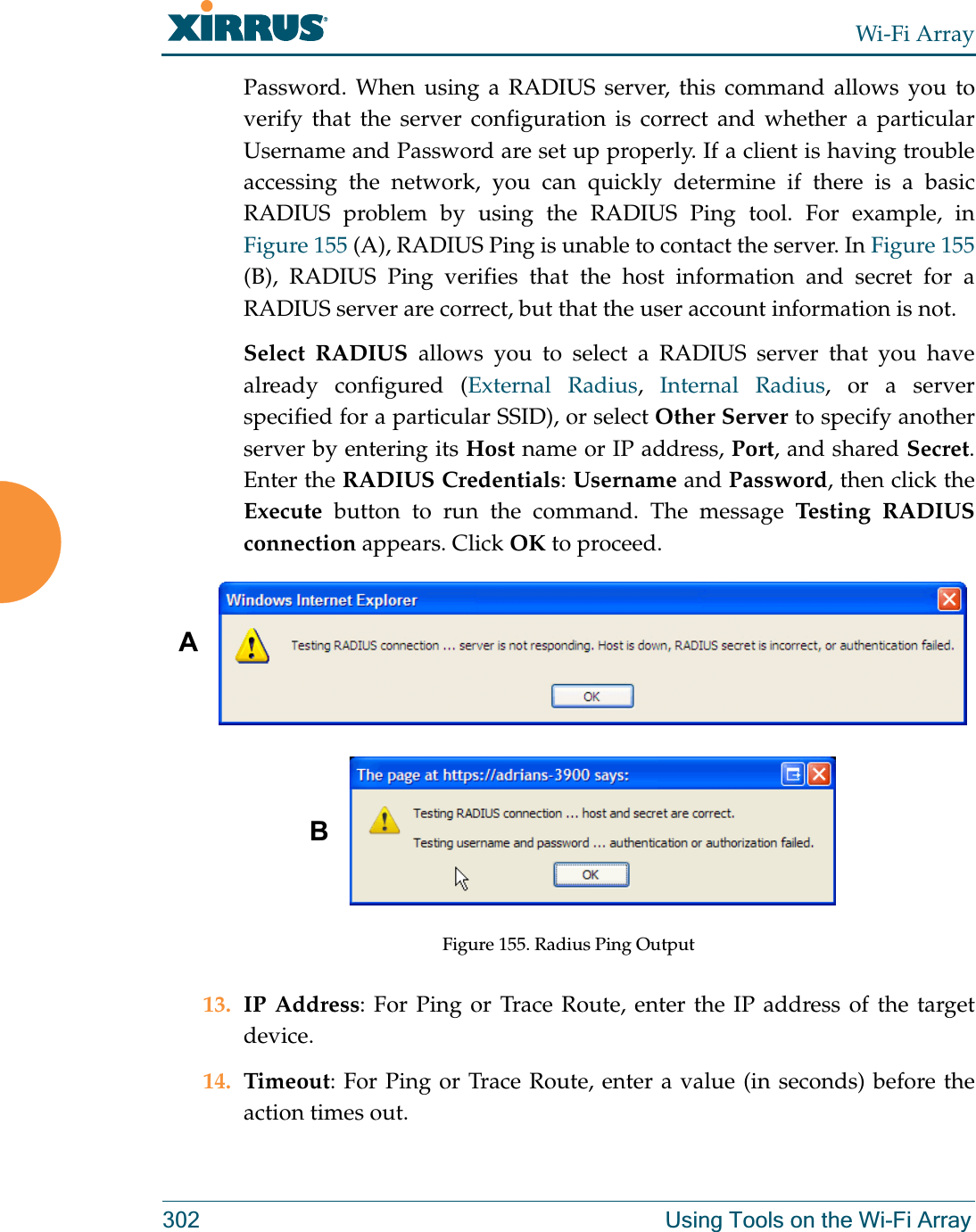
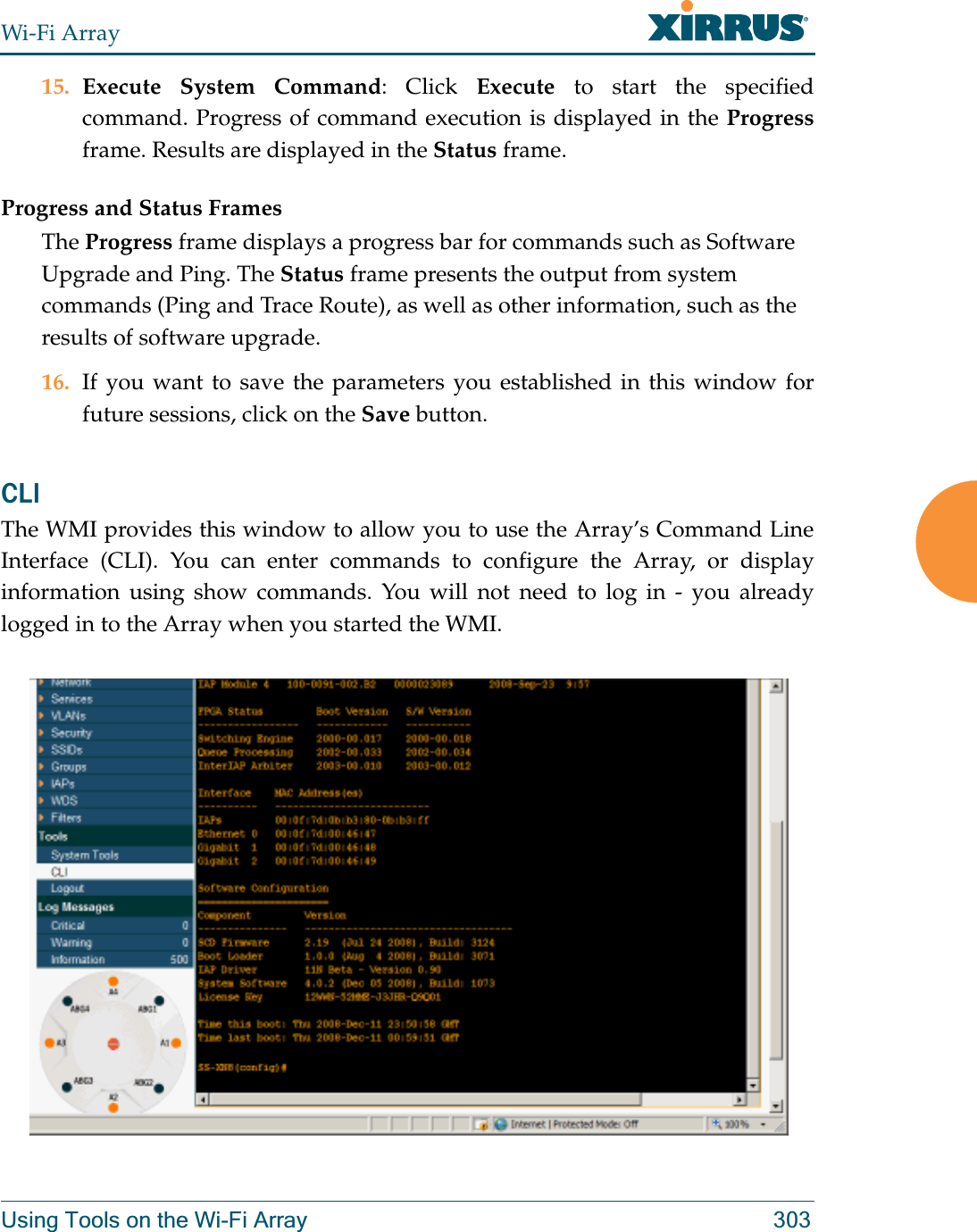
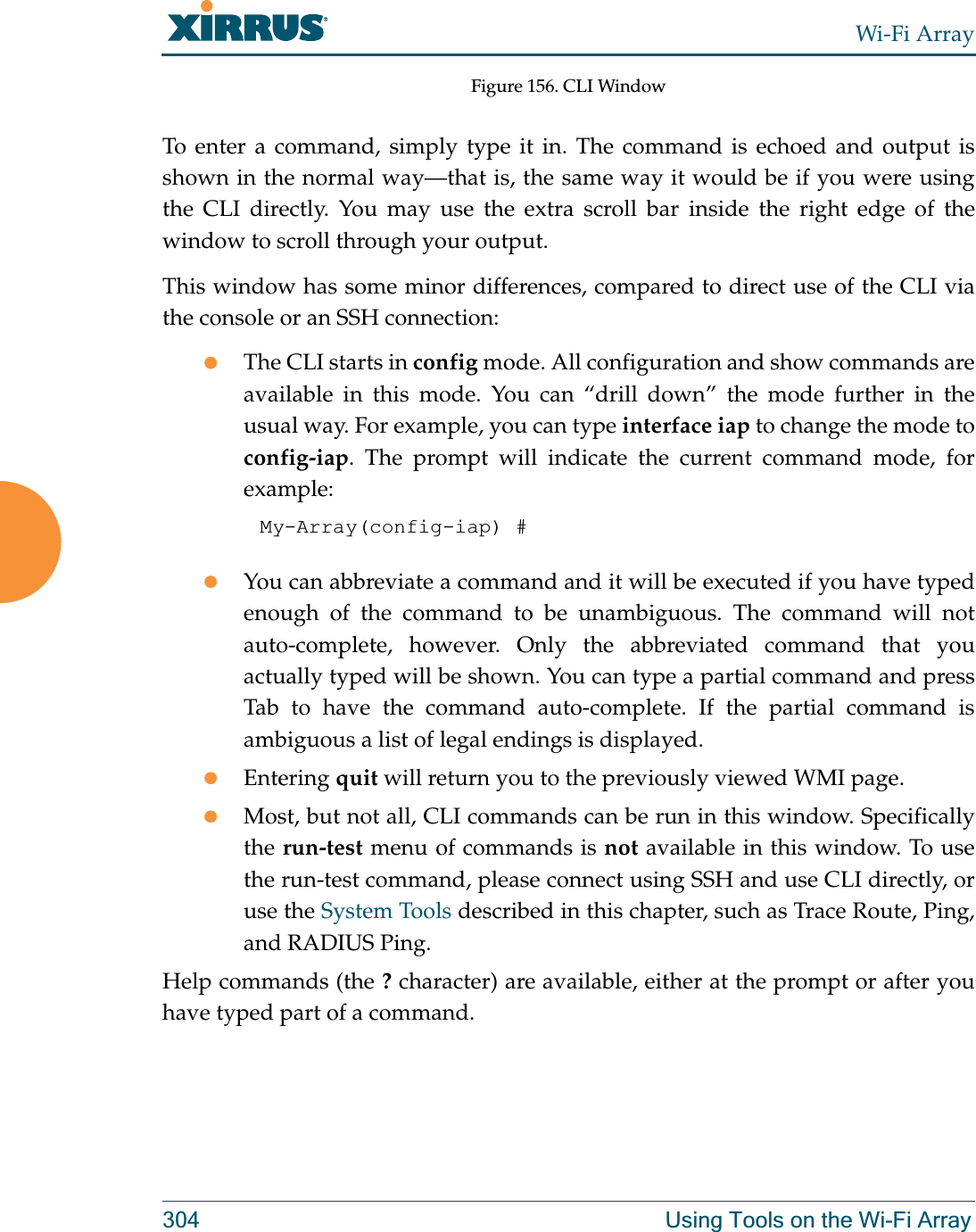
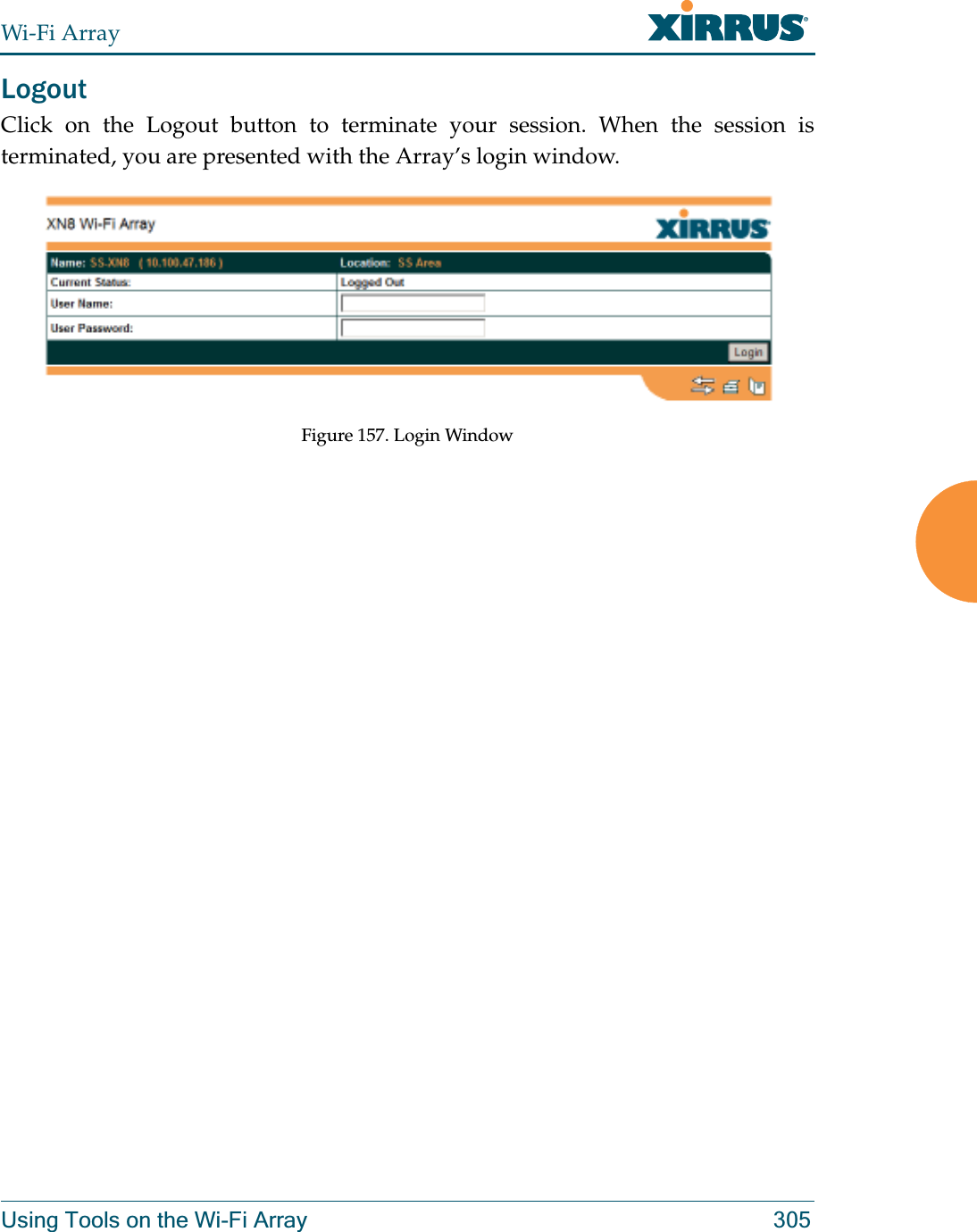
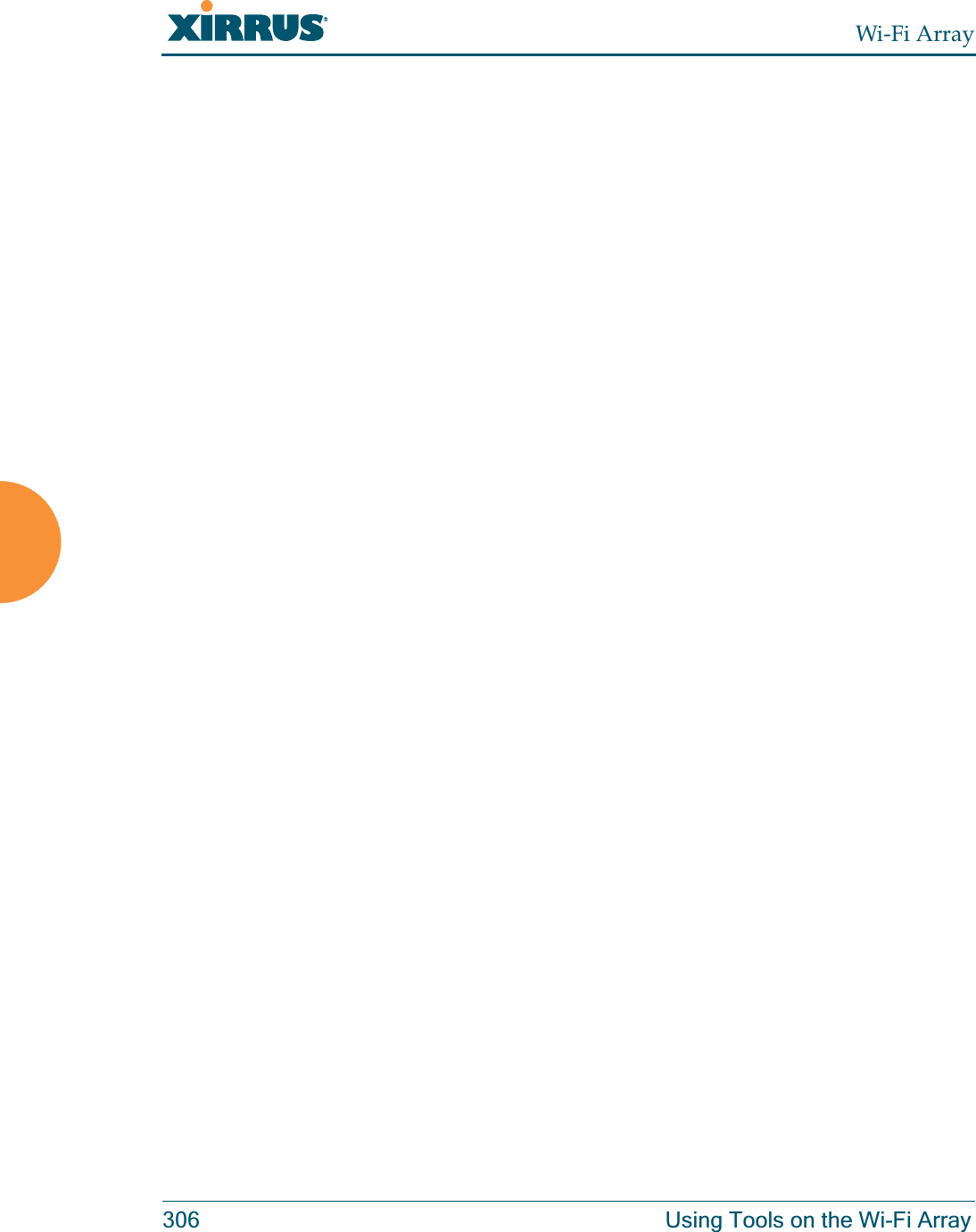
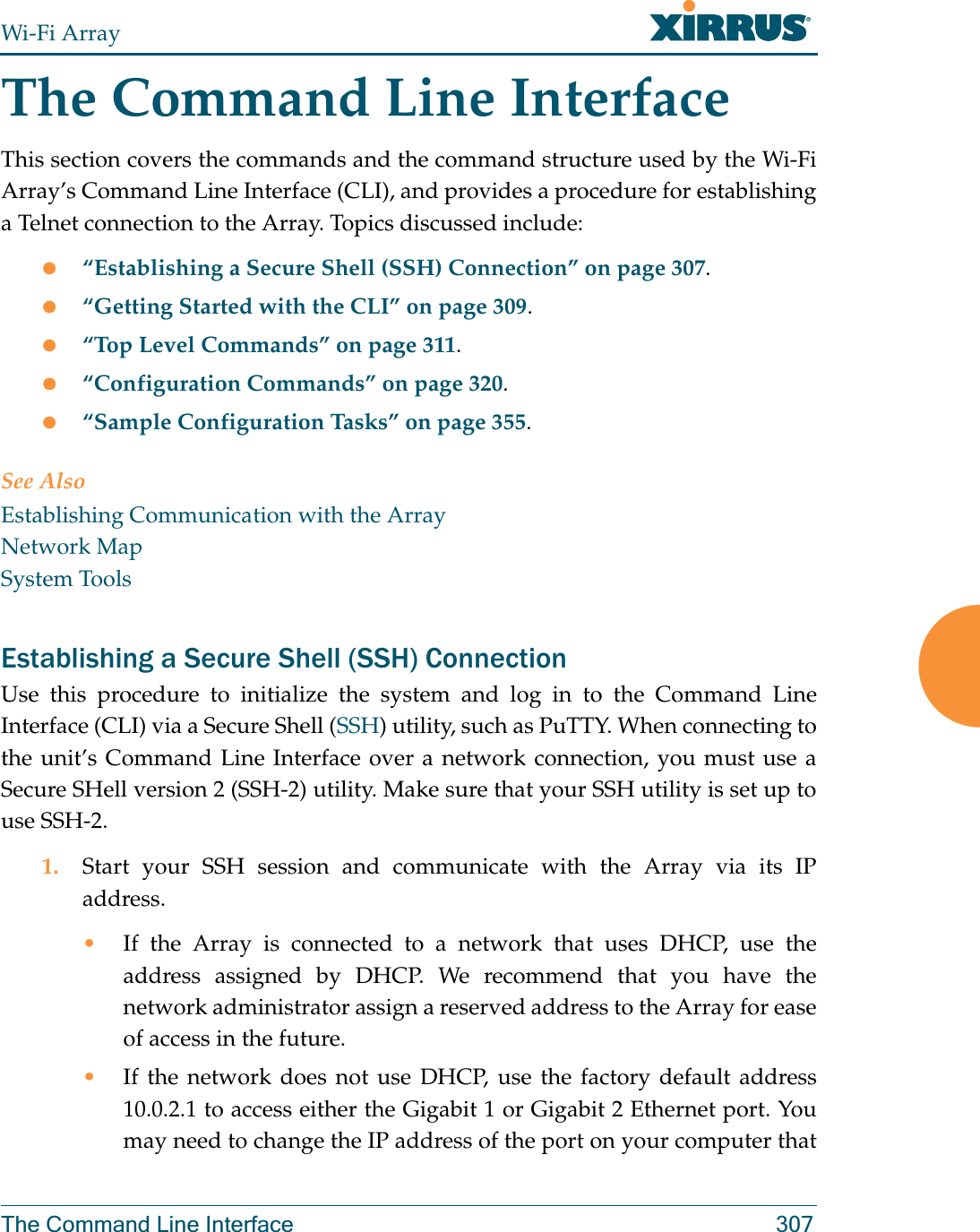
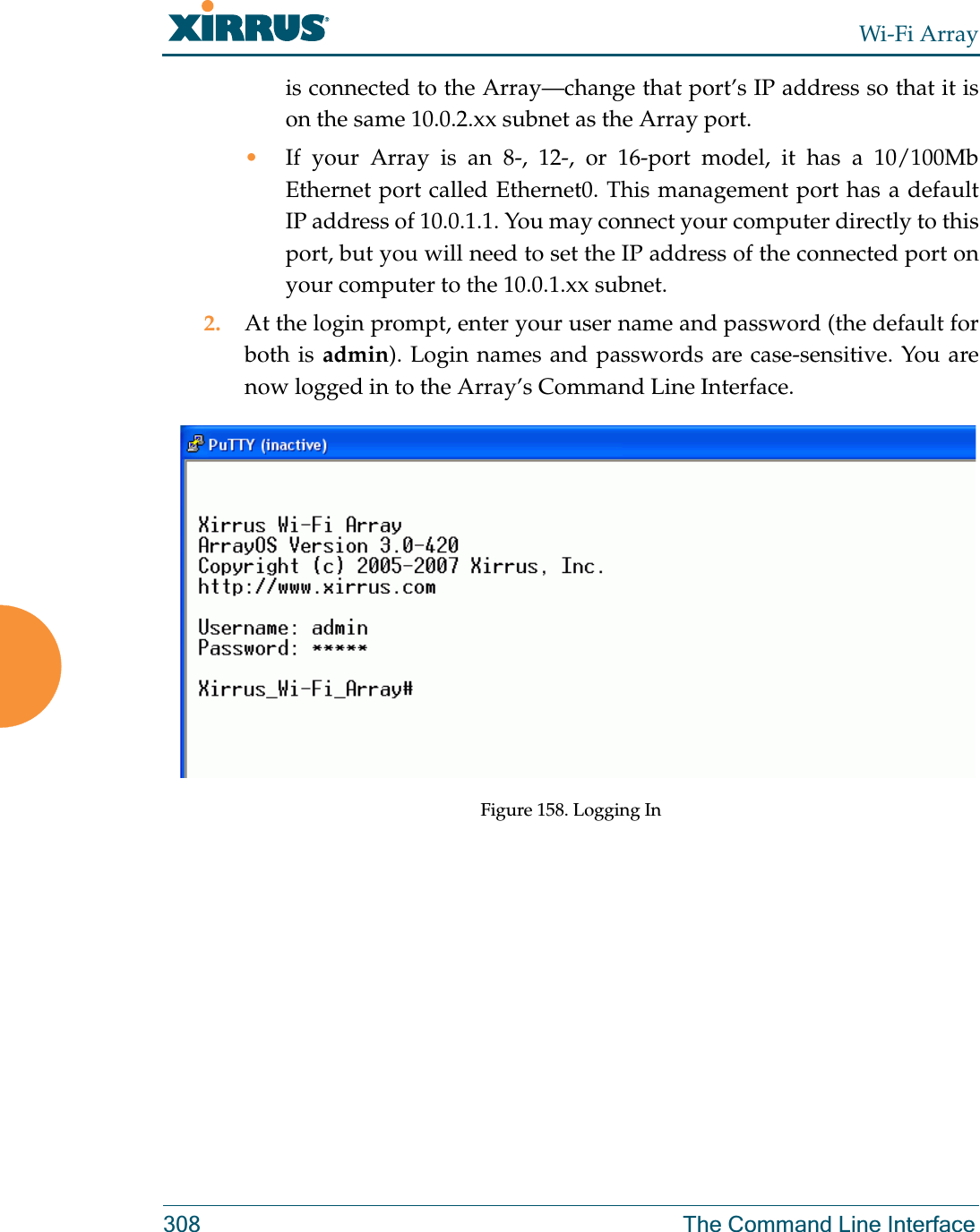
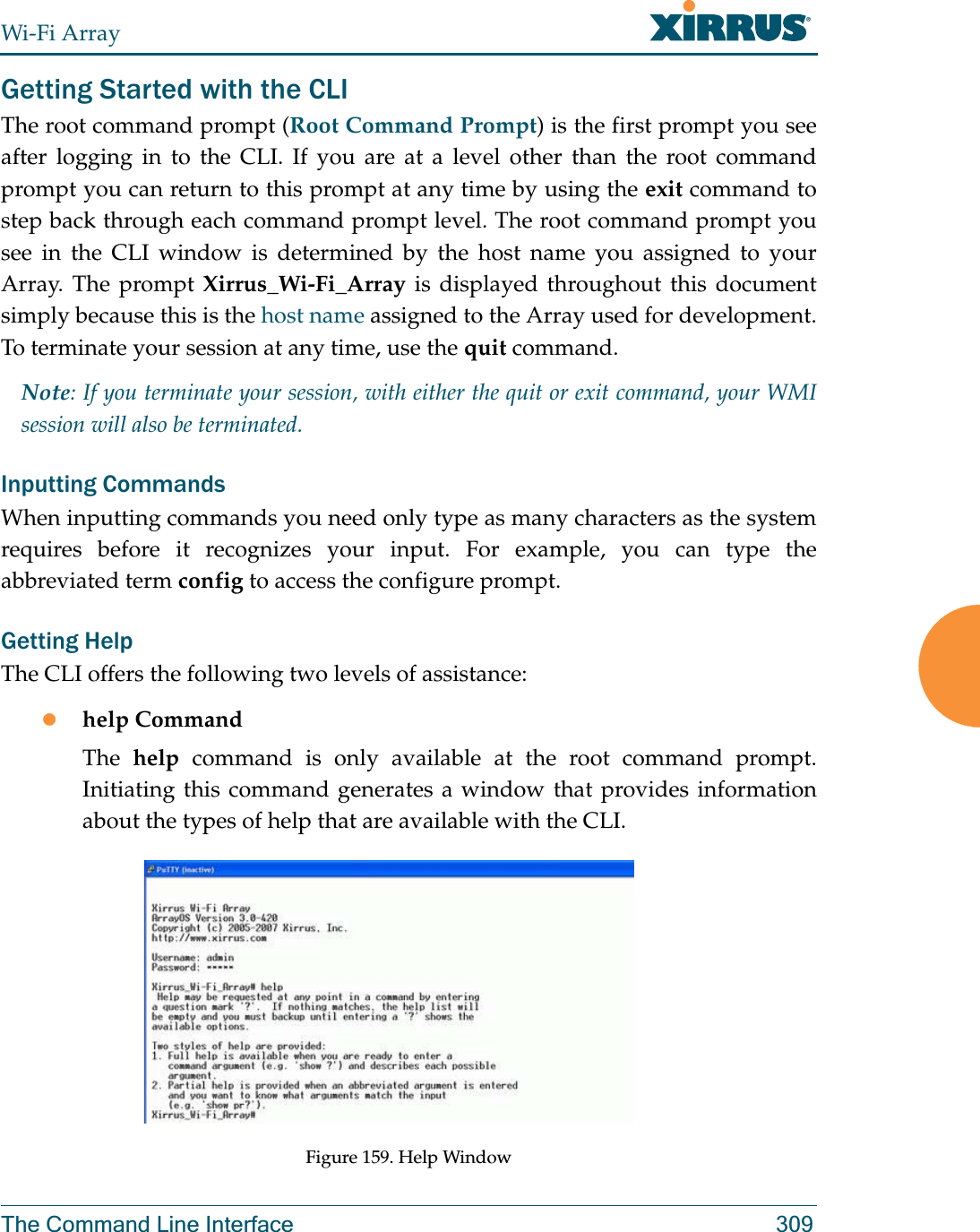
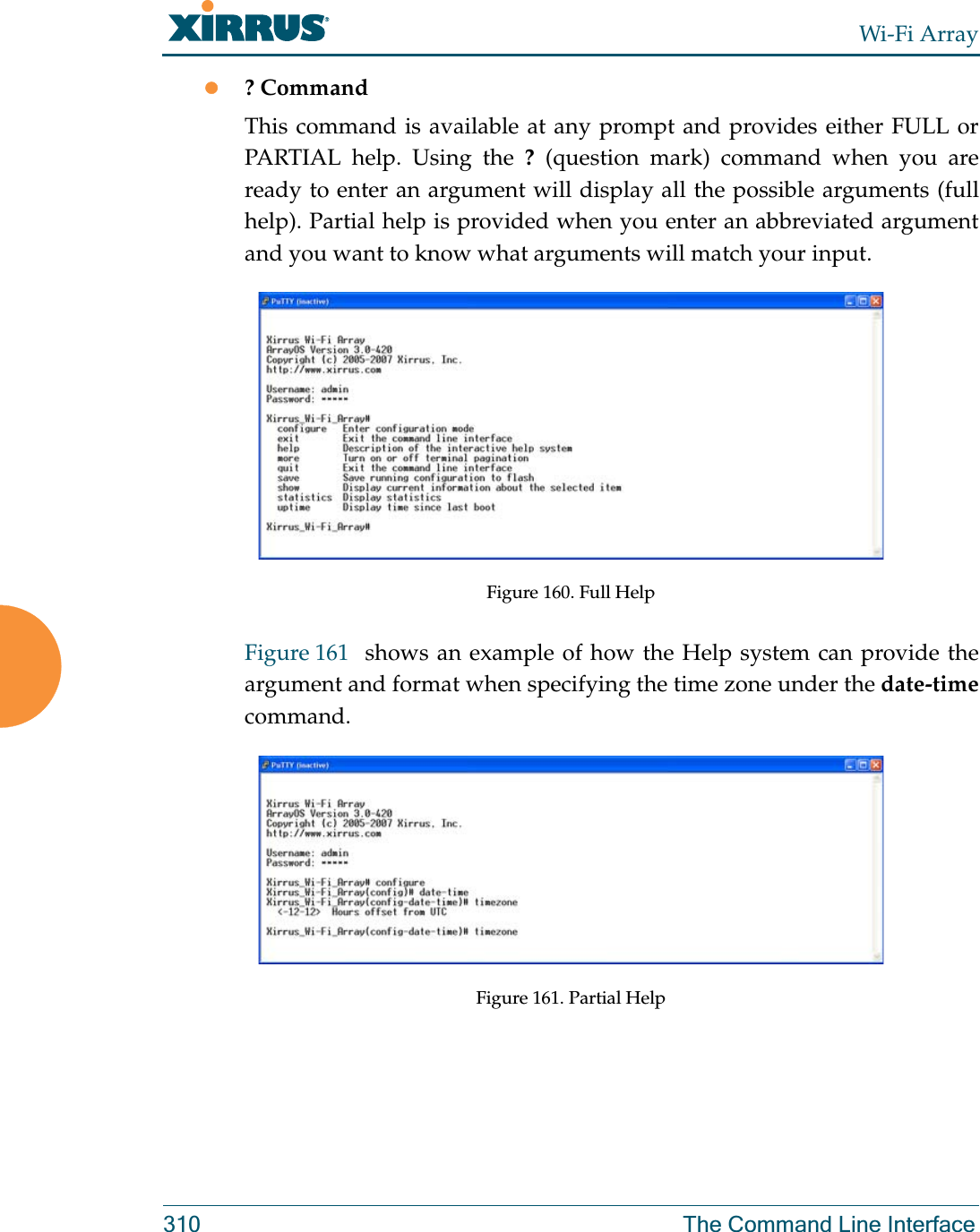
![Wi-Fi ArrayThe Command Line Interface 311Top Level CommandsThis section offers an at-a-glance view of all top level commands—organized alphabetically. Top level commands are defined here as commands that are directly accessible from the root command prompt (Xirrus_Wi-Fi_Array#). The root command prompt is based on the host name assigned to your Array. When inputting commands, be aware that all commands are case-sensitive.All other commands are considered second level configuration commands—these are the commands you use to configure specific elements of the Array’s features and functionality. For a listing of these commands with examples of command formats and structure, go to “Configuration Commands” on page 320.Root Command PromptThe following table shows the top level commands that are available from the root command prompt [Xirrus_Wi-Fi_Array].Command Description@ Type @n to execute command n (as shown by the history command).configure Enter the configuration mode. See “Configuration Commands” on page 320. exit Exit the CLI and terminate your session—if this command is used at any level other than the root command prompt you will simply exit the current level (step back) and return to the previous level.help Show a description of the interactive help system. See also, “Getting Help” on page 309. history List history of commands that have been executed.more Turn terminal pagination ON or OFF.quit Exit the Command Line Interface (from any level).search Search for pattern in show command output.](https://usermanual.wiki/Cambium-Networks/XN4.ArrayGuide-Rel4-0-RevW-part-2-of-2/User-Guide-1215330-Page-82.png)
![Wi-Fi Array312 The Command Line Interfaceconfigure CommandsThe following table shows the second level commands that are available with the top level configure command [Xirrus_Wi-Fi_Array(config)#].show Display information about the selected item. See “show Commands” on page 315. statistics Display statistical data about the Array. See “statistics Commands” on page 318. uptime Display the elapsed time since the last boot.Command Description@ Type @n to execute command n (as shown by the history command).acl Configure the Access Control List.admin Define administrator access parameters. cdp Configure Cisco Discovery Protocol settings. clear Remove/clear the requested elements.contact-info Contact information for assistance on this Array.date-time Configure date and time settings.dhcp-server Configure the DHCP Server.dns Configure the DNS settings.end Exit the configuration mode.exit Go UP one mode level.file Manage the file system.filter Define protocol filter parameters.fips Enable/disable FIPS 140-2, Level 2 Security.Command Description](https://usermanual.wiki/Cambium-Networks/XN4.ArrayGuide-Rel4-0-RevW-part-2-of-2/User-Guide-1215330-Page-83.png)
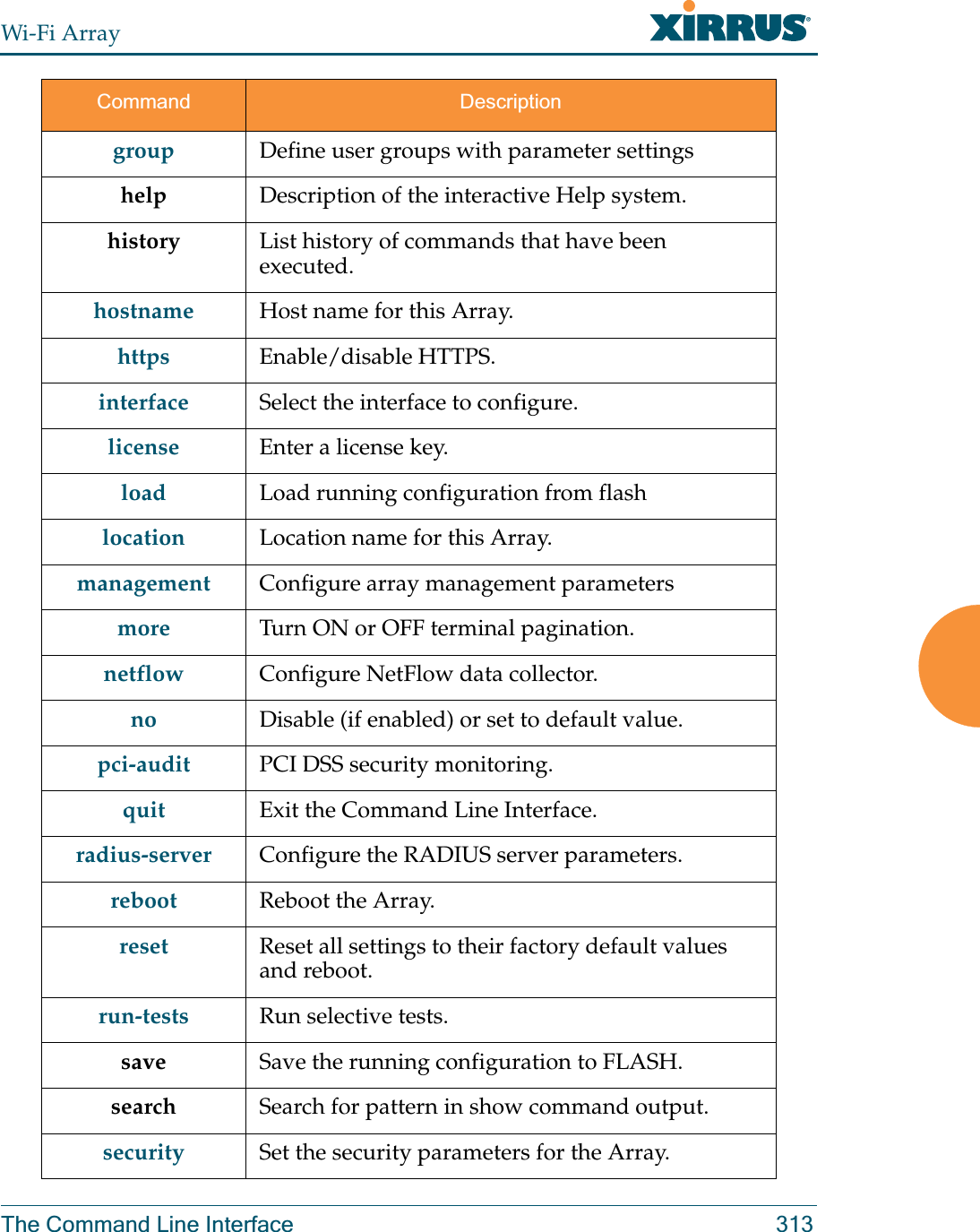
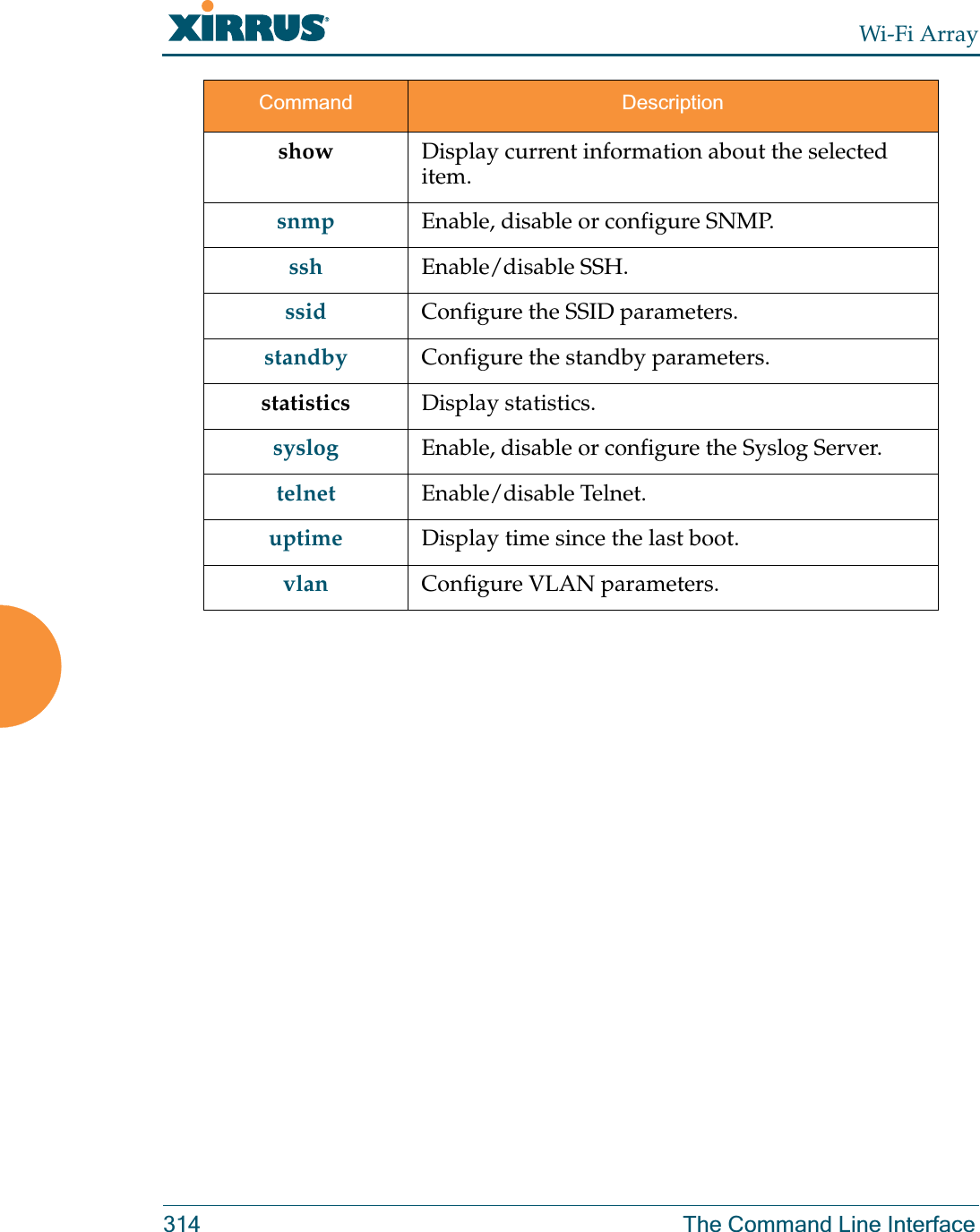
![Wi-Fi ArrayThe Command Line Interface 315show CommandsThe following table shows the second level commands that are available with the top level show command [Xirrus_Wi-Fi_Array# show].Command Descriptionacl Display the Access Control List.admin Display the administrator list or login information.array-info Display system information.associated-stationsDisplay stations that have associated to the Array.boot-env Display Boot loader environment variables. capabilities Display detailed station capabilities. cdp Display Cisco Discovery Protocol settings.channel-list Display list of Array’s 802.11a(n) and bg(n) channels. clear-text Display and enter passwords and secrets in the clear. conntrack Display the Connection Tracking table. console Display terminal settings.contact-info Display contact information.country-list Display countries that the Array can be set to support. date-time Display date and time settings summary.dhcp-leases Display IP addresses (leases) assigned to stations by the DHCP server. dhcp-pool Display internal DHCP server settings summary information.](https://usermanual.wiki/Cambium-Networks/XN4.ArrayGuide-Rel4-0-RevW-part-2-of-2/User-Guide-1215330-Page-86.png)
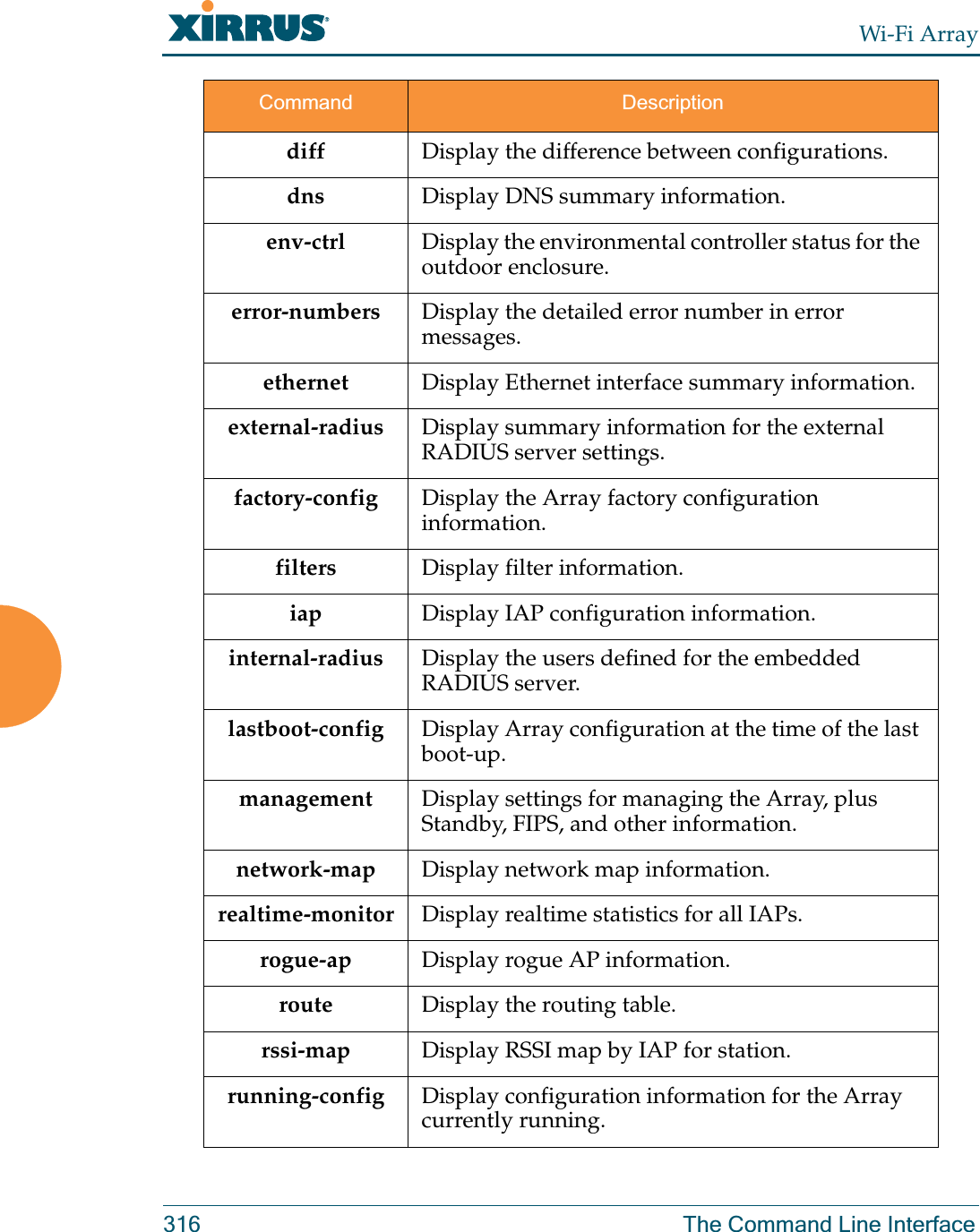
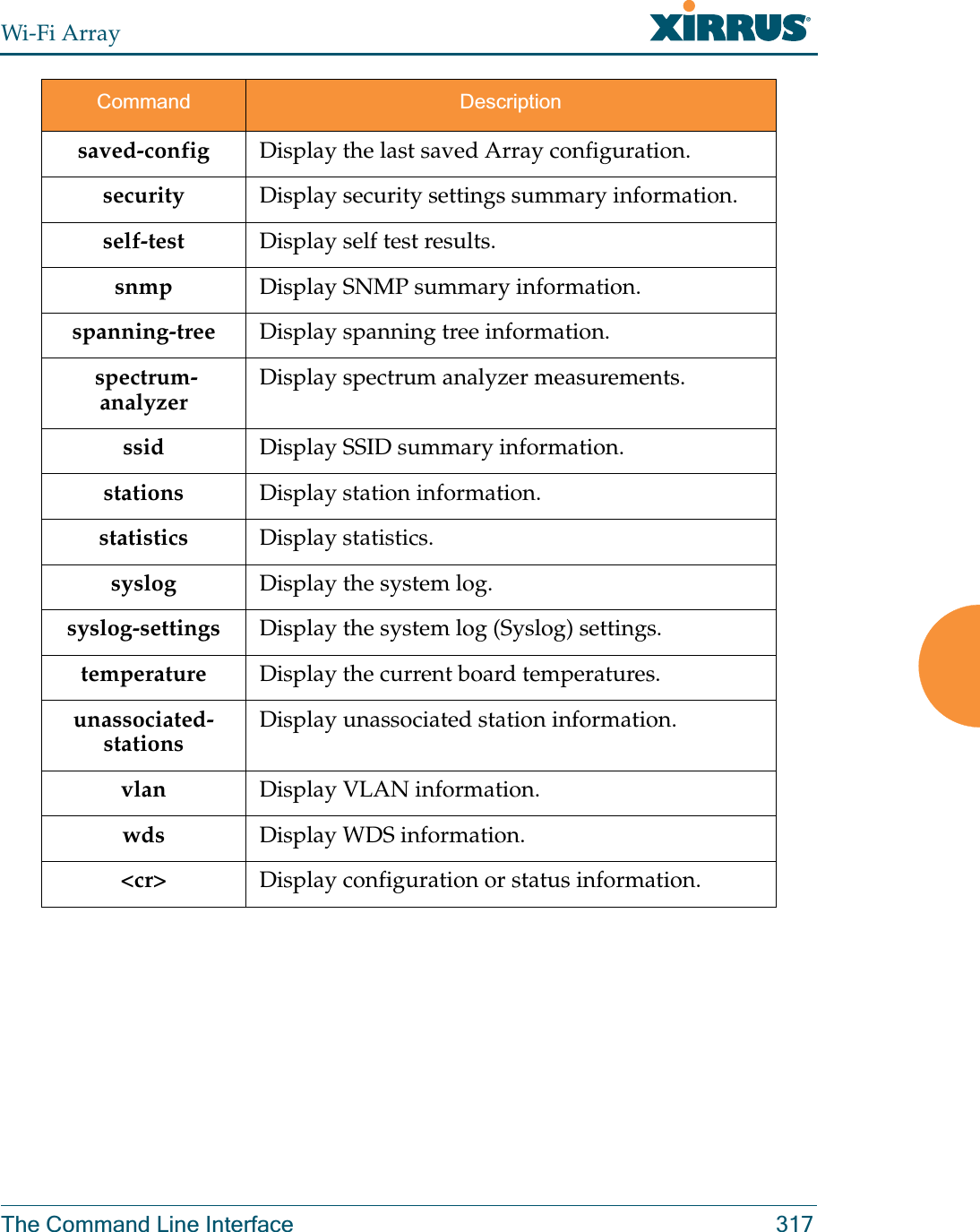
![Wi-Fi Array318 The Command Line Interfacestatistics CommandsThe following table shows the second level commands that are available with the top level statistics command [Xirrus_Wi-Fi_Array# statistics].Command Descriptionethernet Display statistical data for all Ethernet interfaces.Ethernet Nameeth0, gig1, gig2Display statistical data for the defined Ethernet interface (either eth0, gig1 or gig2).FORMAT:statistics gig1 filter Display statistics for defined filters (if any).FORMAT:statistics filter [detail] filter-list Display statistics for defined filter list (if any).FORMAT:statistics filter <filter-list> iap Display statistical data for the defined IAP.FORMAT:statistics iap abgn4station Display statistical data about associated stations.FORMAT:statistics station billwvlan Display statistical data for the defined VLAN. You must use the VLAN number (not its name) when defining a VLAN.FORMAT:statistics vlan 1wds Display statistical data for the defined active WDS (Wireless Distribution System) links.FORMAT:statistics wds 1](https://usermanual.wiki/Cambium-Networks/XN4.ArrayGuide-Rel4-0-RevW-part-2-of-2/User-Guide-1215330-Page-89.png)
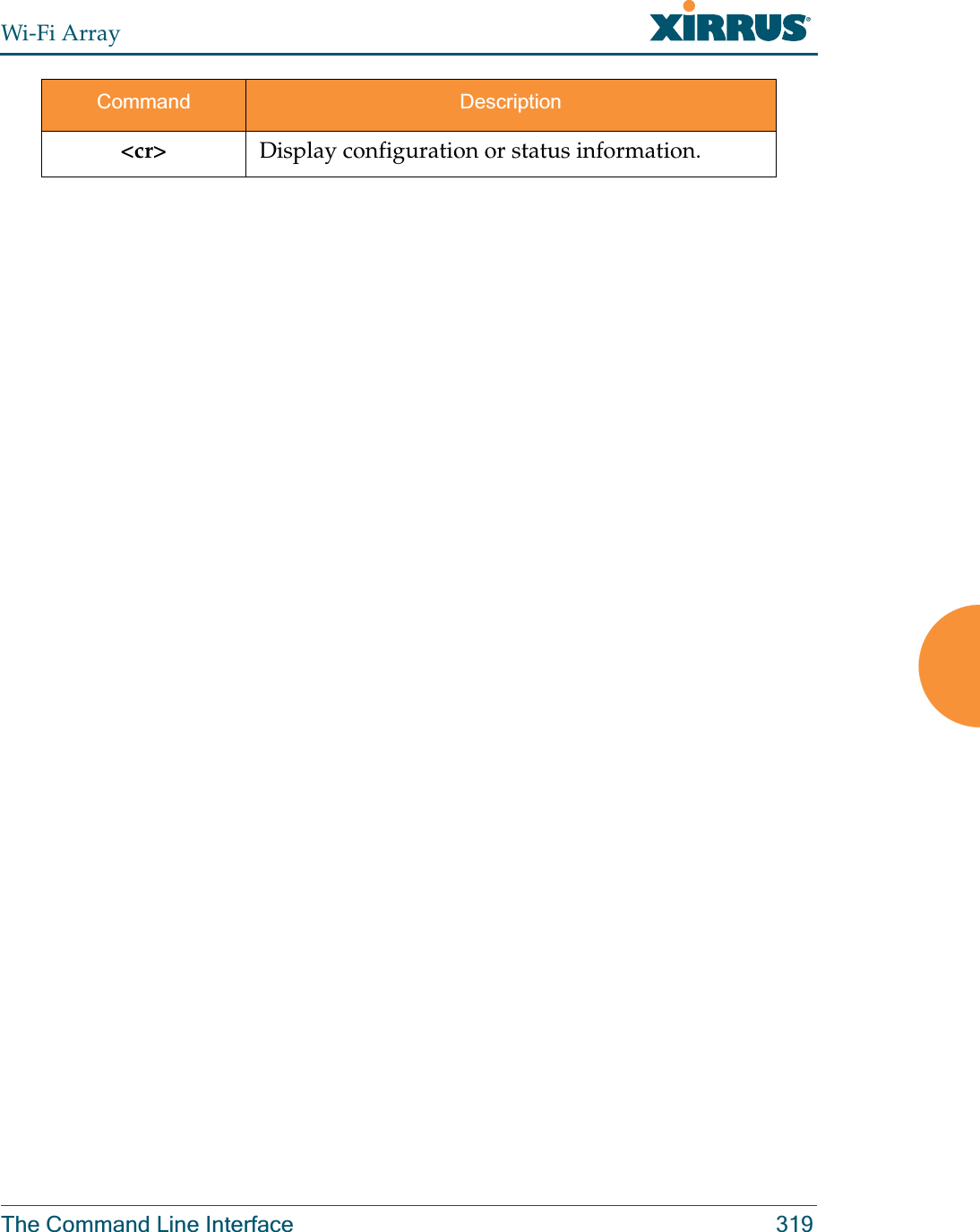
![Wi-Fi Array320 The Command Line InterfaceConfiguration CommandsAll configuration commands are accessed by using the configure command at the root command prompt (Xirrus_Wi-Fi_Array#). This section provides a brief description of each command and presents sample formats where deemed necessary. The commands are organized alphabetically. When inputting commands, be aware that all commands are case-sensitive.To see examples of some of the key configuration tasks and their associated commands, go to “Sample Configuration Tasks” on page 355.acl The acl command [Xirrus_Wi-Fi_Array(config)# acl] is used to configure the Access Control List.Command Descriptionadd Add a MAC address to the list.FORMAT:acl add AA:BB:CC:DD:EE:FFdel Delete a MAC address from the list.FORMAT:acl del AA:BB:CC:DD:EE:FFdisable Disable the Access Control ListFORMAT:acl disableenable Enable the Access Control ListFORMAT:acl enablereset Delete all MAC addresses from the list.FORMAT:acl reset](https://usermanual.wiki/Cambium-Networks/XN4.ArrayGuide-Rel4-0-RevW-part-2-of-2/User-Guide-1215330-Page-91.png)
![Wi-Fi ArrayThe Command Line Interface 321admin The admin command [Xirrus_Wi-Fi_Array(config-admin)#] is used to configure the Administrator List.Command Descriptionadd Add a user to the Administrator List.FORMAT:admin add [userID]del Delete a user to the Administrator List.FORMAT:admin del [userID]edit Modify user in the Administrator List.FORMAT:admin edit [userID]radius Define a RADIUS server to be used for authenticating administrators.FORMAT:admin radius [disable | enable | off | on | timeout <seconds> | auth-type [PAP | CHAP]] admin radius [primary |secondary] port <portid> server [<ip-addr> | <host>] secret <shared-secret>reset Delete all users and restore the default user.FORMAT:admin reset](https://usermanual.wiki/Cambium-Networks/XN4.ArrayGuide-Rel4-0-RevW-part-2-of-2/User-Guide-1215330-Page-92.png)
![Wi-Fi Array322 The Command Line Interfacecdp The cdp command [Xirrus_Wi-Fi_Array(config)# cdp] is used to configure the Cisco Discovery Protocol.Command Descriptiondisable Disable the Cisco Discovery ProtocolFORMAT:cdp disableenable Enable the Cisco Discovery ProtocolFORMAT:cdp enablehold-time Select CDP message hold time before messages received from neighbors expire.FORMAT:cdp hold-time [# seconds]interval The Array sends out CDP announcements at this interval. FORMAT:cdp interval [# seconds] off Disable the Cisco Discovery ProtocolFORMAT:cdp offon Enable the Cisco Discovery ProtocolFORMAT:cdp on](https://usermanual.wiki/Cambium-Networks/XN4.ArrayGuide-Rel4-0-RevW-part-2-of-2/User-Guide-1215330-Page-93.png)
![Wi-Fi ArrayThe Command Line Interface 323clear The clear command [Xirrus_Wi-Fi_Array(config)# clear] is used to clear requested elements.Command Descriptionauthentication Deauthenticate a station.FORMAT:clear station [authenticated station]history Clear the history of CLI commands executed.FORMAT:clear history screen Clear the screen where you’re viewing CLI output.FORMAT:clear syslogstatistics Clear the statistics for a requested interface.FORMAT:clear statistics [eth0]syslog Clear all Syslog messages, but continue to log new messages.FORMAT:clear syslog](https://usermanual.wiki/Cambium-Networks/XN4.ArrayGuide-Rel4-0-RevW-part-2-of-2/User-Guide-1215330-Page-94.png)
![Wi-Fi Array324 The Command Line Interfacecontact-info The contact-info command [Xirrus_Wi-Fi_Array(config)# contact-info] is used for managing administrator contact information.Command Descriptionemail Add an email address for the contact (must be in quotation marks).FORMAT:contact-info email [“contact@mail.com”]name Add a contact name (must be in quotation marks).FORMAT:contact-info name [“Contact Name”]phone Add a telephone number for the contact (must be in quotation marks).FORMAT:contact-info phone [“8185550101”]](https://usermanual.wiki/Cambium-Networks/XN4.ArrayGuide-Rel4-0-RevW-part-2-of-2/User-Guide-1215330-Page-95.png)
![Wi-Fi ArrayThe Command Line Interface 325date-time The date-time command [Xirrus_Wi-Fi_Array(config-date-time)#] is used to configure the date and time parameters. Your Array supports the Network Time Protocol (NTP) in order to ensure that the Array’s internal time is accurate. NTP is set to UTC time by default; however, you can set the time zone so that your Array will display local time. This is done by defining an offset from the UTC value. For example, Pacific Standard Time is 8 hours behind UTC time, so the offset from UTC time would be -8.Command Descriptiondst_adjust Enable adjustment for daylight savings.FORMAT:date-time dst_adjustno Disable daylight savings adjustment.FORMAT:date-time no dst_adjustntp Enable the NTP server.FORMAT:date-time ntp on (or off to disable)offset Set an offset from Greenwich Mean Time.FORMAT:date-time no dst_adjustset Set the date and time for the Array.FORMAT:date-time set [10:24 10/23/2007]timezone Configure the time zone.FORMAT:date-time timezone [-8]](https://usermanual.wiki/Cambium-Networks/XN4.ArrayGuide-Rel4-0-RevW-part-2-of-2/User-Guide-1215330-Page-96.png)
![Wi-Fi Array326 The Command Line Interfacedhcp-server The dhcp-server command [Xirrus_Wi-Fi_Array(config-dhcp-server)#] is used to add, delete and modify DHCP pools.Command Descriptionadd Add a DHCP pool.FORMAT:dhcp-server add [dhcp pool]del Delete a DHCP pool.FORMAT:dhcp-server del [dhcp pool]edit Edit a DHCP poolFORMAT:dhcp-server edit [dhcp pool]reset Delete all DHCP pools.FORMAT:dhcp-server reset](https://usermanual.wiki/Cambium-Networks/XN4.ArrayGuide-Rel4-0-RevW-part-2-of-2/User-Guide-1215330-Page-97.png)
![Wi-Fi ArrayThe Command Line Interface 327dns The dns command [Xirrus_Wi-Fi_Array(config-dns)#] is used to configure your DNS parameters.Command Descriptiondomain Enter your domain name.FORMAT:dns domain [www.mydomain.com]server1 Enter the IP address of the primary DNS server.FORMAT:dns server1 [1.2.3.4]server2 Enter the IP address of the secondary DNS server.FORMAT:dns server1 [2.3.4.5]server3 Enter the IP address of the tertiary DNS server.FORMAT:dns server1 [3.4.5.6]](https://usermanual.wiki/Cambium-Networks/XN4.ArrayGuide-Rel4-0-RevW-part-2-of-2/User-Guide-1215330-Page-98.png)
![Wi-Fi Array328 The Command Line Interfacefile The file command [Xirrus_Wi-Fi_Array(config-file)#] is used to manage files.Command Descriptionactive-image Validate and commit a new array software image. backup-image Validate and commit a new backup software image. check-image Validate a new array software image. chkdsk Check flash file system.copy Copy a file to another file.FORMAT:file copy [sourcefile destinationfile]dir List the contents of a directory.FORMAT:file dir [directory]erase Delete a file from the FLASH file system.FORMAT:file erase [filename]format Format flash file system.ftp Open an FTP connection with a remote server. Files will be transferred in binary mode. FORMAT:file ftp host {<hostname> |<ip>} [port <port_#>] [user {anonymous | <username> password <passwd> } ] { put <source_file> [<dest_file>] | get <source_file> [<dest_file>] }Note: Any time you transfer any kind of software image file for the Array, it must be transferred in binary mode, or the file may be corrupted. list List the contents of a file.FORMAT:file list [filename]](https://usermanual.wiki/Cambium-Networks/XN4.ArrayGuide-Rel4-0-RevW-part-2-of-2/User-Guide-1215330-Page-99.png)
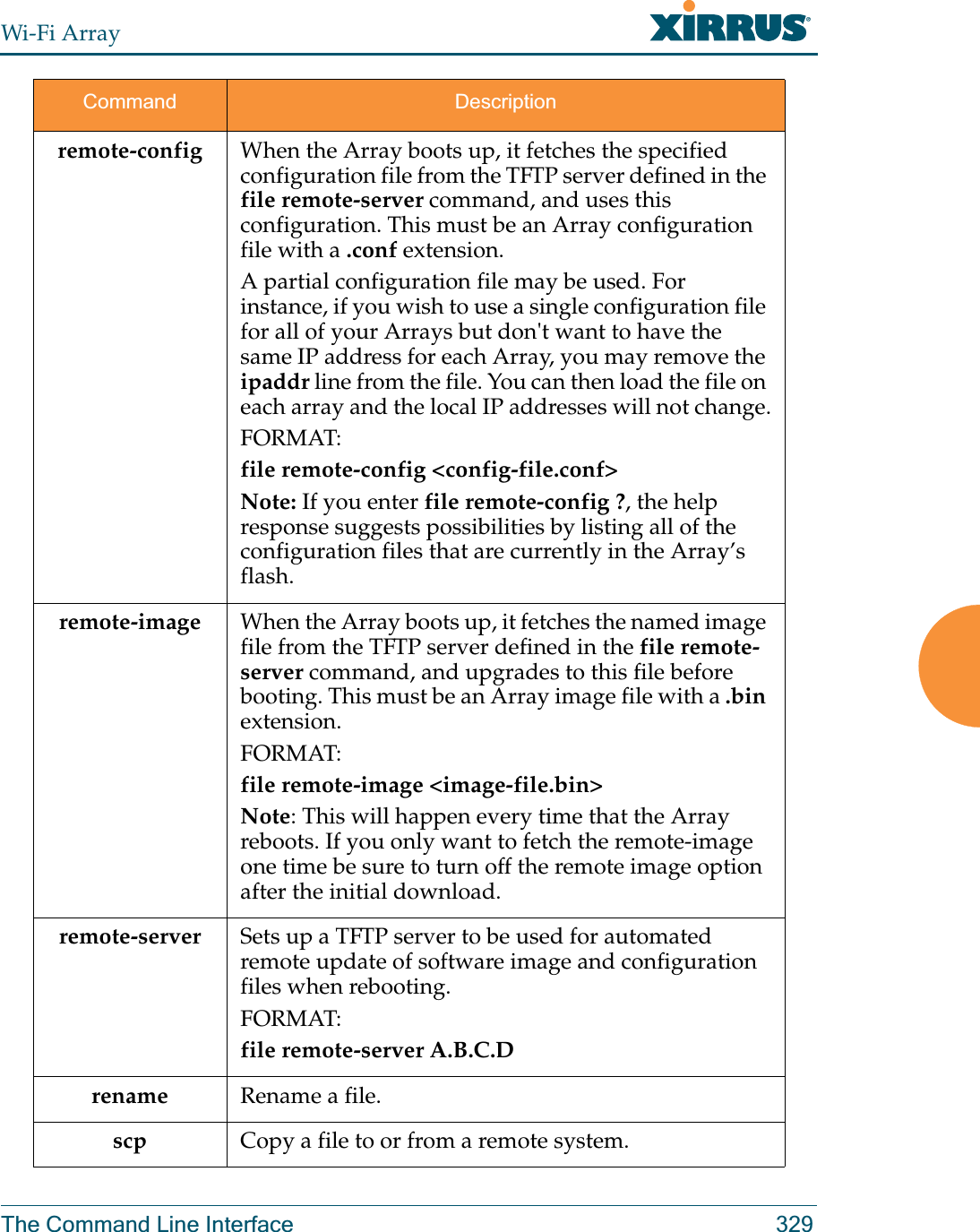
![Wi-Fi Array330 The Command Line Interfacetftp Open a TFTP connection with a remote server.FORMAT:file tftp host {<hostname> |<ip>} [port <port_#>] [user {anonymous | <username> password <passwd> } ] { put <source_file> [<dest_file>] | get <source_file> [<dest_file>] }Note: Any time you transfer any kind of software image file for the Array, it must be transferred in binary mode, or the file may be corrupted. Command Description](https://usermanual.wiki/Cambium-Networks/XN4.ArrayGuide-Rel4-0-RevW-part-2-of-2/User-Guide-1215330-Page-101.png)
![Wi-Fi ArrayThe Command Line Interface 331filter The filter command [Xirrus_Wi-Fi_Array(config-filter)#] is used to manage protocol filters and filter lists.Command Descriptionadd Add a filter.FORMAT:filter add [name]add-list Add a filter list.FORMAT:filter add-list [name]del Delete a filter.FORMAT:filter del [name]del-list Delete a filter list.FORMAT:filter del-list [name]edit Edit a filter.FORMAT:filter edit [name type]edit-list Edit a filter listFORMAT:filter edit-list [name type]enable Enable a filter list.FORMAT:filter enable move Change a filter priority.FORMAT:filter move [name priority]](https://usermanual.wiki/Cambium-Networks/XN4.ArrayGuide-Rel4-0-RevW-part-2-of-2/User-Guide-1215330-Page-102.png)
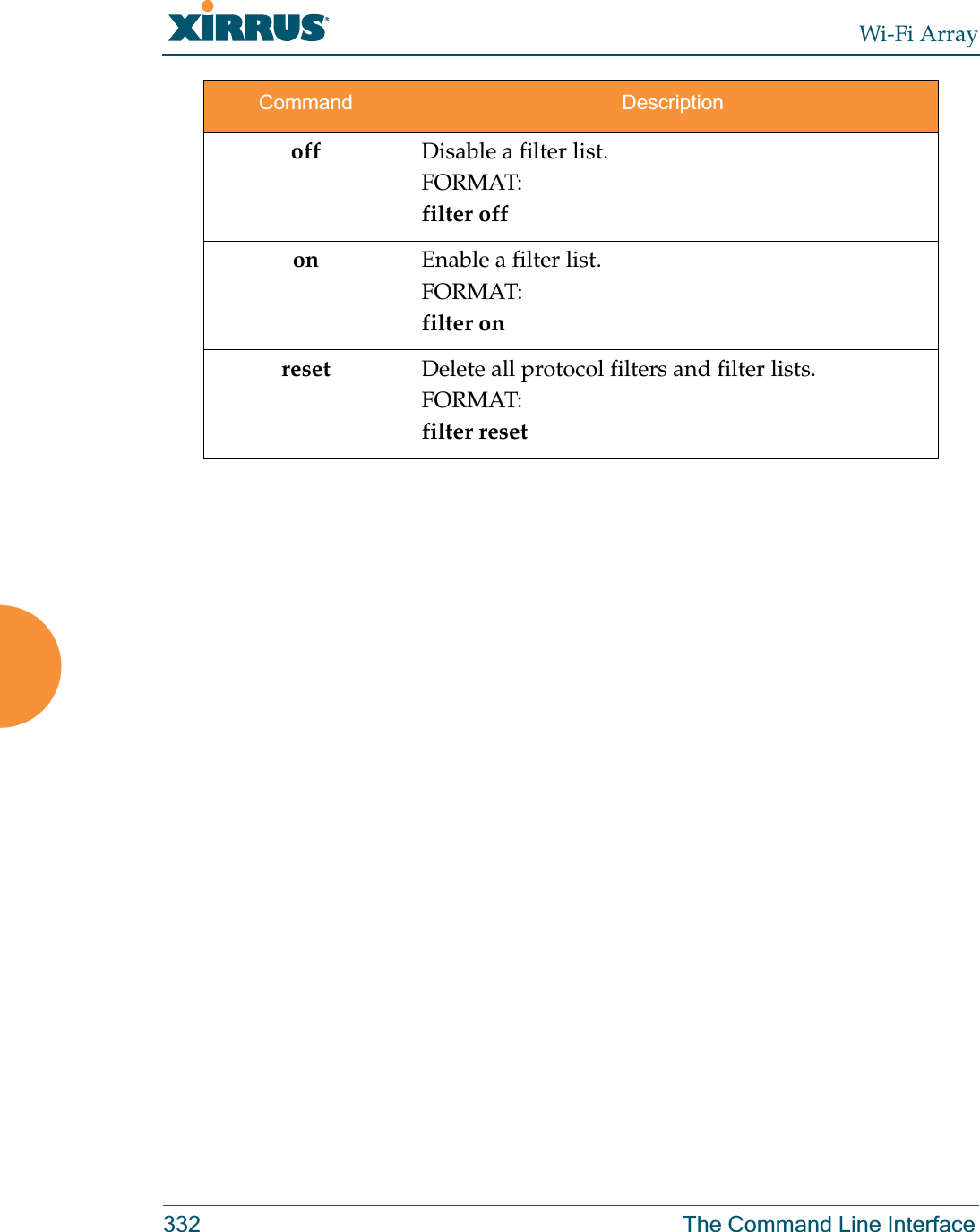
![Wi-Fi ArrayThe Command Line Interface 333fips The fips command [Xirrus_Wi-Fi_Array(config)# fips] is used to set the parameter values required for FIPS 140-2, Level 2 security. For more information, see Appendix E: Implementing FIPS Security. Command Descriptiondisable Reverts FIPS settings to the values they had before performing a fips on command. FORMAT:fips disableenable Set FIPS security on the Array. Remembers the values of parameters prior to setting them.FORMAT:fips enableoff Reverts FIPS settings to the values they had before performing a fips on command. FORMAT:fips offon Set FIPS security on the Array. Remembers the values of parameters prior to setting them.FORMAT:fips on](https://usermanual.wiki/Cambium-Networks/XN4.ArrayGuide-Rel4-0-RevW-part-2-of-2/User-Guide-1215330-Page-104.png)
![Wi-Fi Array334 The Command Line Interfacegroup The group command [Xirrus_Wi-Fi_Array(config)# group] is used to create and configure user groups. User groups allow administrators to assign specific network parameters to users through RADIUS privileges rather than having to map users to a specific SSID. Groups provide flexible control over user privileges without the need to create large numbers of SSIDs. For more information, see “Groups” on page 247. hostname The hostname command [Xirrus_Wi-Fi_Array(config)# hostname] is used to change the hostname used by the Array.Command Descriptionadd Create a new user group. FORMAT:group add [group-name]del Delete a user group.FORMAT:group del [group-name]edit Set parameters values for a group. FORMAT:group edit [group-name]reset Reset the group.FORMAT:group resetCommand Descriptionhostname Change the hostname of the Array.FORMAT:hostname [name]](https://usermanual.wiki/Cambium-Networks/XN4.ArrayGuide-Rel4-0-RevW-part-2-of-2/User-Guide-1215330-Page-105.png)
![Wi-Fi ArrayThe Command Line Interface 335https The https command [Xirrus_Wi-Fi_Array(config)# https] is used to enable or disable the Web Management Interface (https), which is enabled by default. It also allows you to establish a timeout for your Web management session.Command Descriptiondisable Disable the https feature.FORMAT:https disableenable Enable the https feature.FORMAT:https enableoff Disable the https feature.FORMAT:https offon Enable the https feature.FORMAT:https ontimeout Define an elapsed period (in seconds) after which the Web Management Interface will time out.FORMAT:https timeout 5000](https://usermanual.wiki/Cambium-Networks/XN4.ArrayGuide-Rel4-0-RevW-part-2-of-2/User-Guide-1215330-Page-106.png)
![Wi-Fi Array336 The Command Line Interfaceinterface The interface command [Xirrus_Wi-Fi_Array(config)# interface] is used to select the interface that you want to configure. To see a listing of the commands that are available for each interface, use the ? command at the selected interface prompt. For example, using the ? command at the Xirrus_Wi-Fi_Array(config-gig1}#prompt displays a listing of all commands for the gig1 interface.Command Descriptionconsole Select the console interface. The console interface is used for management purposes only.FORMAT:interface consoleeth0 Select the Fast Ethernet interface. The Fast Ethernet interface is used for management purposes only.FORMAT:interface eth0Note: To configure a static route for management traffic, next enter:static-route addr [ip-addr]static-route mask [subnet-mask]gig1 Select the Gigabit 1 interface.FORMAT:interface gig1gig2 Select the Gigabit 2 interface.FORMAT:interface gig2iap Select an IAP.FORMAT:interface iap](https://usermanual.wiki/Cambium-Networks/XN4.ArrayGuide-Rel4-0-RevW-part-2-of-2/User-Guide-1215330-Page-107.png)
![Wi-Fi ArrayThe Command Line Interface 337licenseThe license command [Xirrus_Wi-Fi_Array(config)# license] is used to set the license key for the Array. A valid license is required for Array operation, and it controls the features available on the Array. load The load command [Xirrus_Wi-Fi_Array(config)# load] loads a configuration file.Command Description<cr> Set the license for the Array.FORMAT:license <license-key>When you enter the new key obtained from Xirrus, simply hit the Enter key <cr> to apply it.Command Descriptionfactory.conf Load the factory settings configuration file. FORMAT:load [factory.conf]lastboot.conf Load the configuration file from the last boot-up. FORMAT:load [lastboot.conf][myfile].conf If you have saved a configuration, enter its name to load it. FORMAT:load [myfile.conf]saved.conf Load the configuration file with the last saved settings. FORMAT:load [saved.conf]](https://usermanual.wiki/Cambium-Networks/XN4.ArrayGuide-Rel4-0-RevW-part-2-of-2/User-Guide-1215330-Page-108.png)
![Wi-Fi Array338 The Command Line Interfacelocation The location command [Xirrus_Wi-Fi_Array(config)# location] is used to set the location for the Array.management The management command [Xirrus_Wi-Fi_Array(config)# management] enters management mode, where you may configure console management parameters.more The more command [Xirrus_Wi-Fi_Array(config)# more] is used to turn terminal pagination ON or OFF.Command Description<cr> Set the location for the Array.FORMAT:location [newlocation]Command Description<cr> Enter management mode.FORMAT:management <cr>Command Descriptionoff Turn OFF terminal pagination.FORMAT:more offon Turn ON terminal pagination.FORMAT:more on](https://usermanual.wiki/Cambium-Networks/XN4.ArrayGuide-Rel4-0-RevW-part-2-of-2/User-Guide-1215330-Page-109.png)
![Wi-Fi ArrayThe Command Line Interface 339netflowThe netflow command [Xirrus_Wi-Fi_Array(config-netflow)#] is used to enable or disable, or configure sending IP flow information (traffic statistics) to the collector you specify.Command Descriptiondisable Disable netflow.FORMAT:netflow disableenable Enable netflow.FORMAT:netflow enableoff Disable netflow.FORMAT:netflow offon Enable netflow.FORMAT:netflow oncollector Set the netflow collector IP address or fully qualified domain name (host.domain). Only one collector may be set. If port is not specified, the default is 2055. FORMAT:netflow collector host {<ip-addr> | <domain>} [port <port#>]](https://usermanual.wiki/Cambium-Networks/XN4.ArrayGuide-Rel4-0-RevW-part-2-of-2/User-Guide-1215330-Page-110.png)
![Wi-Fi Array340 The Command Line Interfaceno The no command [Xirrus_Wi-Fi_Array(config)# no] is used to disable a selected element or set the element to its default value.Command Descriptionacl Disable the Access Control List.FORMAT:no acldot11a Disable all 802.11a(n) IAPs (radios).FORMAT:no dot11adot11bg Disable all 802.11bg(n) IAPs (radios).FORMAT:no dot11bghttps Disable https access.FORMAT:no httpsintrude-detect Disable intrusion detection.FORMAT:no intrude-detectmanagement Disable management on all Ethernet interfaces.FORMAT:no managementmore Disable terminal pagination.FORMAT:no morentp Disable the NTP server.FORMAT:no ntp](https://usermanual.wiki/Cambium-Networks/XN4.ArrayGuide-Rel4-0-RevW-part-2-of-2/User-Guide-1215330-Page-111.png)
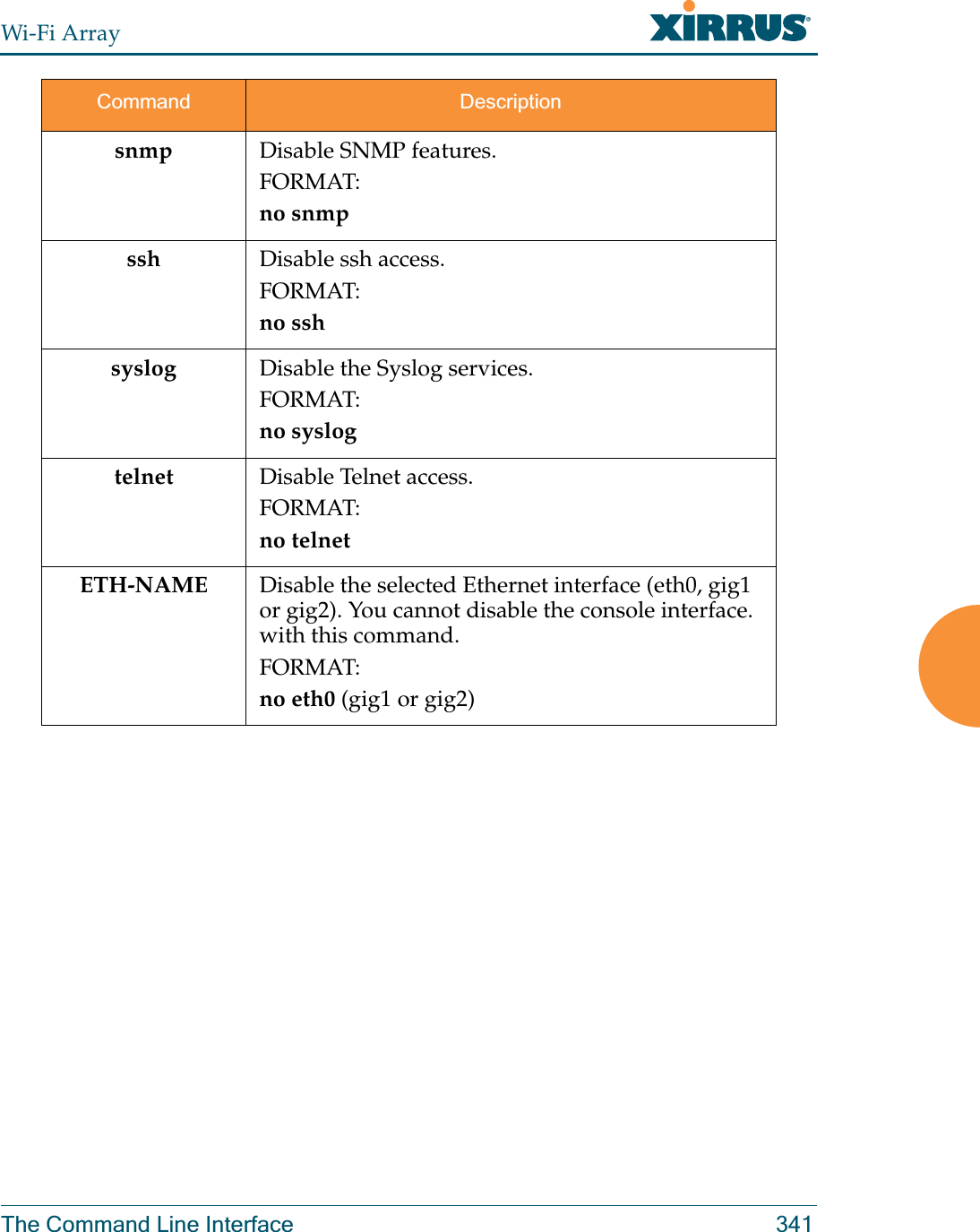
![Wi-Fi Array342 The Command Line Interfacepci-audit The pci-audit command [Xirrus_Wi-Fi_Array(config)# pci-audit] checks the configuration of the Array for conformance with PCI DSS standards. When you enter the pci-audit command, it lists any settings that violate PCI DSS requirements. In addition, if pci-audit is on (enabled), the Array will warn you if you change any parameters in a way that violates PCI DSS requirements. For example, if you enable pci-audit and then set encryption to none on an SSID (in the CLI or the WMI), a warning will be displayed and a Syslog message will be issued. For more information, see Appendix D: Implementing PCI DSS. Command Descriptiondisable The Array will not check configuration changes for PCI DSS violations. FORMAT:pci-audit disableenable The Array reports any current settings that violate PCI DSS, and will warn you and issue a Syslog message if you attempt to save configuration changes that violate PCI DSS. FORMAT:pci-audit enableoff The Array will not check configuration changes for PCI DSS violations. FORMAT:pci-audit offon The Array reports any current settings that violate PCI DSS, and will warn you and issue a Syslog message if you make configuration changes that that violate PCI DSS. FORMAT:pci-audit on](https://usermanual.wiki/Cambium-Networks/XN4.ArrayGuide-Rel4-0-RevW-part-2-of-2/User-Guide-1215330-Page-113.png)
![Wi-Fi ArrayThe Command Line Interface 343quit The quit command [Xirrus_Wi-Fi_Array(config)# quit] is used to exit the Command Line Interface.radius-server The radius-server command [Xirrus_Wi-Fi_Array(config-radius-server)#] is used to configure the external and internal RADIUS server parameters.Command Description<cr> Exit the Command Line Interface.FORMAT:quitIf you have made any configuration changes and your changes have not been saved, you are prompted to save your changes to Flash.At the prompt, answer Yes to save your changes, or answer No to discard your changes.Command Descriptionexternal Configure an external RADIUS server.FORMAT:radius-server externalTo configure a RADIUS server (primary, secondary, or accounting server, by IP address or host name), and the reporting interval use:radius-server external accountinginternal Configure the external RADIUS server.FORMAT:radius-server internaluse Choose the active RADIUS server (either external or internal).FORMAT:use external (or internal)](https://usermanual.wiki/Cambium-Networks/XN4.ArrayGuide-Rel4-0-RevW-part-2-of-2/User-Guide-1215330-Page-114.png)
![Wi-Fi Array344 The Command Line Interfacereboot The reboot command [Xirrus_Wi-Fi_Array(config)# reboot] is used to reboot the Array. If you have unsaved changes, the command will notify you and give you a chance to cancel the reboot. reset The reset command [Xirrus_Wi-Fi_Array(config)# reset] is used to reset all settings to their default values then reboot the Array.Command Description<cr> Reboot the Array.FORMAT:rebootdelay Reboot the Array after a delay of 1 to 60 seconds.FORMAT:reboot delay [n]Command Description<cr> Reset all configuration parameters to their factory default values.FORMAT:resetThe Array is rebooted automatically.preserve-ip-settingsPreserve all ethernet and VLAN settings and reset all other configuration parameters to their factory default values.FORMAT:reset preserve-ip-settingsThe Array is rebooted automatically.](https://usermanual.wiki/Cambium-Networks/XN4.ArrayGuide-Rel4-0-RevW-part-2-of-2/User-Guide-1215330-Page-115.png)
![Wi-Fi ArrayThe Command Line Interface 345run-tests The run-tests command [Xirrus_Wi-Fi_Array(run-tests)#] is used to enter run-tests mode, which allows you to perform a range of tests on the Array.Command Description<cr> Enter run-tests mode.FORMAT:run-tests iperf Execute iperf utility.FORMAT:run-tests iperfkill-beacons Turn off beacons for selected single IAP.FORMAT:run-tests kill-beacons [off | iap-name] kill-probe-responses Turn off probe responses for selected single IAP.FORMAT:run-tests kill-probe-responses [off | iap-name] led LED test.FORMAT:run-tests led [flash | rotate] memtest Execute memory tests.FORMAT:run-tests memtestping Execute ping utility.FORMAT:run-tests ping [host-name | ip-addr]](https://usermanual.wiki/Cambium-Networks/XN4.ArrayGuide-Rel4-0-RevW-part-2-of-2/User-Guide-1215330-Page-116.png)
![Wi-Fi Array346 The Command Line Interfaceradius-ping Special ping utility to test the connection to a RADIUS server.FORMAT:run-tests radius-ping [external | ssid <ssidnum>] [primary | secondary] user <raduser> password <radpasswd> auth-type [CHAP | PAP]run-tests radius-ping [internal | server <radserver> port <radport> secret <radsecret> ] user <raduser> password <radpasswd> auth-type [CHAP | PAP]You may select a RADIUS server that you have already configured (ssid or external or internal) or specify another server (server). rlb Run manufacturing radio loopback test.FORMAT:run-tests rlb {optional command line switches}self-test Execute self-test.FORMAT:run-tests self-test {logfile-name (optional)]site-survey Enable or disable site survey mode.FORMAT:run-tests site-survey [on | off | enable | disable] ssh Execute ssh utility.FORMAT:run-tests ssh [hostname | ip-addr] [command-line-switches (optional)] tcpdump Execute tcpdump utility to dump traffic for selected interface or VLAN. FORMAT:run-tests tcpdumpCommand Description](https://usermanual.wiki/Cambium-Networks/XN4.ArrayGuide-Rel4-0-RevW-part-2-of-2/User-Guide-1215330-Page-117.png)
![Wi-Fi ArrayThe Command Line Interface 347security The security command [Xirrus_Wi-Fi_Array(config-security)#] is used to establish the security parameters for the Array.telnet Execute telnet utility.FORMAT:run-tests telnet [hostname | ip-addr] [command-line-switches (optional)] traceroute Execute traceroute utility.FORMAT:run-tests traceroute [host-name | ip-addr]Command Descriptionwep Set the WEP encryption parameters.FORMAT:security wepwpa Set the WEP encryption parameters.FORMAT:security wpaCommand Description](https://usermanual.wiki/Cambium-Networks/XN4.ArrayGuide-Rel4-0-RevW-part-2-of-2/User-Guide-1215330-Page-118.png)
![Wi-Fi Array348 The Command Line Interfacesnmp The snmp command [Xirrus_Wi-Fi_Array(config-snmp)#] is used to enable, disable, or configure SNMP.ssh The ssh command [Xirrus_Wi-Fi_Array(config)# ssh] is used to enable or disable the SSH feature. The Array only allows SSH-2 connections, so be sure that your SSH client is configured to use SSH-2. Command Descriptionv2 Enable SNMP v2.FORMAT:snmp v2v3 Enable SNMP v3.FORMAT:snmp v3trap Configure traps for SNMP. Up to four trap destinations may be configured, and you may specify whether to send traps for authentication failure. FORMAT:snmp trap Command Descriptiondisable Disable SSH.FORMAT:ssh disableenable Enable SSH.FORMAT:ssh enable](https://usermanual.wiki/Cambium-Networks/XN4.ArrayGuide-Rel4-0-RevW-part-2-of-2/User-Guide-1215330-Page-119.png)
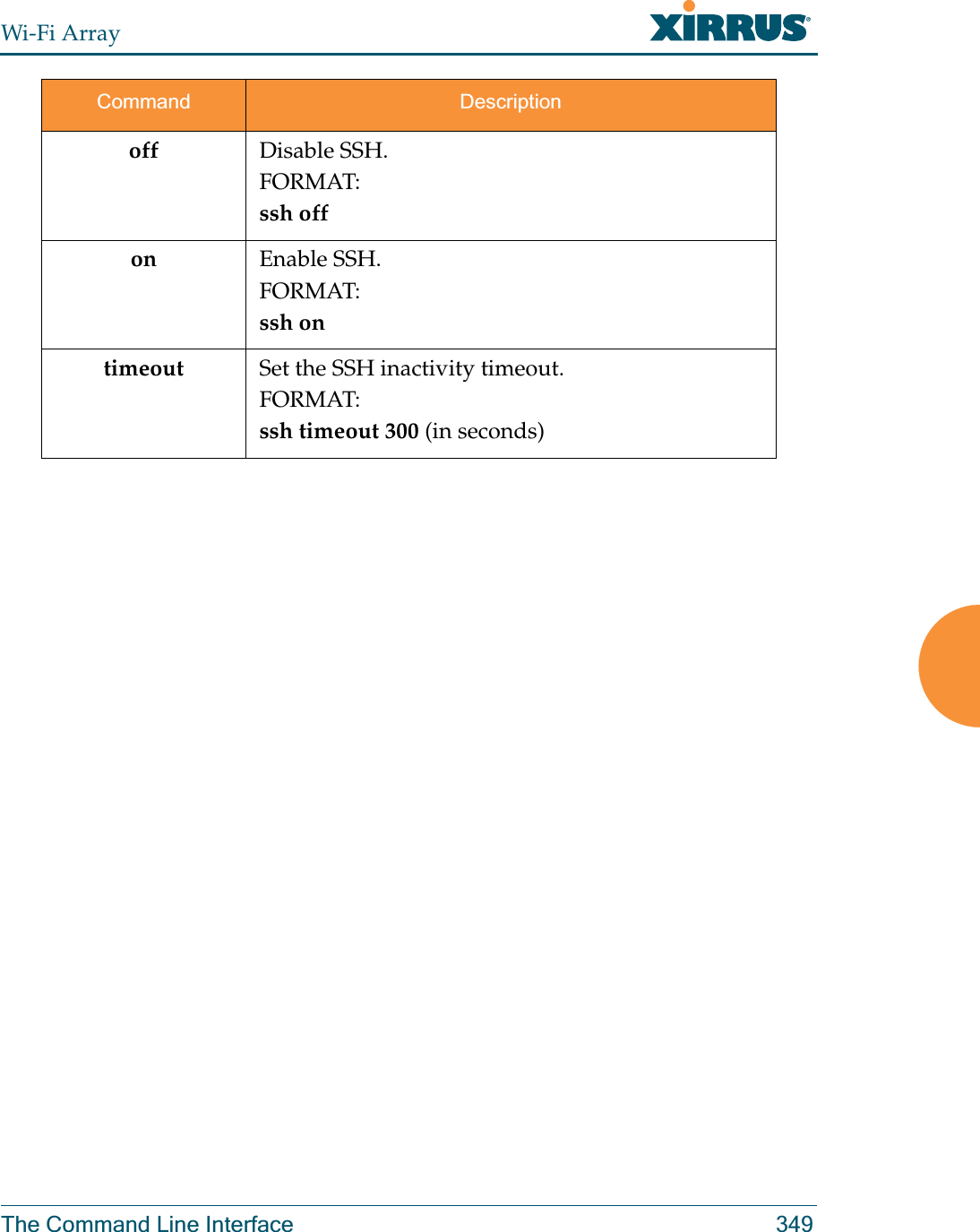
![Wi-Fi Array350 The Command Line Interfacessid The ssid command [Xirrus_Wi-Fi_Array(config-ssid)#] is used to establish your SSID parameters.standby The standby command [Xirrus_Wi-Fi_Array(config-ssid)#] sets this Array to function as a standby unit for another Array.Command Descriptionadd Add an SSID.FORMAT:ssid add [newssid]del Delete an SSID.FORMAT:ssid del [oldssid]edit Edit an existing SSID.FORMAT:ssid edit [existingssid]reset Delete all SSIDs and restore the default SSID.FORMAT:ssid resetCommand Descriptionmode Enable or disable standby mode on this Array.FORMAT:standby mode [disable|enable|off|on]target Specify the MAC address of the target Array to be monitored for failure.FORMAT:standby target [AA:BB:CC:DD:EE:FF]](https://usermanual.wiki/Cambium-Networks/XN4.ArrayGuide-Rel4-0-RevW-part-2-of-2/User-Guide-1215330-Page-121.png)
![Wi-Fi ArrayThe Command Line Interface 351syslog The syslog command [Xirrus_Wi-Fi_Array(config-syslog)#] is used to enable, disable, or configure the Syslog server.Command Descriptionconsole Enable or disable the display of Syslog messages on the console, and set the level to be displayed. All messages at this level and lower (i.e., more severe) will be displayed.FORMAT:syslog console [on/off] level [0-7]disable Disable the Syslog server.FORMAT:syslog disableemail Disable the Syslog server.FORMAT:syslog email from [email-from-address] level [0-7] password [email-acct-password] server [email-server-IPaddr] test [test-msg-text] to-list [recipient-email-addresses] user [email-acct-username]enable Enable the Syslog server.FORMAT:syslog enablelocal-file Set the size and/or severity level (all messages at this level and lower will be logged).FORMAT:syslog local-file size [1-500] level [0-7]no Disable the selected feature.FORMAT:syslog no [feature]](https://usermanual.wiki/Cambium-Networks/XN4.ArrayGuide-Rel4-0-RevW-part-2-of-2/User-Guide-1215330-Page-122.png)
![Wi-Fi Array352 The Command Line Interfaceoff Disable the Syslog server.FORMAT:syslog offon Enable the Syslog server.FORMAT:syslog onprimary Set the IP address of the primary Syslog server and/or the severity level of messages to be logged.FORMAT:syslog primary [1.2.3.4] level [0-7]secondary Set the IP address of the secondary (backup) Syslog server and/or the severity level of messages to be logged.FORMAT:syslog primary [1.2.3.4] level [0-7]Command Description](https://usermanual.wiki/Cambium-Networks/XN4.ArrayGuide-Rel4-0-RevW-part-2-of-2/User-Guide-1215330-Page-123.png)
![Wi-Fi ArrayThe Command Line Interface 353telnet The telnet command [Xirrus_Wi-Fi_Array(config)# telnet] is used to enable or disable Telnet.uptime The uptime command [Xirrus_Wi-Fi_Array(config)# uptime] is used to display the elapsed time since you last rebooted the Array. Command Descriptiondisable Disable Telnet.FORMAT:telnet disableenable Enable Telnet.FORMAT:telnet enableoff Disable Telnet.FORMAT:telnet offon Enable Telnet.FORMAT:telnet ontimeout Set the Telnet inactivity timeout.FORMAT:telnet timeout 300 (in seconds)Command Description<cr> Display time since last reboot.FORMAT:uptime](https://usermanual.wiki/Cambium-Networks/XN4.ArrayGuide-Rel4-0-RevW-part-2-of-2/User-Guide-1215330-Page-124.png)
![Wi-Fi Array354 The Command Line Interfacevlan The vlan command [Xirrus_Wi-Fi_Array(config-vlan)#] is used to establish your VLAN parameters.Command Descriptionadd Add a VLAN.FORMAT:vlan add [newvlan]default-route Assign a VLAN for the default route (for outbound management traffic).FORMAT:vlan default-route [defaultroute]delete Delete a VLAN.FORMAT:vlan delete [oldvlan]edit Modify an existing VLAN.FORMAT:vlan edit [existingvlan]native-vlan Assign a native VLAN (traffic is untagged).FORMAT:vlan native-vlan [nativevlan]no Disable the selected feature.FORMAT:vlan no [feature]reset Delete all existing VLANs.FORMAT:vlan reset](https://usermanual.wiki/Cambium-Networks/XN4.ArrayGuide-Rel4-0-RevW-part-2-of-2/User-Guide-1215330-Page-125.png)
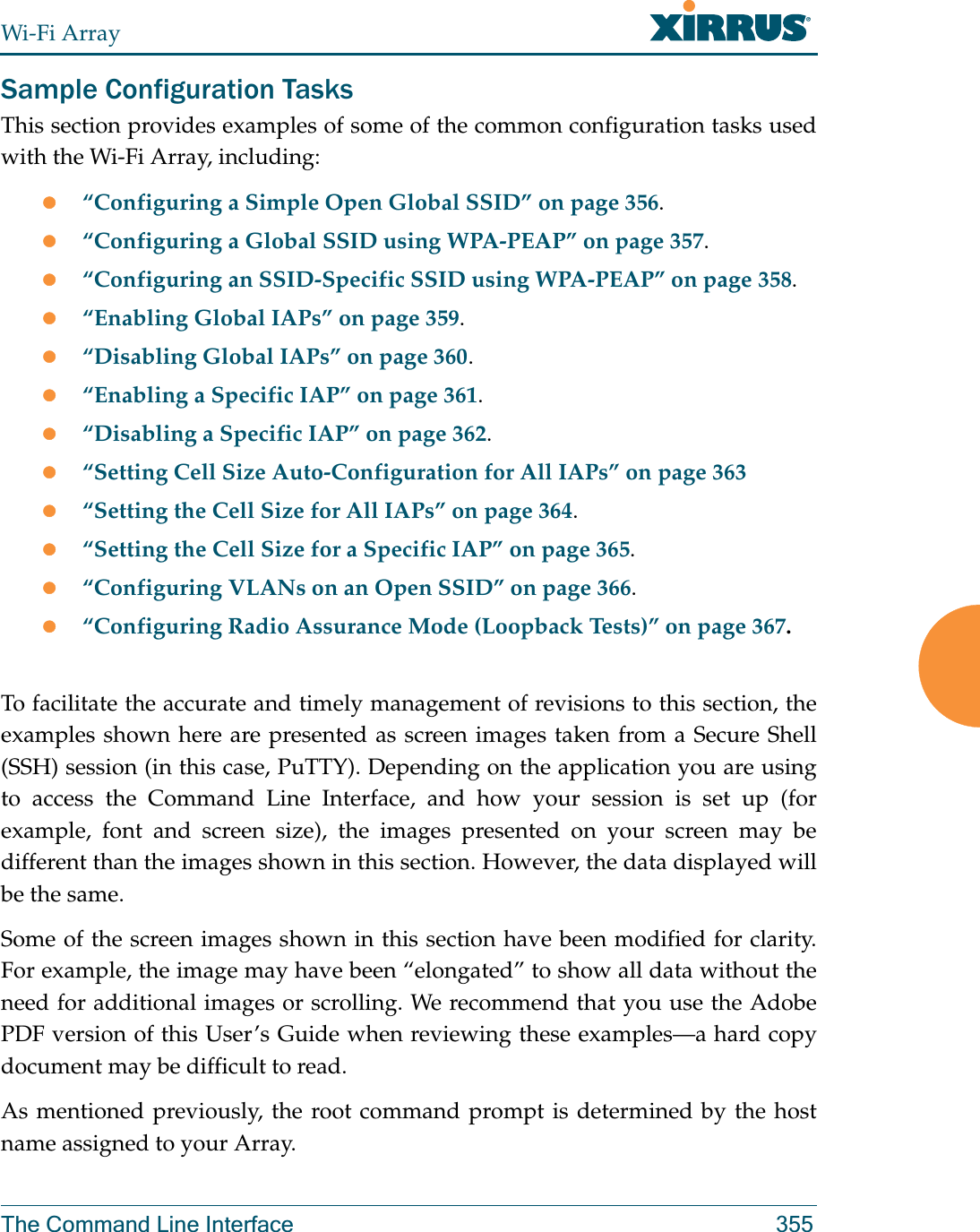
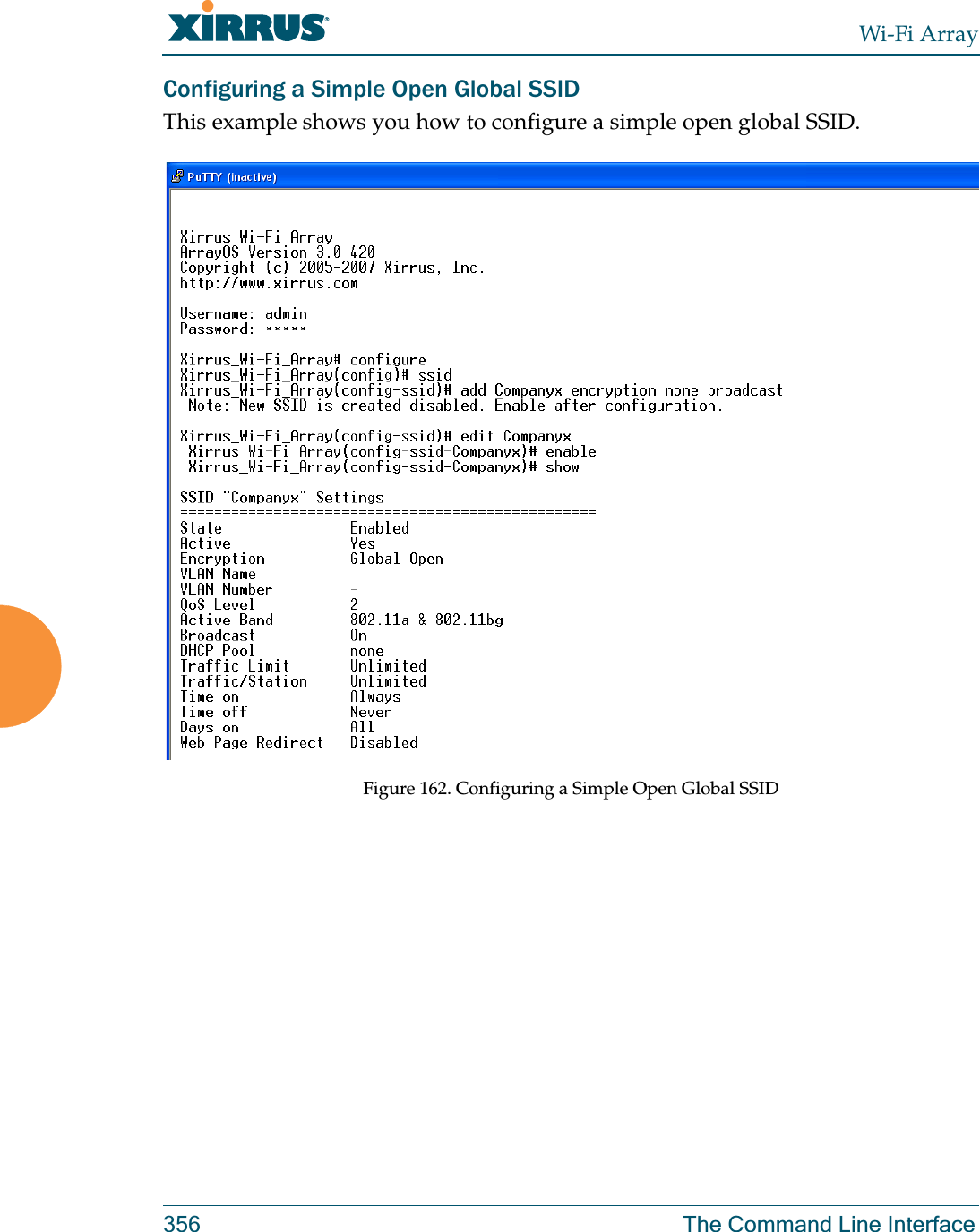
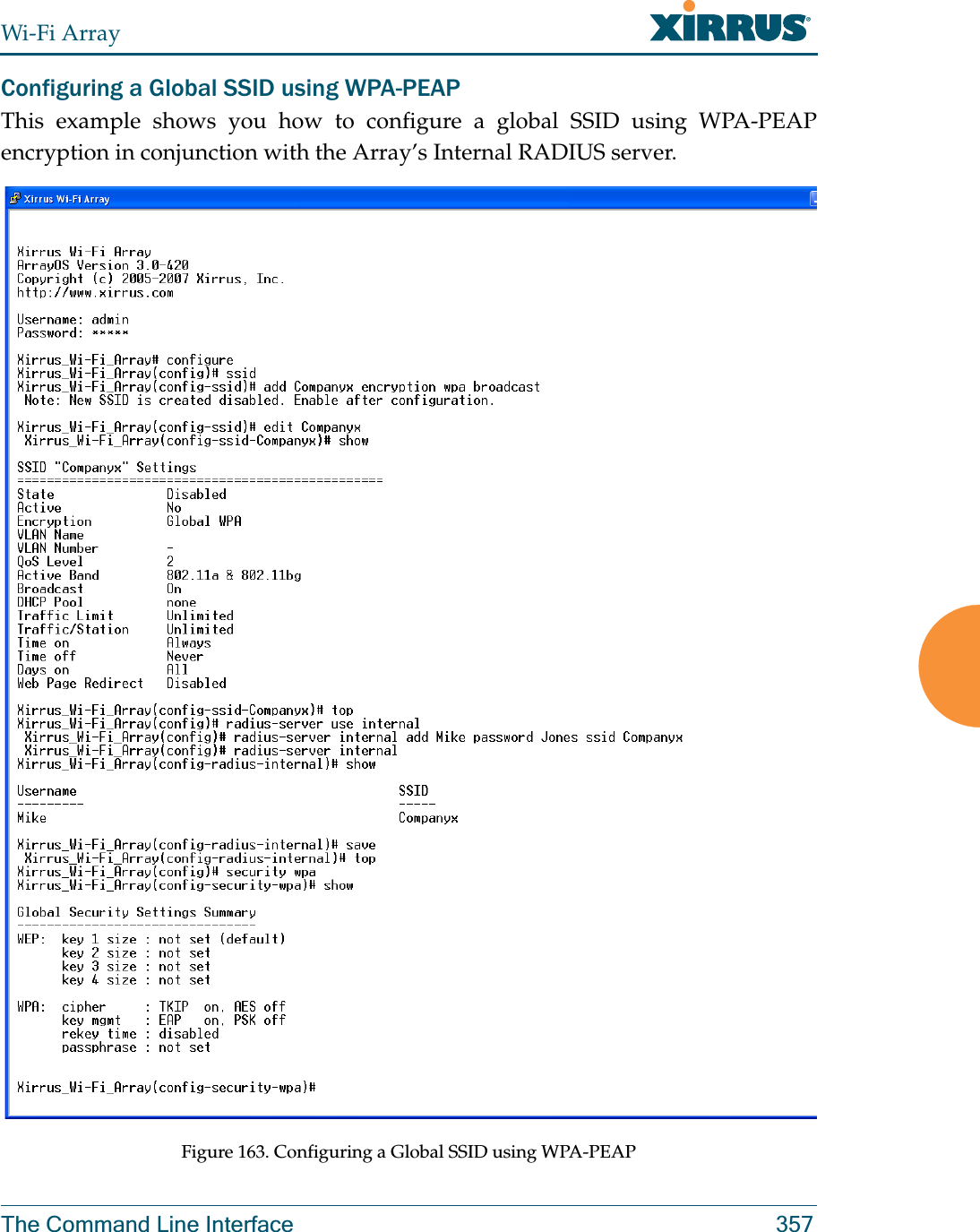
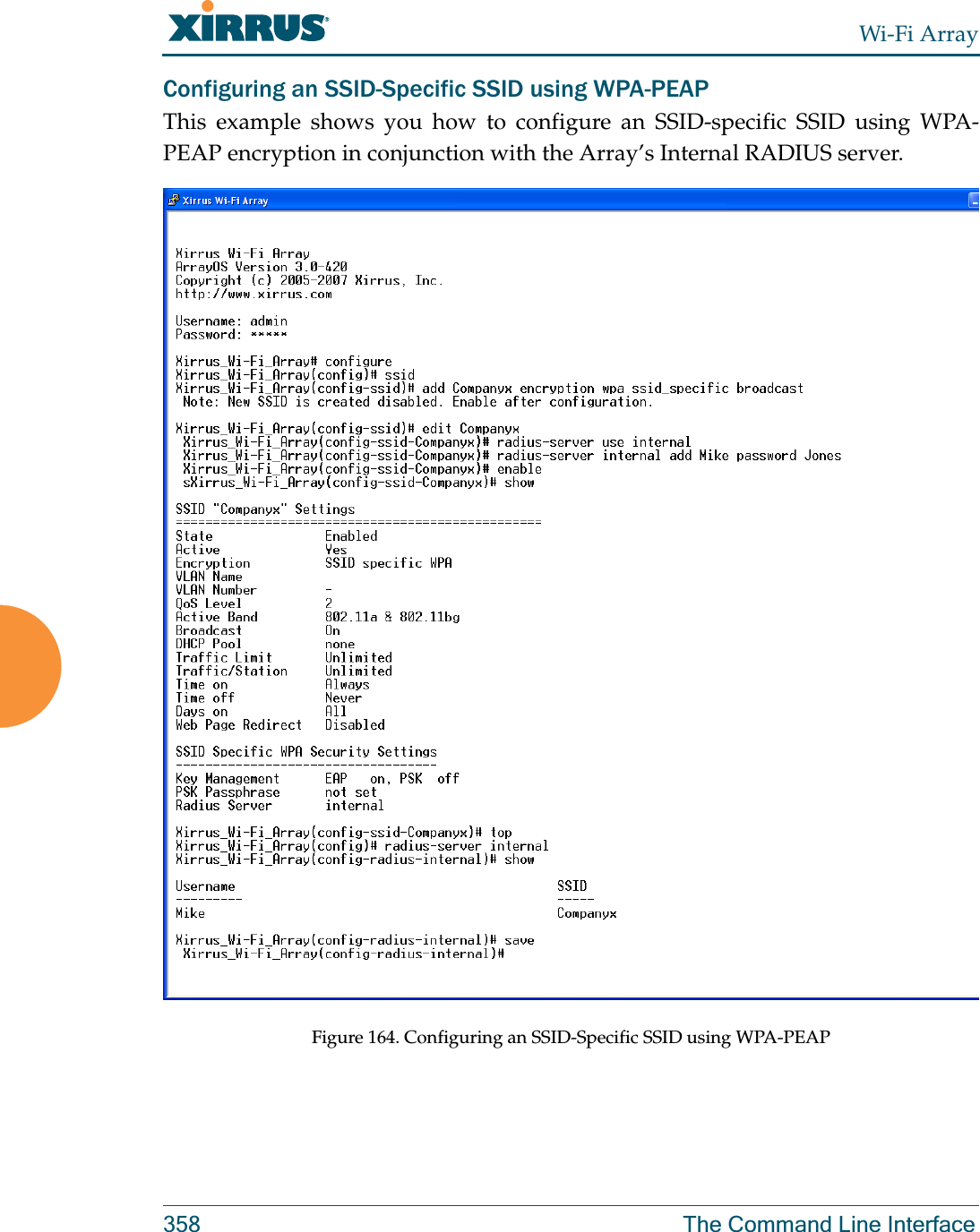
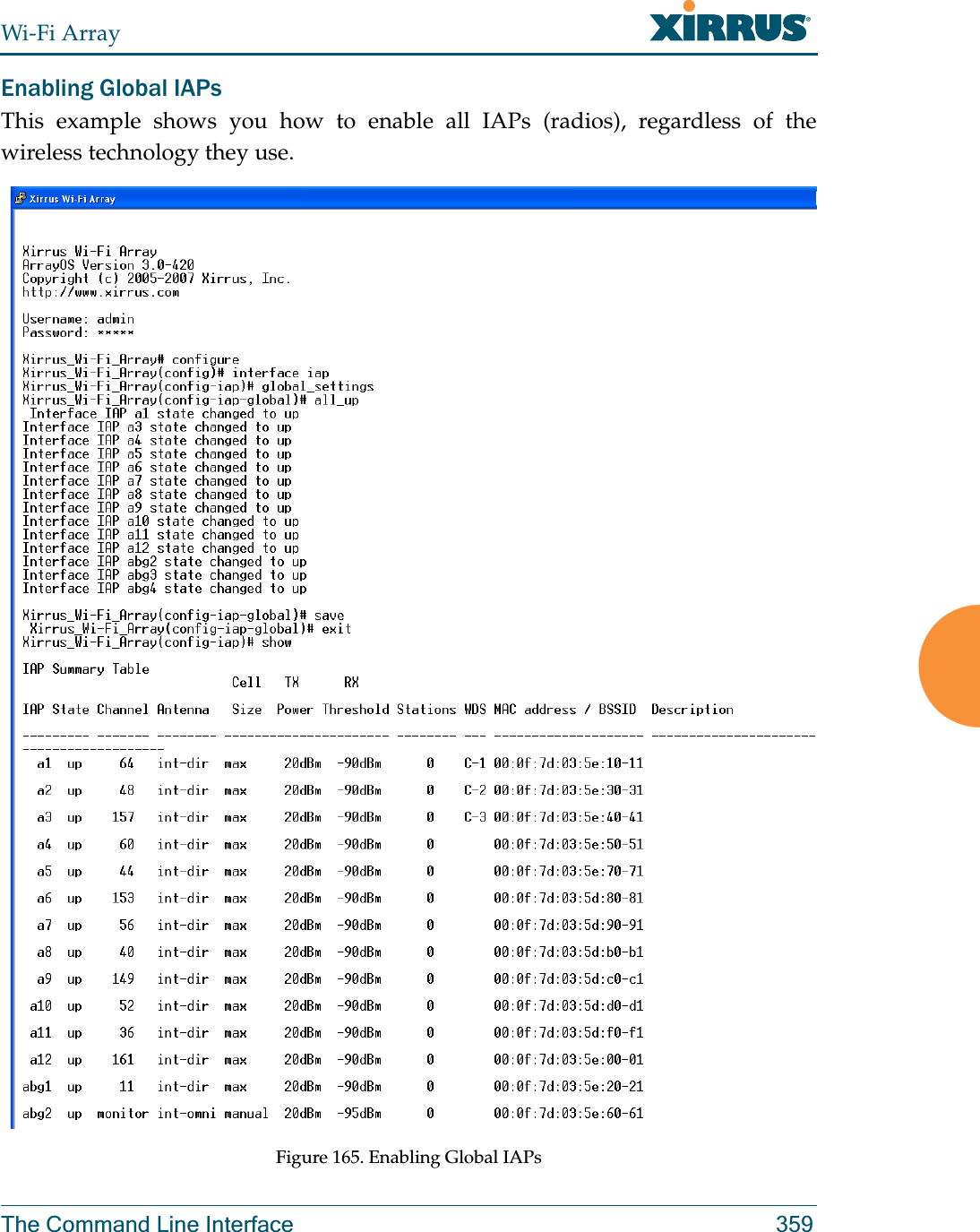
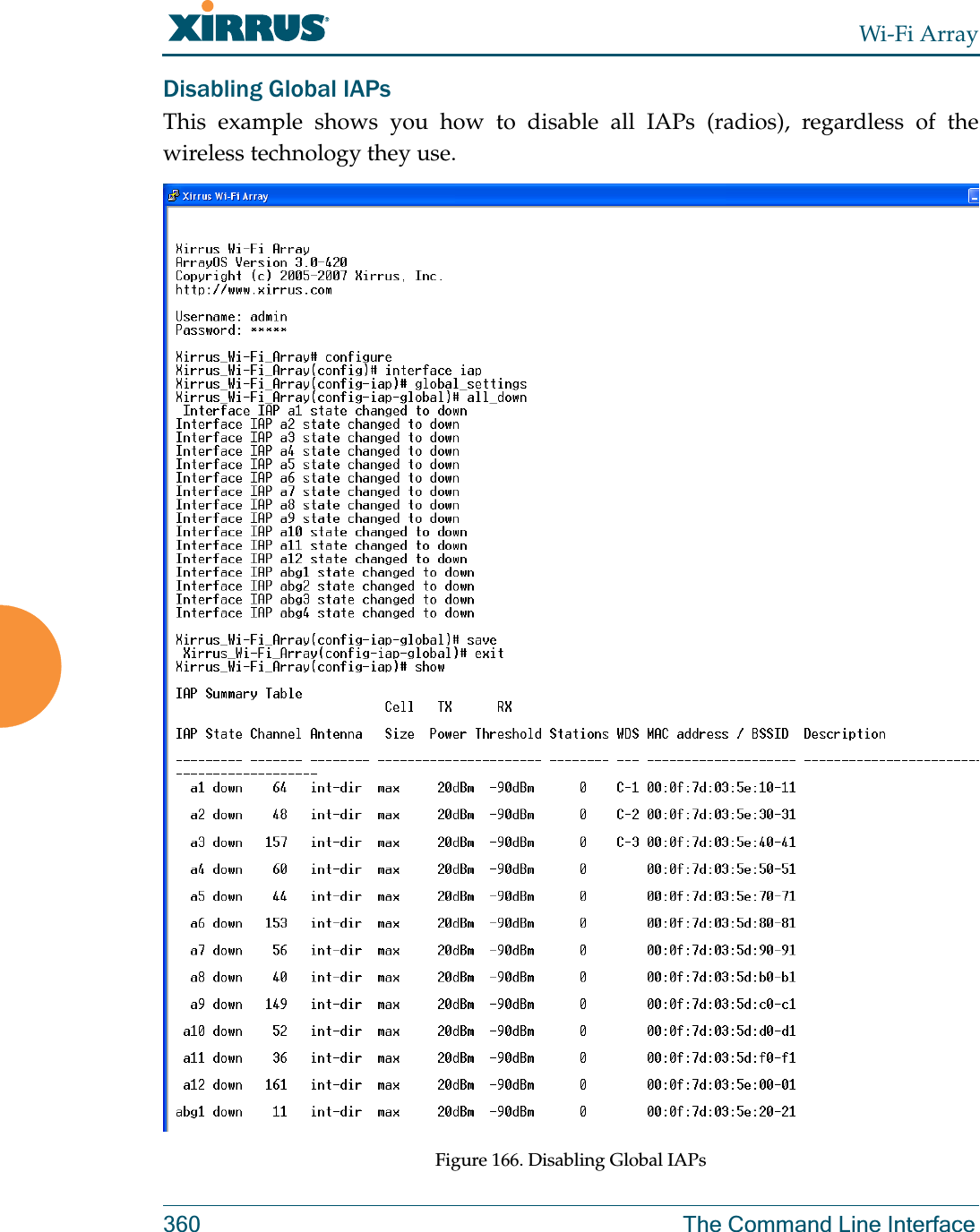
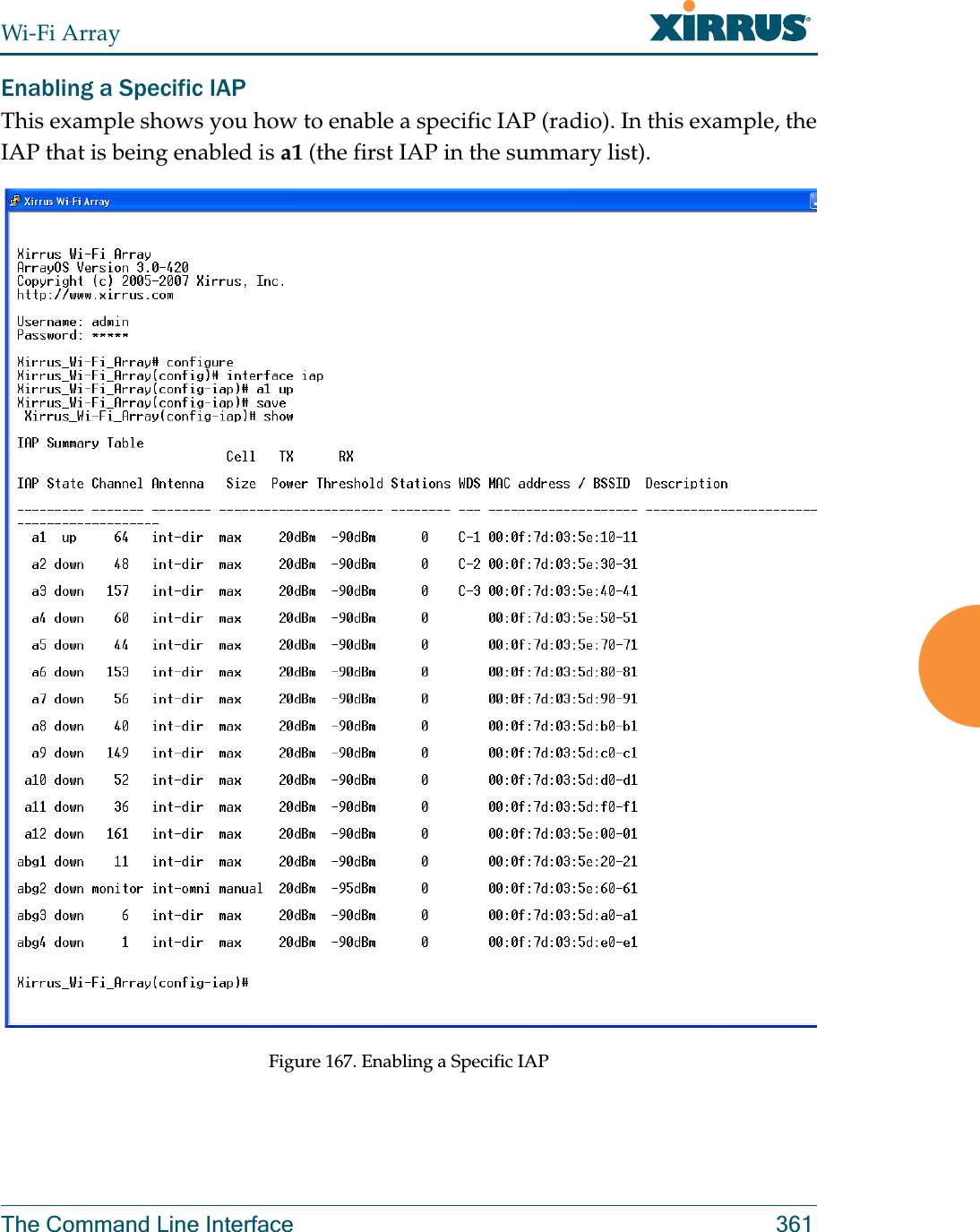
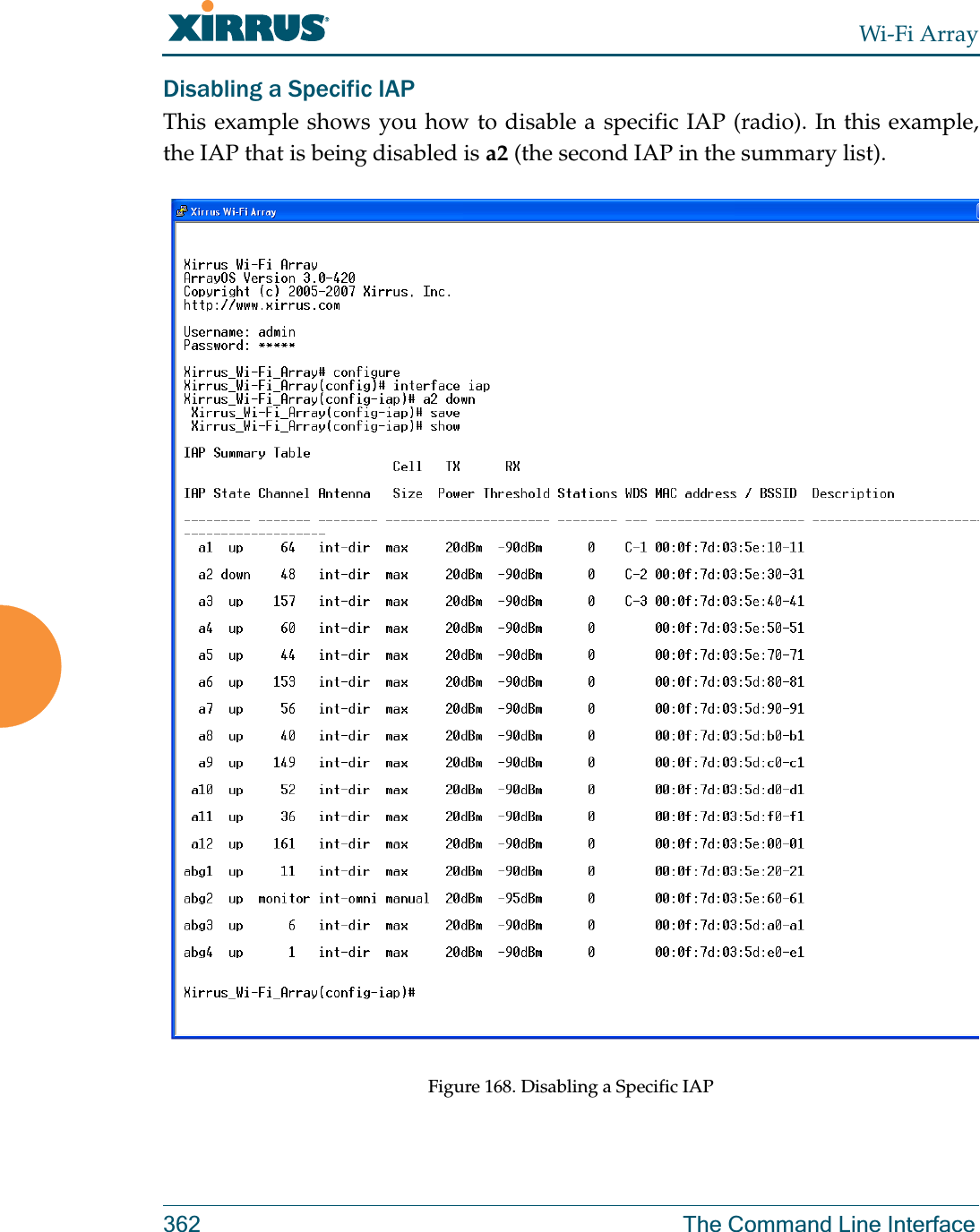
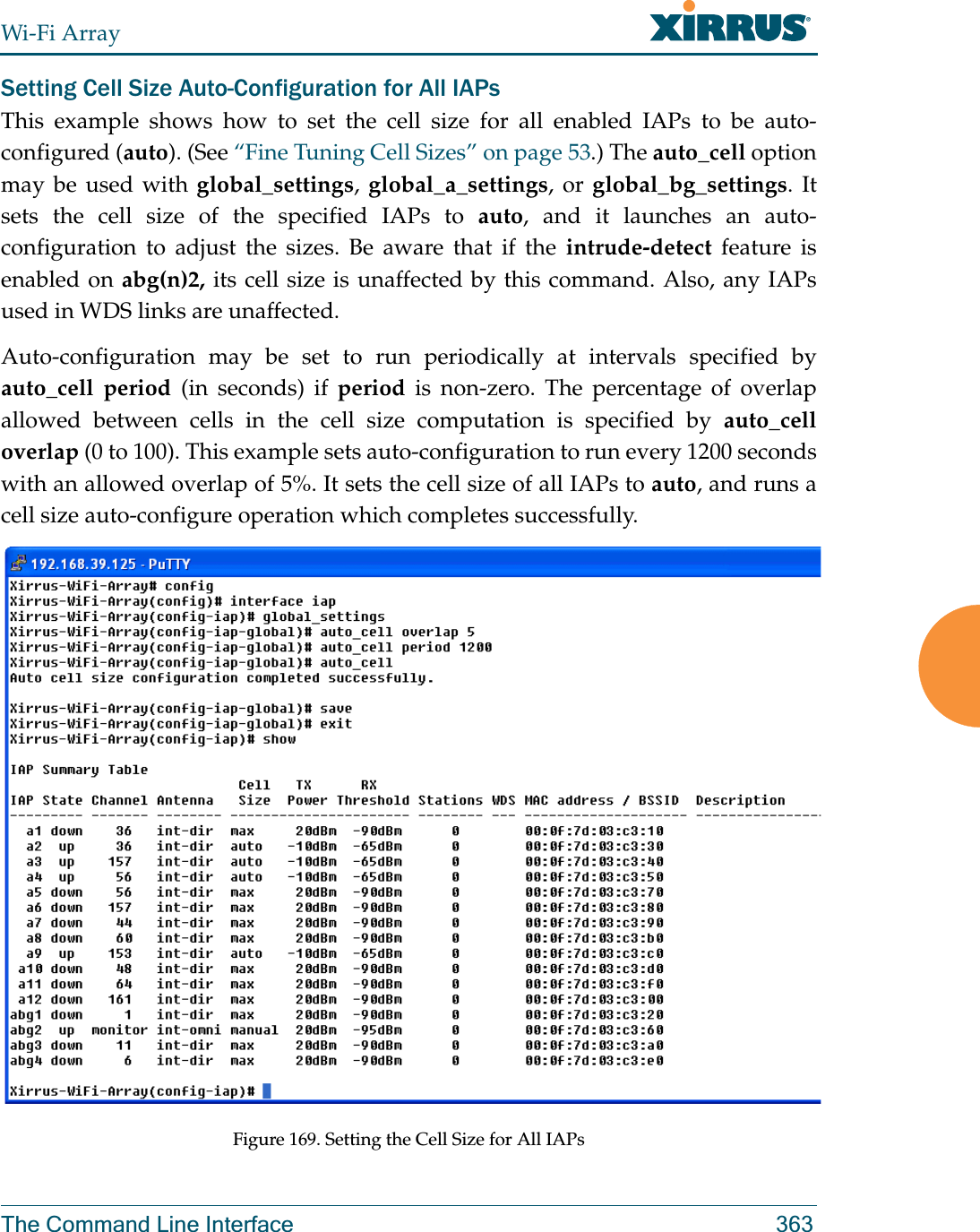
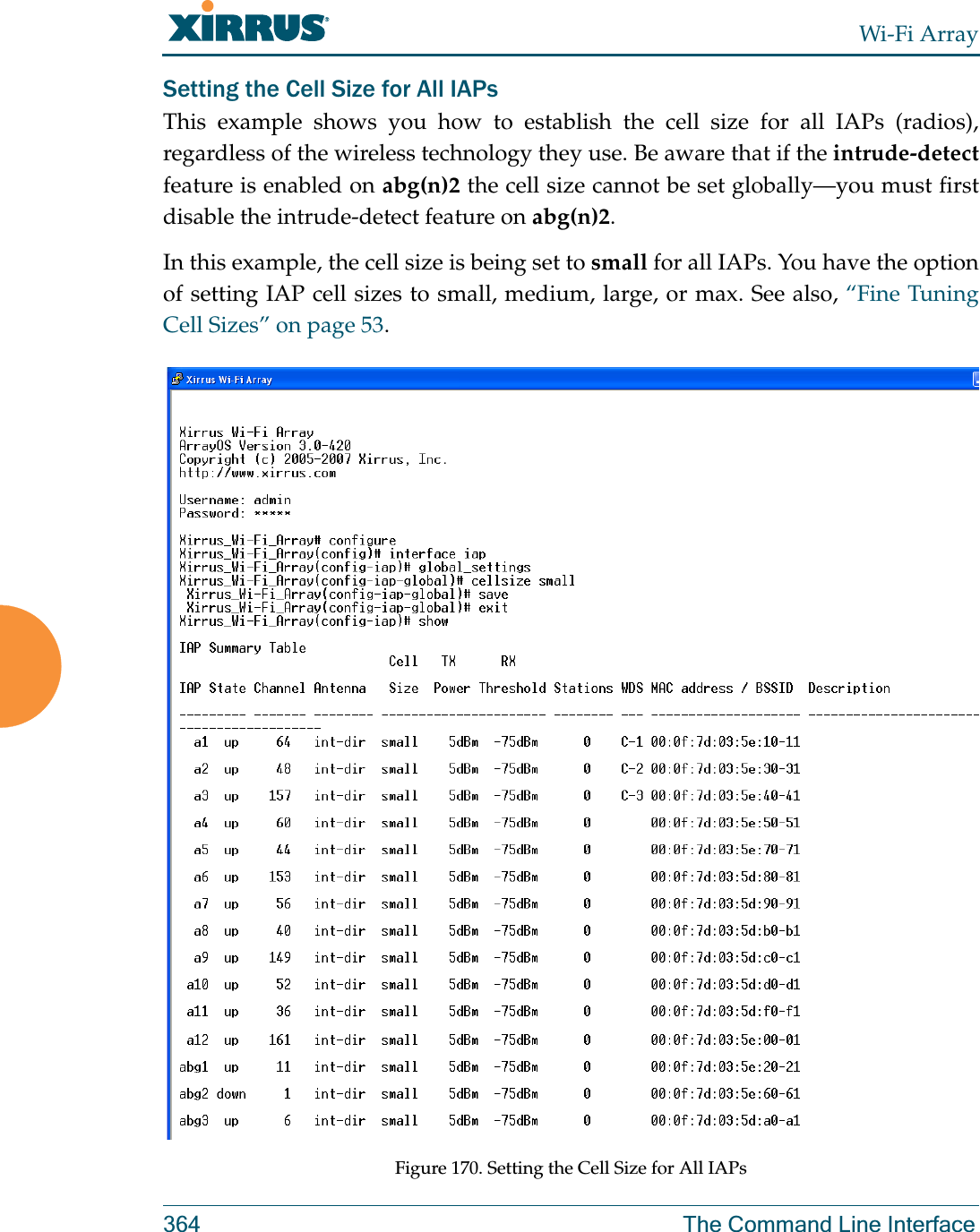
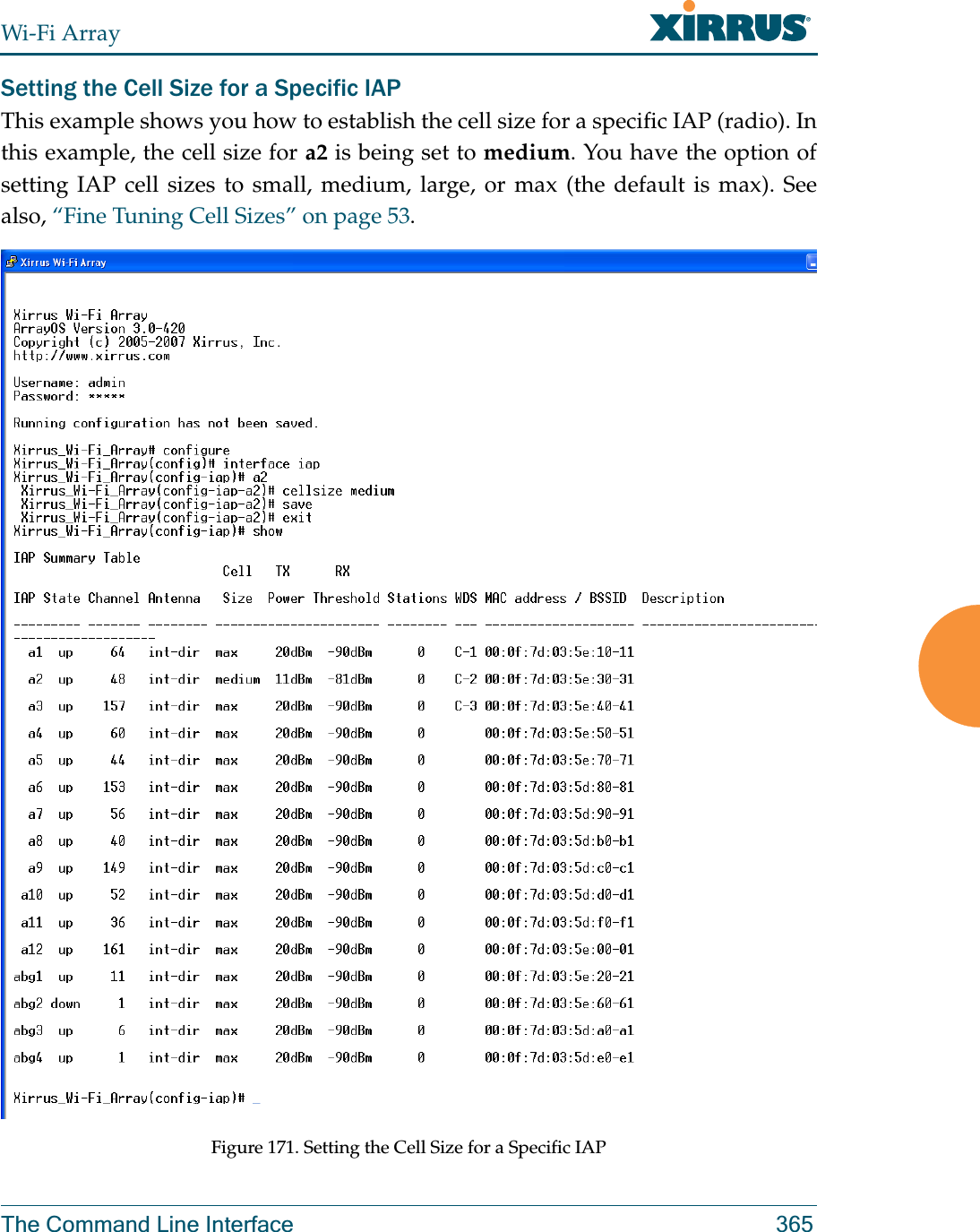
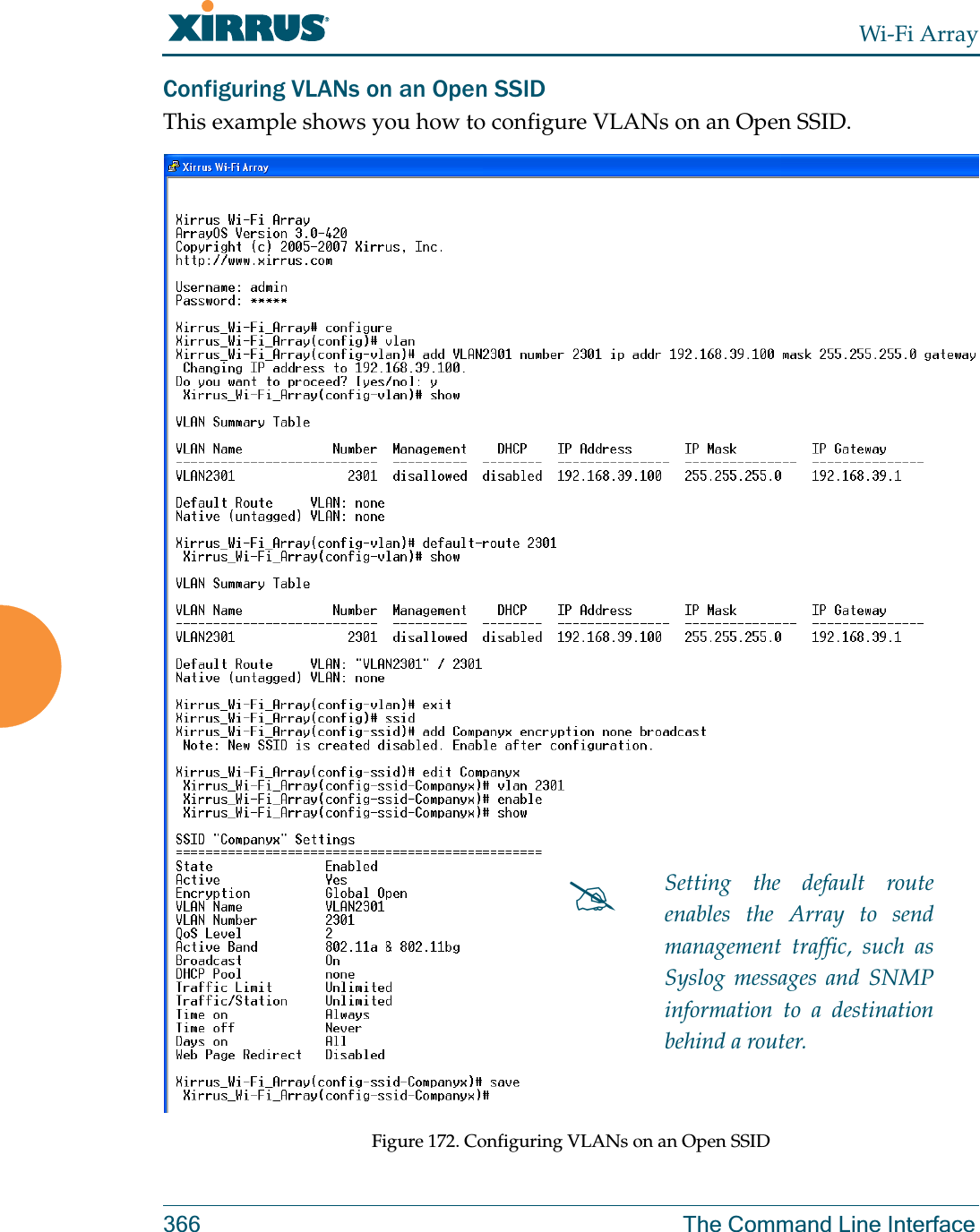
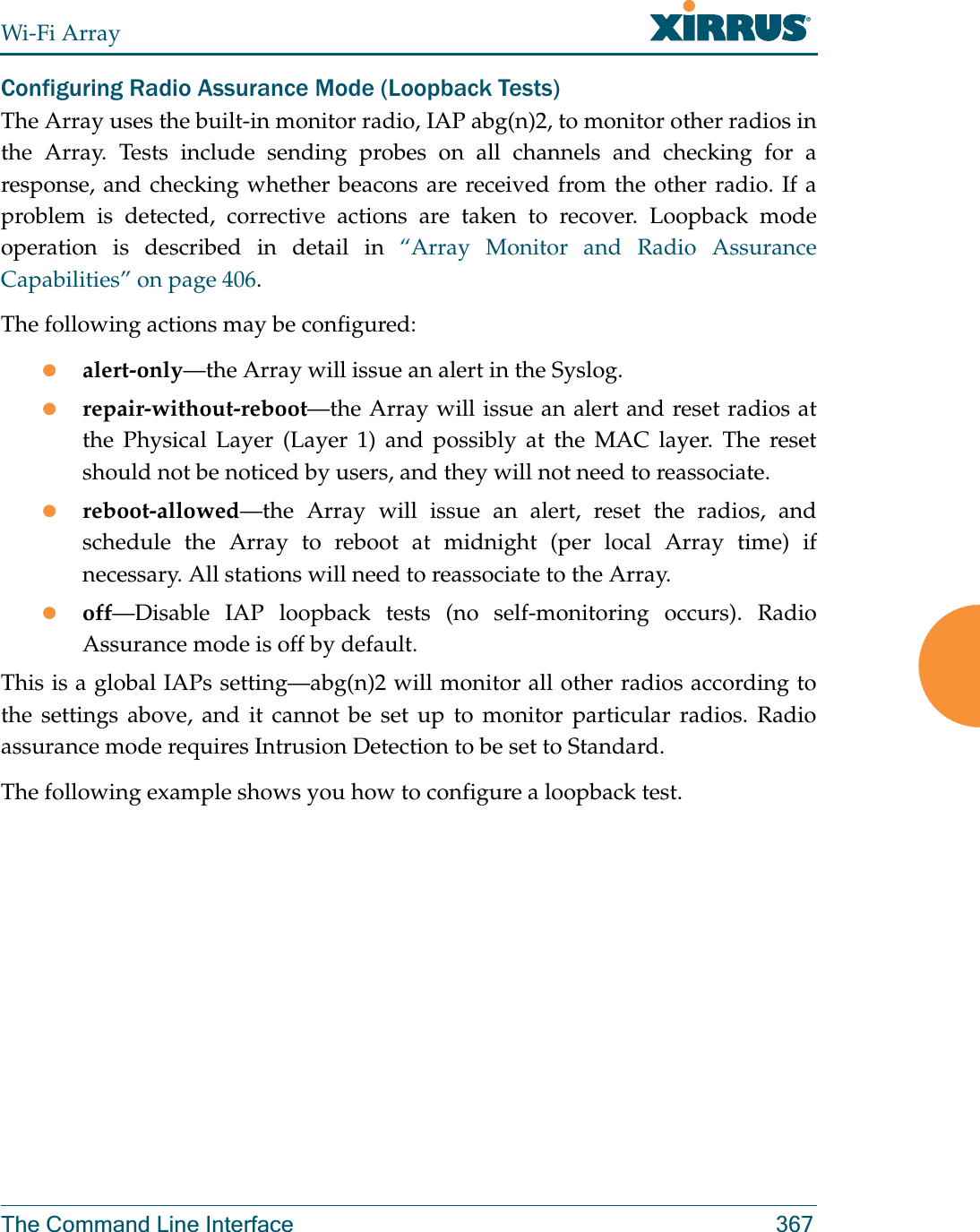
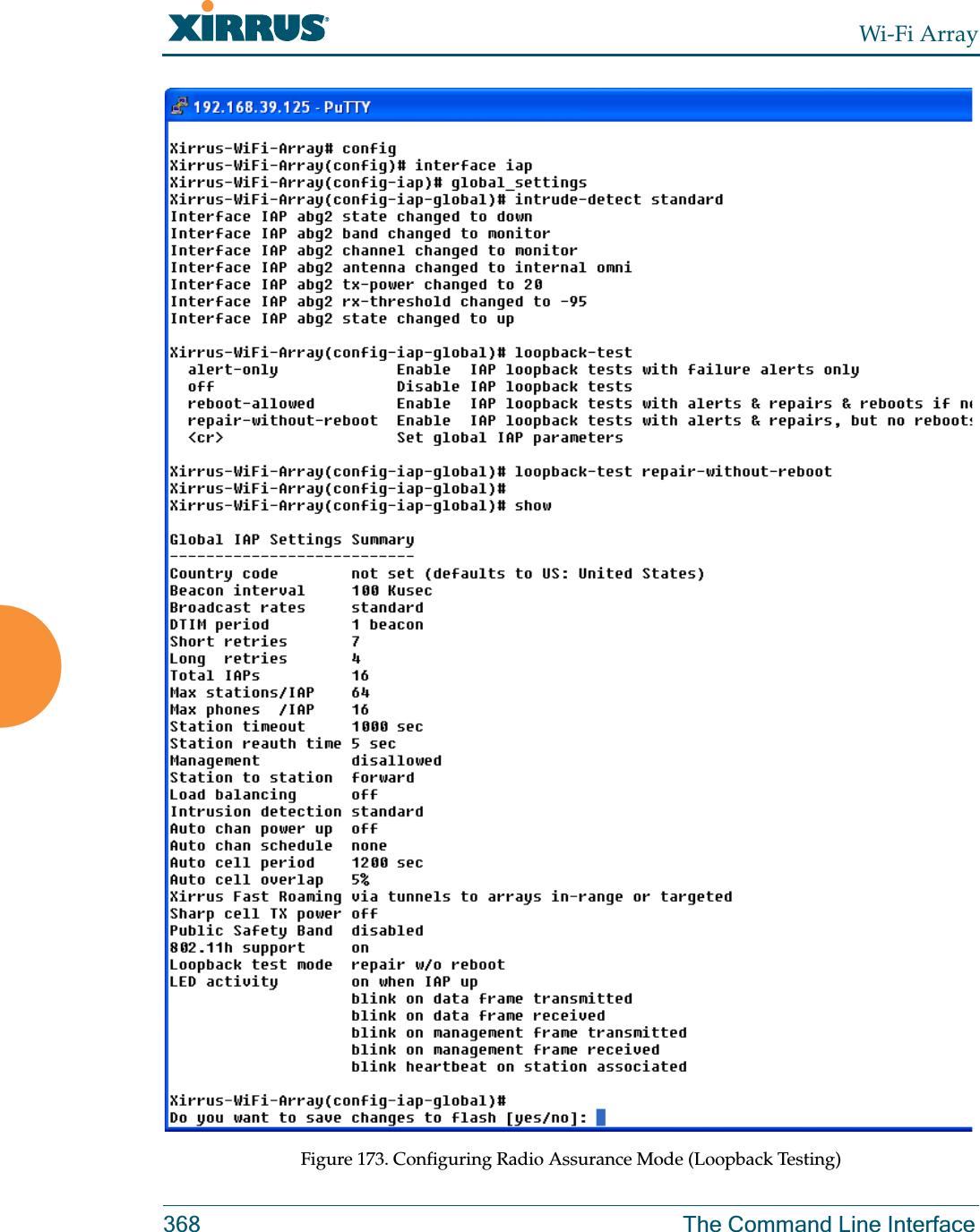

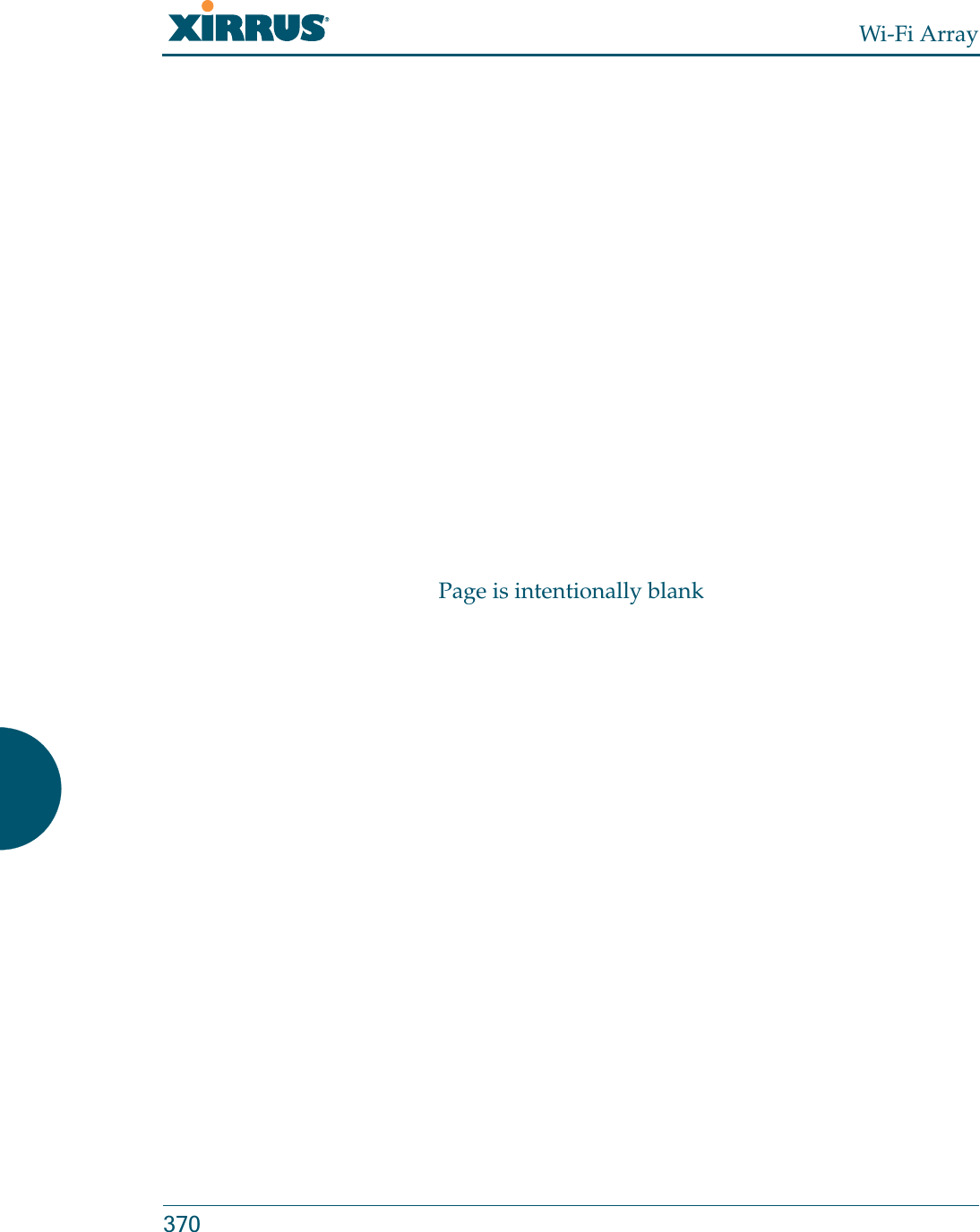
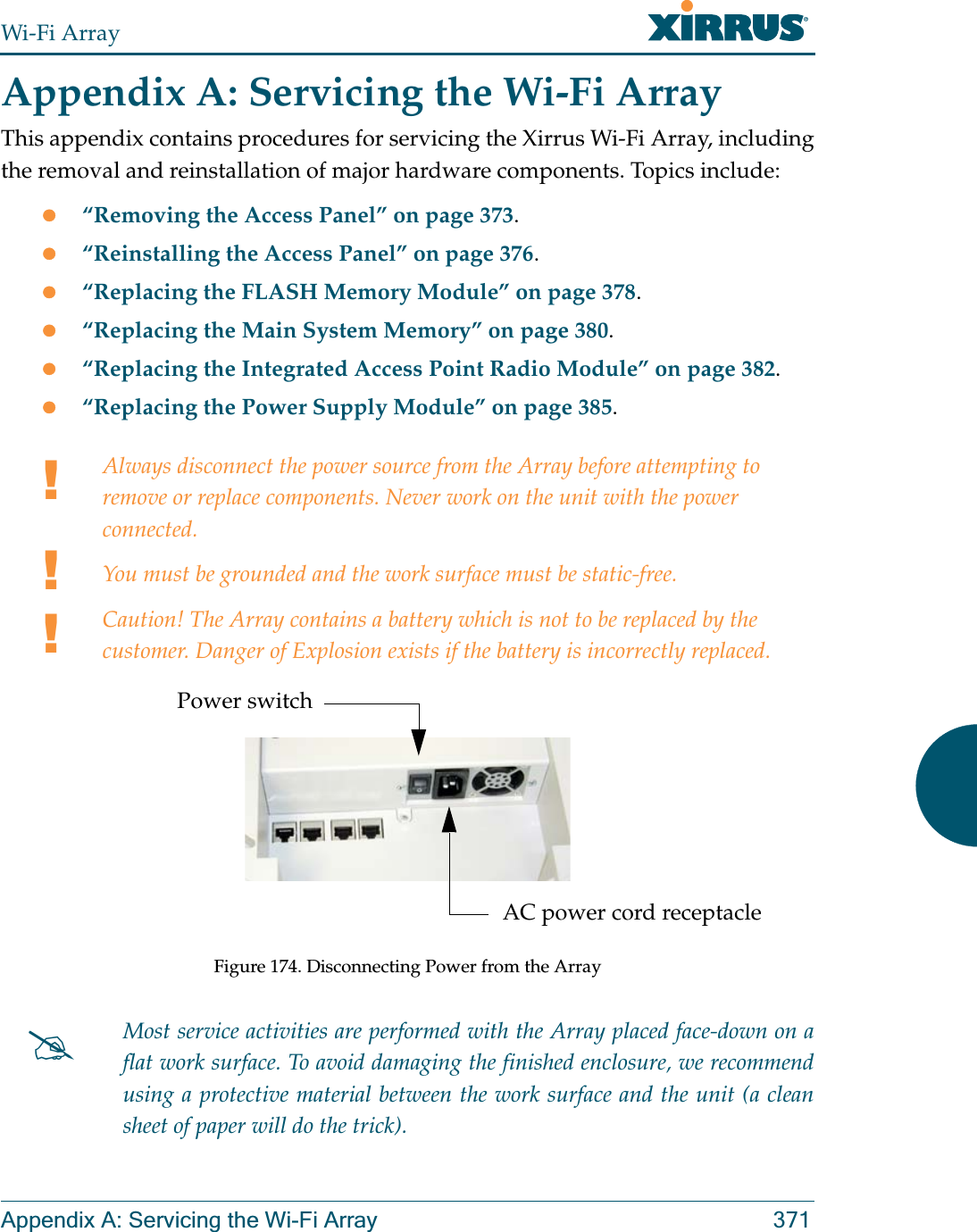
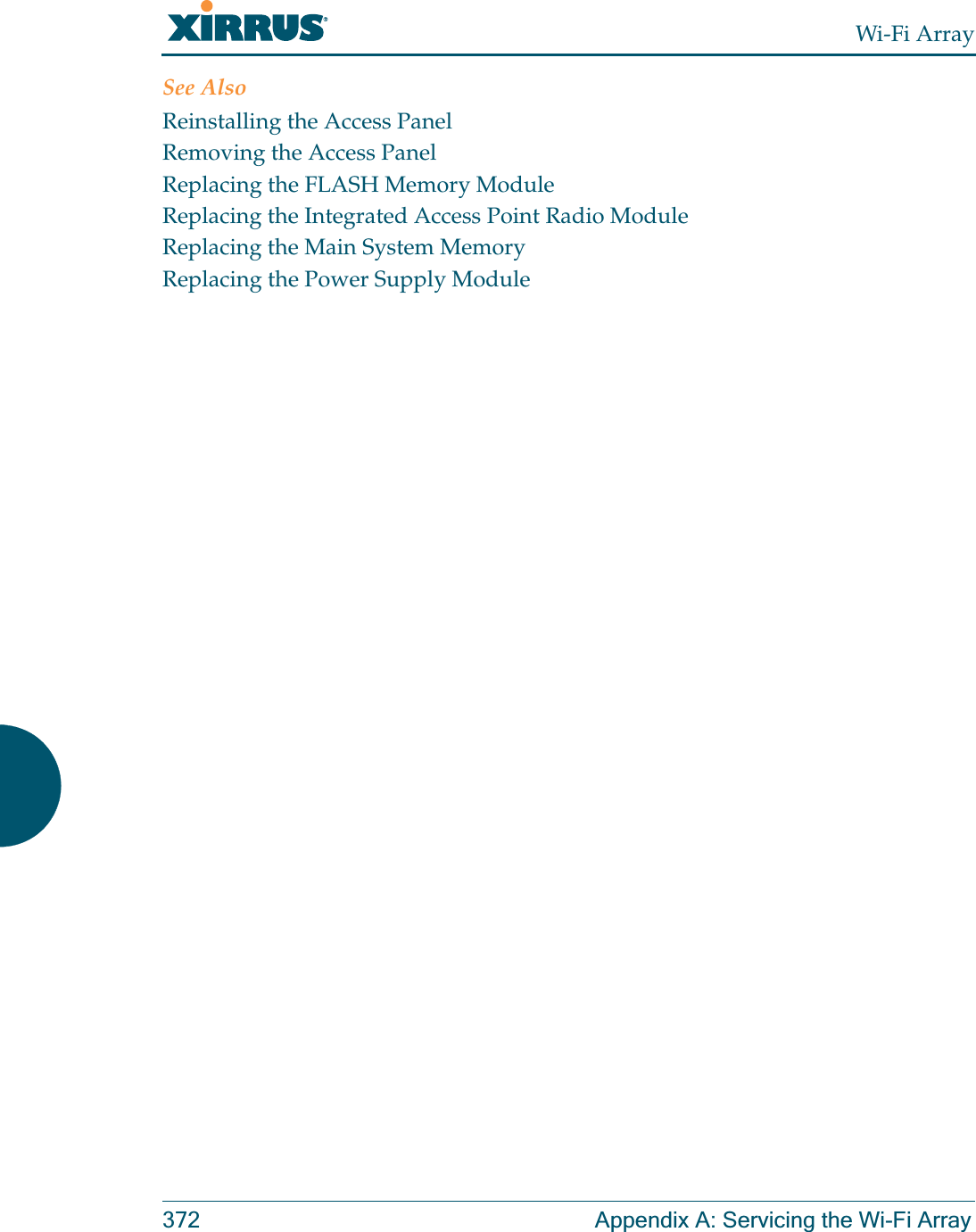
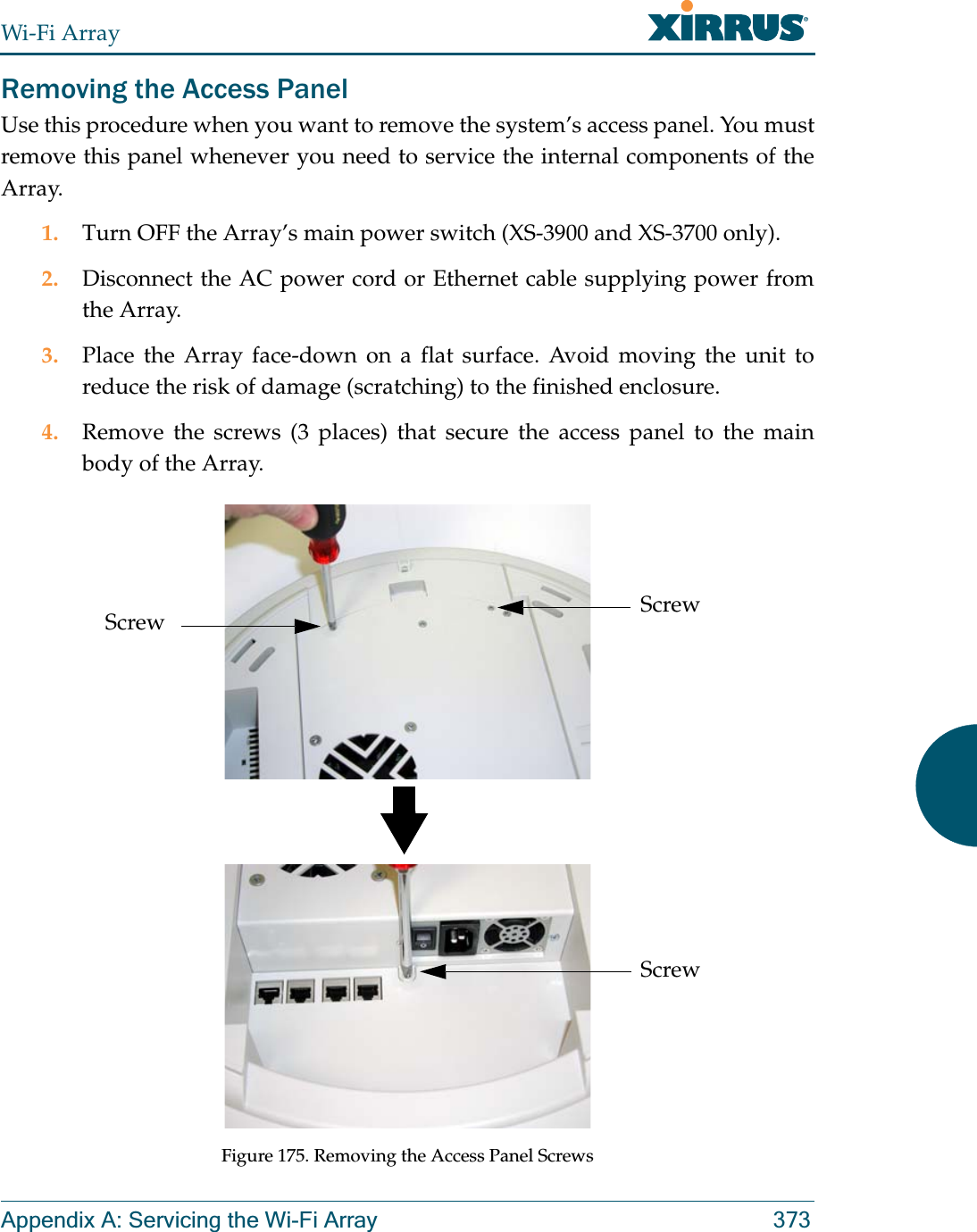
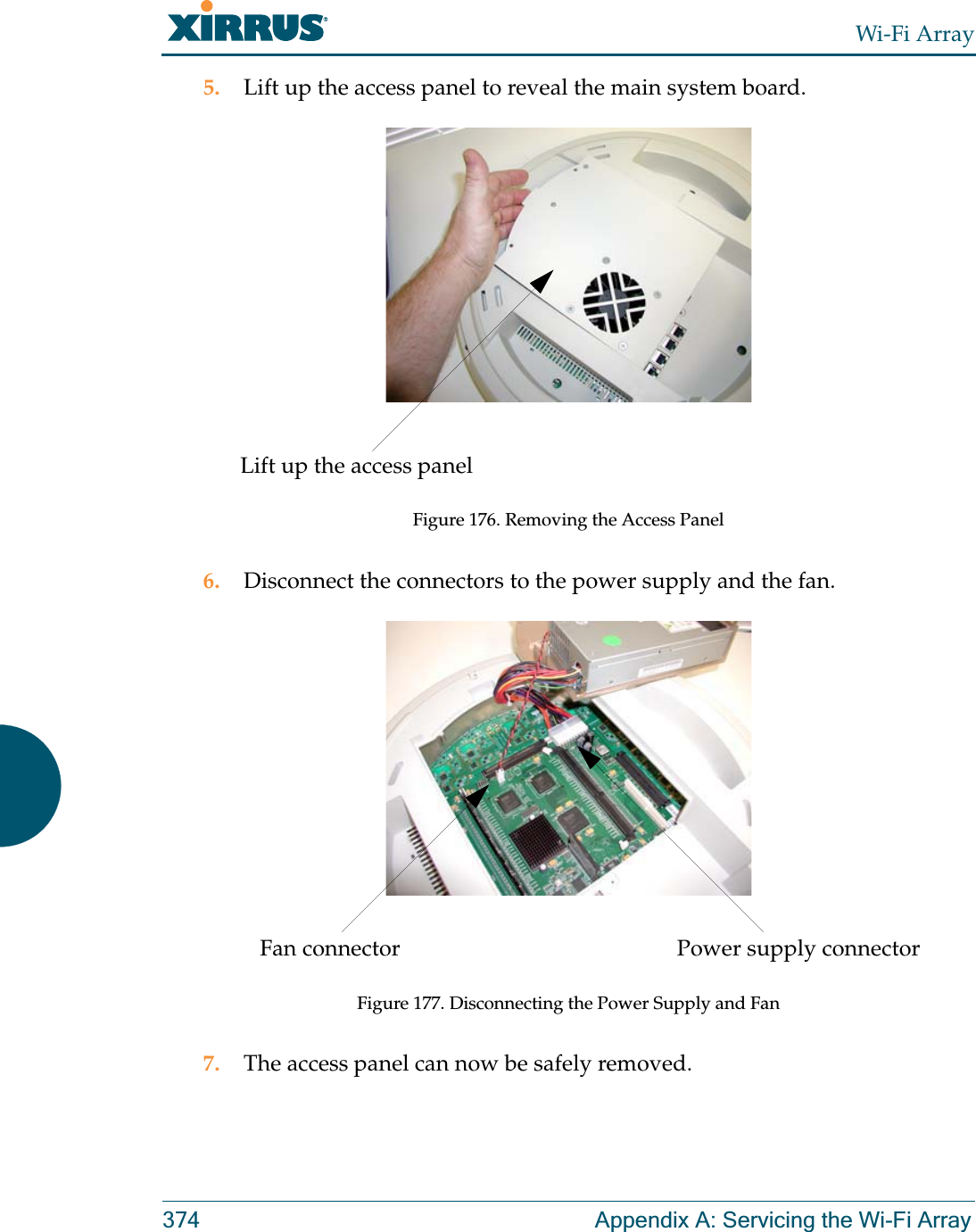
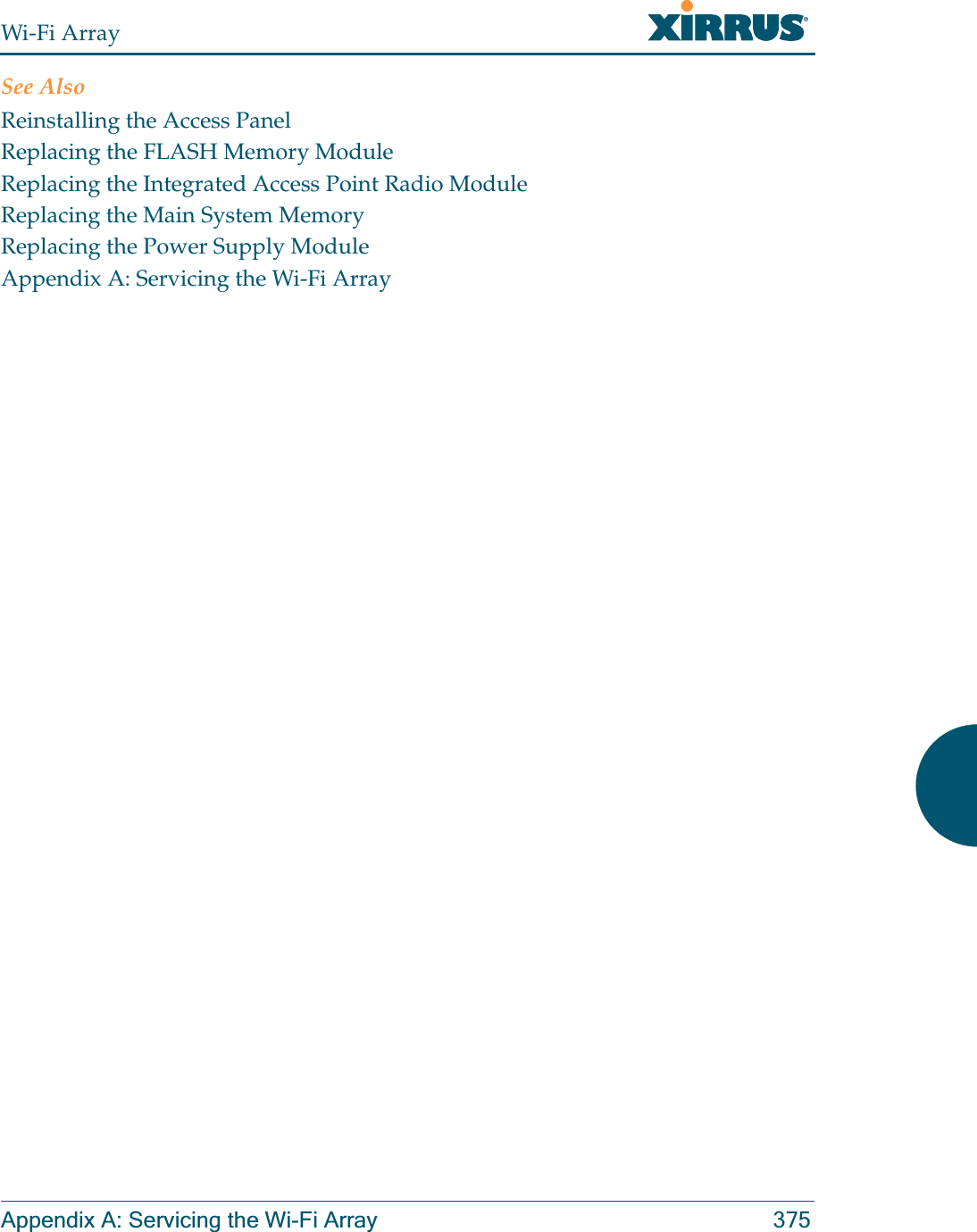
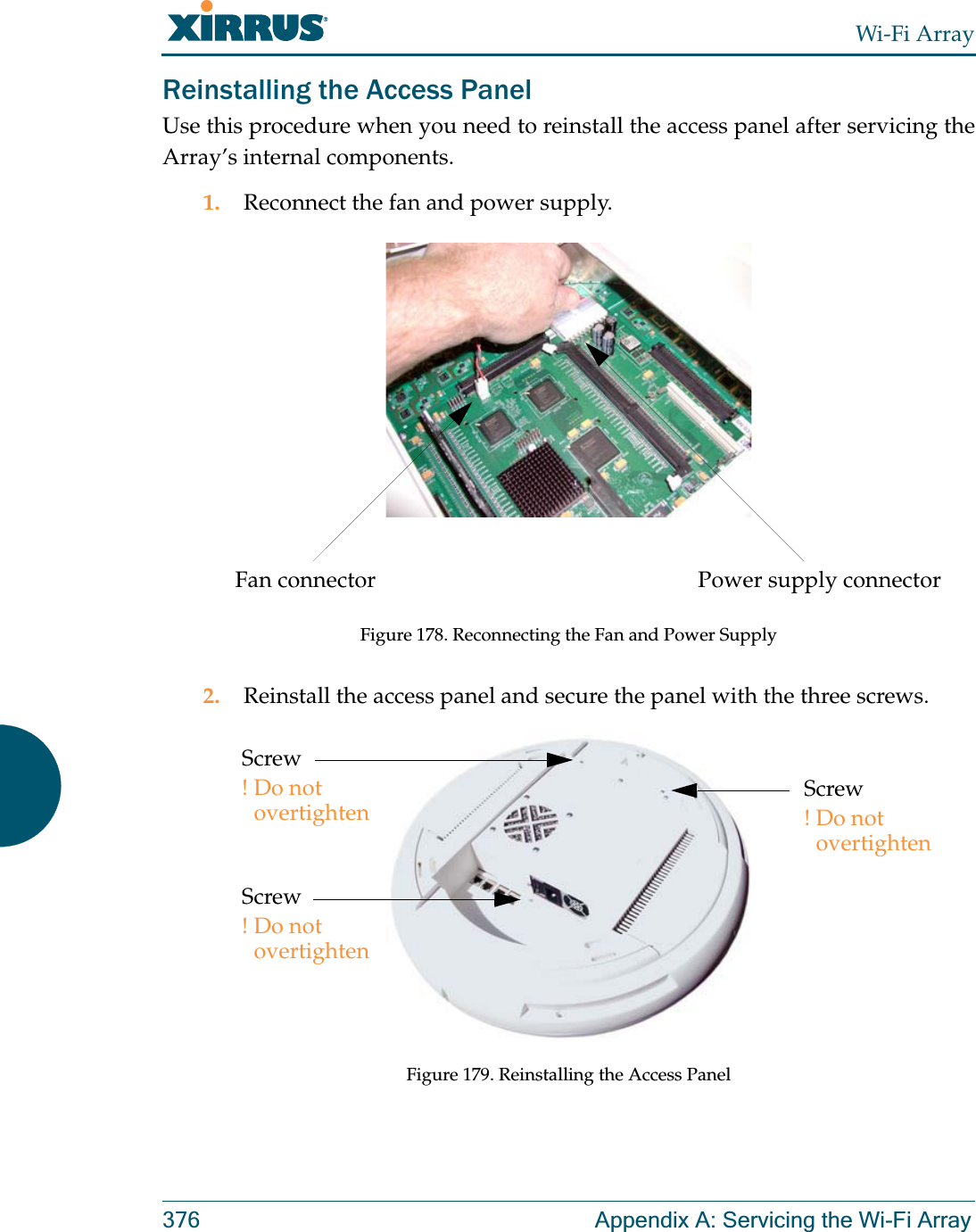
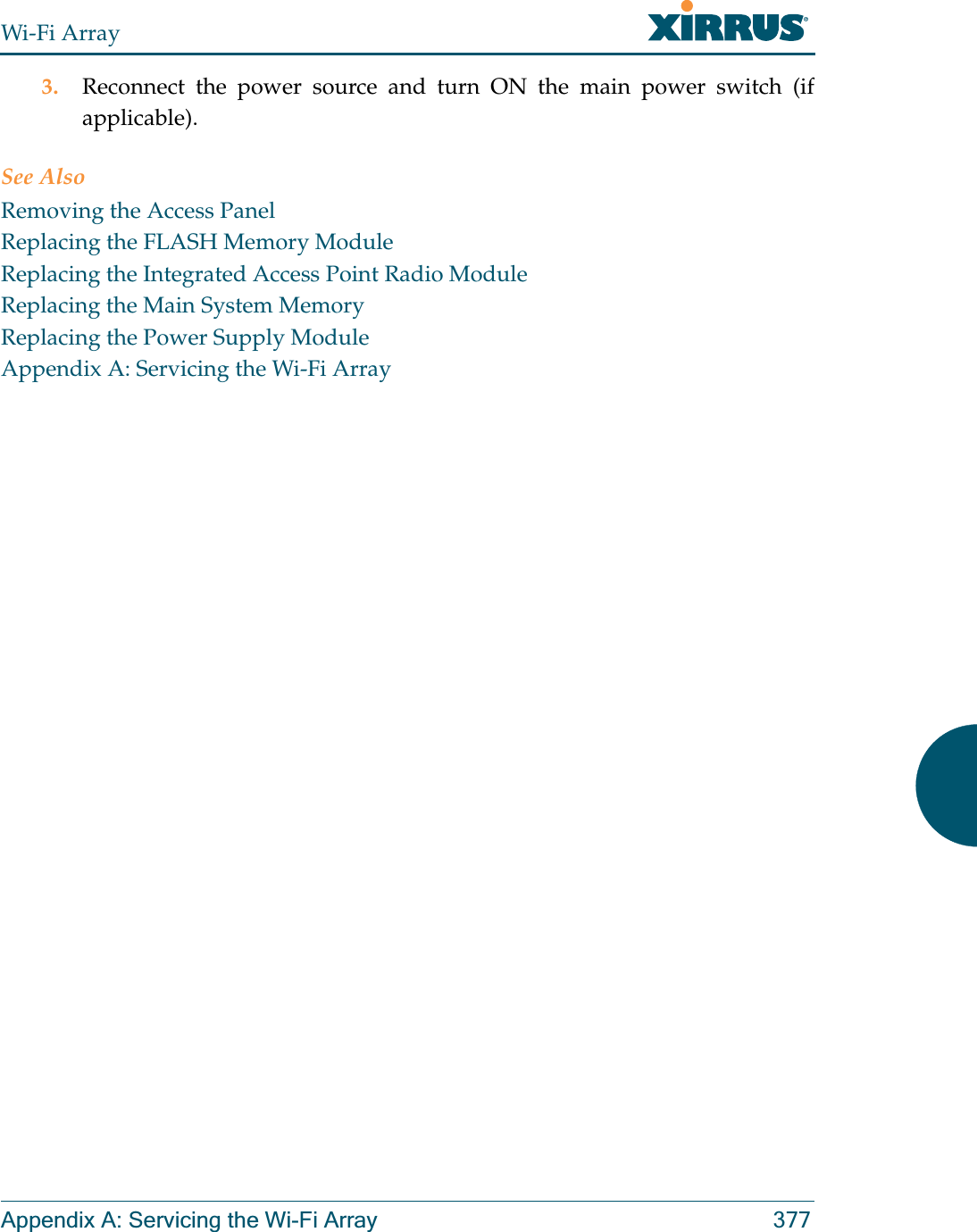
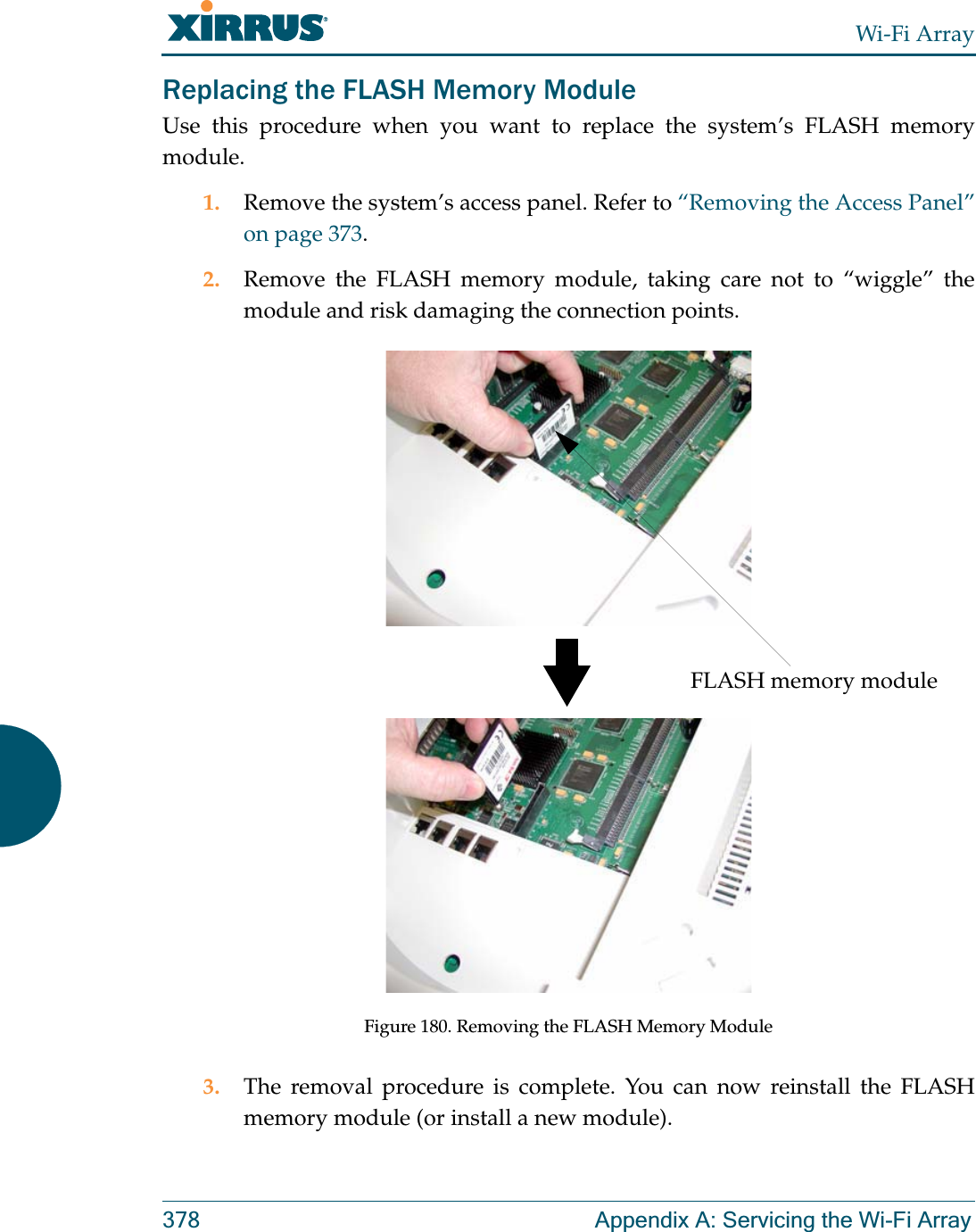
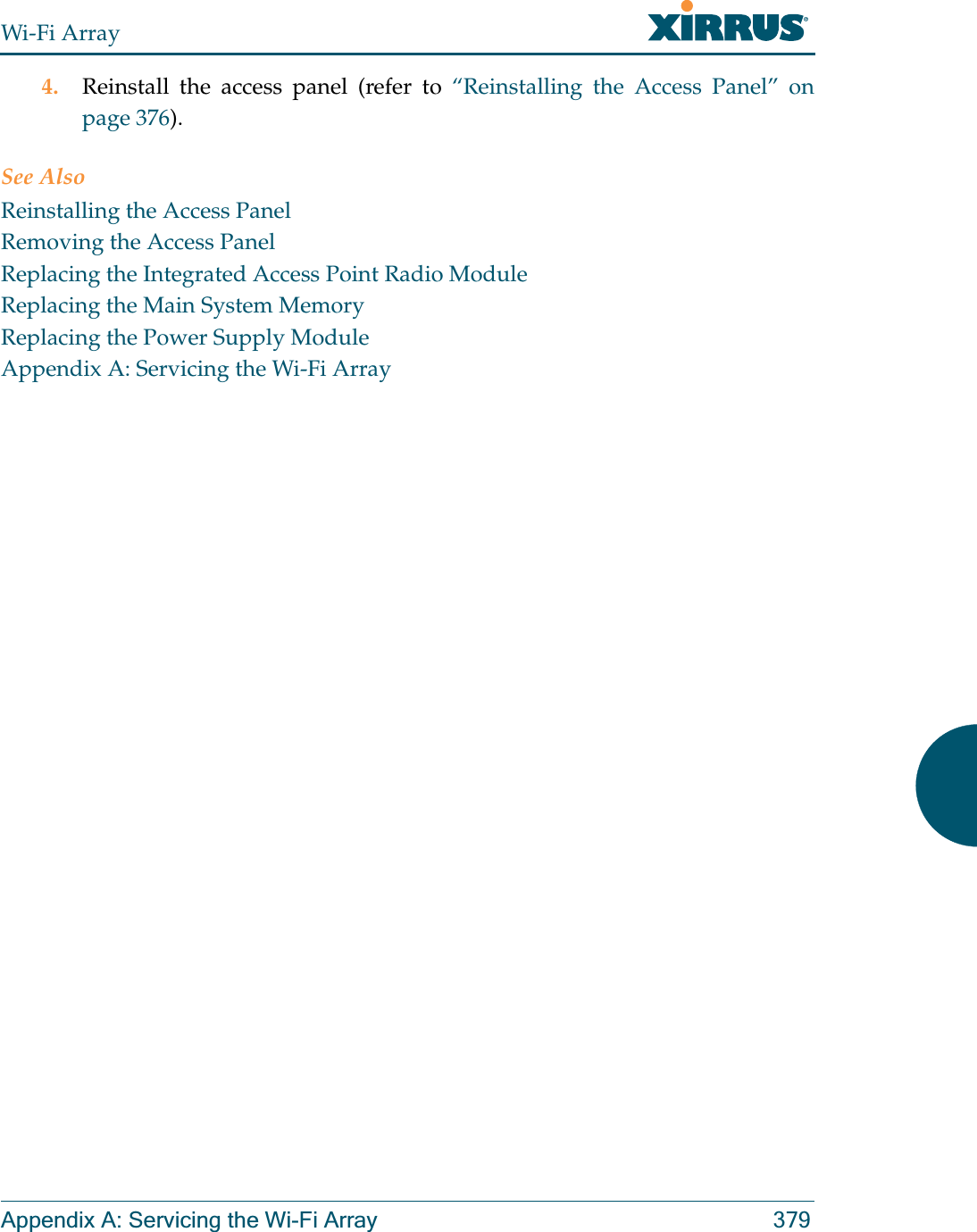
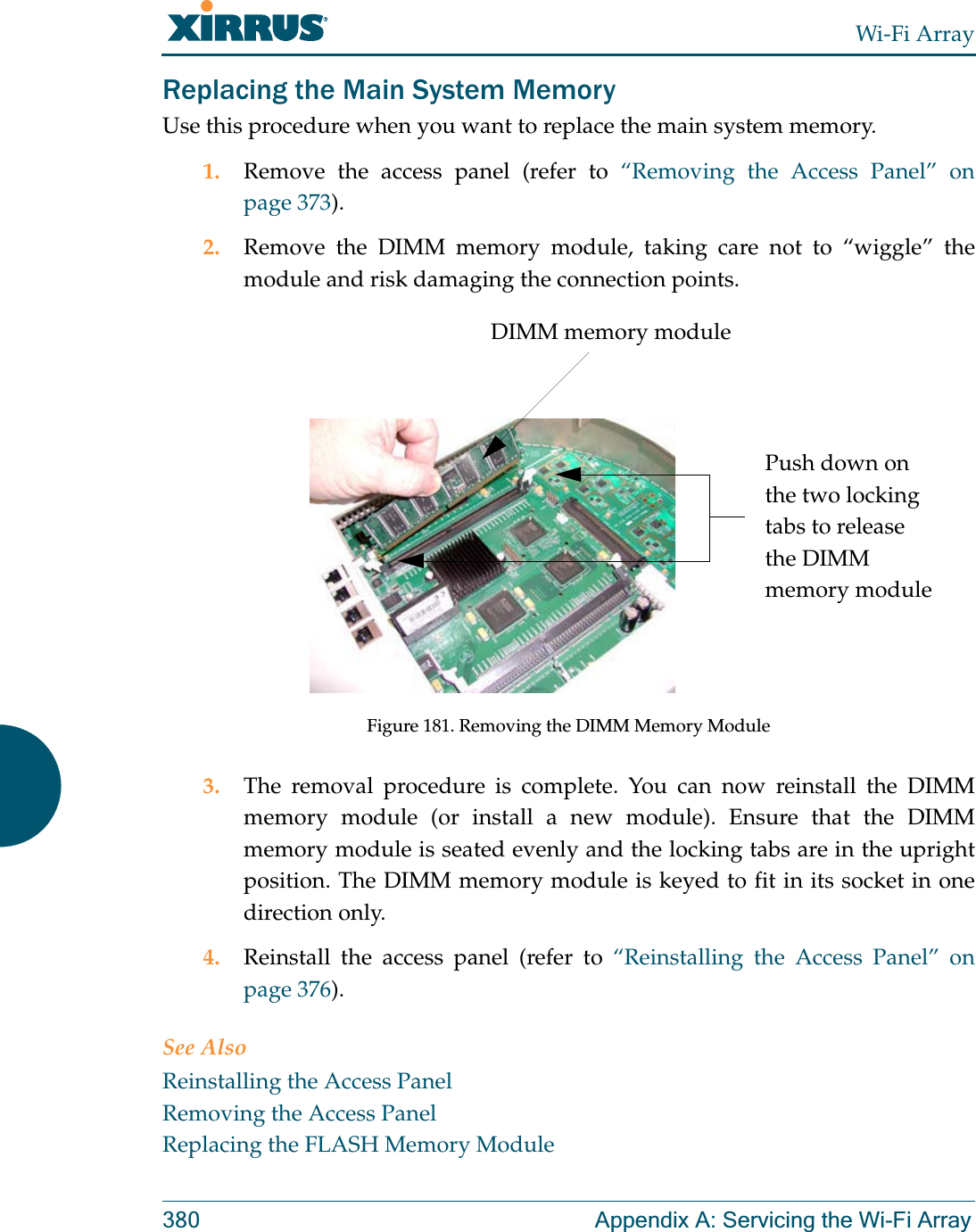
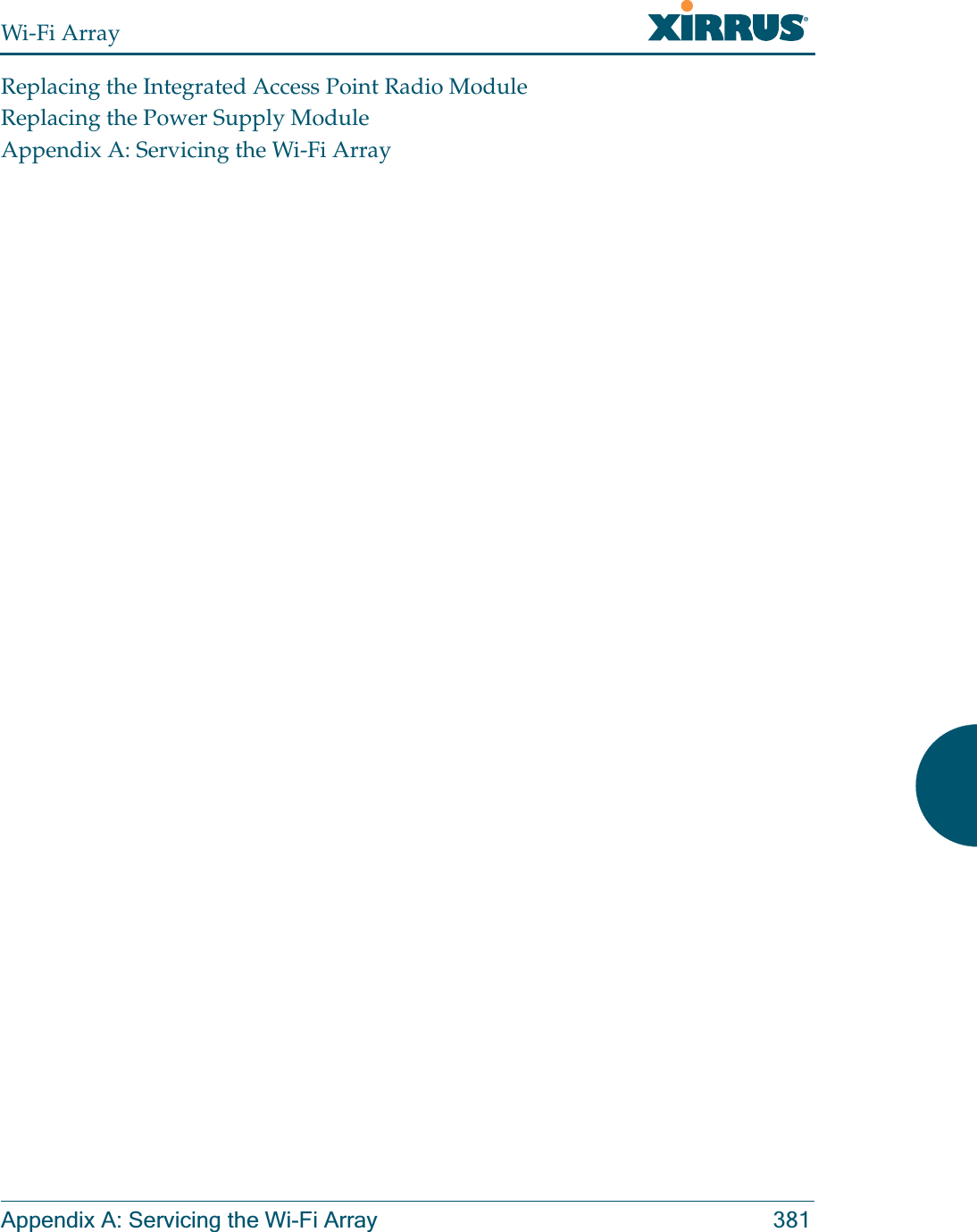
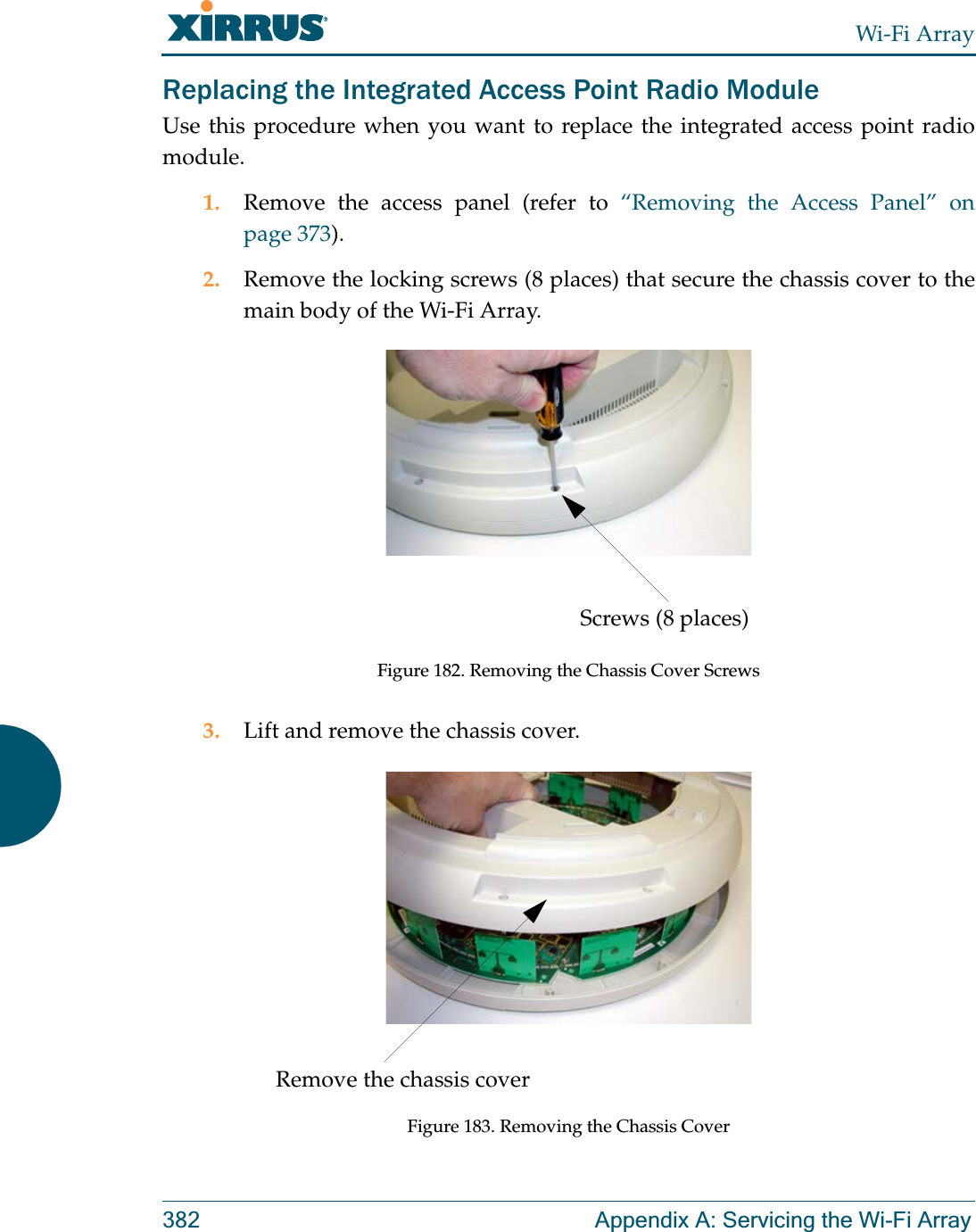
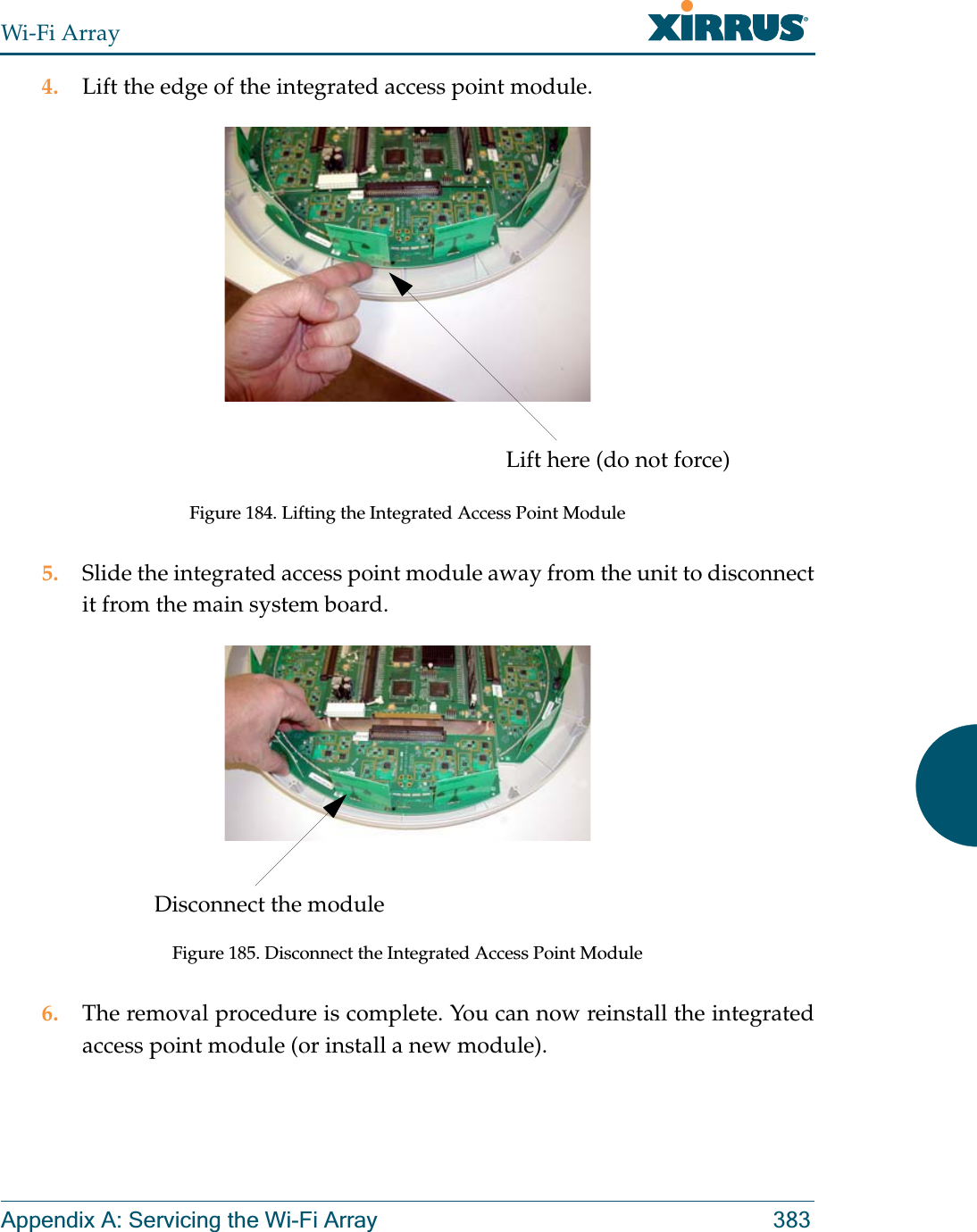
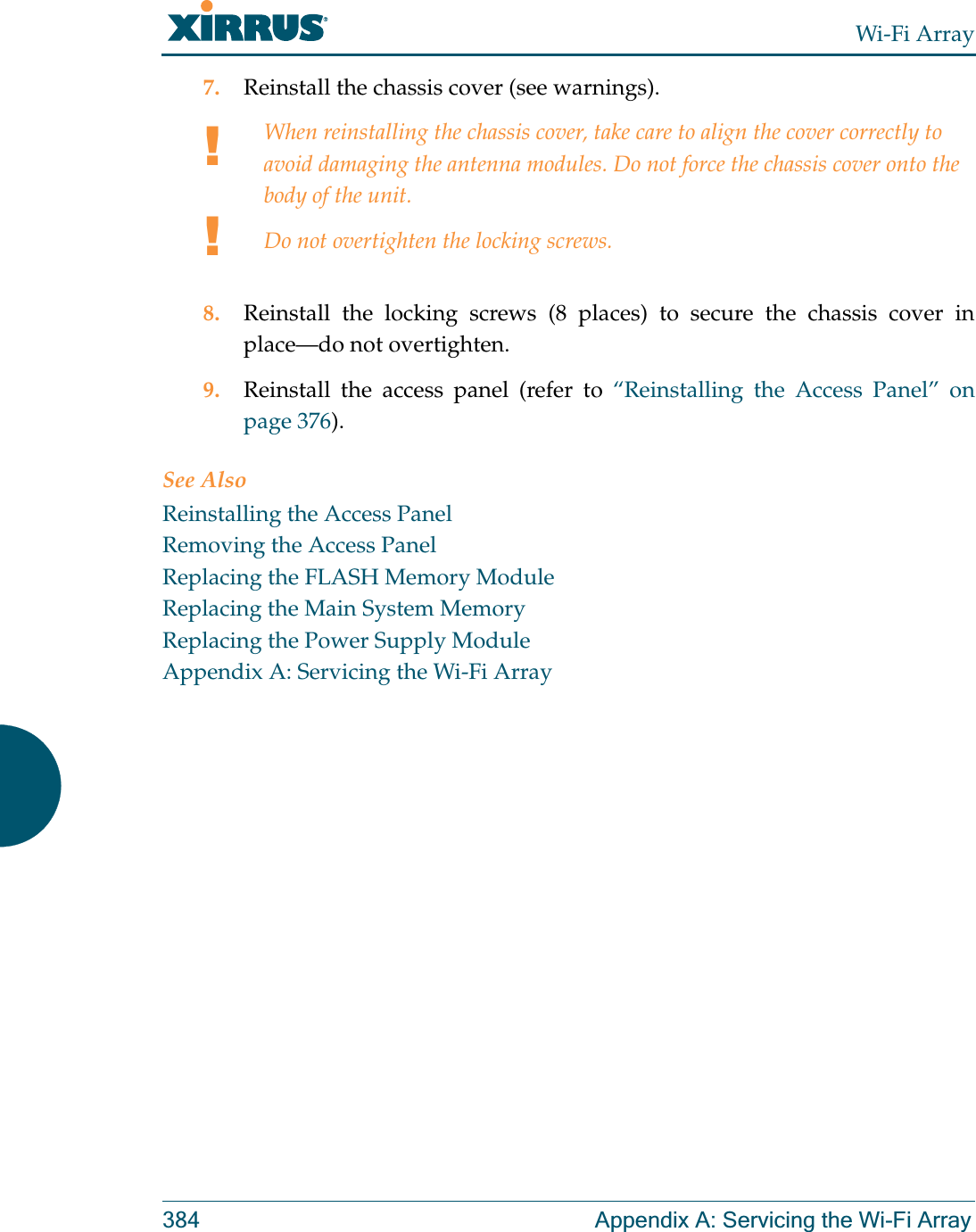
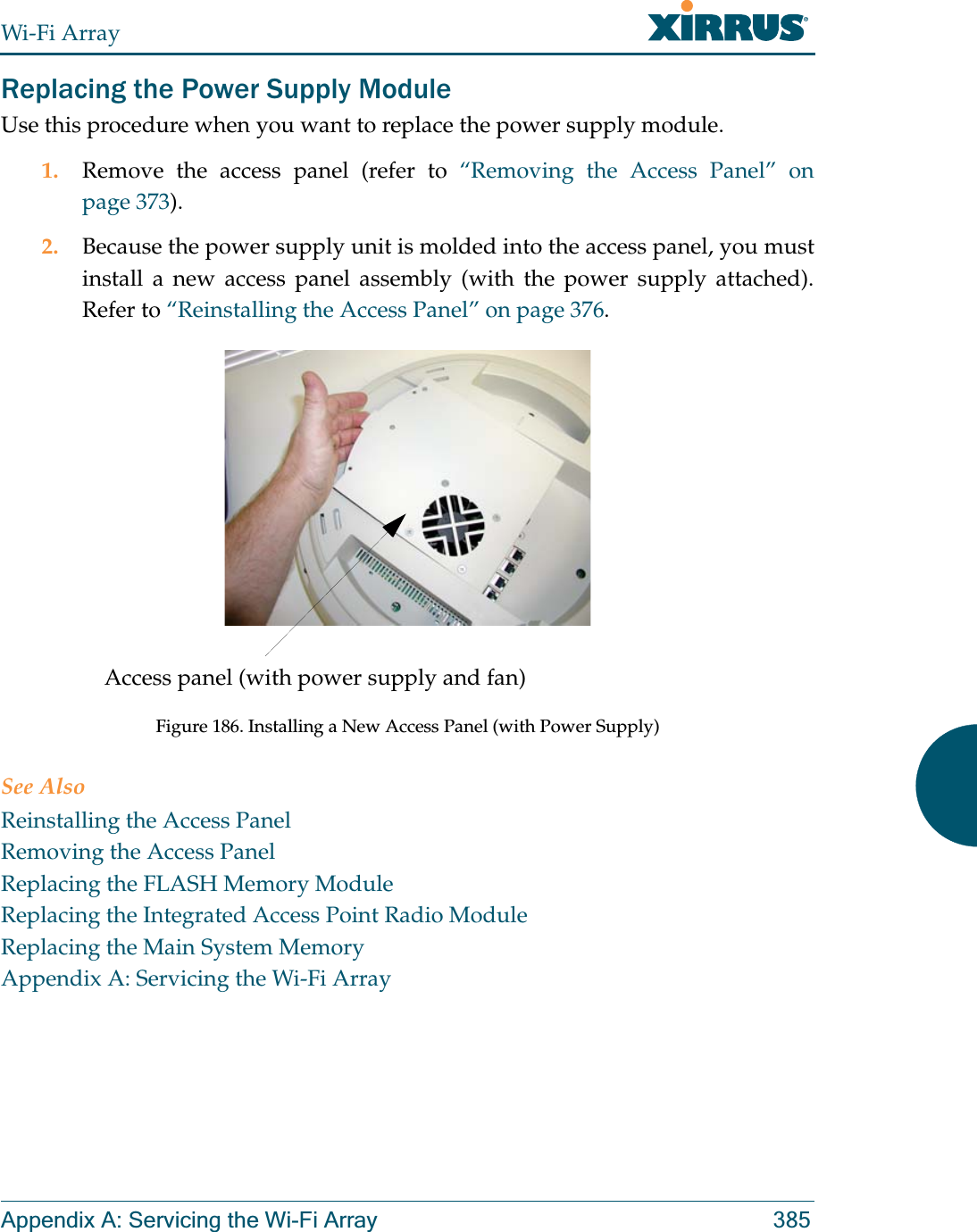
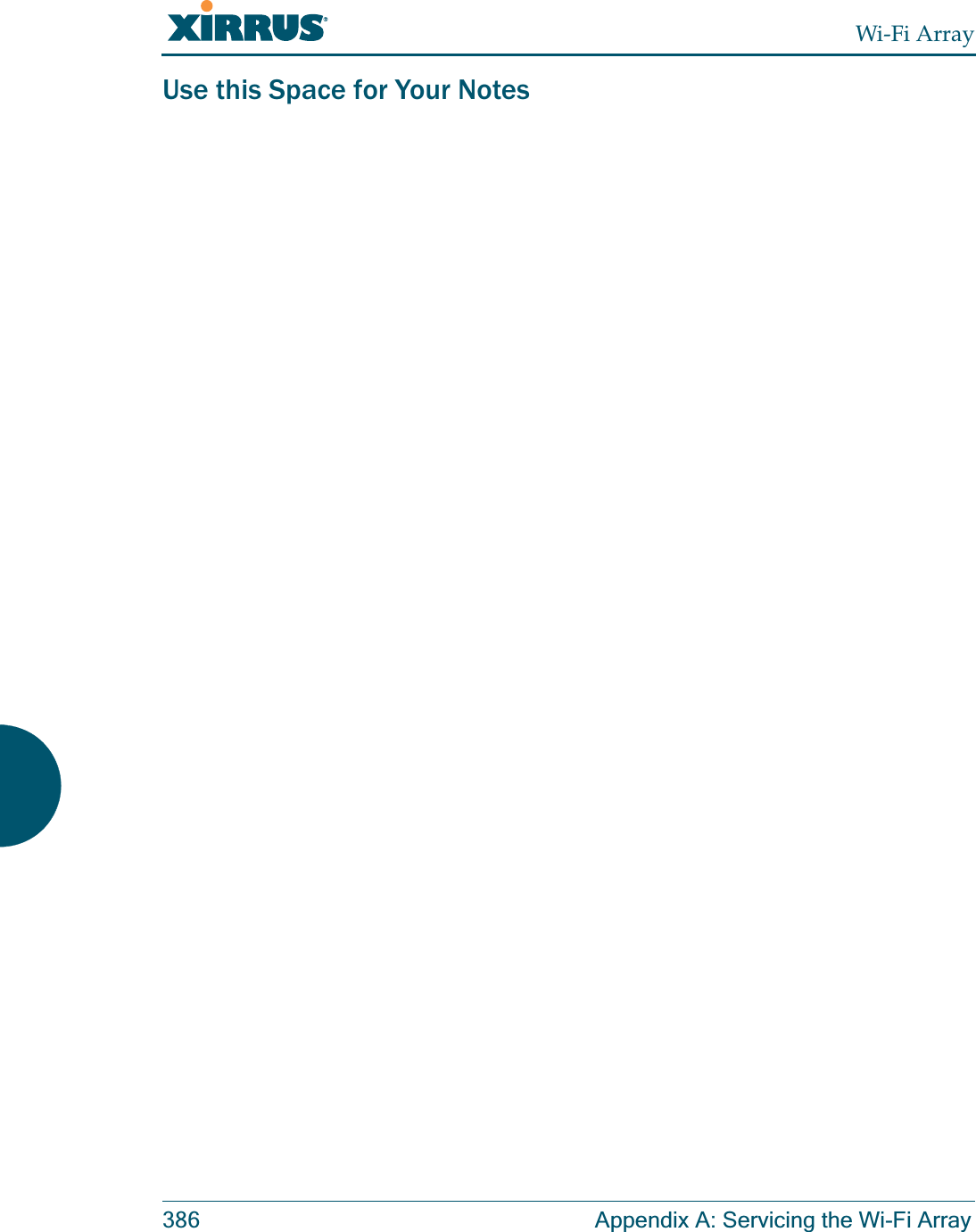
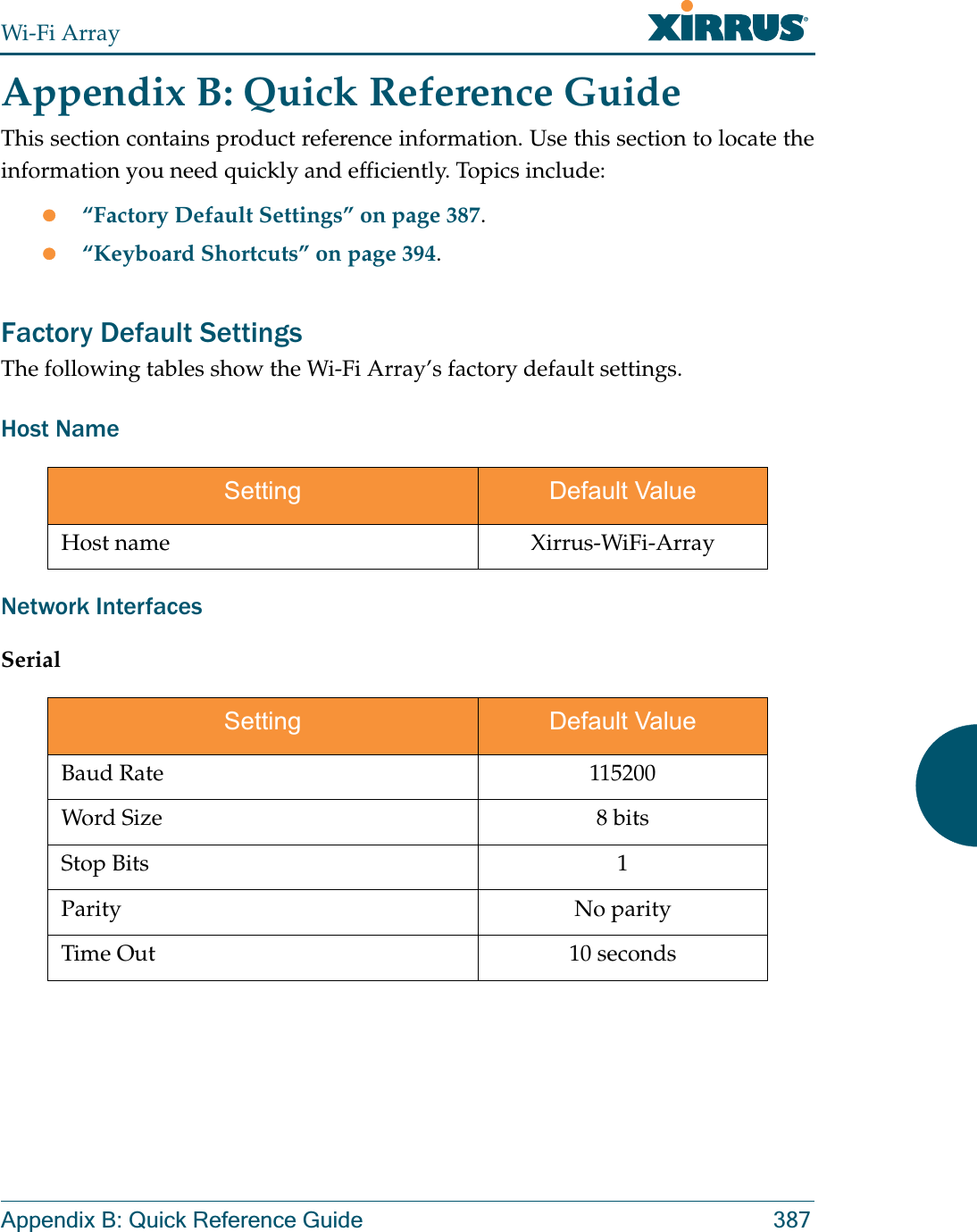
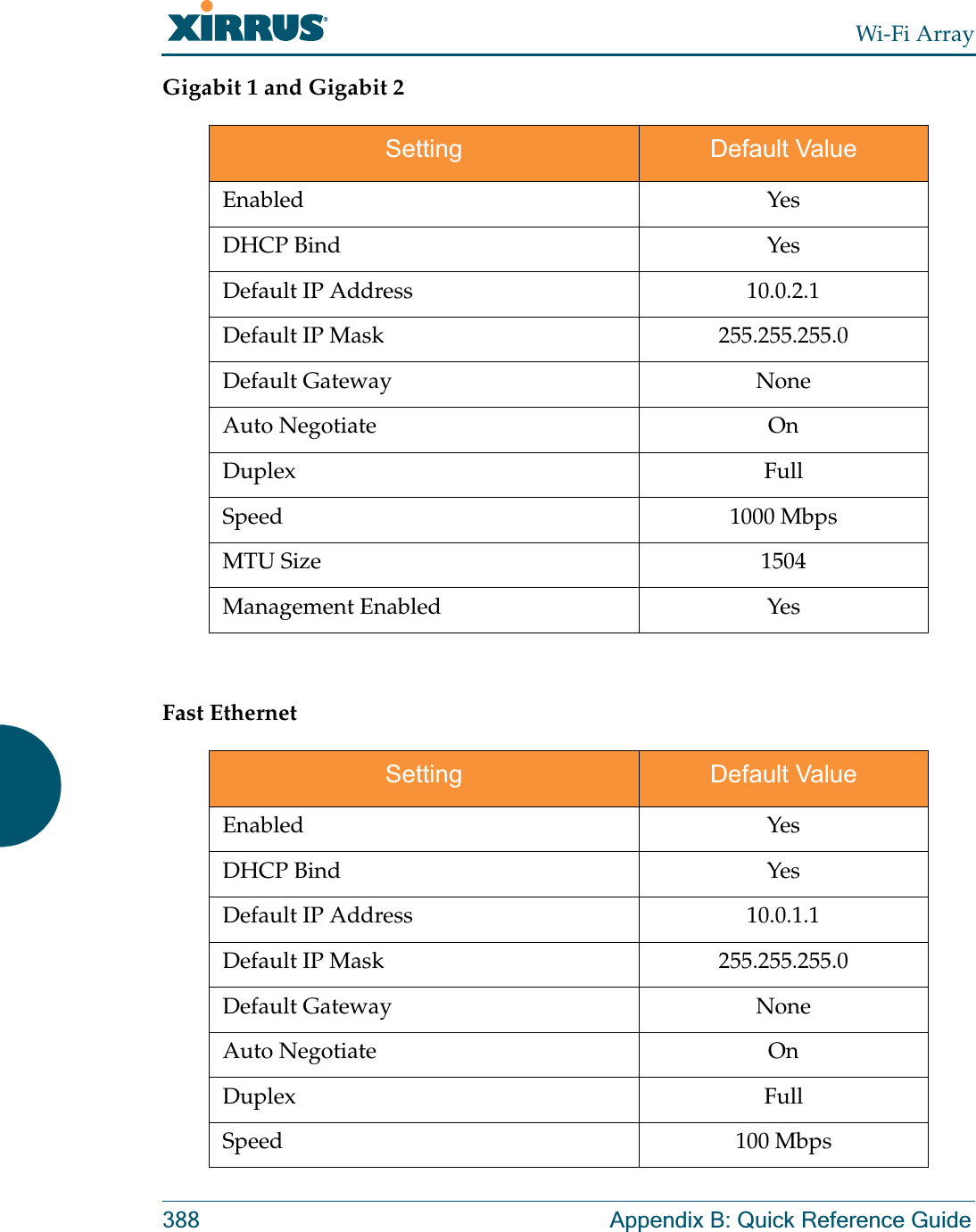
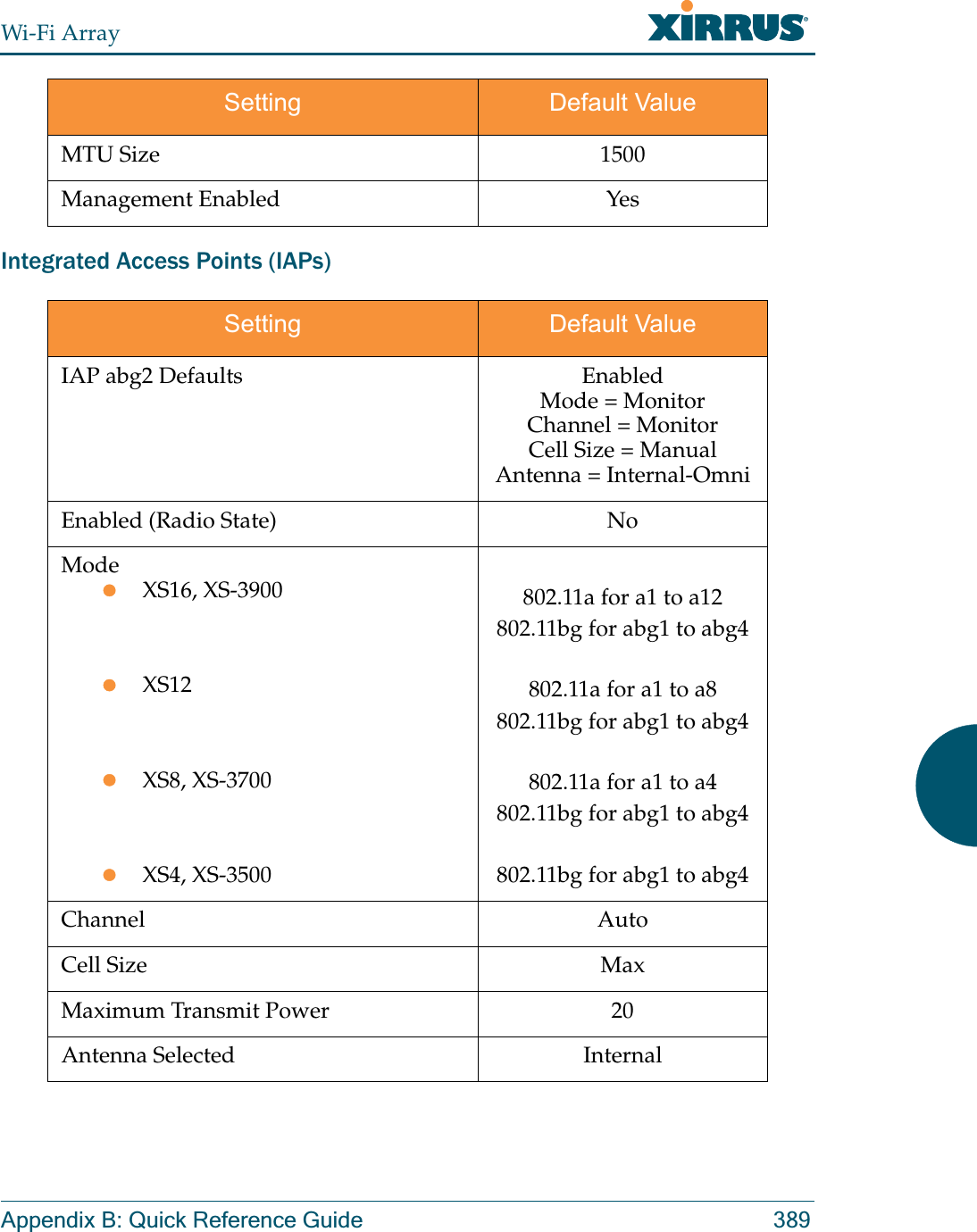
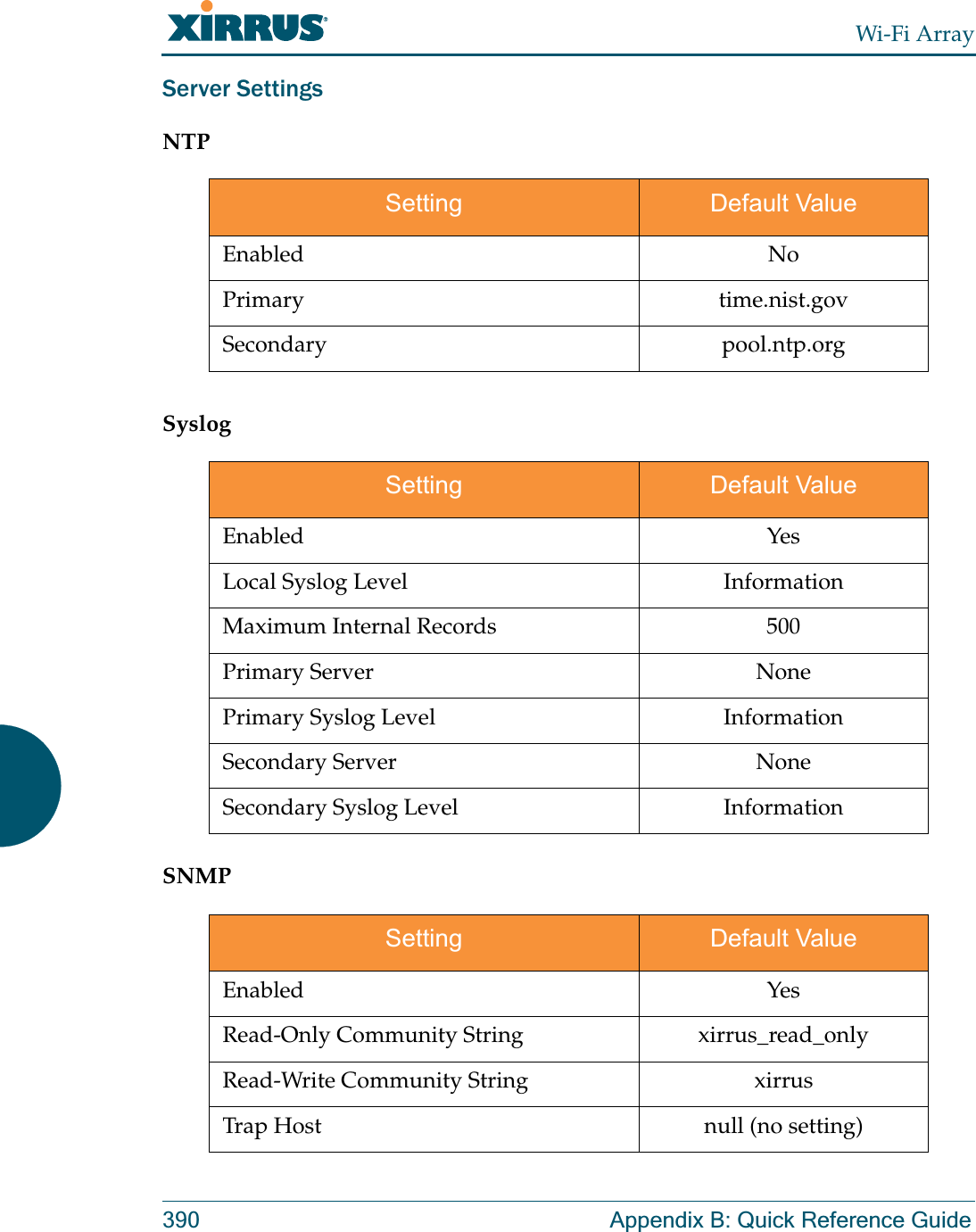
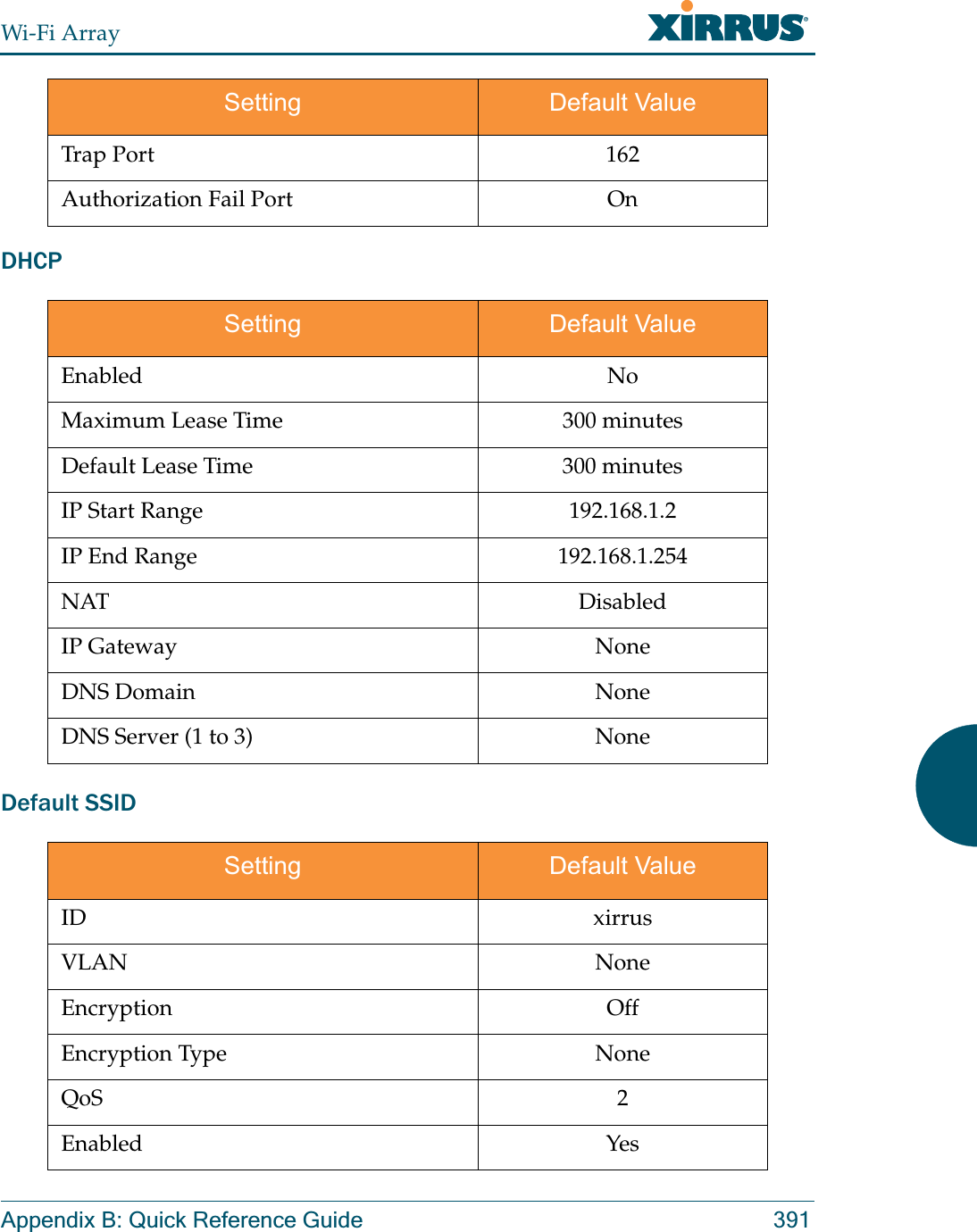
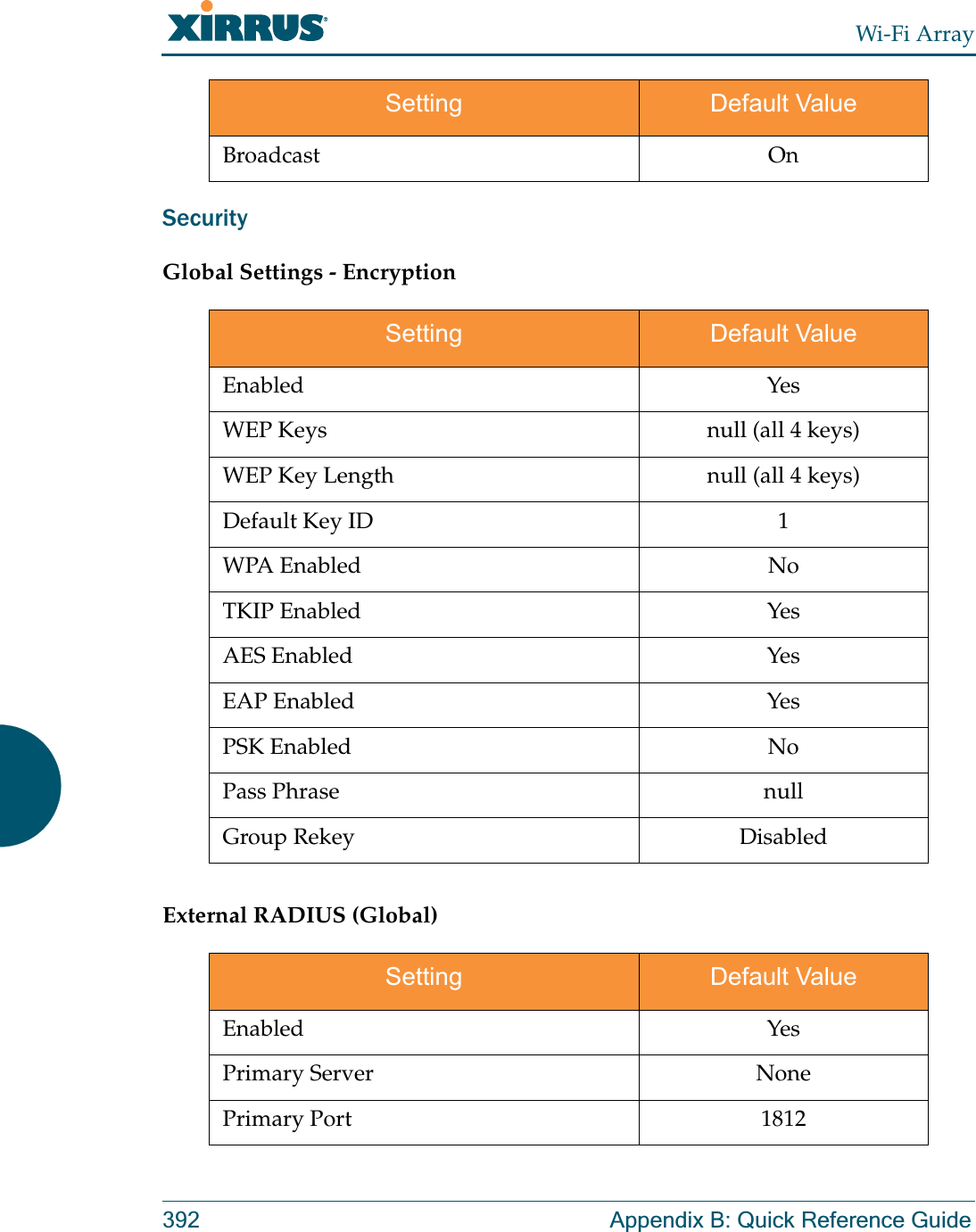
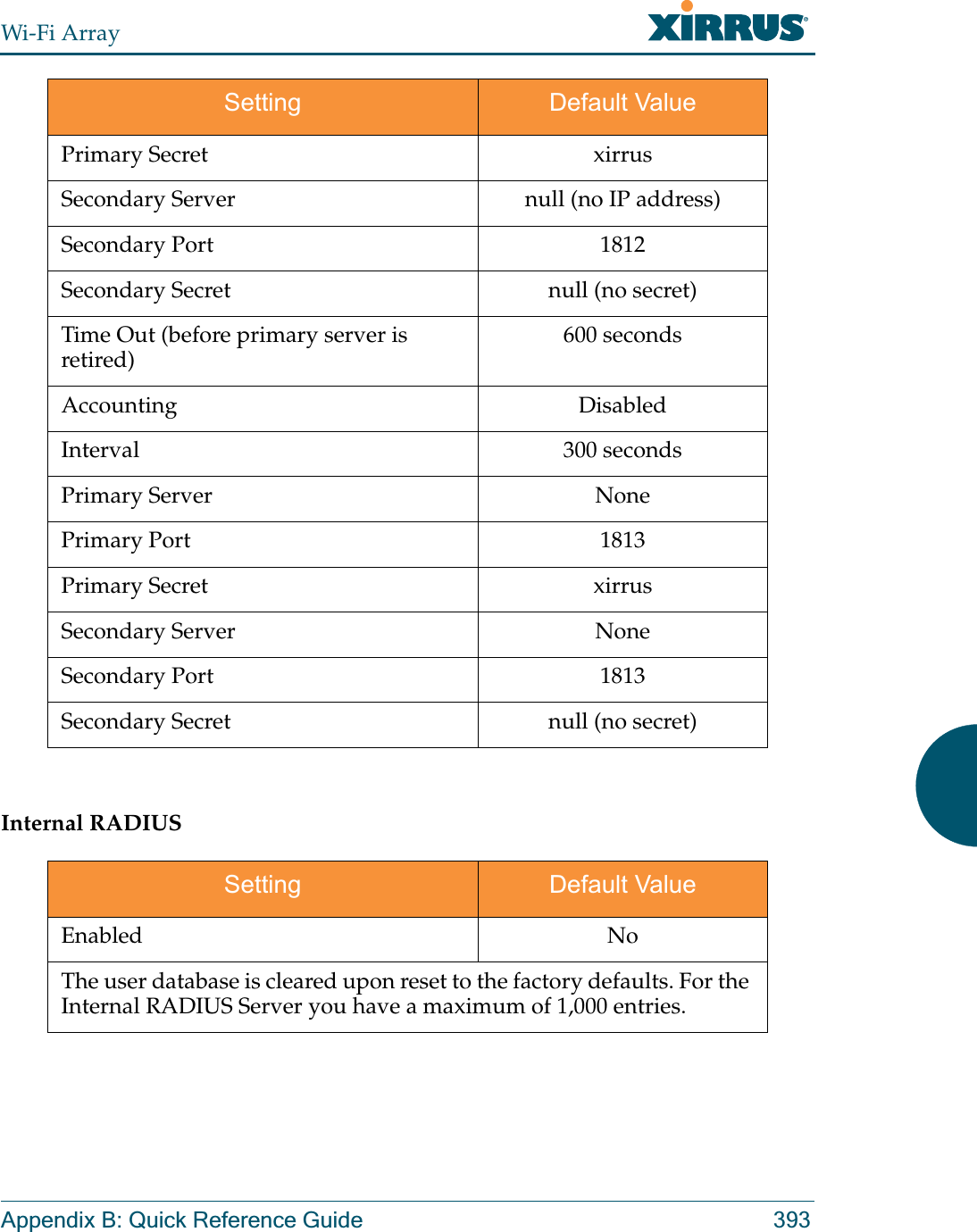
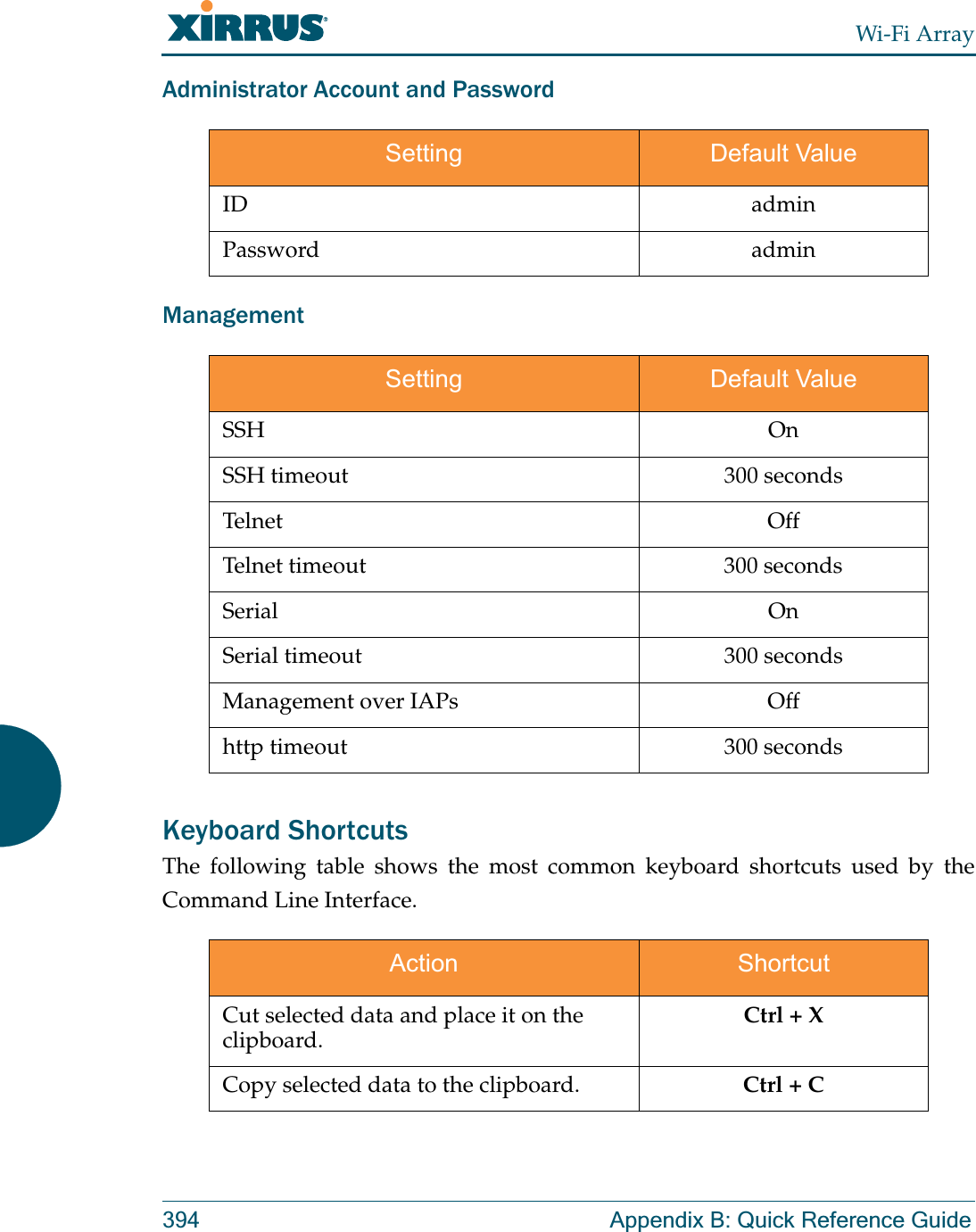
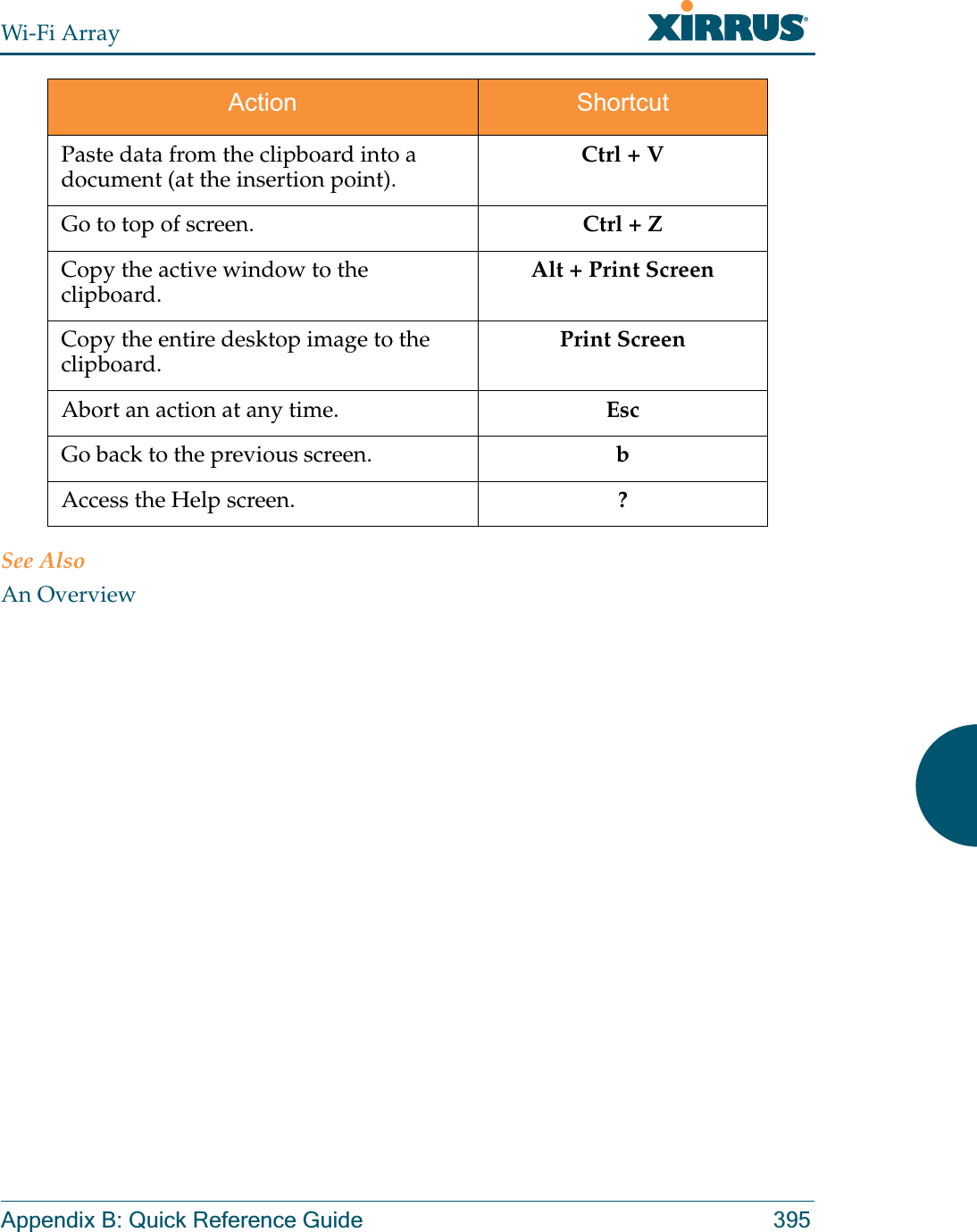
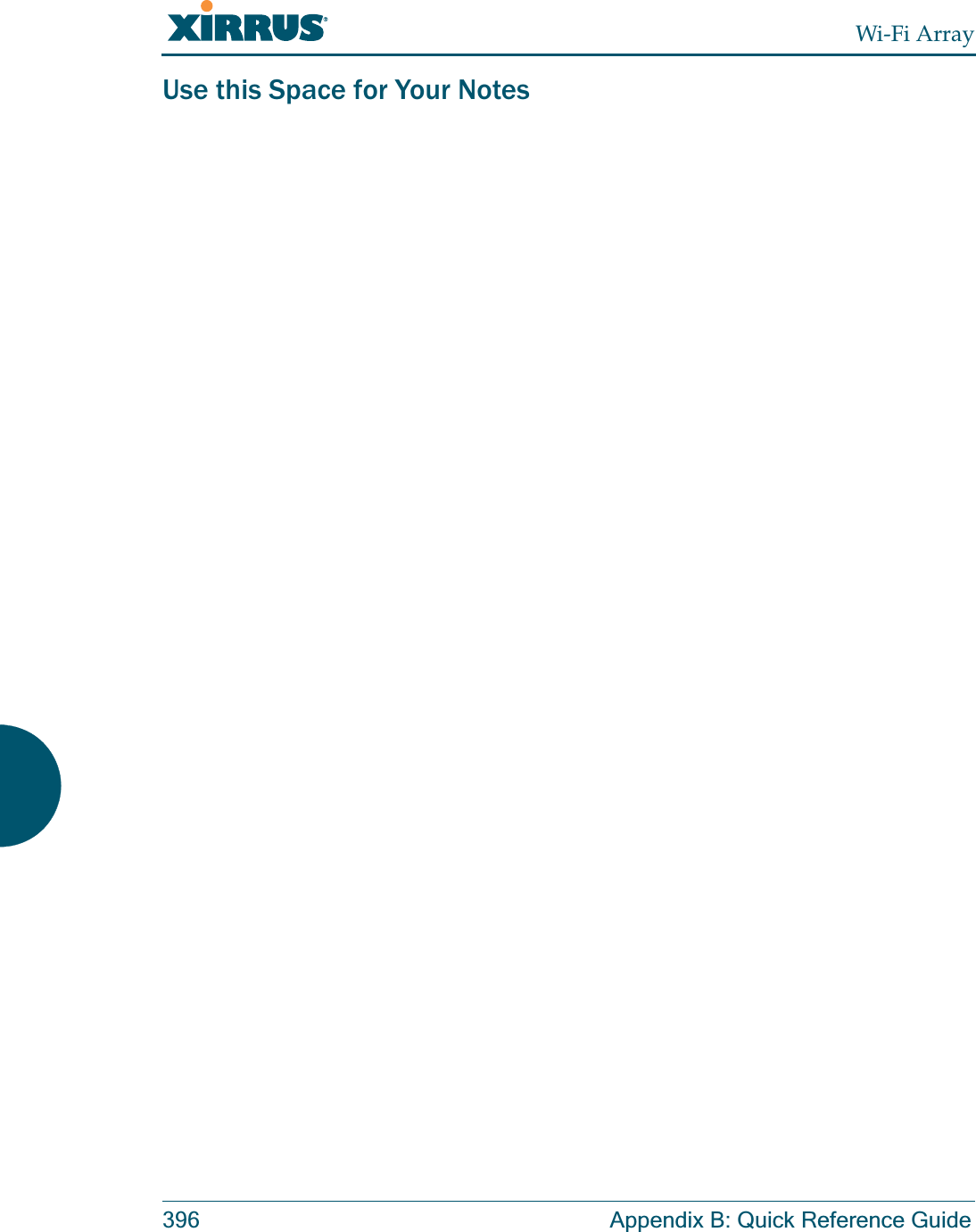
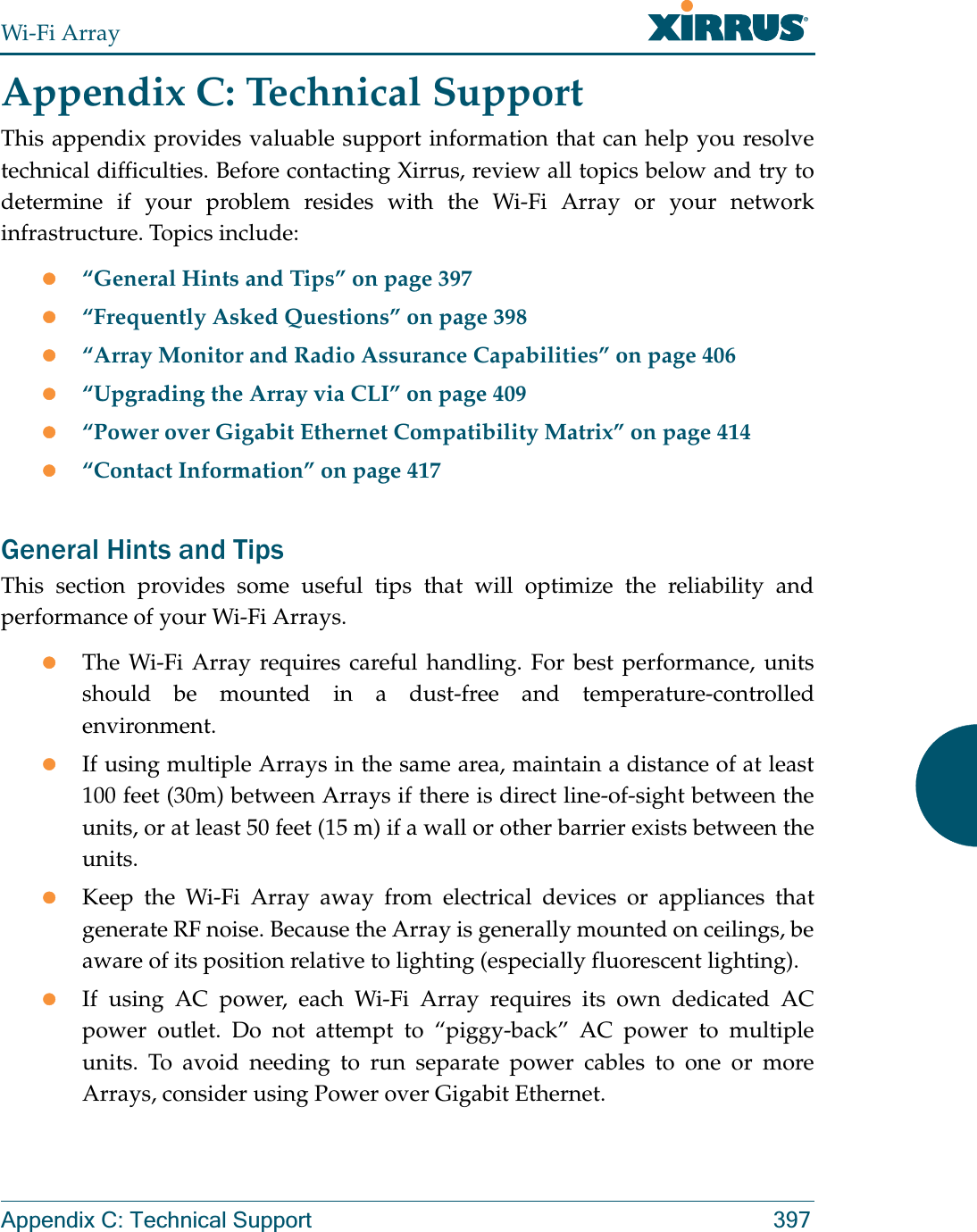
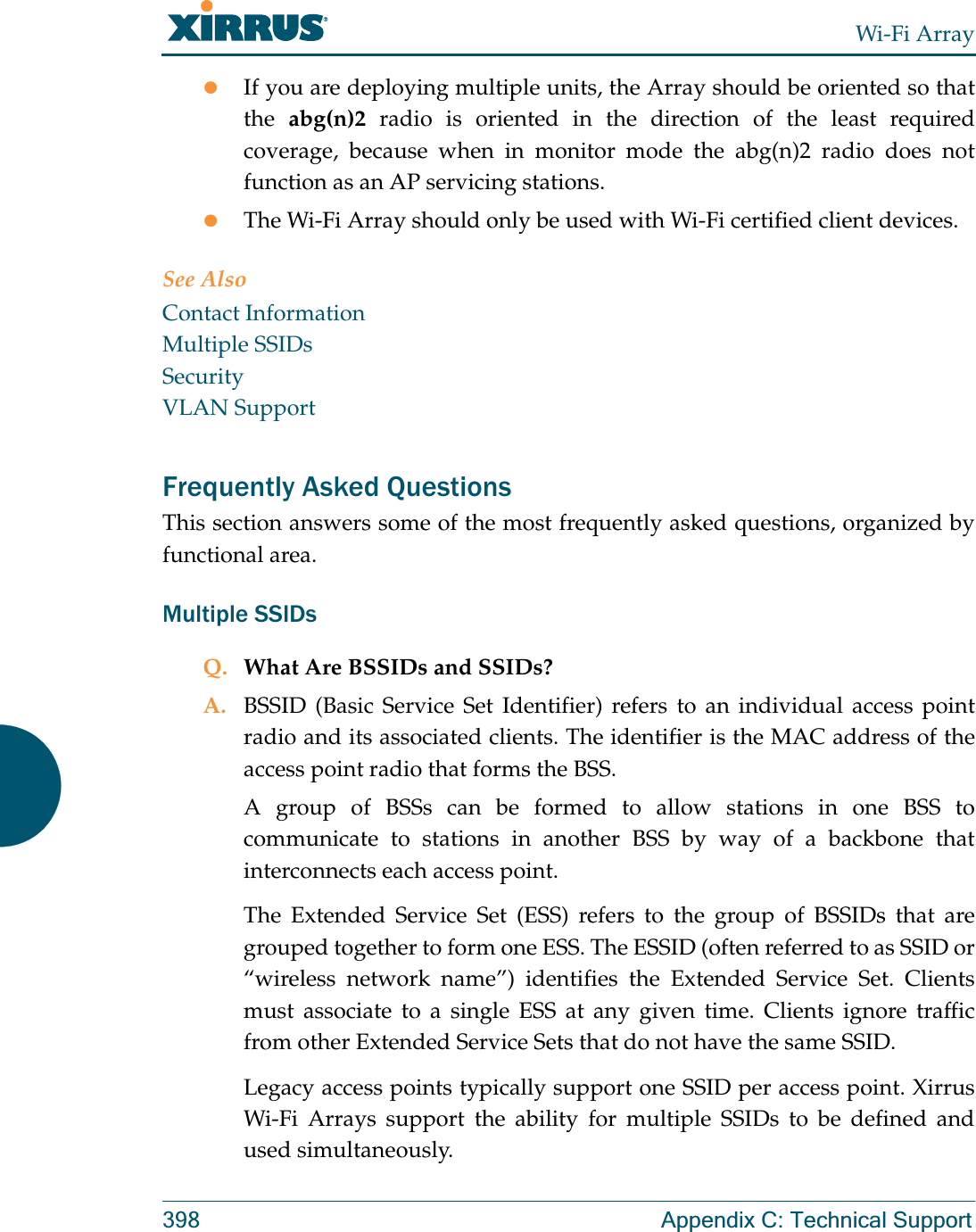
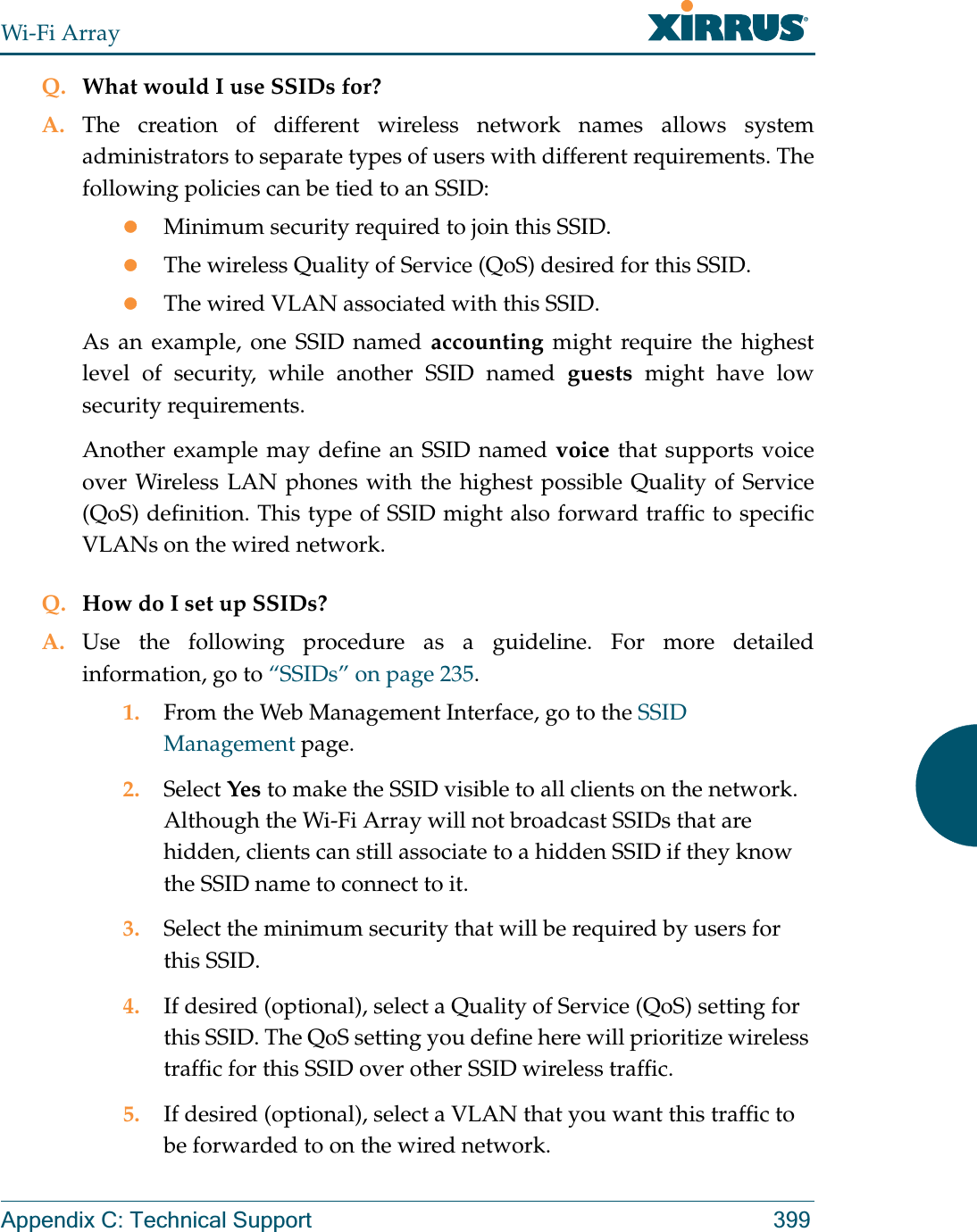
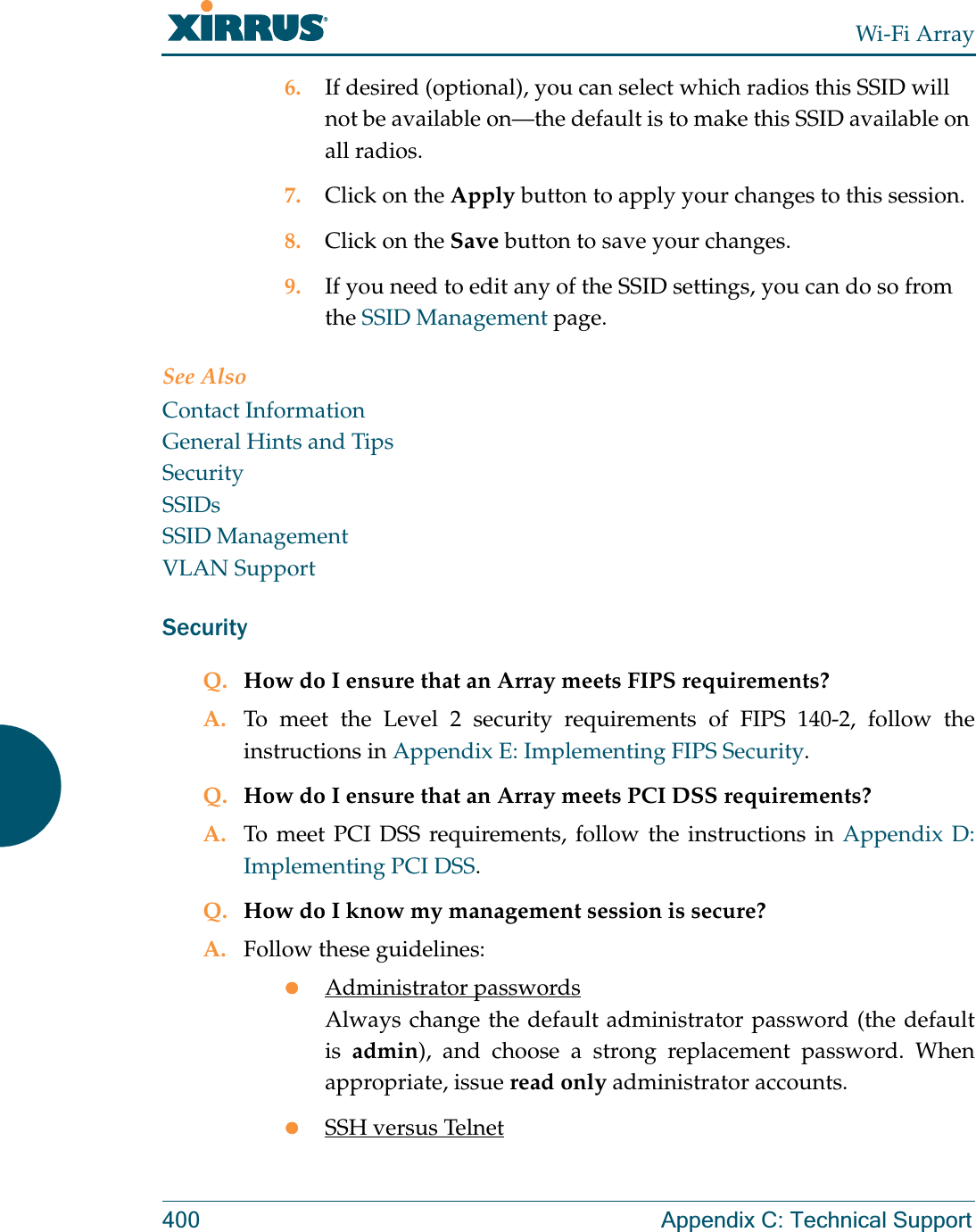
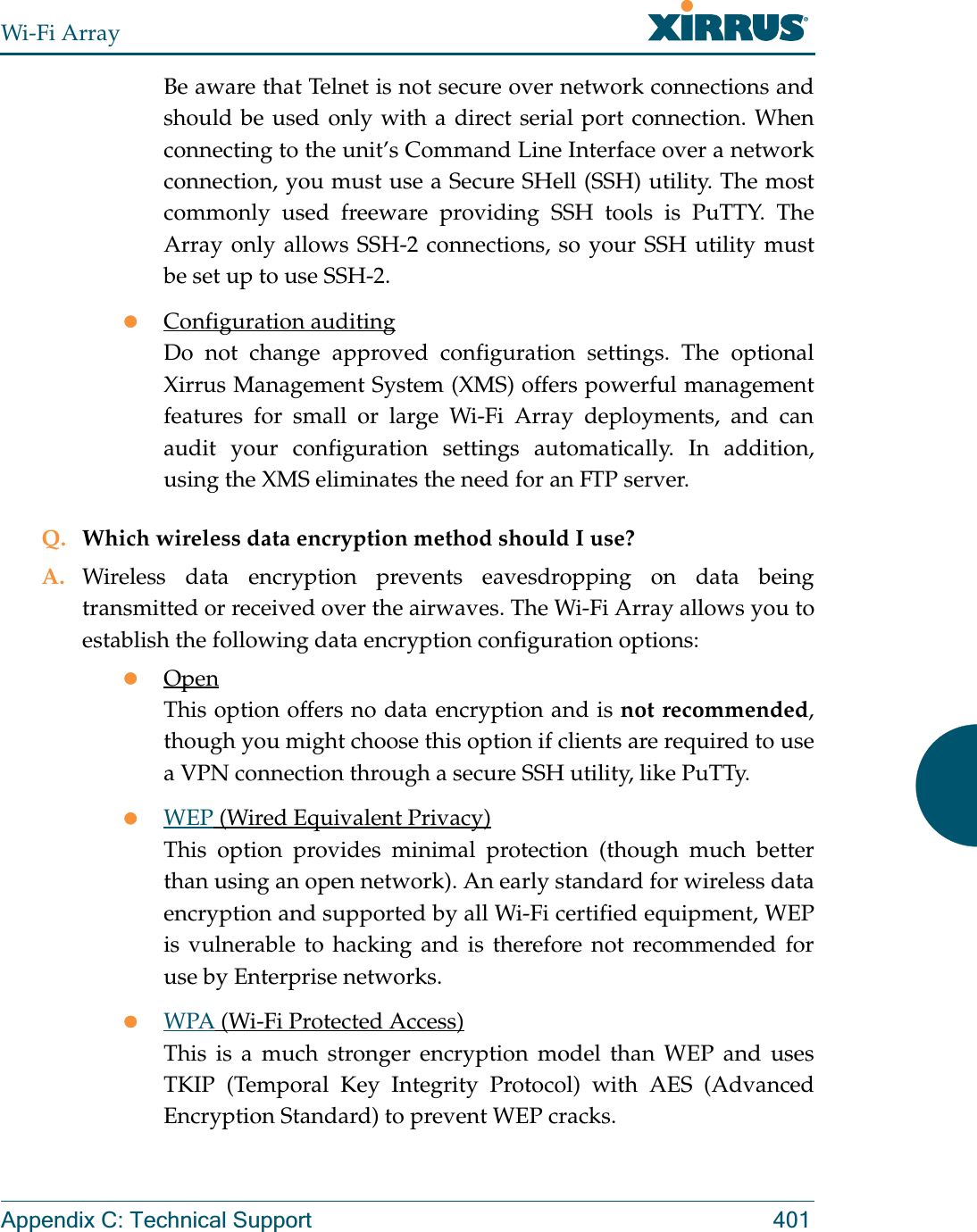
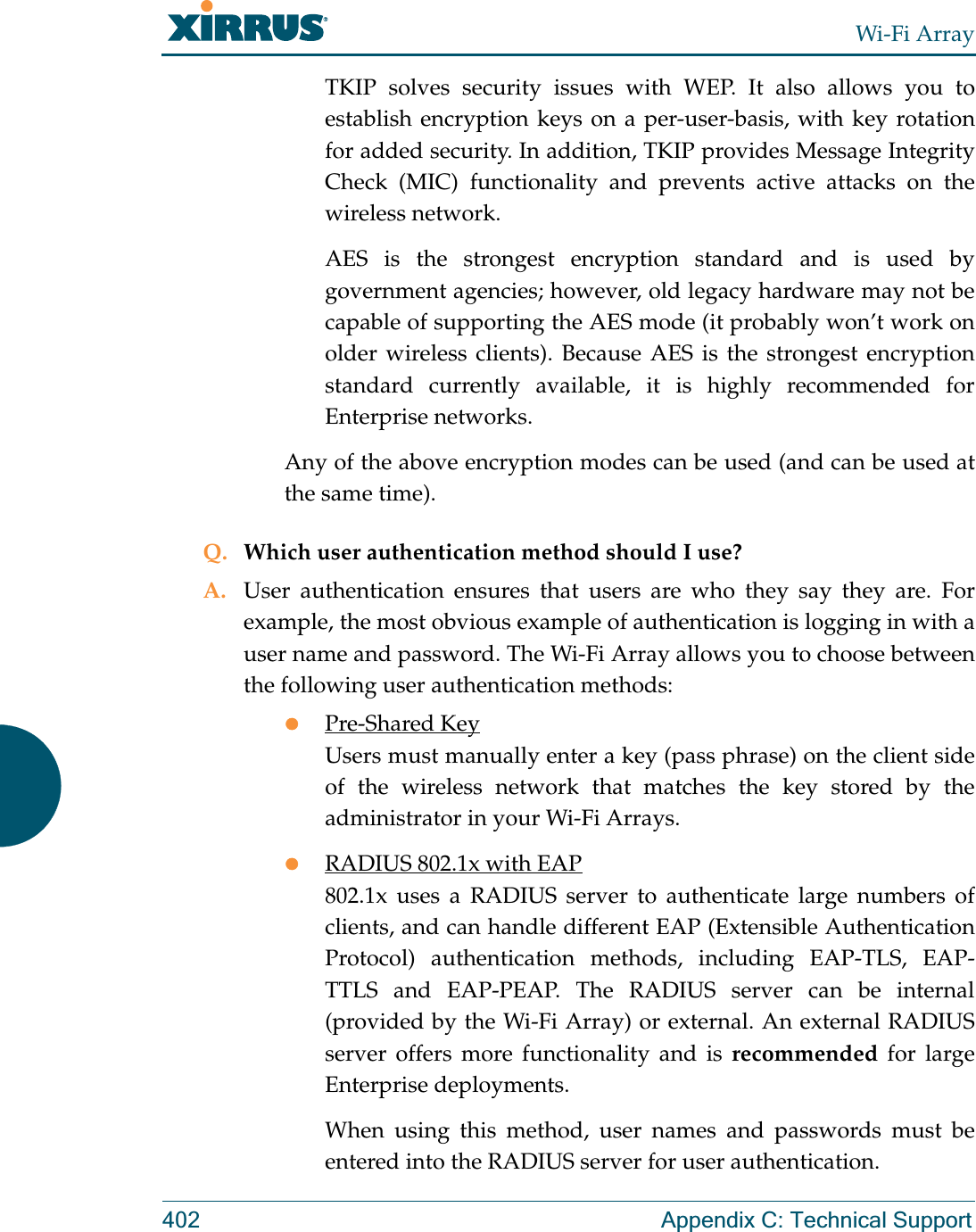
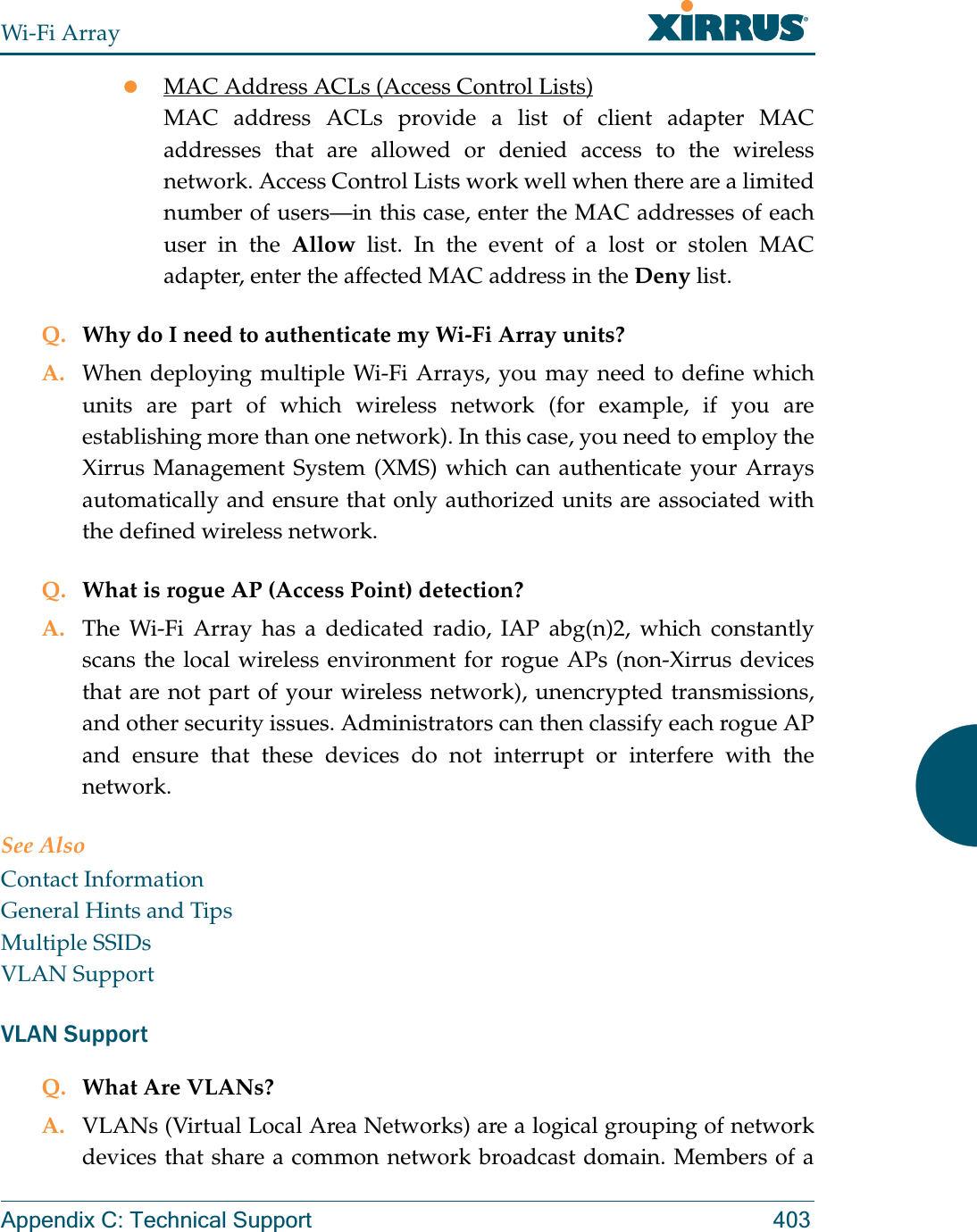
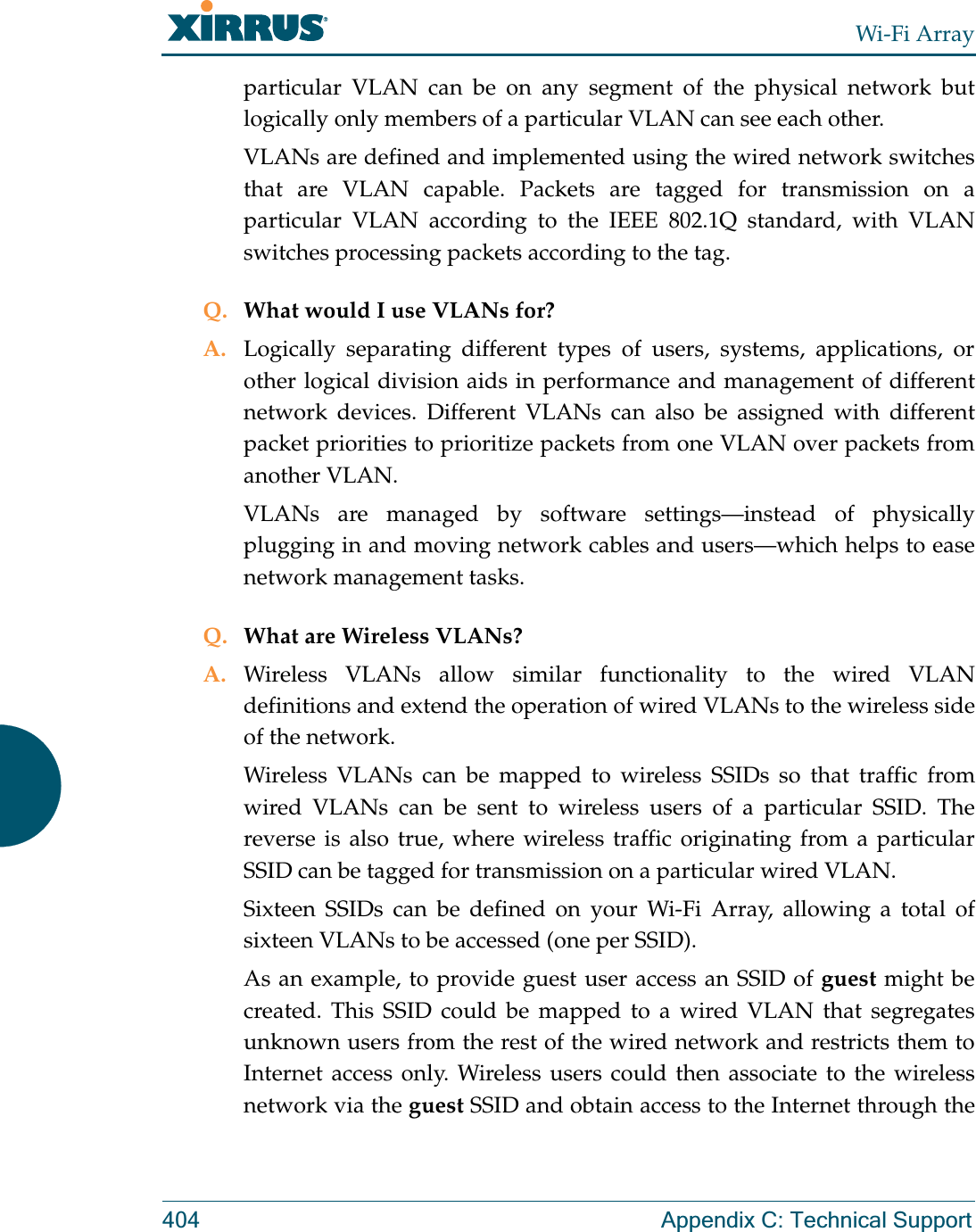
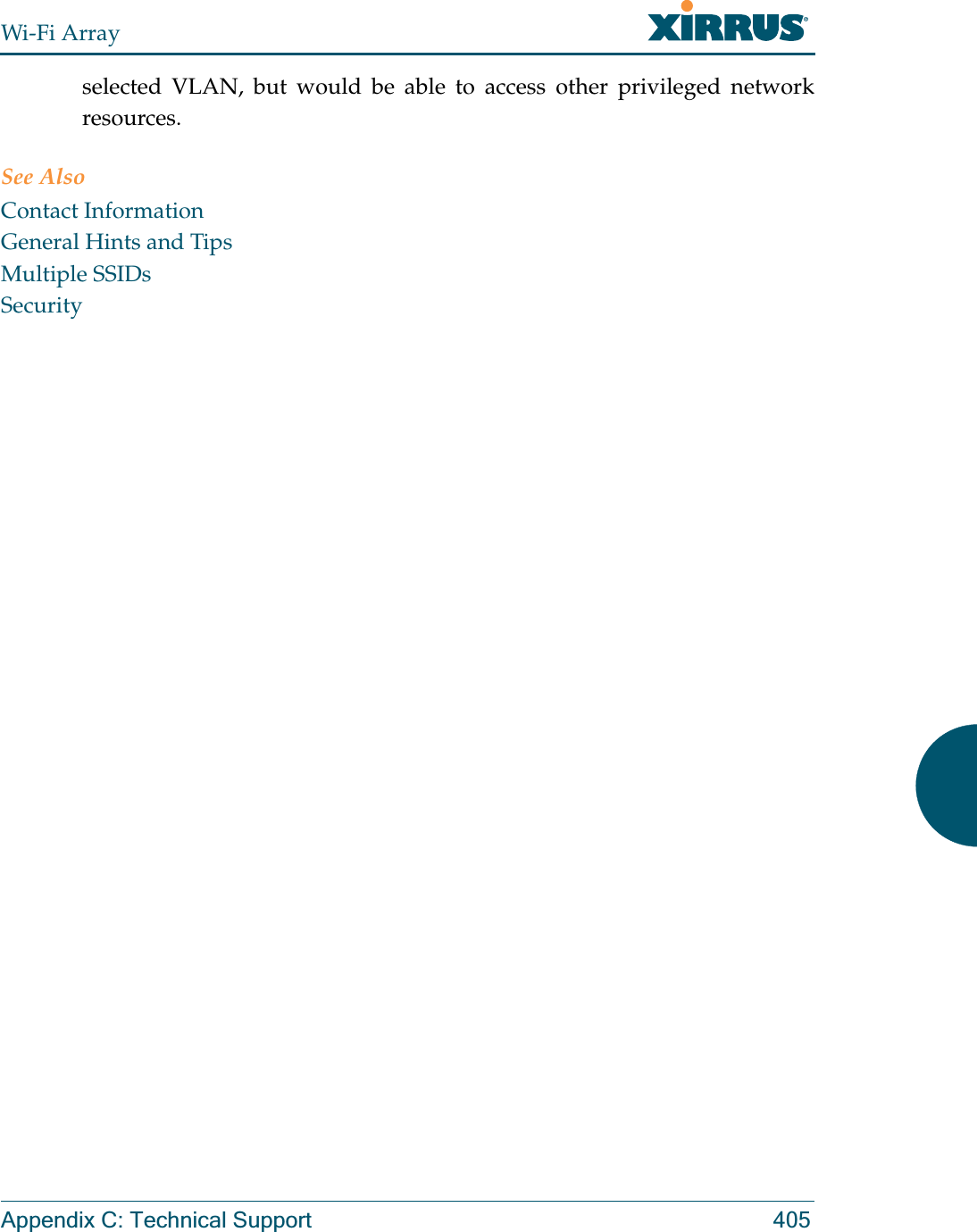
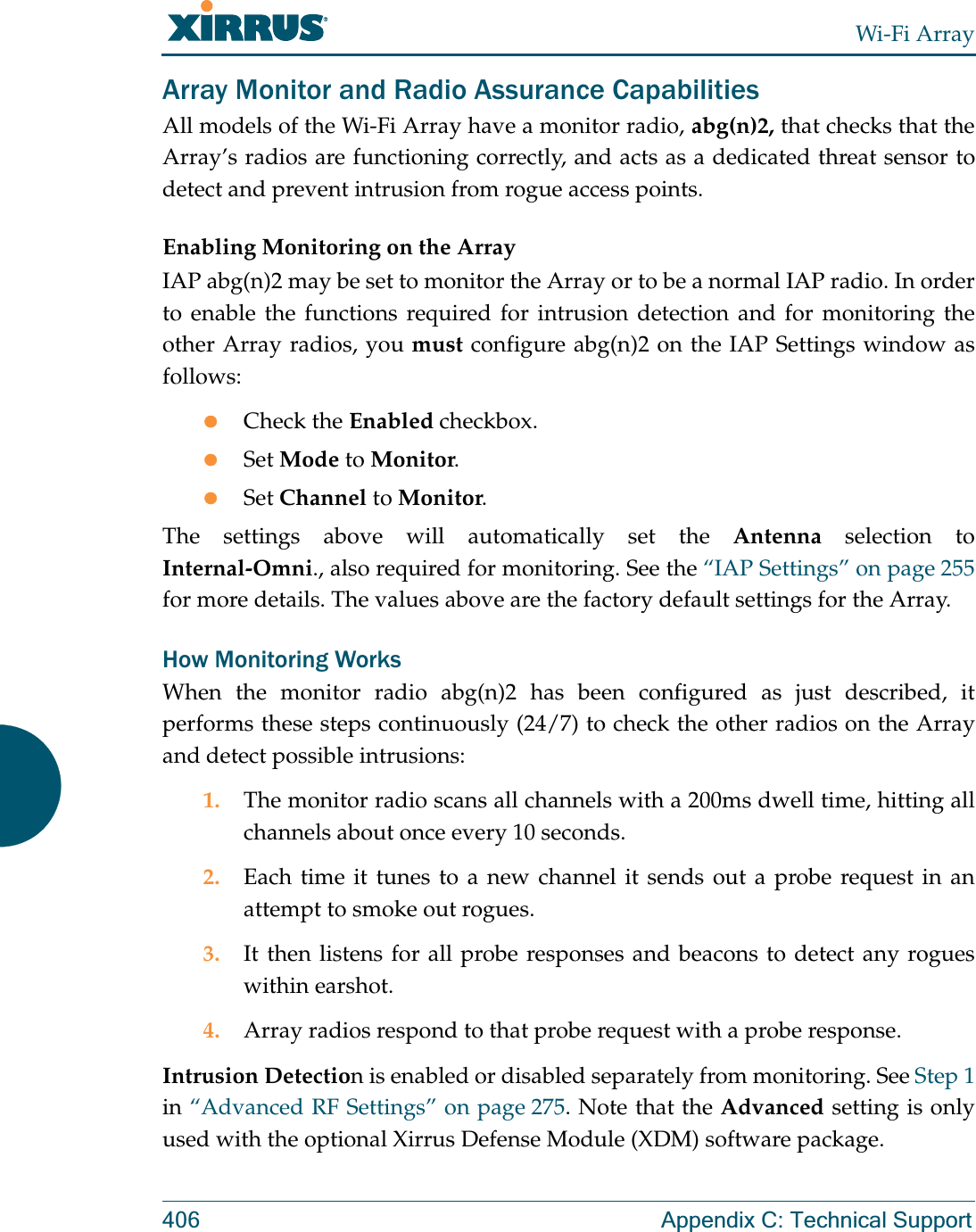
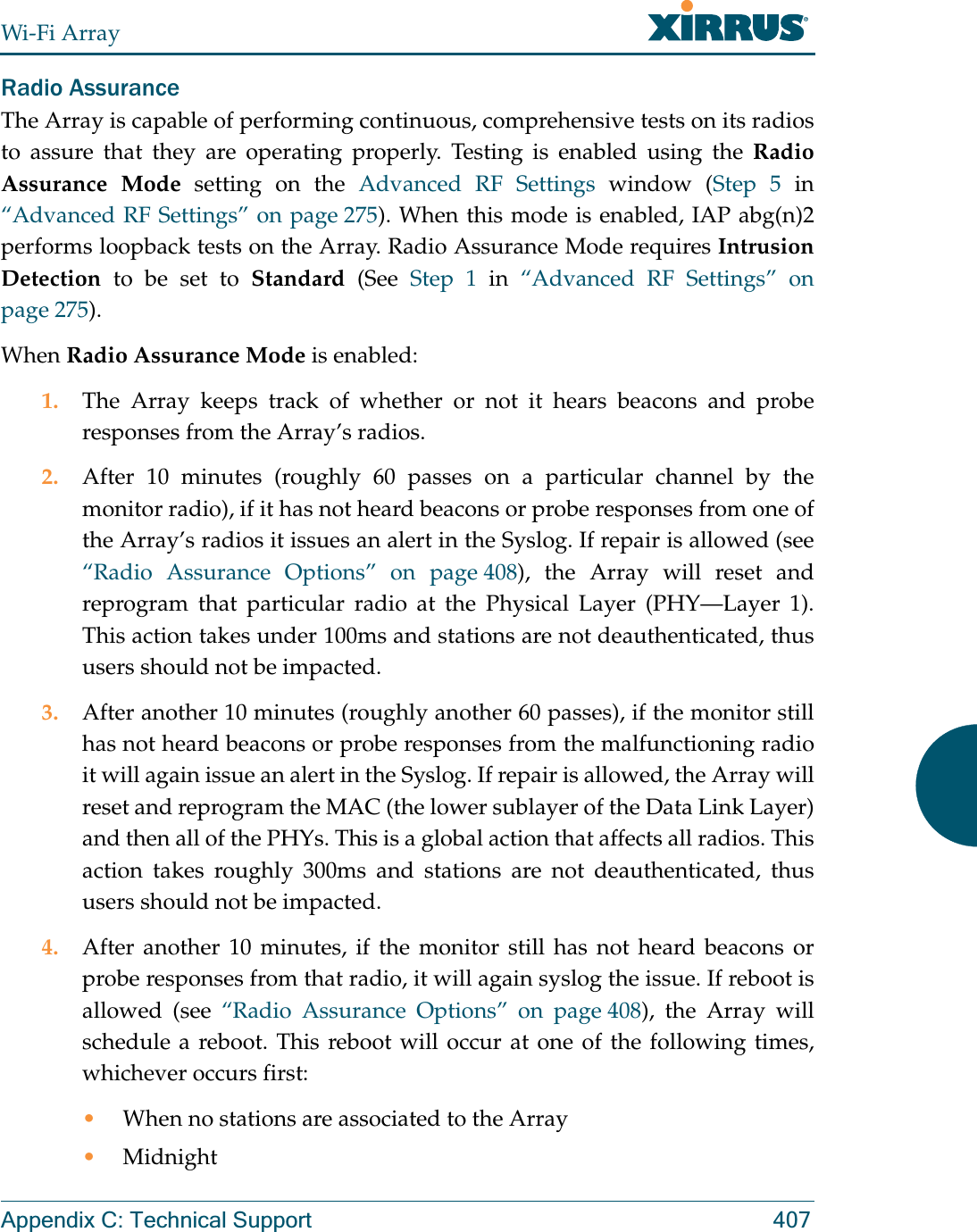
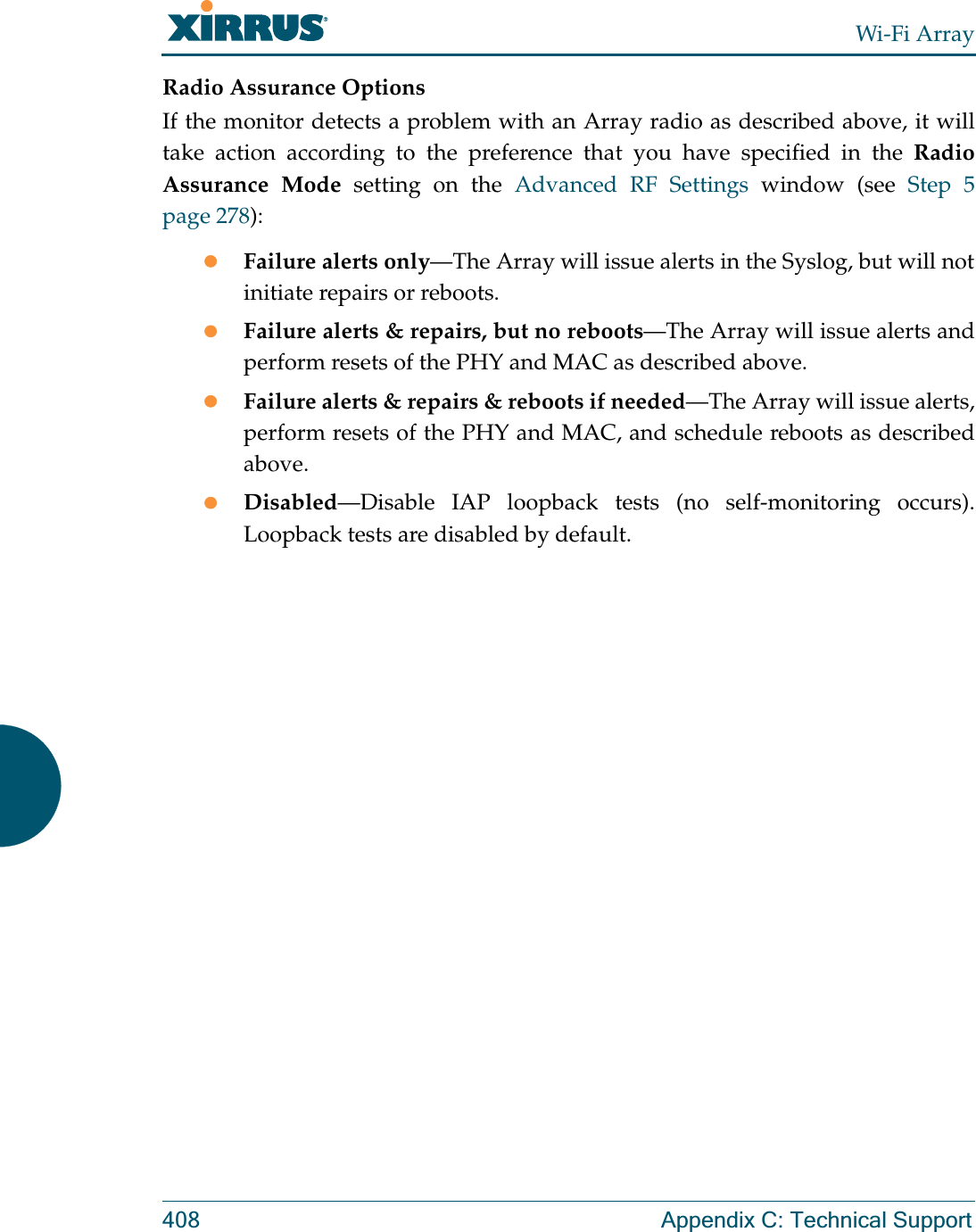
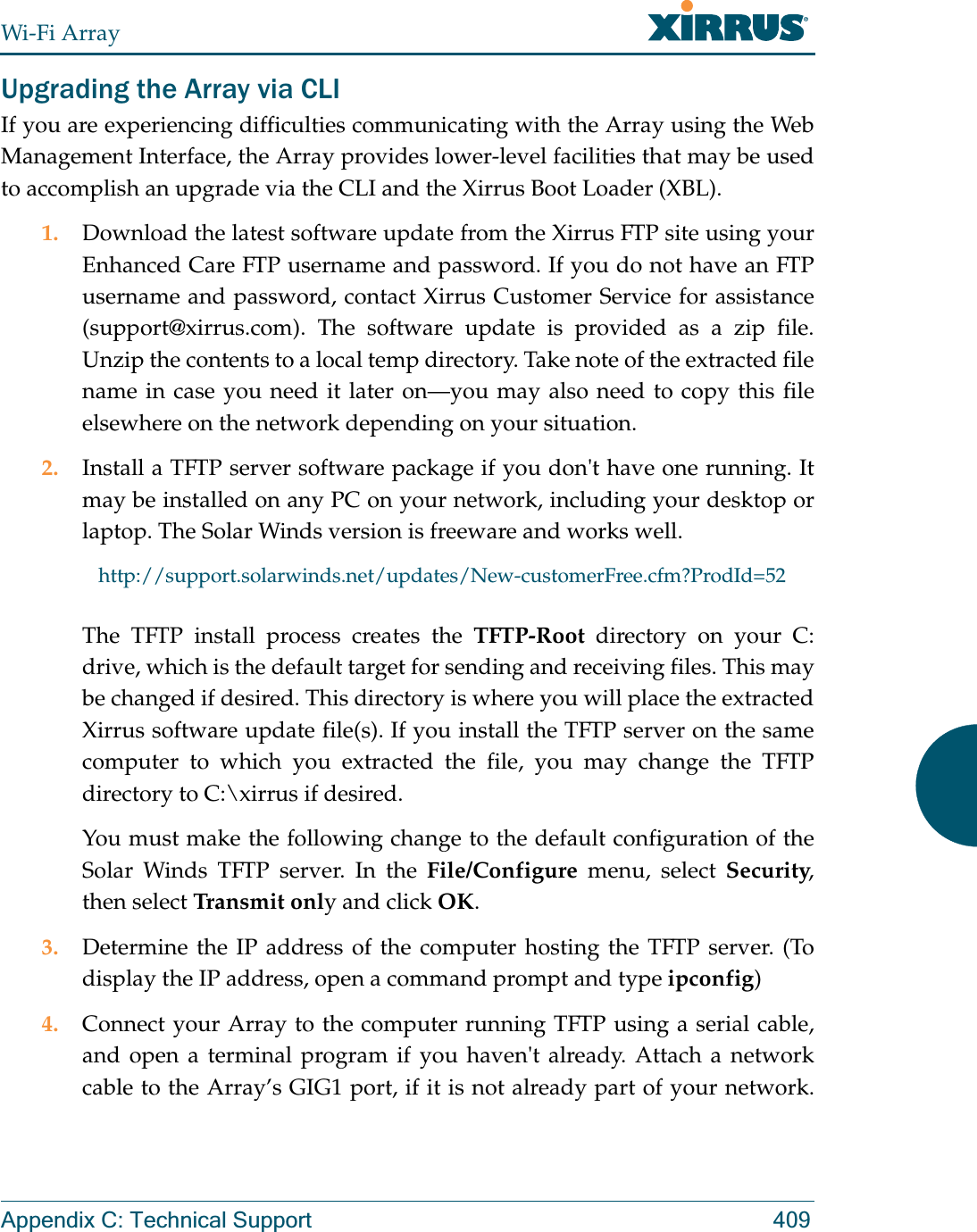
![Wi-Fi Array410 Appendix C: Technical SupportBoot your Array and watch the progress messages. When Press space bar to exit to bootloader: is displayed, press the space bar. The rest of this procedure is performed using the bootloader. The following steps assume that you are running DHCP on your local network. 5. Type dhcp and hit return. This instructs the Array to obtain a DHCP address and use it during this boot in the bootloader environment. 6. Type dir and hit return to see what's currently in the compact flash. 7. Type del and hit return to delete the contents of the compact flash. 8. Type update server <TFTP-server-ip-addr> xs-3.x-xxxx.bin (the actual Xirrus file name will vary depending on Array model number and software version—use the file name from your software update) and hit return. The software update will be transferred to the Array's memory and will be written to the it’s compact flash card. (See output below.)9. Type reset and hit return. Your Array will reboot, running your new version of software. Sample Output for the Upgrade Procedure:The user actions are highlighted in the output below, for clarity.Username: adminPassword: *****Xirrus-WiFi-Array# configureXirrus-WiFi-Array(config)# rebootAre you sure you want to reboot? [yes/no]: yesArray is being rebooted.Xirrus Boot Loader 1.0.0 (Oct 17 2006 - 13:11:42), Build: 2725Processor | Motorola PowerPC, PVR=80200020 SVR=80300020Board | Xirrus MPC8540 CPU BoardClocks | CPU : 825 MHz DDR : 330 MHz Local Bus: 41 MHz](https://usermanual.wiki/Cambium-Networks/XN4.ArrayGuide-Rel4-0-RevW-part-2-of-2/User-Guide-1215330-Page-181.png)
![Wi-Fi ArrayAppendix C: Technical Support 411L1 cache | Data: 32 KB Inst: 32 KB Status : EnabledWatchdog | Enabled (5 secs)I2C Bus | 400 KHzDTT | CPU:34C RF0:34C RF1:34C RF2:27C RF3:29CRTC | Wed 2007-Nov-05 6:43:14 GMTSystem DDR | 256 MB, Unbuffered Non-ECC (2T)L2 cache | 256 KB, EnabledFLASH | 4 MB, CRC: OKFPGA | 2 Devices programmedPacket DDR | 256 MB, Unbuffered Non-ECC, EnabledNetwork | Mot FEC Mot TSEC1 [Primary] Mot TSEC2IDE Bus 0 | OKCFCard | 122 MB, Model: Hitachi XXM2.3.0Environment| 4 KB, InitializedIn: serialOut: serialErr: serialPress space bar to exit to bootloader: XBL>dhcp[DHCP ] Device : Mot TSEC1 1000BT Full Duplex[DHCP ] IP Addr : 192.168.39.195XBL>dir[CFCard] Directory of / Date Time Size File or Directory name----------- -------- -------- ---------------------------2007-Nov-05 6:01:56 29 lastboot2007-Apr-05 15:47:46 28210390 xs-3.1-0433.bak2007-Mar-01 16:39:42 storage/2007-Apr-05 15:56:38 28210430 xs-3.1-0440.bin2007-Mar-03 0:56:28 wpr/3 file(s), 2 dir(s)](https://usermanual.wiki/Cambium-Networks/XN4.ArrayGuide-Rel4-0-RevW-part-2-of-2/User-Guide-1215330-Page-182.png)
![Wi-Fi Array412 Appendix C: Technical SupportXBL>del * [CFCard] Delete : 2 file(s) deletedXBL>update server 192.168.39.102 xs-3.0-0425.bin[TFTP ] Device : Mot TSEC1 1000BT Full Duplex[TFTP ] Client : 192.168.39.195[TFTP ] Server : 192.168.39.102[TFTP ] File : xs-3.0-0425.bin[TFTP ] Address : 0x1000000[TFTP ] Loading : ##################################################[TFTP ] Loading : ##################################################[TFTP ] Loading : ###### done[TFTP ] Complete: 12.9 sec, 2.1 MB/sec[TFTP ] Bytes : 27752465 (1a77811 hex)[CFCard] File : xs-3.0-0425.bin[CFCard] Address : 0x1000000[CFCard] Saving : ############################################### done[CFCard] Complete: 137.4 sec, 197.2 KB/sec[CFCard] Bytes : 27752465 (1a77811 hex)XBL>reset[RESET ]Xirrus Boot Loader 1.0.0 (Oct 17 2006 - 13:11:42), Build: 2725Processor | Motorola PowerPC, PVR=80200020 SVR=80300020Board | Xirrus MPC8540 CPU BoardClocks | CPU : 825 MHz DDR : 330 MHz Local Bus: 41 MHzL1 cache | Data: 32 KB Inst: 32 KB Status : EnabledWatchdog | Enabled (5 secs)I2C Bus | 400 KHzDTT | CPU:33C RF0:32C RF1:31C RF2:26C RF3:27CRTC | Wed 2007-Nov-05 6:48:44 GMTSystem DDR | 256 MB, Unbuffered Non-ECC (2T)](https://usermanual.wiki/Cambium-Networks/XN4.ArrayGuide-Rel4-0-RevW-part-2-of-2/User-Guide-1215330-Page-183.png)
![Wi-Fi ArrayAppendix C: Technical Support 413L2 cache | 256 KB, EnabledFLASH | 4 MB, CRC: OKFPGA | 2 Devices programmedPacket DDR | 256 MB, Unbuffered Non-ECC, EnabledNetwork | Mot FEC Mot TSEC1 [Primary] Mot TSEC2IDE Bus 0 | OKCFCard | 122 MB, Model: Hitachi XXM2.3.0Environment| 4 KB, InitializedIn: serialOut: serialErr: serialPress space bar to exit to bootloader: [CFCard] File : xs*.bin[CFCard] Address : 0x1000000[CFCard] Loading : ############################################### done[CFCard] Complete: 26.9 sec, 1.0 MB/sec[CFCard] Bytes : 27752465 (1a77811 hex)[Boot ] Address : 0x01000000[Boot ] Image : Verifying checksum .... OK[Boot ] Unzip : Multi-File Image .... OK[Boot ] Initrd : Loading RAMDisk Image[Boot ] Initrd : Verifying checksum .... OK[Boot ] Execute : Transferring control to OSInitializing hardware ........................................ OKXirrus Wi-Fi ArrayArrayOS Version 3.0-425Copyright (c) 2005-2007 Xirrus, Inc.http://www.xirrus.comUsername:](https://usermanual.wiki/Cambium-Networks/XN4.ArrayGuide-Rel4-0-RevW-part-2-of-2/User-Guide-1215330-Page-184.png)

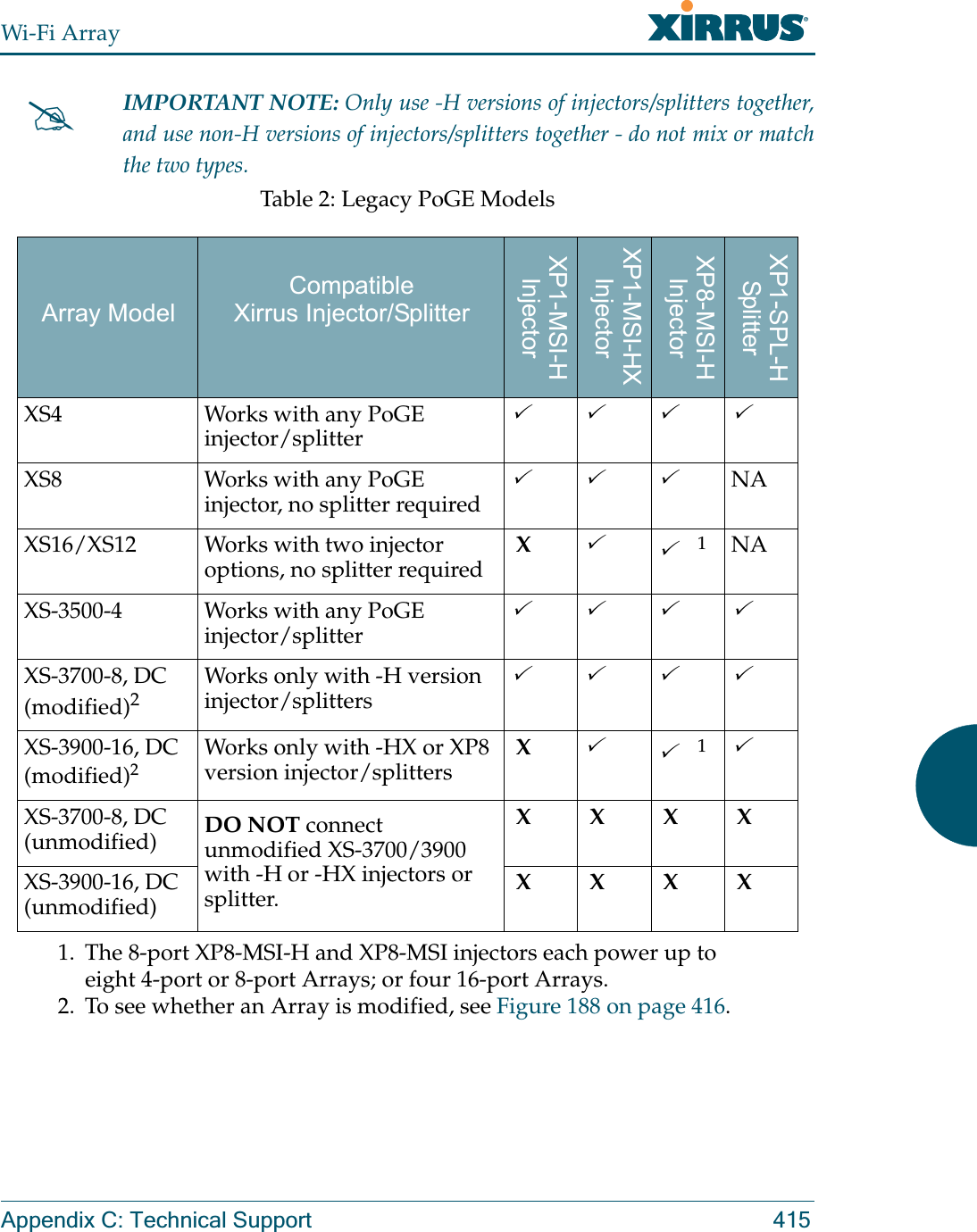
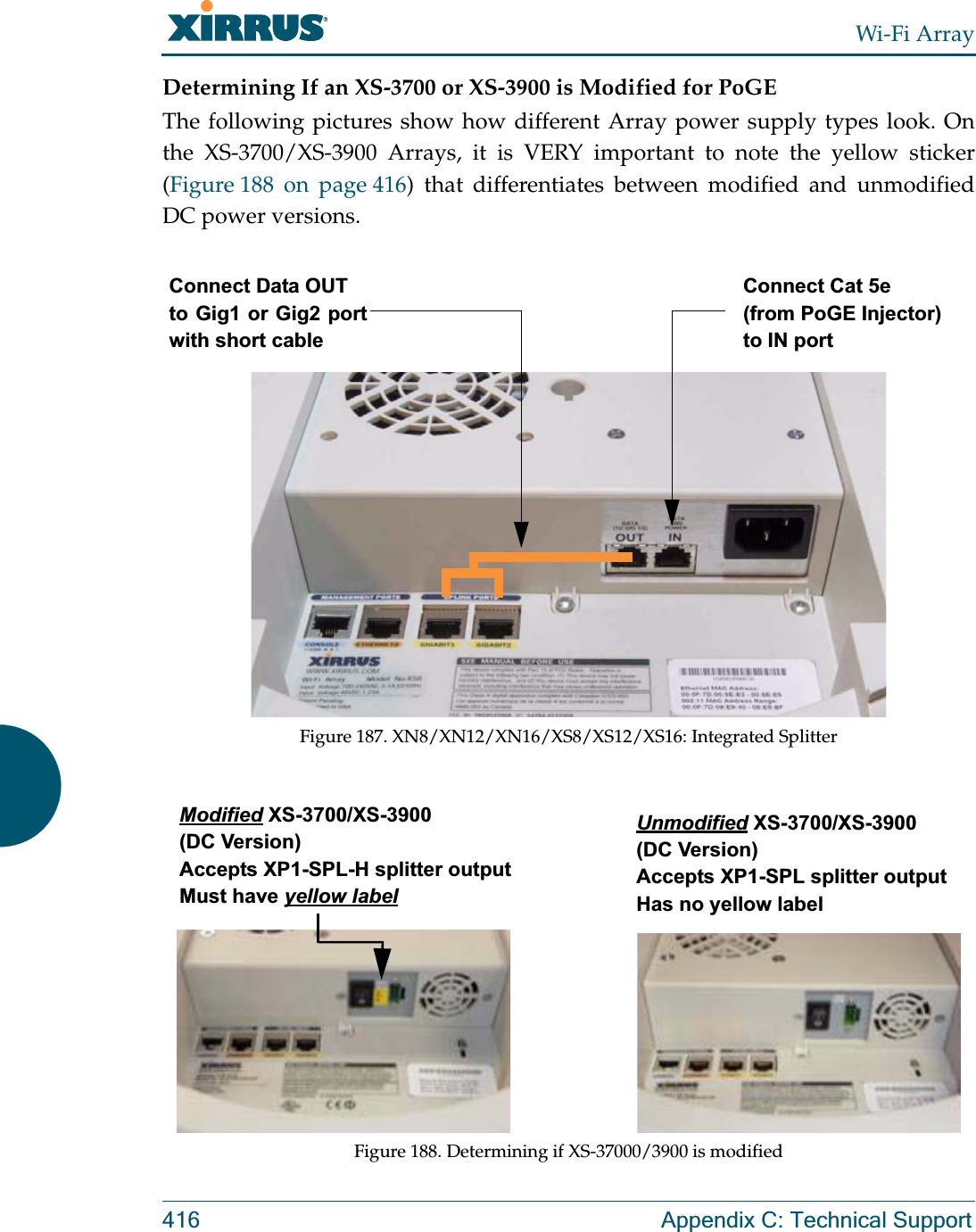
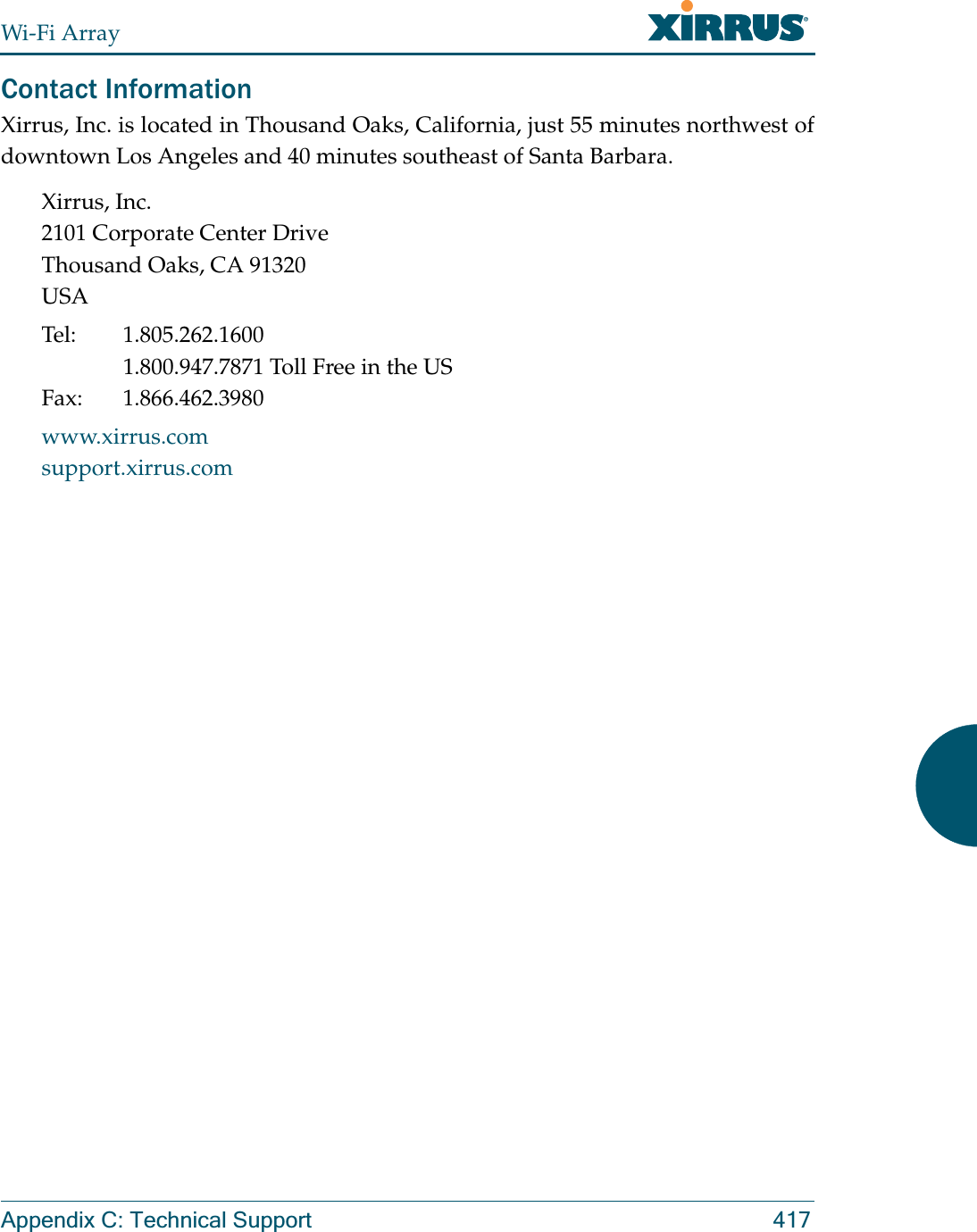

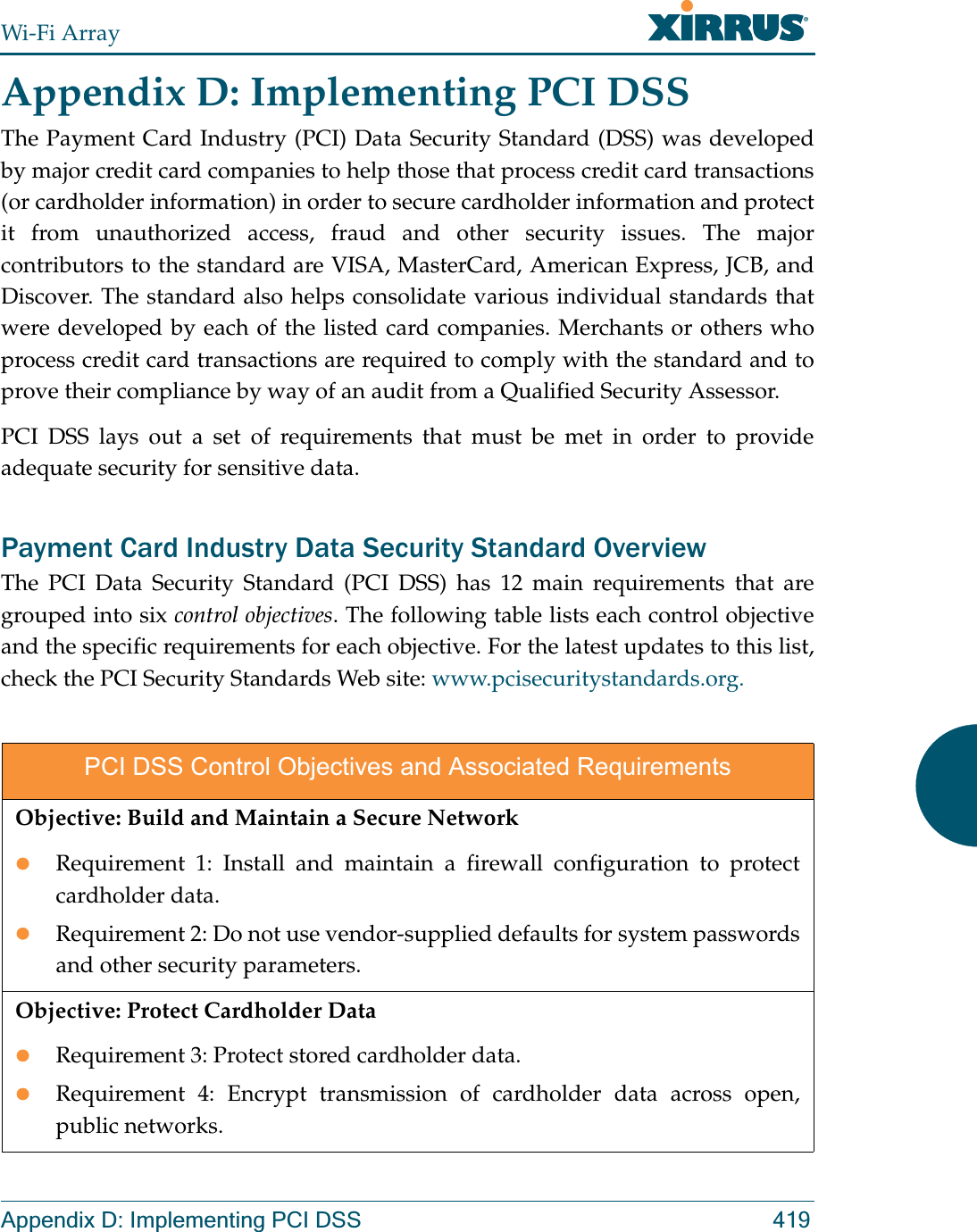
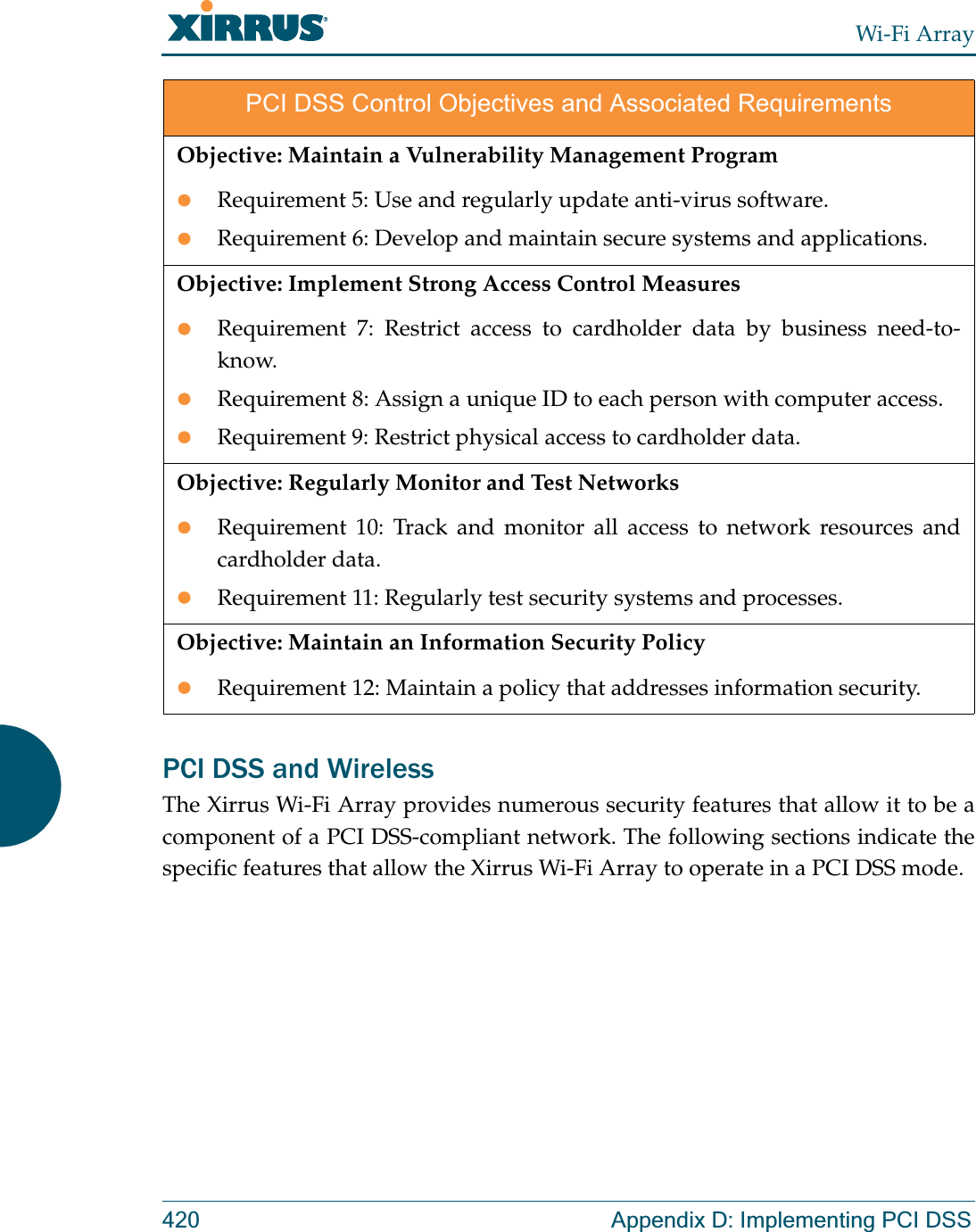
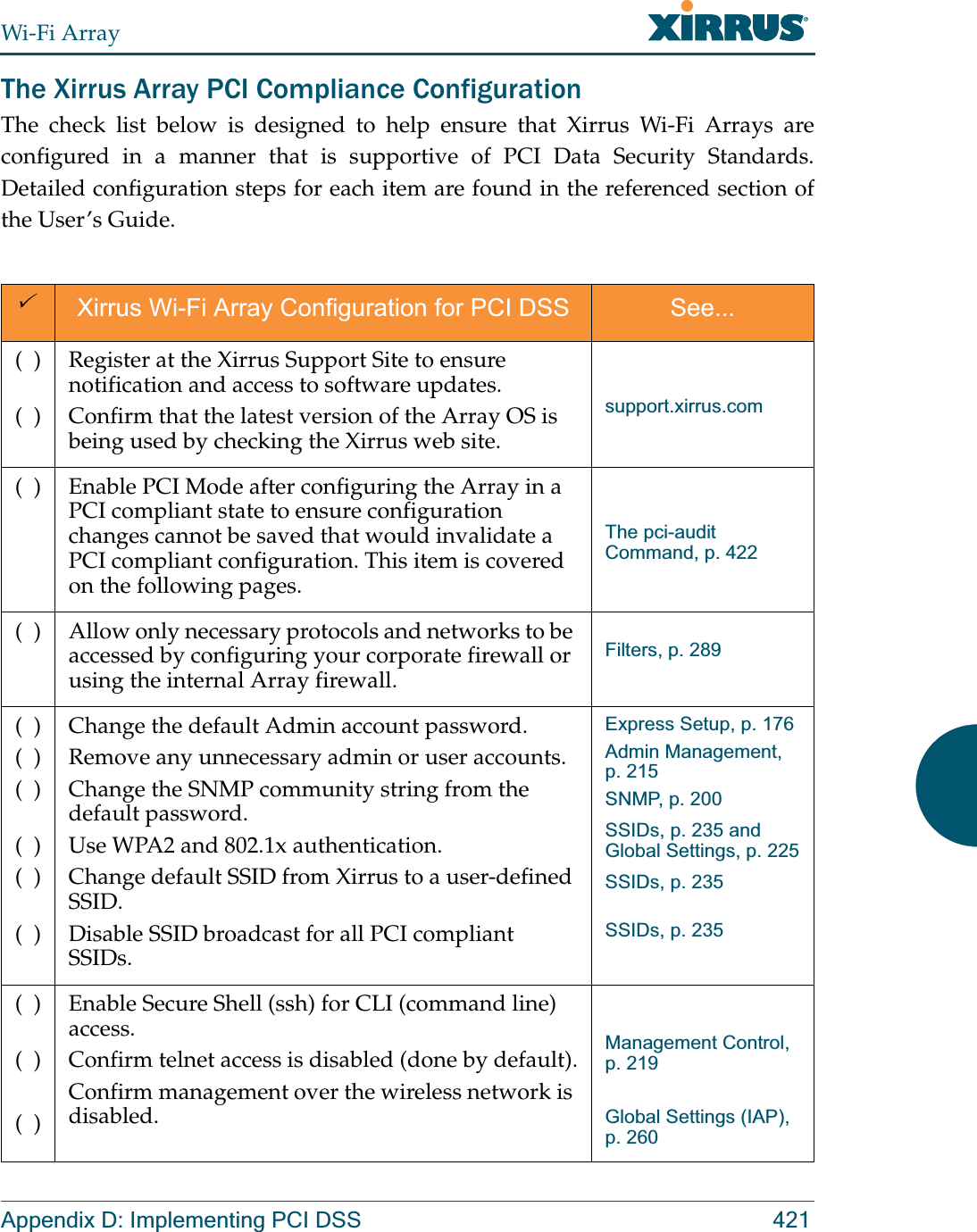
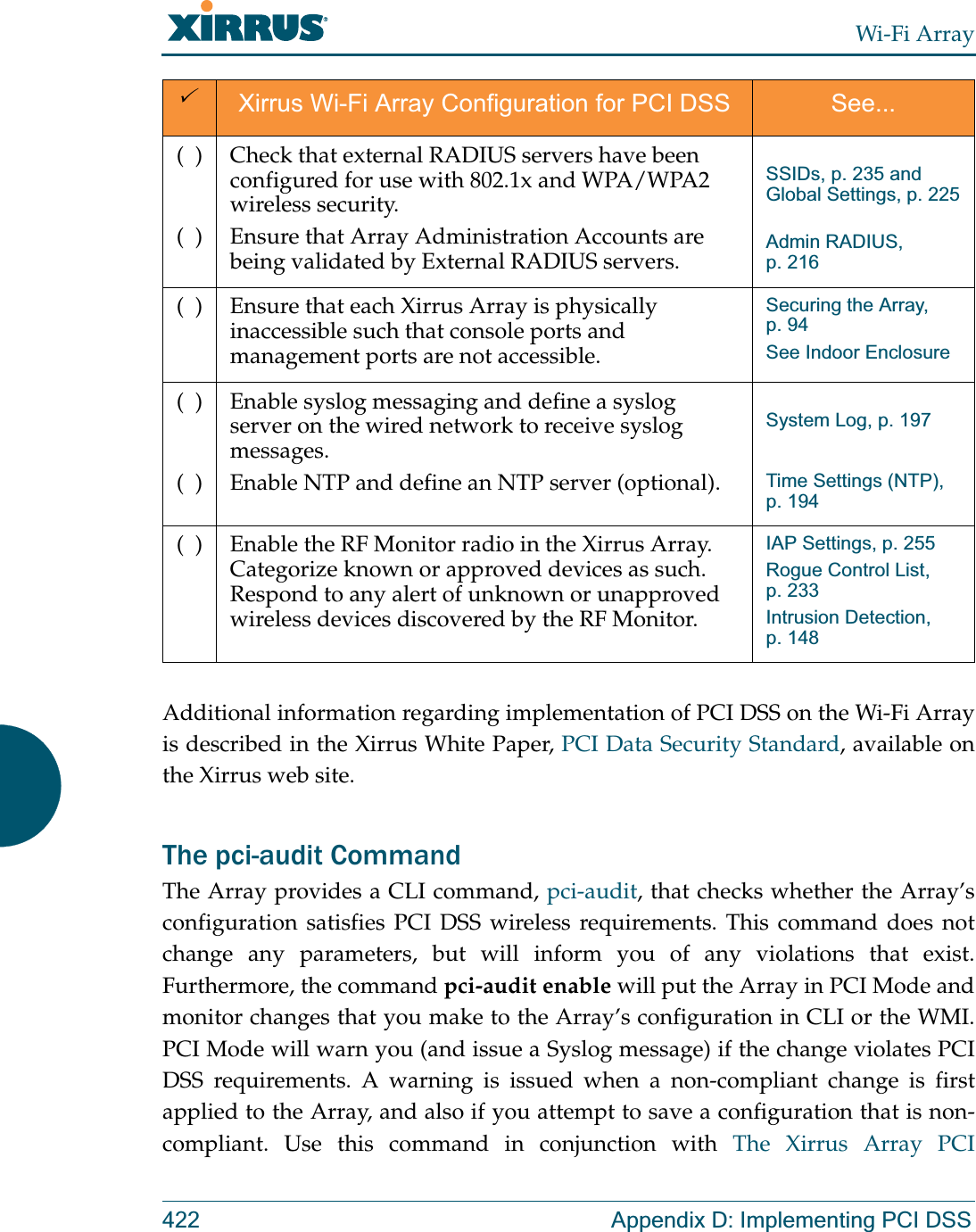
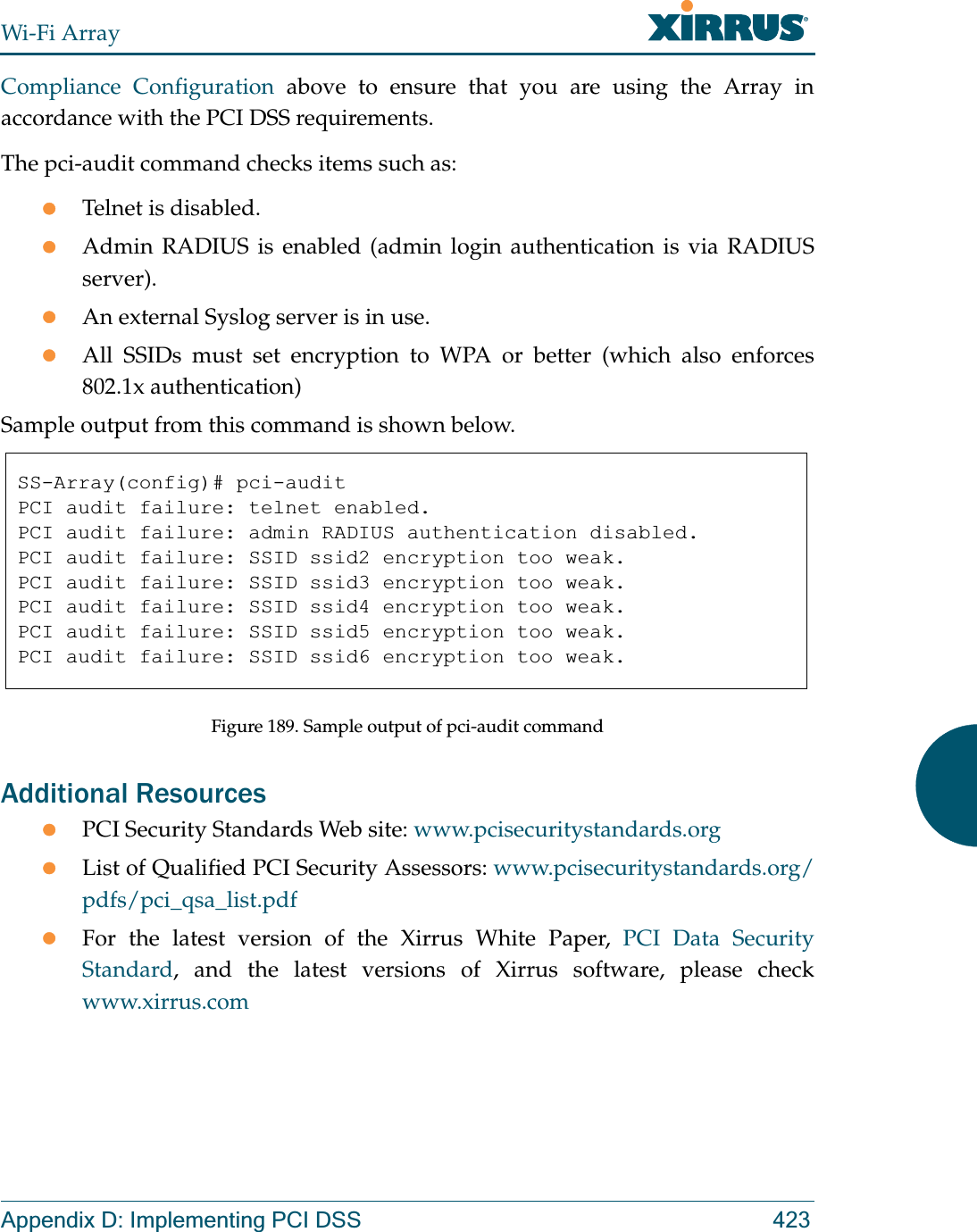
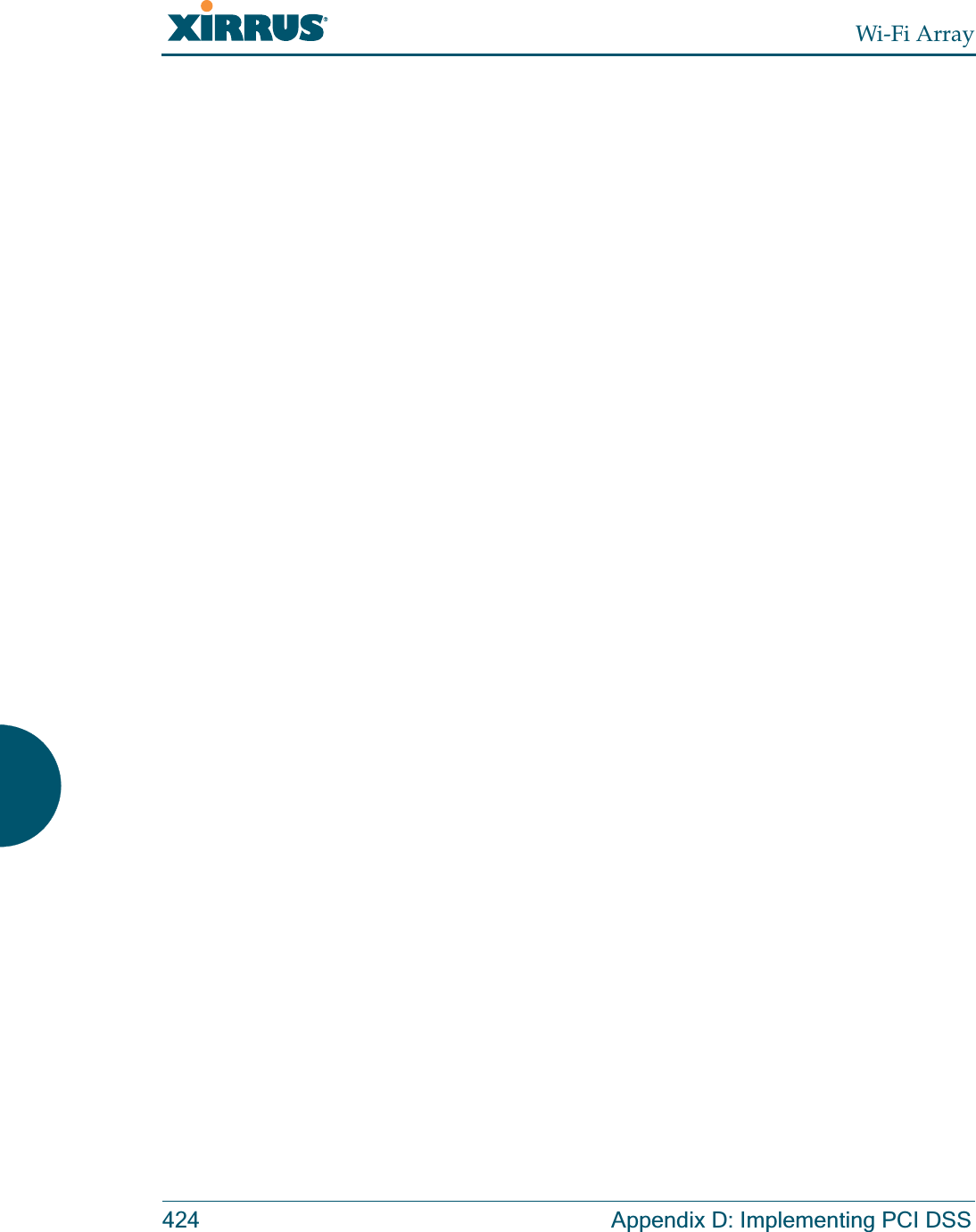
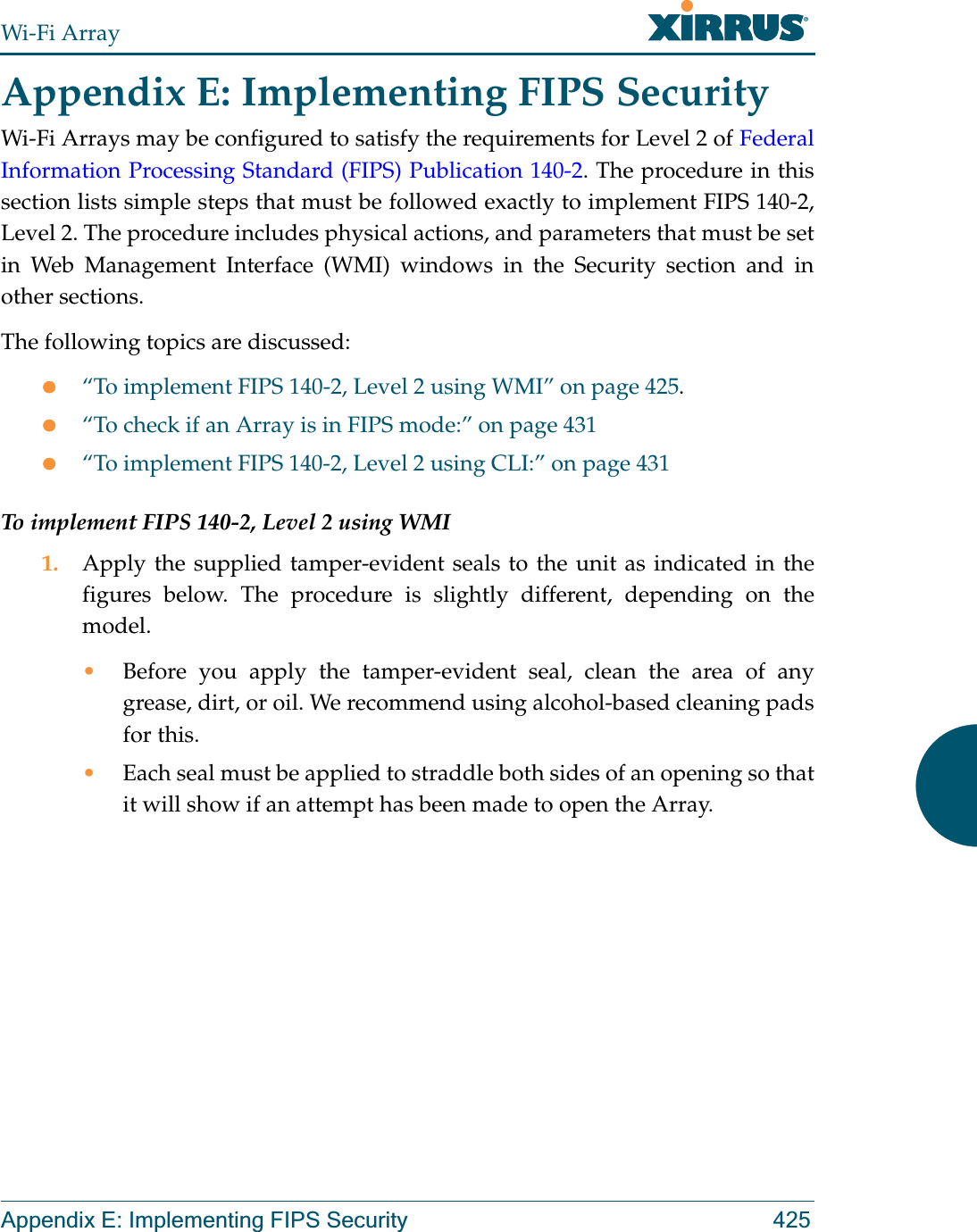
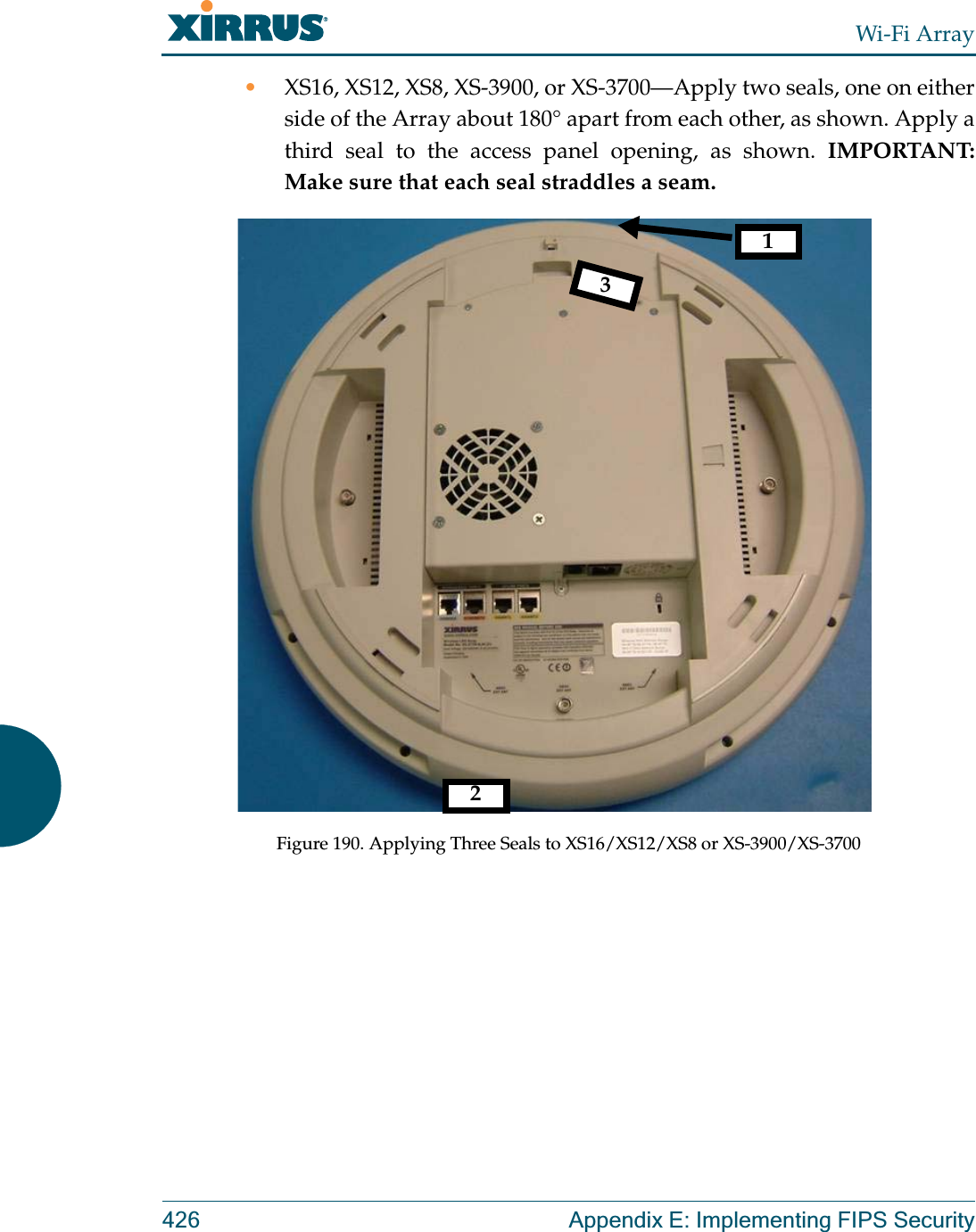
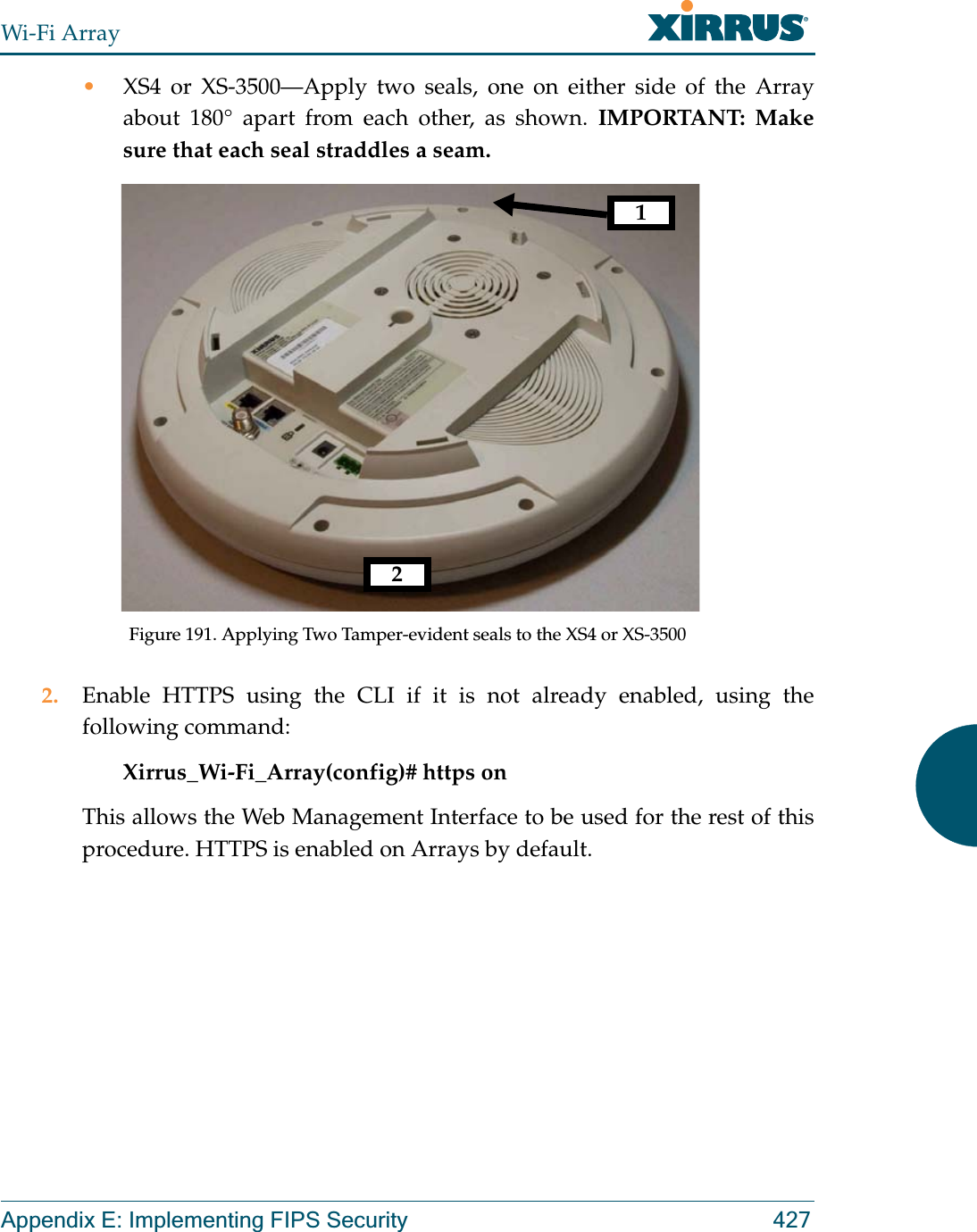
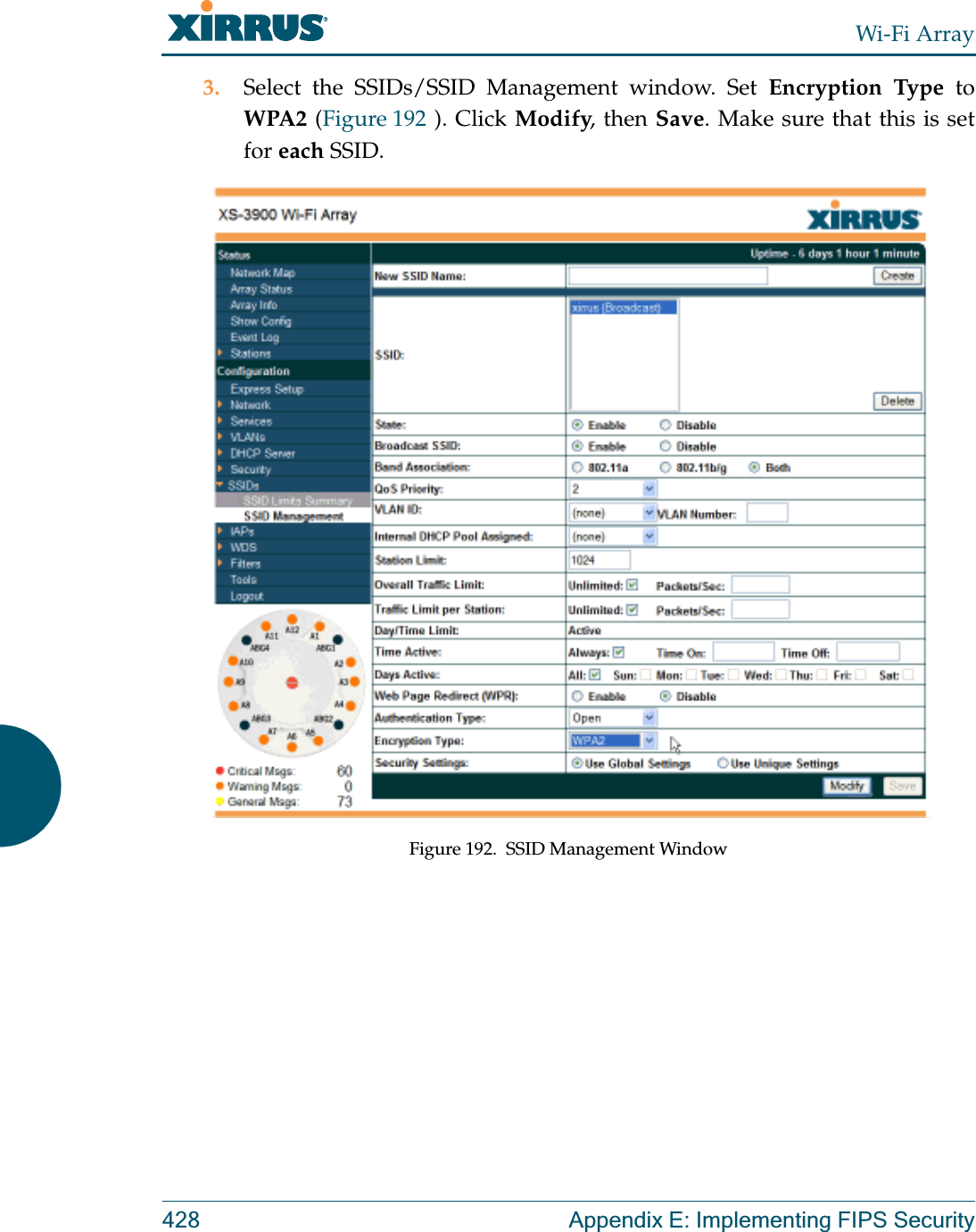
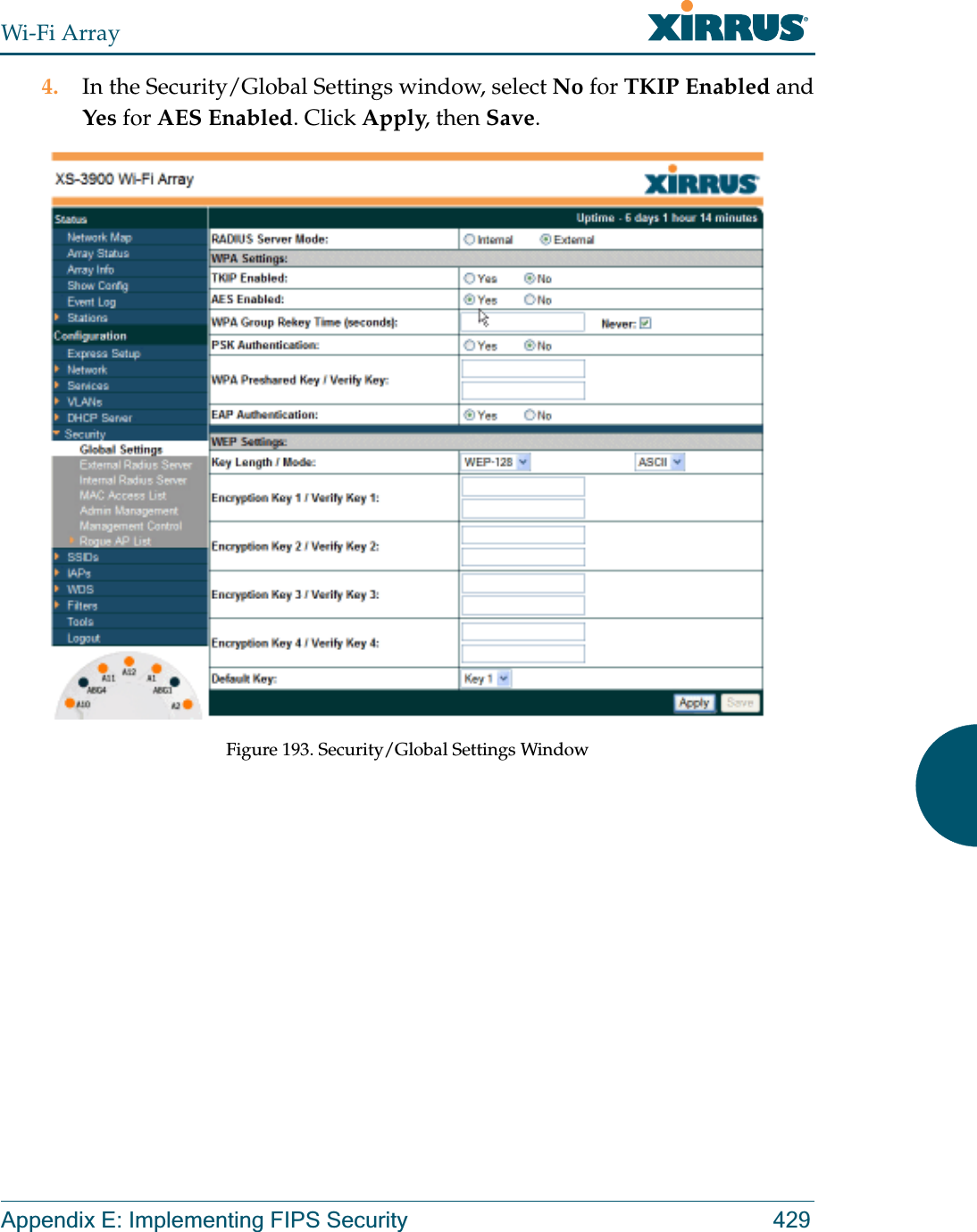
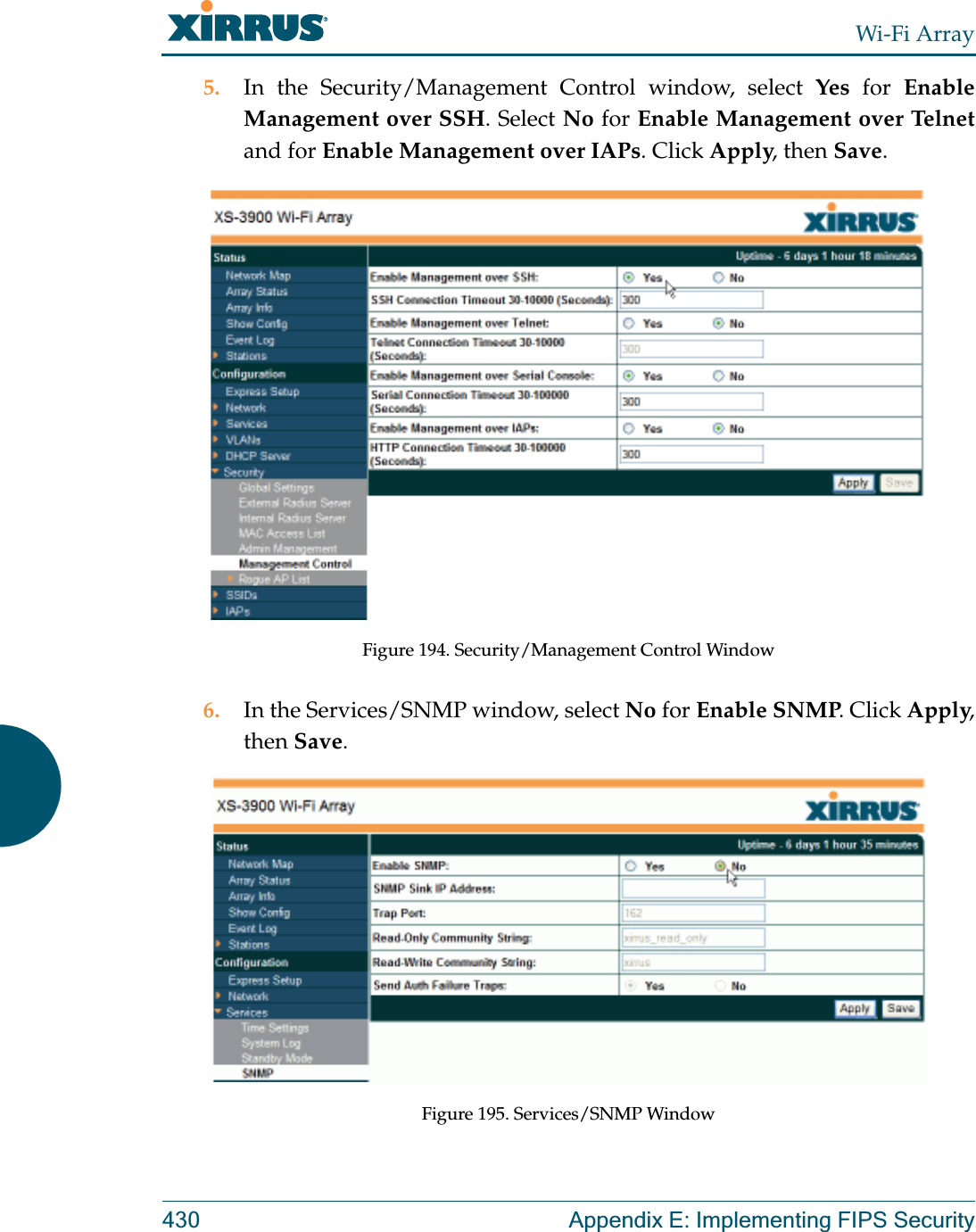
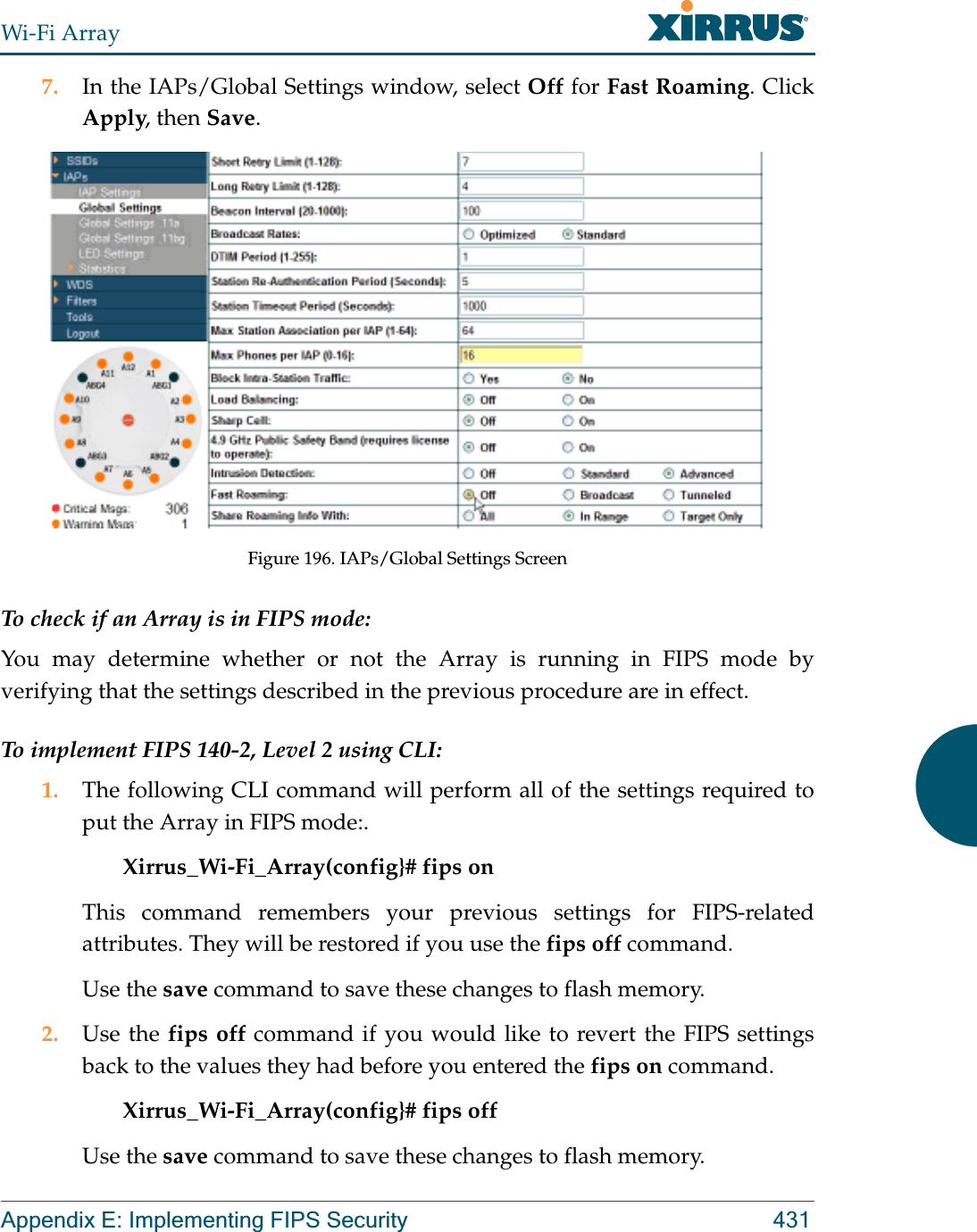
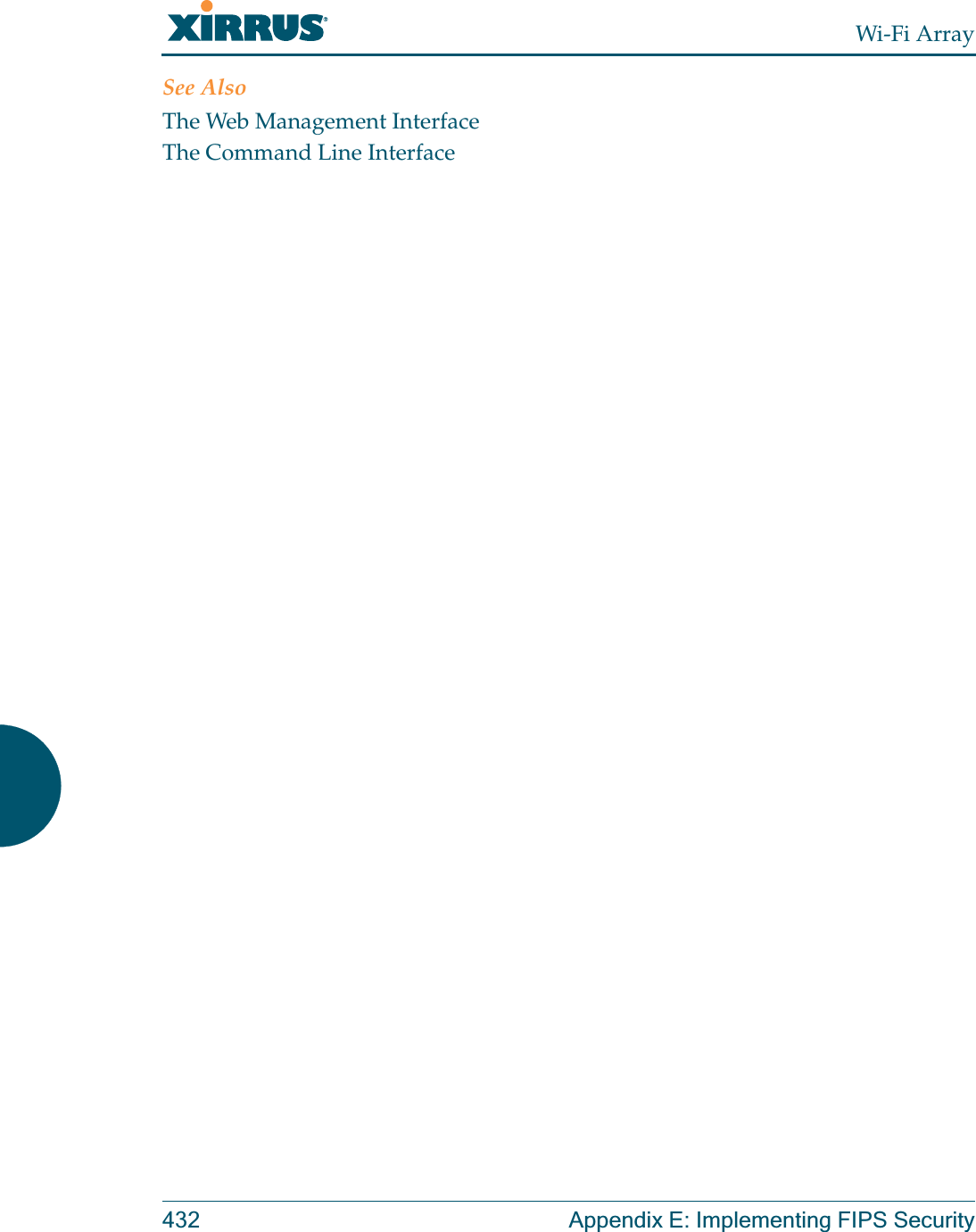
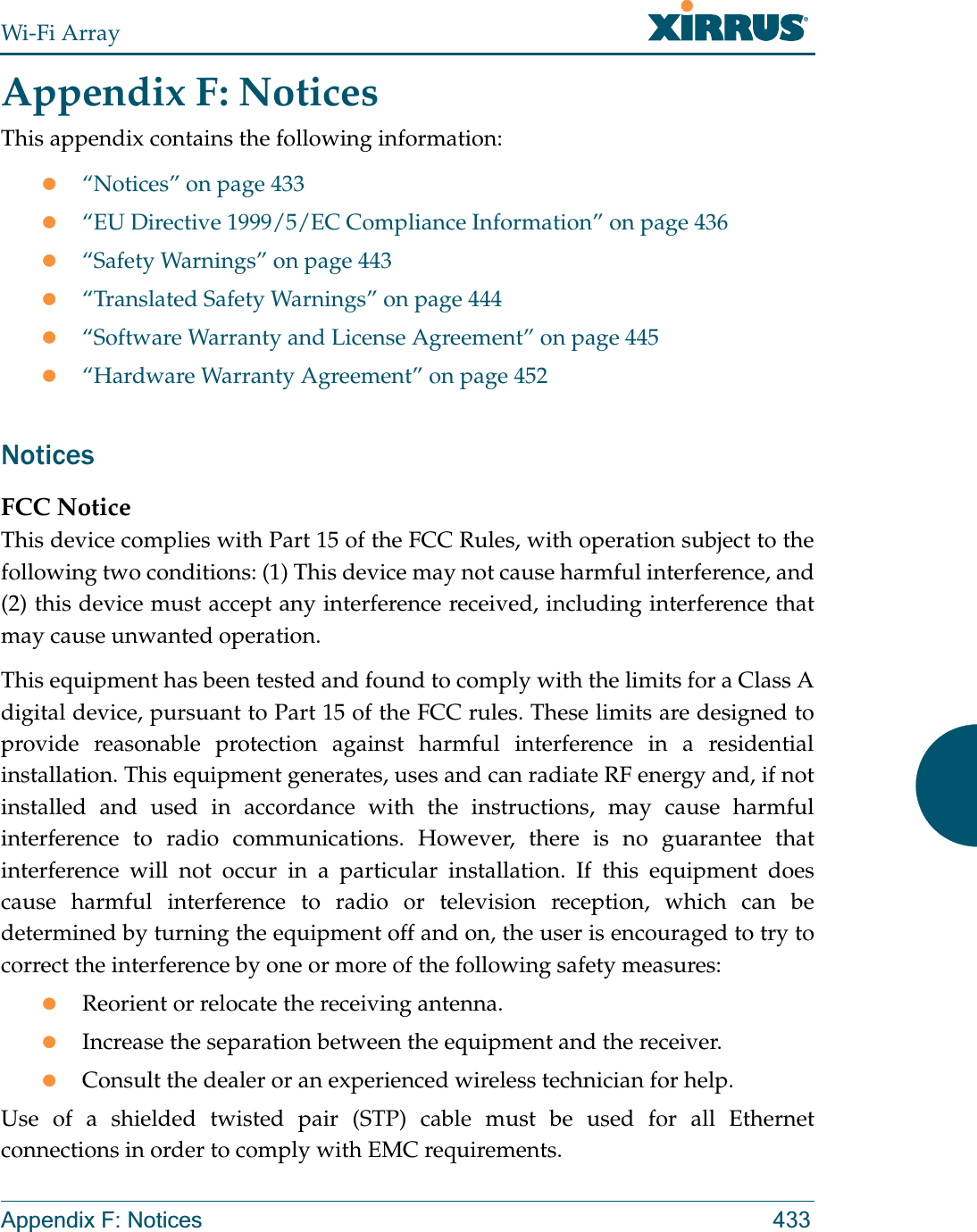
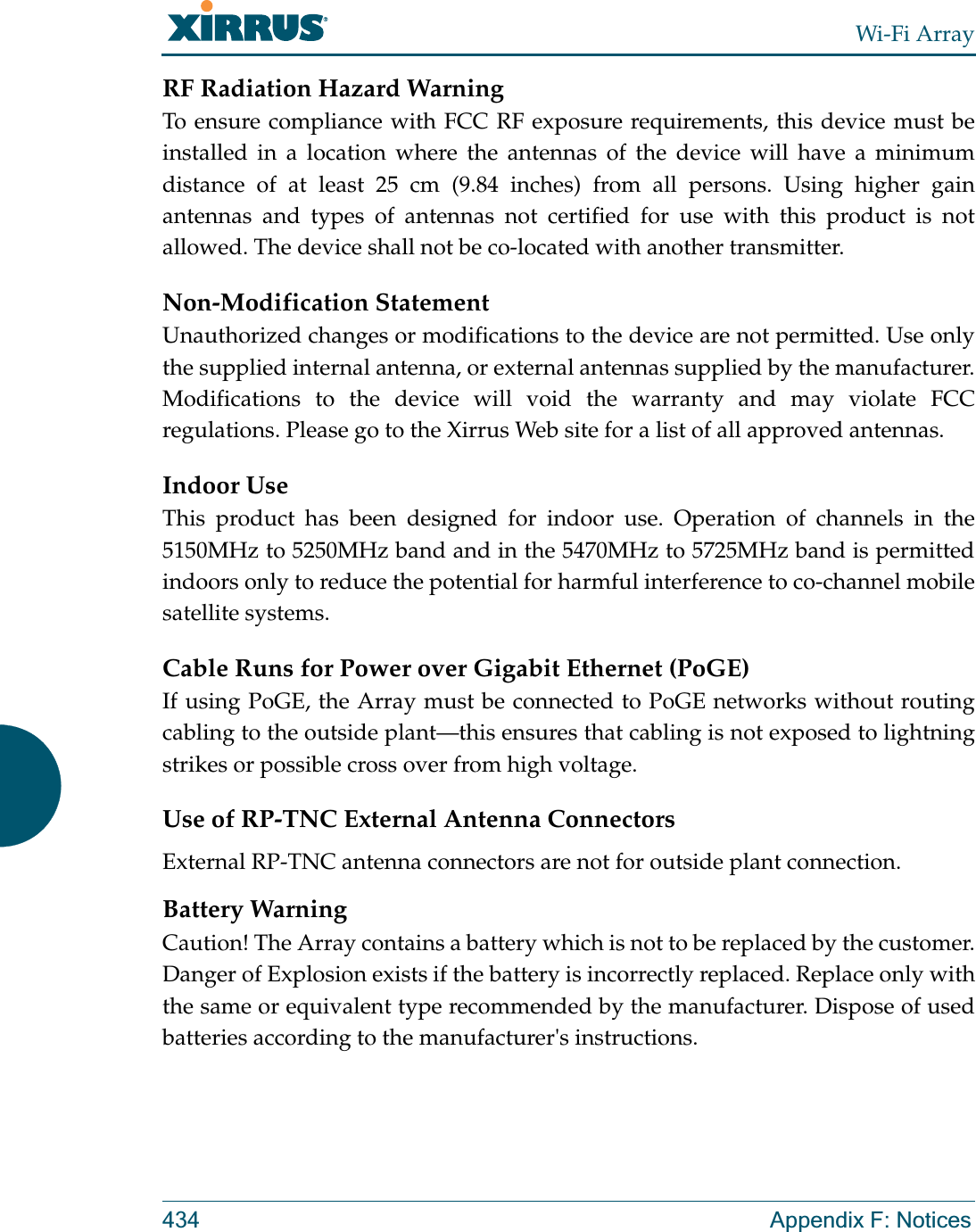
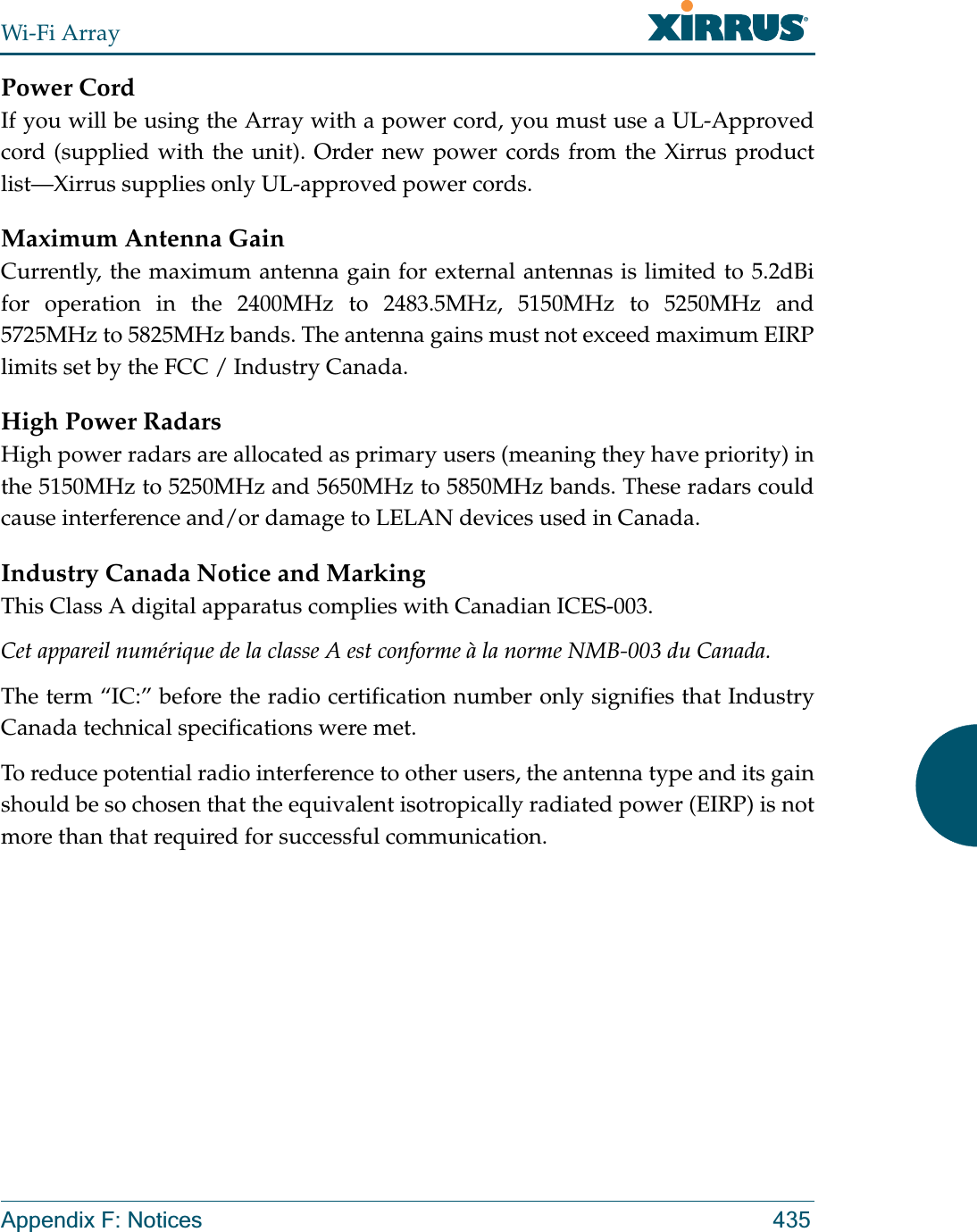
![Wi-Fi Array436 Appendix F: NoticesEU Directive 1999/5/EC Compliance InformationThis section contains compliance information for the Xirrus Wi-Fi Array family of products, which includes the XN16, XN12, XN8, XN4, XS16, XS12, XS8, XS4, XS-3900, XS-3700 and XS-3500. The compliance information contained in this section is relevant to the European Union and other countries that have implemented the EU Directive 1999/5/EC.Declaration of ConformityCesky [Czech] Toto zahzeni je v souladu se základnimi požadavky a ostatnimi odpovidajcimi ustano veni mi SmČrnice 1999/5/EC.Dansk [Danish] Dette udstyr er i overensstemmelse med de væsentlige krav og andre relevante bestemmelser i Direktiv 1999/5/EF.Deutsch [German] Dieses Gerat entspricht den grundlegenden Anforderungen und den weiteren entsprechenden Vorgaben der Richtinie 1999/5/EU.Eesti [Estonian] See seande vastab direktiivi 1999/5/EU olulistele nöuetele ja teistele as jakohastele sätetele.English This equipment is in compliance with the essential requirements and other relevant provisions of Directive 1999/5/EC.Español [Spain] Este equipo cump le con los requisitos esenciales asi como con otras disposiciones de la Directiva 1999/5/CE.ǼȜȜȘȞȣțȘ [Greek] ǹȣIJȩȗ Ƞ İȟȠʌȜIJıȝȩȗ İȓȞĮȚ ıİ ıȣȝȝȩȡijȦıȘ ȝİ IJȚȗ ȠȣıȚȫįİȚȗ ĮʌĮȚIJȒıİȚȗ țĮȚ ȪȜȜİȗ ıȤİIJȚțȑȗ įȚĮIJȐȟİȚȗ IJȘȗ ȅįȘȖȚĮȗ 1999/5/EC.Français [French] Cet appareil est conforme aux exigences essentielles et aux autres dispositions pertinentes de la Directive 1999/5/EC.](https://usermanual.wiki/Cambium-Networks/XN4.ArrayGuide-Rel4-0-RevW-part-2-of-2/User-Guide-1215330-Page-207.png)
![Wi-Fi ArrayAppendix F: Notices 437Ďslenska [Icelandic] Þetta tæki er samkvæmt grunnkröfum og öðrum viðeigandi ákvæðum Tilskipunar 1999/5/EC.Italiano [Italian] Questo apparato é conforme ai requisiti essenziali ed agli altri principi sanciti dalla Direttiva 1999/5/CE.Latviski [Latvian] ŠƯ iekƗrta atbilst DirektƯvas 1999/5/EK bnjtiskajƗprasƯbƗm un citiem ar to saistƯtajiem noteikumiem.Lietuviǐ [Lithuanian] Šis Ƴrenginys tenkina 1995/5/EB Direktyvos esminius reikalavimus ir kitas šios direktyvos nuostatas.Nederlands [Dutch] Dit apparant voldoet aan de essentiele eisen en andere van toepassing zijnde bepalingen van de Richtlijn 1995/5/EC.Malti [Maltese] Dan l-apparant huwa konformi mal-htigiet essenzjali u l-provedimenti l-ohra rilevanti tad-Direttiva 1999/5/EC.Margyar [Hungarian] Ez a készülék teljesiti az alapvetö követelményeket és más 1999/5/EK irányelvben meghatározott vonatkozó rendelkezéseket.Norsk [Norwegian] Dette utstyret er i samsvar med de grunnleggende krav og andre relevante bestemmelser i EU-direktiv 1999/5/EF.Polski [Polish] Urządzenie jest zgodne z ogólnymi wymaganiami oraz sczególnymi mi warunkami okreĞlony mi Dyrektywą. UE:1999/5/EC.Portuguès [Portuguese] Este equipamento está em conformidade com os requisitos essenciais e outras provisões relevantes da Directiva 1999/5/EC.Slovensko [Slovenian] Ta naprava je skladna z bistvenimi zahtevami in ostalimi relevantnimi popoji Direktive 1999/5/EC.](https://usermanual.wiki/Cambium-Networks/XN4.ArrayGuide-Rel4-0-RevW-part-2-of-2/User-Guide-1215330-Page-208.png)
![Wi-Fi Array438 Appendix F: NoticesAssessment CriteriaThe following standards were applied during the assessment of the product against the requirements of the Directive 1999/5/EC:zRadio: EN 301 893 and EN 300 328 (if applicable)zEMC: EN 301 489-1 and EN 301 489-17zSafety: EN 50371 to EN 50385 and EN 60601CE MarkingFor the Xirrus Wi-Fi Array (XN16, XN12, XN8, XN4, XS16, XS12, XS8, XS4, XS-3900, XS-3700 and XS-3500), the CE mark and Class-2 identifier opposite are affixed to the equipment and its packaging: Slovensky [Slovak] Toto zariadenie je v zhode so základnými požadavkami a inými prislušnými nariadeniami direktiv: 1999/5/EC.Suomi [Finnish] Tämä laite täyttää direktiivin 1999/5//EY olennaiset vaatimukset ja on siinä asetettujen muiden laitetta koskevien määräysten mukainen.Svenska [Swedish] Denna utrustning är i överensstämmelse med de väsentliga kraven och andra relevanta bestämmelser i Direktiv 1999/5/EC.](https://usermanual.wiki/Cambium-Networks/XN4.ArrayGuide-Rel4-0-RevW-part-2-of-2/User-Guide-1215330-Page-209.png)
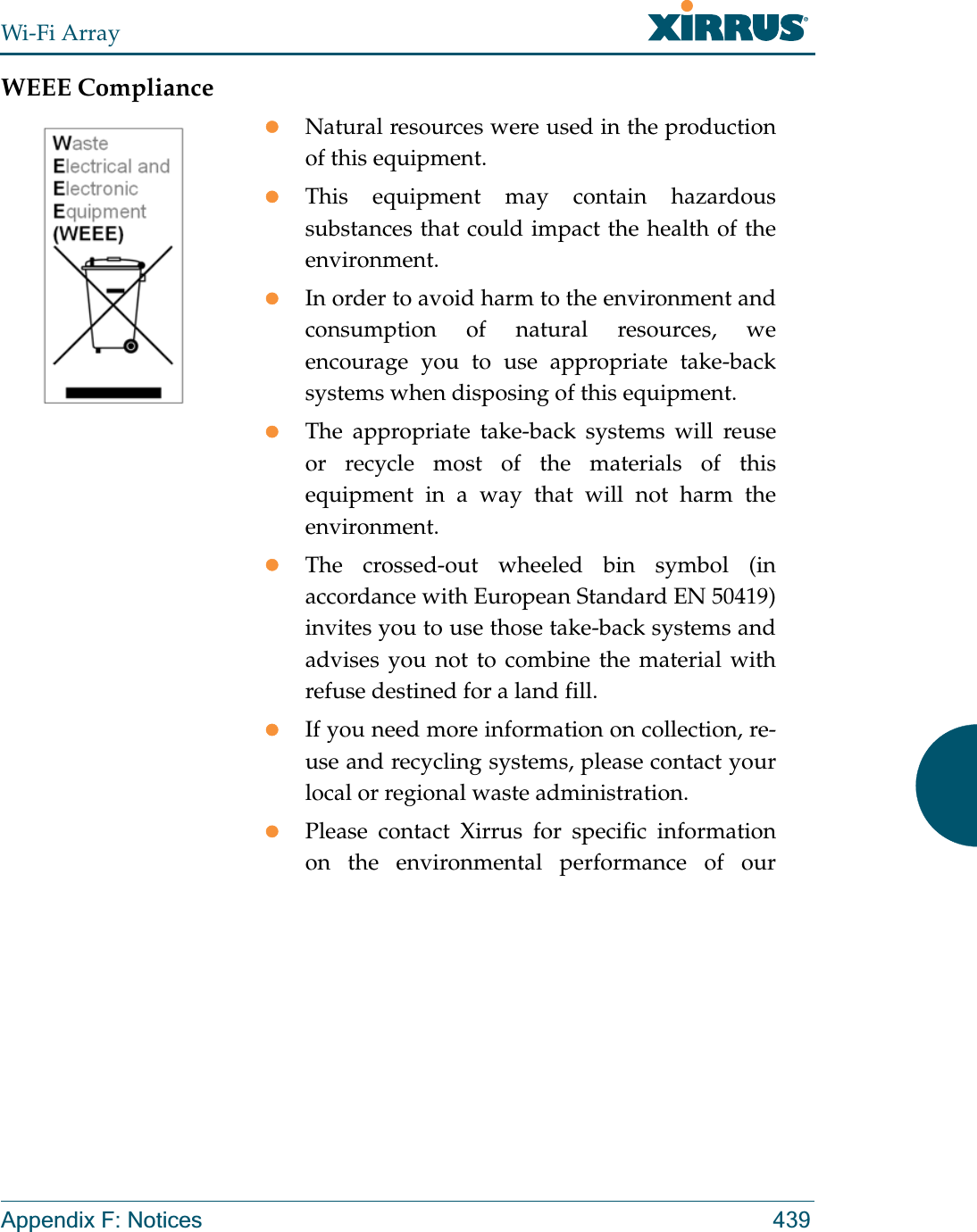
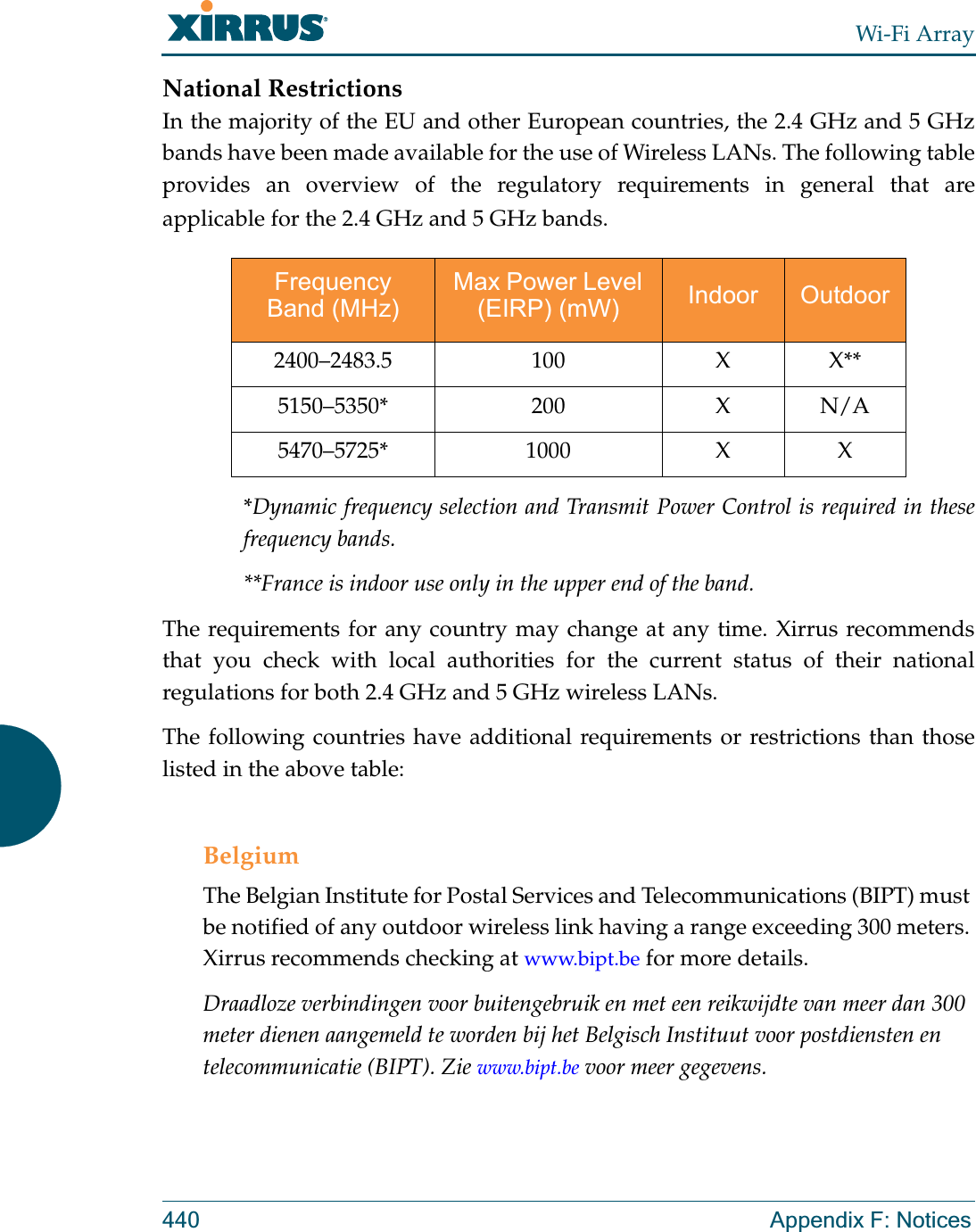
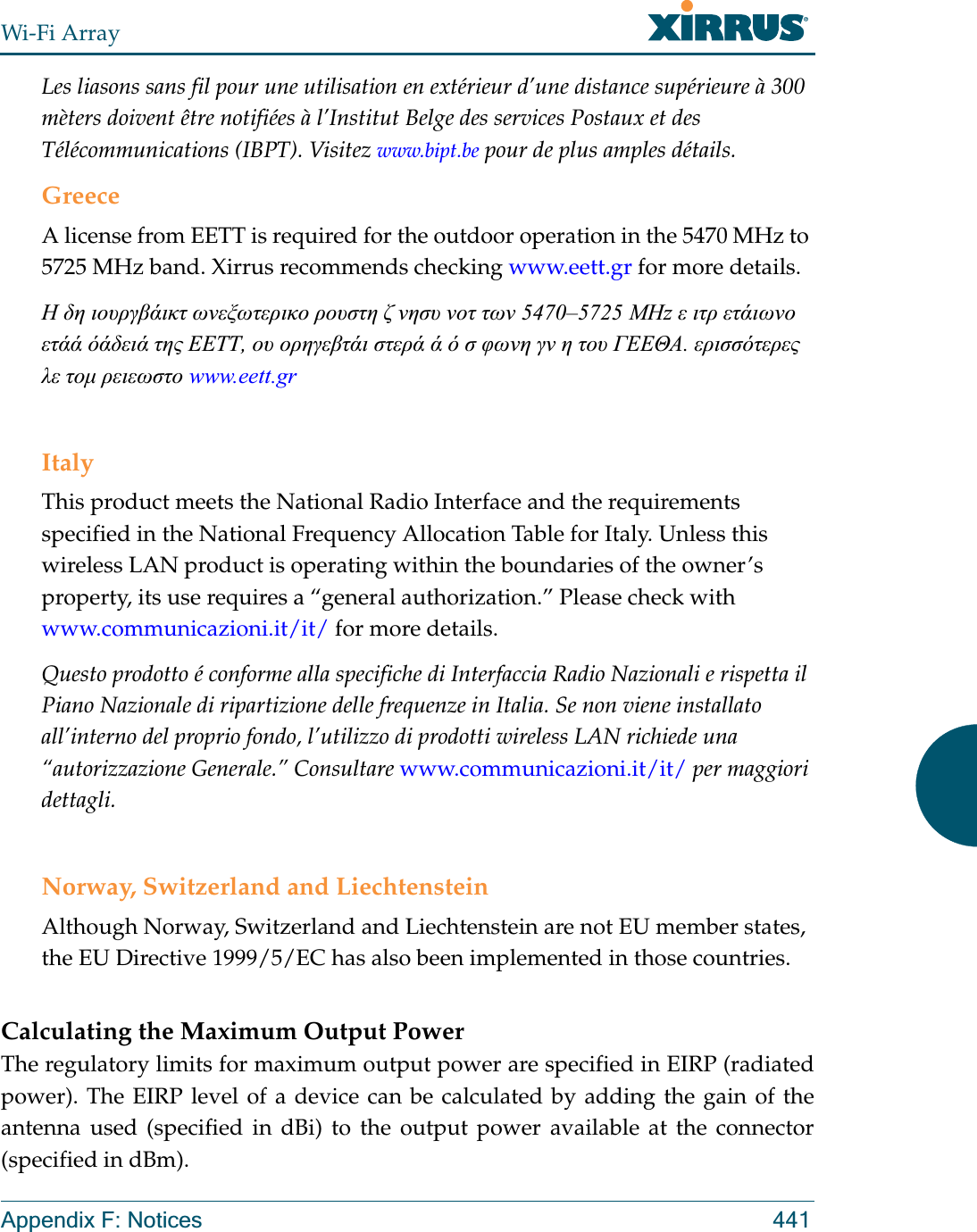
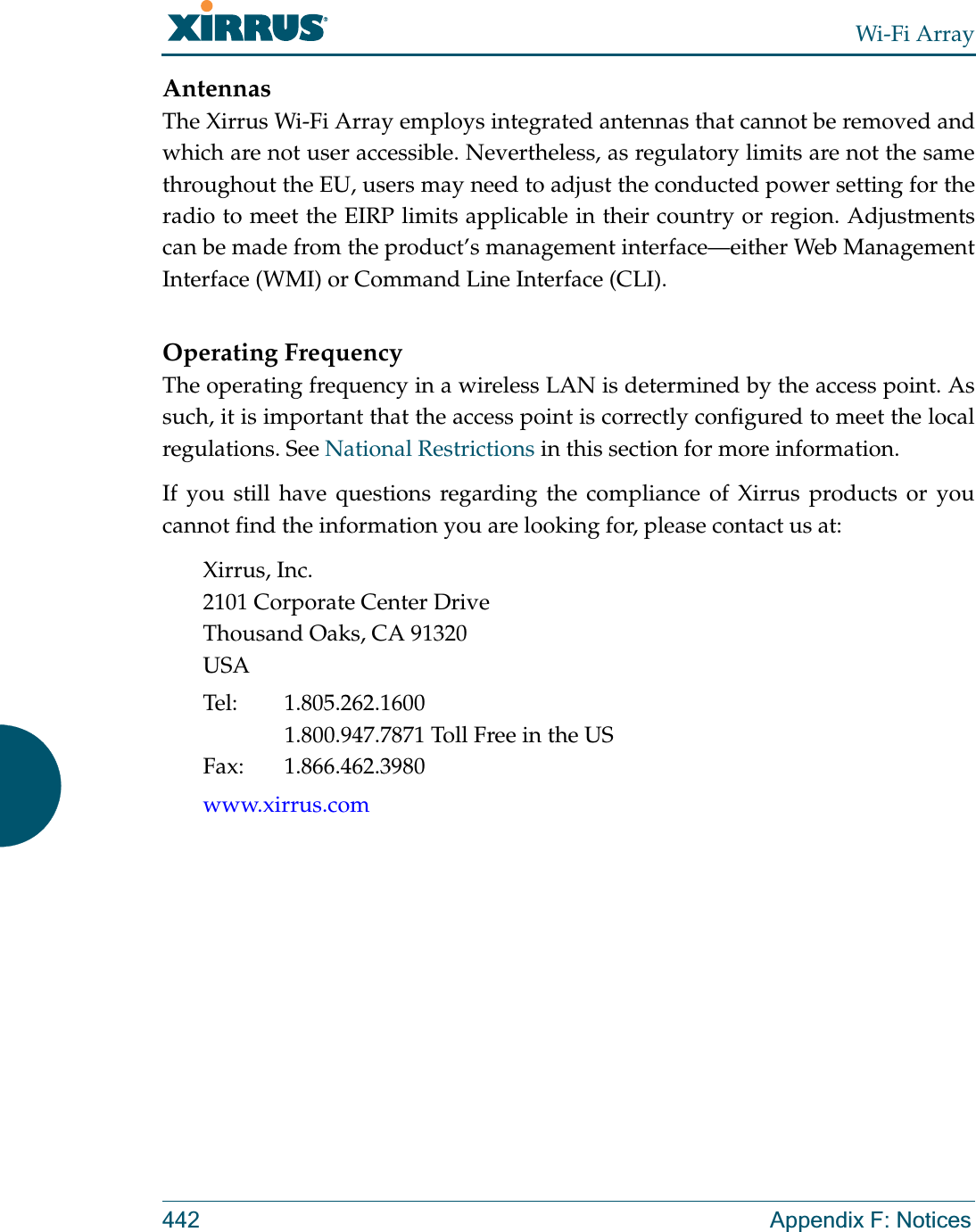
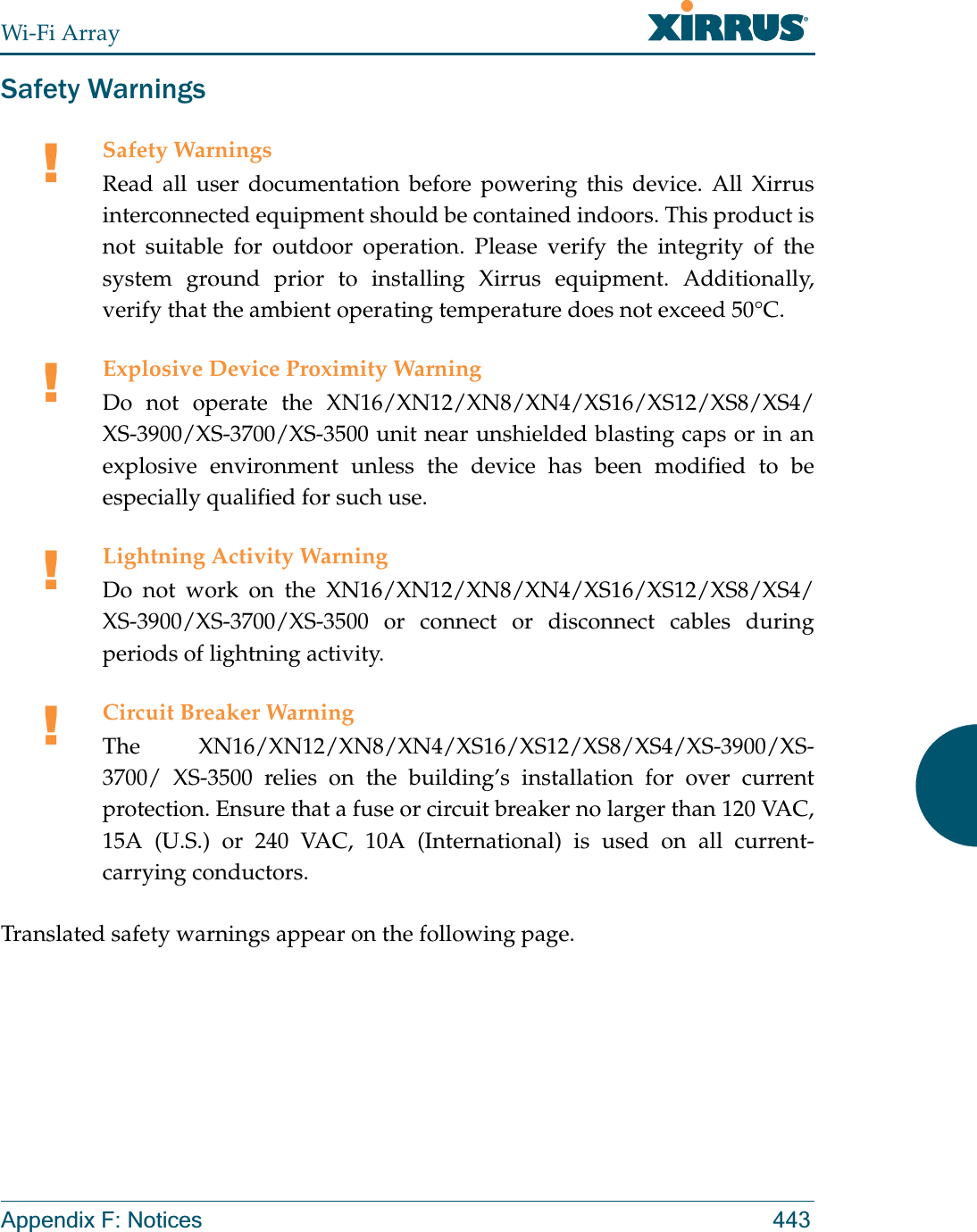
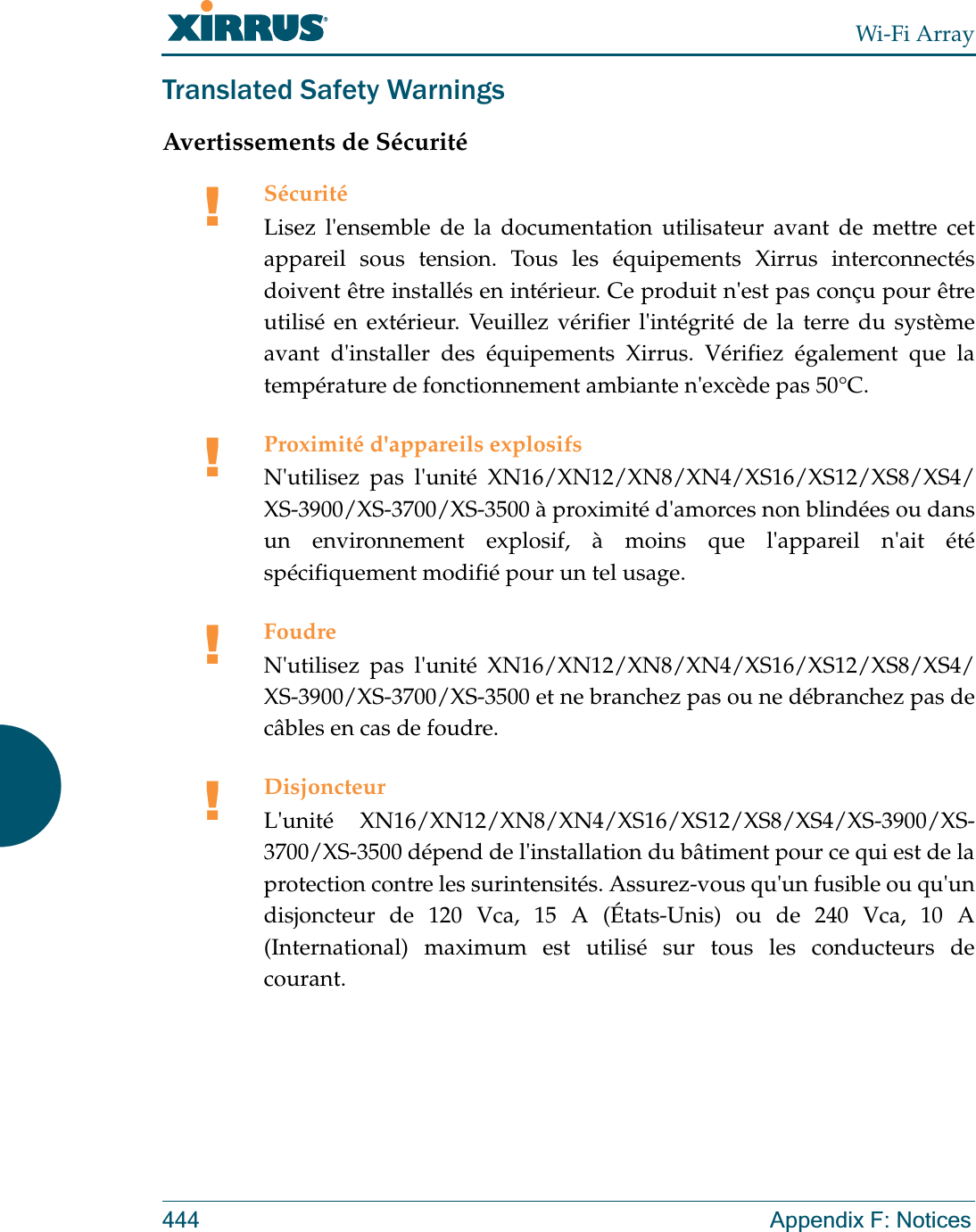
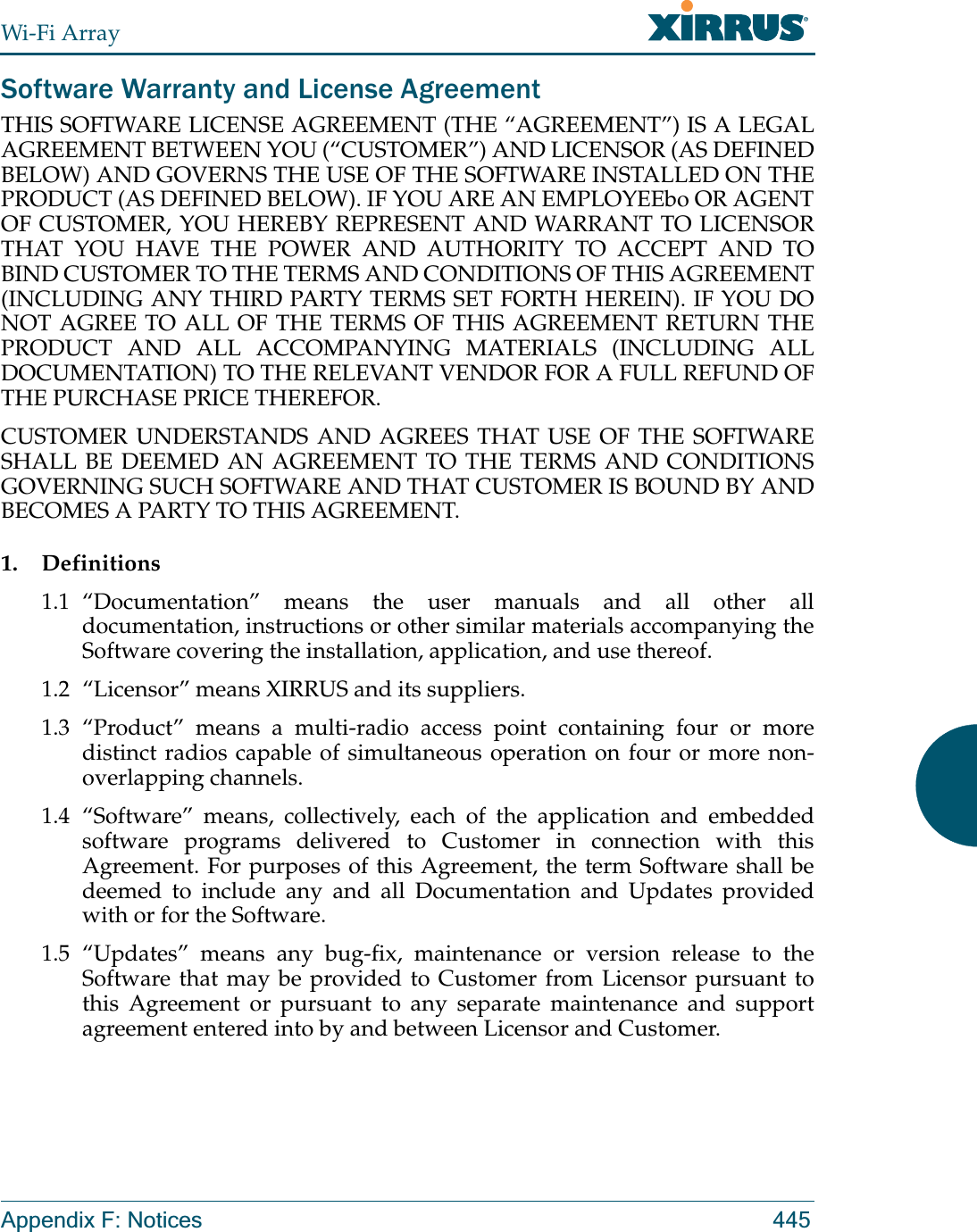
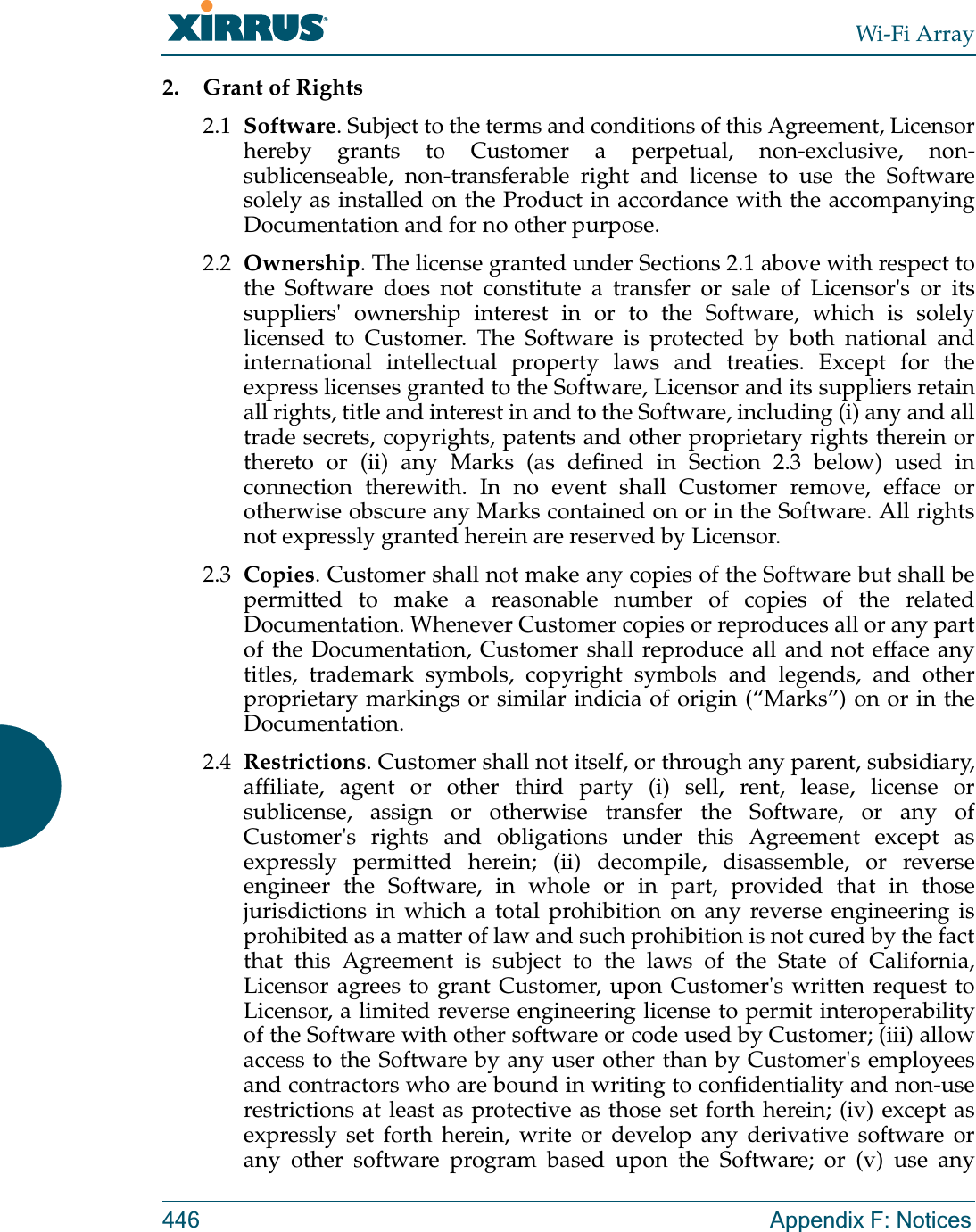
![Wi-Fi ArrayAppendix F: Notices 447computer software or hardware which is designated to defeat any copy protection or other use limiting device, including any device intended to limit the number of users or devices accessing the Product. 3. Limited Warranty and Limitation of Liability3.1 Limited Warranty & Exclusions. Licensor warrants that the Software will perform in substantial accordance with the specifications therefor set forth in the Documentation for a period of ninety [90] days after Customer's acceptance of the terms of this Agreement with respect to the Software (“Warranty Period”). If during the Warranty Period the Software does not perform as warranted, Licensor shall, at its option, correct the relevant Software giving rise to such breach of performance or replace such Software free of charge. THE FOREGOING ARE CUSTOMER'S SOLE AND EXCLUSIVE REMEDIES FOR BREACH OF THE FOREGOING WARRANTY. THE WARRANTY SET FORTH ABOVE IS MADE TO AND FOR THE BENEFIT OF CUSTOMER ONLY. The warranty will apply only if (i) the Software has been used at all times and in accordance with the instructions for use set forth in the Documentation and this Agreement; (ii) no modification, alteration or addition has been made to the Software by persons other than Licensor or Licensor's authorized representative; and (iii) the Software or Product on which the Software is installed has not been subject to any unusual electrical charge.3.2 DISCLAIMER. EXCEPT AS EXPRESSLY STATED IN THIS SECTION 3, ALL ADDITIONAL CONDITIONS, REPRESENTATIONS, AND WARRANTIES, WHETHER IMPLIED, STATUTORY OR OTHERWISE, INCLUDING, WITHOUT LIMITATION, ANY IMPLIED WARRANTIES OR CONDITIONS OF MERCHANTABILITY, FITNESS FOR A PARTICULAR PURPOSE, SATISFACTORY QUALITY, ACCURACY, AGAINST INFRINGEMENT OR ARISING FROM A COURSE OF DEALING, USAGE, OR TRADE PRACTICE, ARE HEREBY DISCLAIMED BY LICENSOR AND ITS SUPPLIERS. THIS DISCLAIMER SHALL APPLY EVEN IF ANY EXPRESS WARRANTY AND LIMITED REMEDY OFFERED BY LICENSOR FAILS OF ITS ESSENTIAL PURPOSE. ALL WARRANTIES PROVIDED BY LICENSOR ARE SUBJECT TO THE LIMITATIONS OF LIABILITY SET FORTH IN THIS AGREEMENT. 3.3 HAZARDOUS APPLICATIONS. THE SOFTWARE IS NOT DESIGNED OR INTENDED FOR USE IN HAZARDOUS ENVIRONMENTS REQUIRING FAIL SAFE PERFORMANCE, SUCH AS IN THE OPERATION OF A NUCLEAR FACILITY, AIRCRAFT NAVIGATION OR COMMUNICATIONS SYSTEMS, AIR TRAFFIC CONTROLS OR OTHER](https://usermanual.wiki/Cambium-Networks/XN4.ArrayGuide-Rel4-0-RevW-part-2-of-2/User-Guide-1215330-Page-218.png)
